- Search Please fill out this field.
- Manage Your Subscription
- Give a Gift Subscription
- Sweepstakes
- Destinations

Chiapas Is the Key to Understanding Mexico's Rich Indigenous Heritage
Steeped in Mayan heritage, the country’s southernmost state is Mexico at its most unexpected.
As I stood outside the Iglesia de San Juan de Bautista in the village of San Juan Chamula in Chiapas, Mexico, I marveled at the artistry of the traditional dress worn by the congregants filing in. Women of every age showed off ornately embroidered black sheepskin skirts and sashes and blouses the color of Easter eggs. It was a reminder of Chamula's status as a stronghold of ancient Tzotzil and Tzeltal Mayan culture — and the resilience of its native communities , which were exploited and displaced after the arrival of the Spanish in the 16th century.
Shyly, I poked my head inside the church. The haze of copal incense smoke, flickering candlelight, and the low hum of prayer drew me in. At first, the religious cues felt familiar enough. Worshippers knelt amid thousands of candles as rays of morning light streaked through windows into the cavernous space. But as my eyes adjusted to the dim glow, I realized everything else was unfamiliar. There were no pews, no formal mass, no crucifixes. Instead, saints with the iconographic power of Mayan deities lined the walls. Sewn onto their clothing were mirrors, which are thought to reflect the sins of onlookers and to serve as gateways to the spirit world for true believers.
Like most Indigenous groups in the largely agrarian southern state of Chiapas, the Chamulans believe they live at the center of the earth. Their religion, Mexican syncretism, worships the forces of nature, the animals of the jungle, and the planets in the sky. It's combined with a form of Catholicism that places John the Baptist above Christ. From my position at the back of the church, I watched a middle-aged shaman attend to a young boy whose head was wrapped in white gauze. Rocking back and forth, she took his pulse as his parents hovered, their eyes closed in prayer.
Chiapas is almost entirely forested, rising gently, and then precipitously, from the Pacific coastal jungles to the central highlands, before reaching 13,850 feet at the peak of the Sierra Madre de Chiapas. More than 25 percent of the state's roughly four million inhabitants are Indigenous, and most of its 12 ethnic groups trace their roots to pre-Columbian Mayan peoples.
Following Mexico's independence in 1821, a small landowning elite replaced the colonial rulers, and most of the farmers (except those who joined farming collectives) transitioned from slavery to serfdom. Linked with Guatemala during the colonial era, Chiapas only became part of Mexico in 1824 and never attracted the kind of investment in industry and infrastructure of other, more mineral-rich states.
Today Chiapas is, on paper, the country's poorest state, and yet I didn't come across a single panhandler — only a handful of vendors who asked for a "donation" when they hadn't succeeded in closing a sale. Nor did I encounter a single unreturned smile. Unlike in densely populated cities to the north, I saw an almost familial sense of community everywhere I looked.
For travelers, Chiapas' isolation and rugged landscape are both a gift and a curse (there are no direct flights from the U.S., so most visitors connect through Mexico City ). There's also a lingering wariness due to the legacy of the Zapatista anti-globalization uprising that paralyzed the Mexican government in 1994, for which the region has become synonymous.
But now, with more travelers interested in understanding Mexico's Indigenous heritage (and thanks to a few truly excellent hotels and restaurants), the region is being recognized for its cultural and creative offerings. In Chiapas, travelers will find a bewitching mix of ancient and modern culture that's distinct from any other in the country.
Planning a Trip
If it's your first time in Chiapas, you'll need five to seven days to cover the region's dizzying trifecta of craftsmanship, nature, and archaeology — and have enough hang time in dreamy San Cristóbal de Las Casas, the state's third-largest (and arguably most beautiful) city. Plan to spend the first three or four nights in the San Cristóbal highlands, where you can take half and full-day trips to visit weavers, ceramists, and markets. You can also witness ceremonies in the Indigenous municipalities of Zinacantán, Chamula, and Tenejapa.
San Cristóbal's historic center, meanwhile, offers abundant shopping, eating, and cultural experiences. It can also be a base for day trips to national parks and natural attractions like El Chiflón waterfall, where the main cascade drops 393 feet. It's hard to wrap your head around the region's extreme microclimates: on the same day, you might need a puffer jacket in the morning as you set out from the San Cristóbal highlands and end up sweating through a tank top in the afternoon as you hike through the waterfall mist in El Arcotete National Park. You'll also want to make pilgrimages to the spectacular archaeological sites of Toniná and Palenque.
Though I had fantasies of renting a car and crisscrossing the region on my own , I quickly realized there was too much ground to cover. Even if you speak Spanish and trust your navigational skills, you will want the political, cultural, and historic context a skilled guide can offer. That's why I enlisted the tour operator Journey Mexico , both for the deep knowledge of their seasoned local guides and for their help with logistics. Here's my suggested itinerary, broken down into regions.
Tuxtla Gutiérrez
You will likely connect through Mexico City by plane to Chiapas's state capital, Tuxtla Gutiérrez, but will probably want to stay in the region's de facto cultural capital, San Cristóbal de Las Casas (about an hour's drive away). Take an early flight so you can hit the awe-inspiring — if touristy — Sumidero Canyon en route to San Cristóbal. Formed 35 million years ago by cracks in the earth's crust and erosion by the Grijalva River, Sumidero is a showstopper on a par with Yosemite's El Capitan. If you have the energy after your flight, you can even hire a boat for a two-hour ride from Chiapa de Corzo along the Grijalva — the waters of which reach eerie depths of up to 860 feet — to the Chicoasen Dam and back. A welcome reprieve from the heat, the boat trip takes you within arm's length of waterfalls, spider monkeys, ocelots, and crocodiles sunning themselves along the riverbanks.
Chiapa de Corzo, about 30 minutes east of Tuxtla, is an iconic Spanish colonial town that's also worth a quick lap. The colonnaded square centers on a 459-year-old fountain that's dedicated to a group of Indigenous resistance fighters who are said to have jumped to their deaths in Sumidero Canyon rather than surrender to the invading Spanish army.
San Cristóbal de las Casas
The city, which was a Spanish stronghold against Mayan freedom fighters in 1528, is quickly nipping at Oaxaca 's heels as Mexico's artisan capital. With a growing number of stylish boutique hotels and destination restaurants, the place has graduated from a backpacker haven to a destination for the creative arts. Its colonial-style buildings, with their wooden colonnades and red-tiled roofs, as well as its cobblestoned pedestrian streets, have also helped to draw its growing community of artistic expats (as well as its left-leaning politics). In Chiapas, there's nowhere else like it.
San Cristóbal is easily navigated on foot, and I ducked in and out of museums, stores, and cafes without much planning. At night, the streets, bars, and restaurants came to life with locals and tourists. It felt like a college town, only for grown-ups, with its mix of tradition, political charge, and sense of optimism.
On my second day, I met Margarita Cantu while she was replenishing some pieces from her clothing line at the beautiful boutique inside Hotel Bo . The 40-year-old Monterrey, Mexico-born artist and designer works with some 150 weavers from nearby communities for her women's clothing and home goods line, Omorika. After starting her career in fashion in New York City, she arrived in San Cristóbal 12 years ago for a month-long stint to learn traditional weaving techniques — and never left. She told me it was "the mix of conflicts and traditions that make every day interesting" that kept her in town.
Amatenango del Valle and Zinacantán
About an hour's drive south of San Cristóbal I visited the small town of Amatenango del Valle. It's where Juana "Juanita" Gómez Ramírez has her studio showroom, Taller y Galería Artesanal. She is something of a celebrity ceramist, known for her intricately painted sculptures of jaguars and fish, and her operation is a big source of employment in the community.
And in Zinacantán the next day, I visited the home of Catalina Pérez Hernández, who weaves textiles using the traditional backstrap loom (appointments with her are offered exclusively through Journey Mexico). Her shop has an impressive selection of embroidered textiles from the area, and for 100 pesos (about $5), she will invite you back for lunch in her kitchen, where her sister makes the most delicious corn tortillas I have ever eaten. She serves them with bowls of black beans, salsa, and raw onions, and each one is covered with embroidered linen. As in most places in the region, tortillas are made in the traditional manner, a laborious process that involves drying the maize on the husk and then cooking it overnight in lime water.
Toniná and Palenque
One of my favorite parts of this trip was the drive from San Cristóbal to Toniná en route to Palenque. As I was winding my way down from evergreen forests to sultry jungles, the pine trees competed with banana trees for position along the road, the temperature rose, and every once in a while, I was left stunned by the dramatic views.
The truly spectacular Toniná is an archaeological site etched into a hillside. The stepped pyramid presides over the lush Ocosingo Valley; inside, the ceremonial core features a labyrinth used in religious rituals.
Palenque, meanwhile, is a magnificent Mayan city of the Late Classic Period (around A.D. 600–900) that was designated a UNESCO World Heritage site in 1987. Its temples and palaces were abandoned after the ninth century. You'll see the delicate craftsmanship that went into the mythological reliefs in the Temple of Inscriptions; the building ingenuity of the elaborate civic, religious, and residential complex; and the architectural innovation of the palace's pointed vaults.
After you've walked the site for a couple of hours, head to the parking lot. You can hire a guide to take you deeper into the jungle, where smaller, lesser-known temples are hidden among the flora. Seeing the sophisticated relics of Mayan civilization emerge from these wild, impossibly verdant surroundings is enough to take your breath away.
Exploring Chiapas
Bookmark these favorite places across Chiapas, from San Cristóbal de las Casa to Palenque, to plan your own trip through this beautiful Mexican state. You will find our favorite restaurants, hotels, and must-see things to do.
- Casa Lum : This hotel's restaurant is worth a visit for the octopus with cauliflower and chorizo.
- Centro Cultural de los Altos : Occupying an old convent, the city's main museum traces regional history from the pre-Hispanic era to the evangelization of the Indigenous people.
- Eklektik : This shop has a nicely curated selection of local pottery and textiles, including women's and men's shirts, scarves, shawls, and bags.
- El Tacoleto : Locals consider this the best taqueria in town. It's ideal for a quick lunch of tacos al pastor.
- Hotel Bo : With its handmade furniture and local textiles, this hotel is one of those gems that puts a city on the map.
- Hotel Guayaba Inn : This tastefully appointed property feels traditionally Mexican, with its timbered ceilings and stucco construction, four-poster beds, and tile-lined bathrooms.
- Maho Japones : In the historic center, you'll find the Esquina San Agustín, a food-hall-style collection of stylish restaurants and bars, including this outstanding sushi spot.
- Museo Jtatik Samuel : In addition to celebrating the life of Samuel Ruiz, the bishop of the Diocese of San Cristóbal de Las Casas, who championed land and human rights of Indigenous people, this museum houses some of the finest examples of textiles from the Oxchuc region of Chiapas.
- Nostalgia : Go for a Michelada — prepared with a homemade tamarind mixture — at cocktail hour on the patio overlooking the public library.
- Tarumba ; A small menu from chef Jorge Gordillo — who comes from a neighboring village — is served at Hotel Sombra del Agua .
- Tierra y Cielo : Chef Marta Zepeda gives her elevated spin on the classics, such as quesadilla de tinga, in a chic dining room.
- Xut El Restaurante : Casual Chiapan dishes like chile relleno and chicharrón de queso are served with flair, as is a regional take on a tuna tartare.
Amatenango del Valle
- Taller y Galería Artesanal: Juana Gómez Ramírez and her team of artisans produce some of the best ceramics in the country. They are known for their depictions of jaguars, which still populate the jungles of Chiapas.
- El Huachinango Feliz : Seafood is made into phenomenal ceviche and soup and served in an airy dining room.
- Quinta Chanabnal : Run by an Italian-German scholar of Mayan hieroglyphics, this hotel gets high marks for its warm service and excellent food. Doubles from $139.
How to Book
This trip was planned by Journey Mexico , which has a network of expert local guides and can arrange all the logistics for a customized itinerary. five-day trips from $2,000 per person.

Chiapas Travel Guide
Your ultimate guide to chiapas mexico, chiapas travel guide contents.
Location | Getting There | Where to Stay | Things to Do | Chiapas Tours | Chiapas Safety | Chiapas FAQ
Chiapas travel guide
Chiapas mexico: at a glance.
Mayan culture abounds in Chiapas, one of the most unique states in Mexico.
Though not as well known as some other Mexico travel destinations, those in the know flock to Chiapas to escape the crowds, enjoy the beautiful nature and Mayan Ruins, stroll the colorful colonial streets, eat delicious foods and drink the famed Chiapas coffees.
Chiapas Mexico: Know before you go
- ✈️ Airport: Tuxtla Gutiérrez International Airport (code: TGZ)
⏰ Time Zone: Eastern Standard Time (GMT-5)
- 💰 Currency: Mexican Peso
- 🗣 Language: Spanish, though English is common, and you may even hear some indigenous languages
- 🎫 Mexico Visa: The vast majority of travelers do not need a visa for Chiapas — this includes Americans, Canadians, Japanese and most Europeans. Head here to see if you need a Mexico travel visa.
- 🔌 Electricity Socket : You’ll mostly find Type A (two-prong) and Type B (three-prong) — the same as used in the United States. For visitors from other countries, you’ll need this universal travel adaptor .
- 📲 Mexico SIM Card : Wondering, Do I need a SIM card for Mexico? The answer is yes, every traveler will want a one for the reasons explained in this article all about the best Mexico SIM cards .
- 🚙 Car Rentals : The Mexico rental car process can be a bit daunting, and many people are apprehensive to drive in a foreign country. I get it! Check out this guide to Renting a Car in Mexico for info on the process.
What’s the best time to visit Chiapas Mexico?
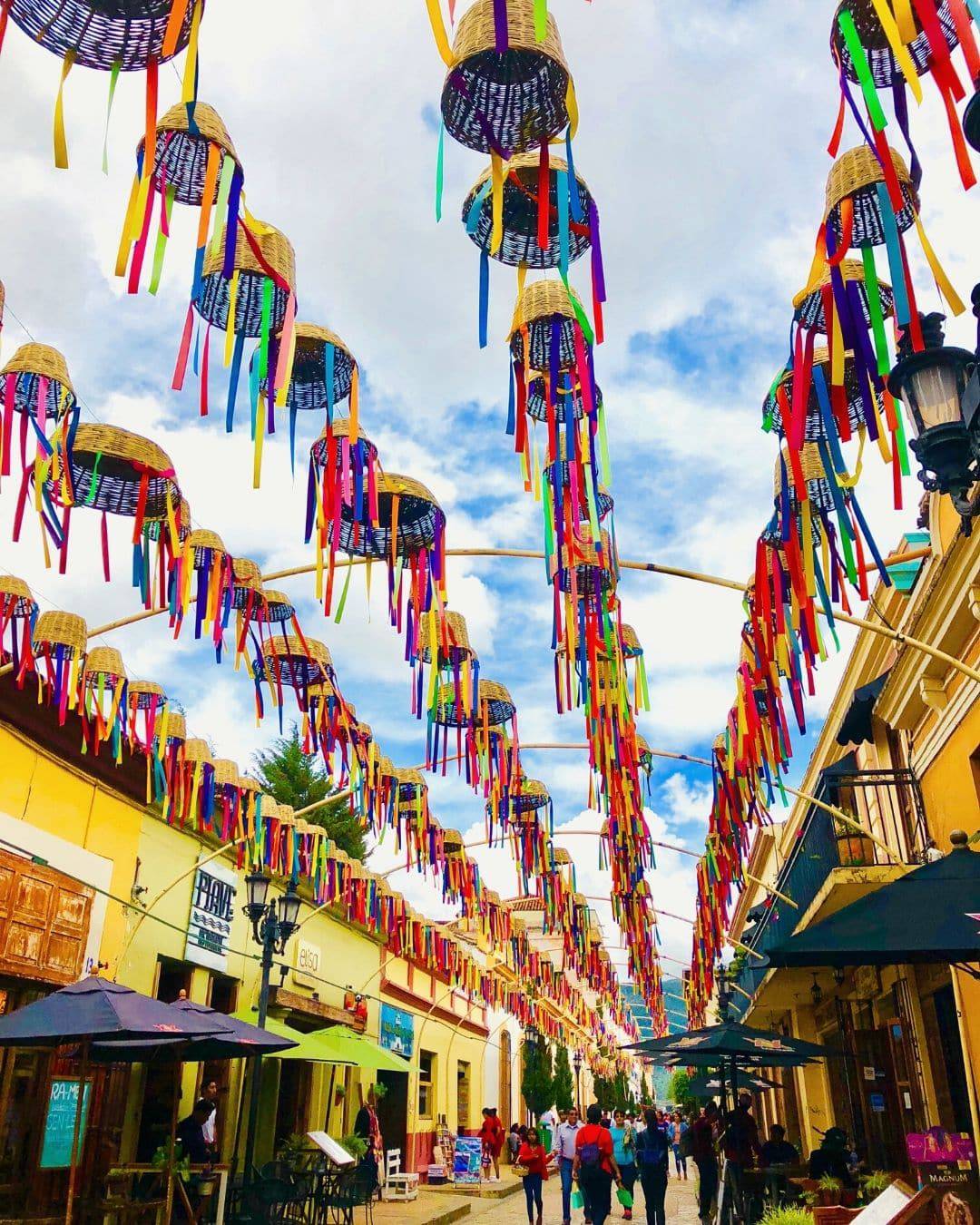
Cities in Chiapas: The best time to visit the cities (including San Cristobal de las Casas , Tuxtla Gutierrez, Comitan and Palenque ) is from November to May , during the dry season. Chiapas is on the cold side, so make sure you’re packing layers if you visit in winter.
Coastal Chiapas: On the coast of Chiapas, the dry season months of November to March are best. Keep in mind that if you visit during other months, it will be quite hot and humid, and mosquitoes are certainly an issue, so don’t forget your eco-friendly bug spray 🦟
Where is Chiapas Mexico located?
Chiapas is a state located in Southern Mexico, and borders the states of Oaxaca and Tabasco, and the country of Guatemala to the east. These two states are popular with culture travelers and backpackers alike.
Those continuing on to Central America from Mexico often have Chiapas as a last stop, as you can do a land crossing into Guatemala from this state.
Chiapas Map
What’s the best airport for Chiapas Mexico?
Tuxtla Gutierrez International Airport (code: TGZ) is the largest airport in Chiapas, located in the state’s capital city of Tuxtla Gutierrez, Mexico.
It is about one hour from San Cristobal de las Casas , the city frequented most by visitors to Chiapas state. ▶︎ BOOK AIRPORT SHUTTLE NOW!
You can also fly into the small Palenque International Airport (code: PQM), located in the Palenque pueblo magico (magic town). Here, you’ll find Palenque Mayan Ruins , a UNESCO World heritage Site, and some of the best Mayan Ruins in Mexico.
What’s the best way to get to San Cristobal de las Casas?
The safest, most-stress free, easiest and best way to get from Tuxtla Gutierrez Airport to your hotel in San Cristobal de las Casas is via private shuttle. ▶︎ BOOK NOW!
You can also rent a car , take a colectivo (small, shared van), or taxi. Note: There’s no Uber in Chiapas Mexico.
If you’re not headed to San Cristobal, you can take connecting ground transportation to other parts of the state via bus .
Where to stay in Chiapas Mexico
The vast majority of visitors stay in San Cristobal de las Casas (usually just called San Cristobal), located in the center of Chiapas state.
From here, you’re about five hours by car from both Palenque and Comitan, two other popular cities to visit outside of San Cristobal. Though the main airport is in Tuxtla Gutierrez, very few visitors stay there.
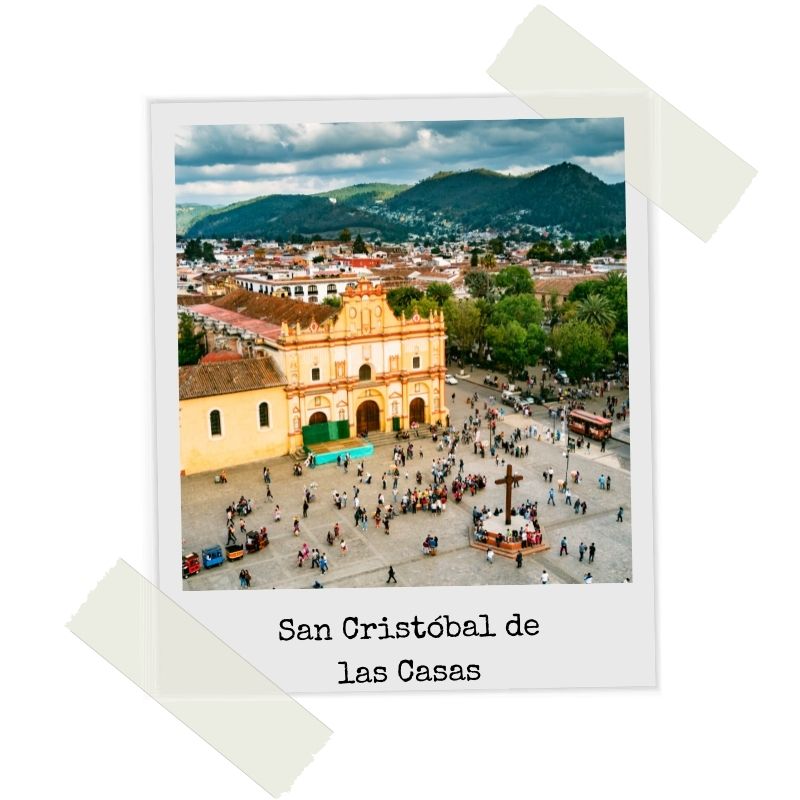
San Cristobal de las Casas
Located way up in the mountains in Chiapas state, you’ll find San Cristobal de las Casas . This pueblo magico (magic town) lives up to its magical name — and is very popular with nature and culture lovers, backpackers and digital nomads.
Is San Cristobal de las Casas worth visiting? This is a popular place for travelers seeking “real” Mexican culture. However, it also has a posh side, with amazing San Cristobal hotels with spas — so San Cristobal appeals to many types of travelers.

Palenque, Chiapas Mexico
There is the pueblo magico (magic town) of Palenque Mexico, and the famous Palenque Mayan Ruins within the town. When people refer to Palenque, they often mean the ruins, and not the town itself.
Is Palenque worth visiting? The Palenque Ruins are a must see in Chiapas! It is nice to stay for the night in the town of Palenque , though there isn’t much to see besides the ruins and the surrounding jungle nature.

Comitan, Chiapas Mexico
Comitan de Dominguez (usually just called Comitan) is a charming town about two hours south of San Cristobal. Enjoy the sounds of marimba music in the air, as you stroll its colonial streets and enjoy the local Chiapas food.
Is Comitan worth visiting? Comitan is the perfect home base to stay in for those who will be exploring southern Chiapas. If you want to see the Bonampak and Yaxchilan Mayan Ruins, they are both near Comitan.
Best things to do in Chiapas Mexico
There is a seemingly endless amount of things to do in Chiapas, one of the best vacation spots in Mexico.
The majority of them are in or near San Cristobal de las Casas, the main tourism hub, but for those who venture off the beaten path, there’s even more to Chiapas! Click on any image below to learn more ⤵
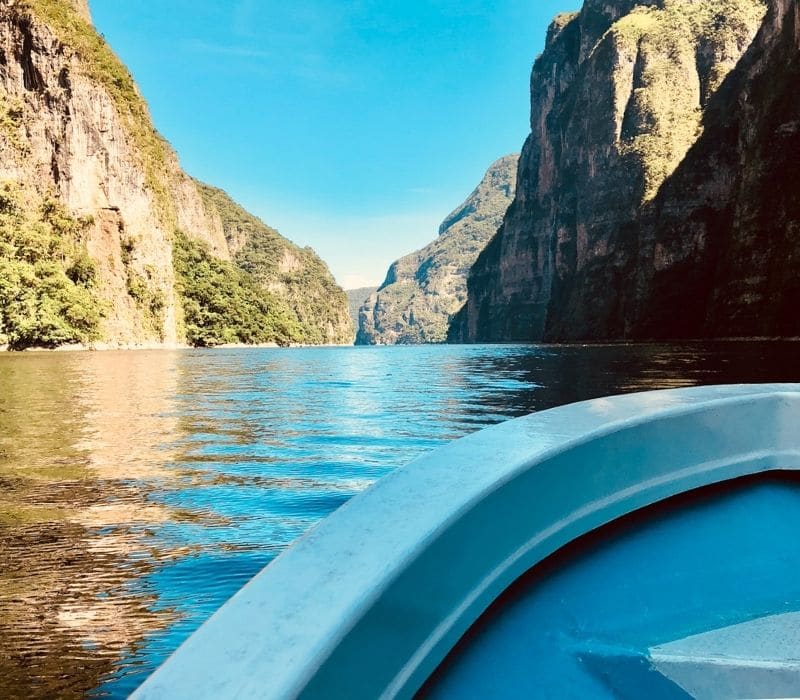
Sumidero Canyon
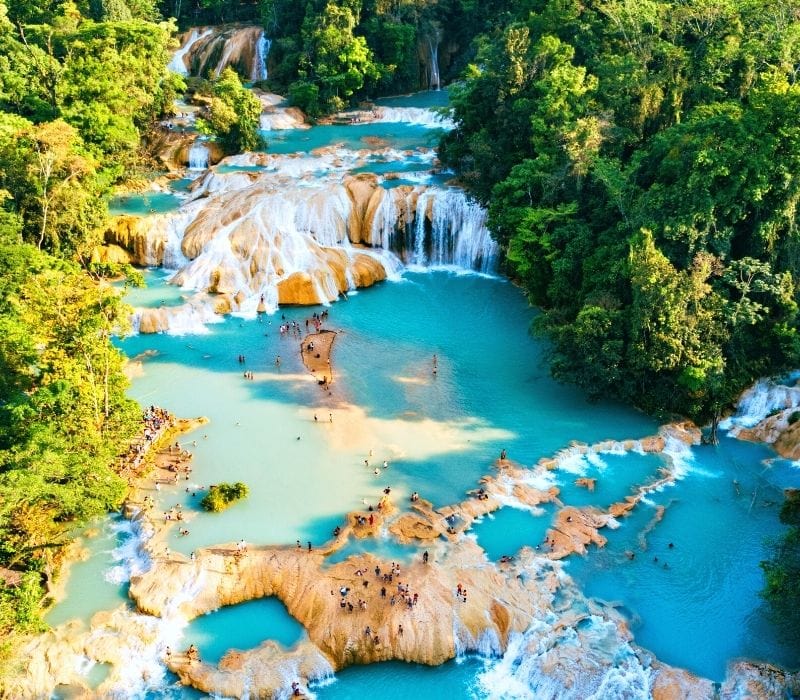
Agua Azul Waterfalls

Bonampak Ruins
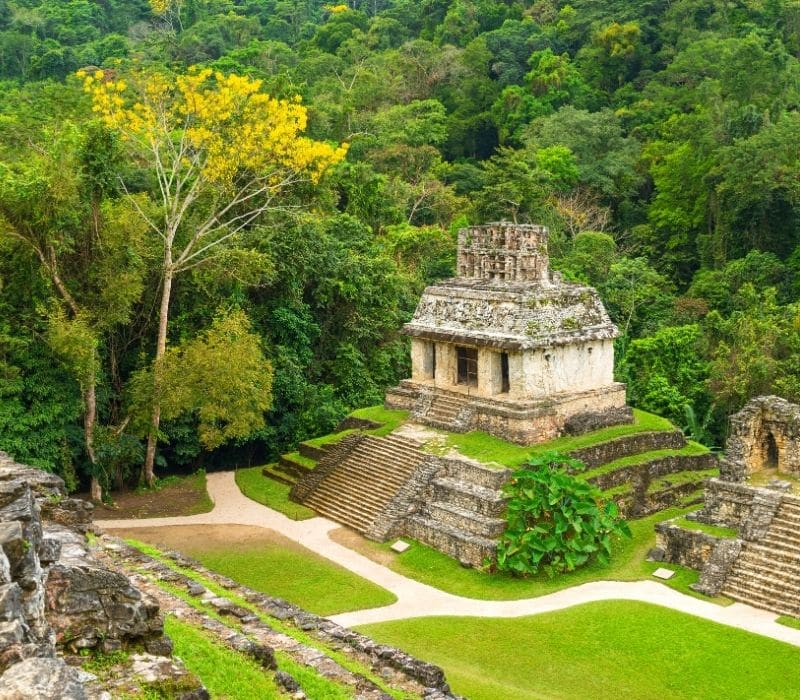
Palenque Ruins

San Juan Chamula

Montebello Lakes

El Chiflon Waterfalls

Chiapa de Corzo
Best chiapas tours.
Tours in Chiapas are a great way to see the main cities and their surrounding areas — and unless you’re planning to rent a car in Chiapas, this is the best way to get around because taxi fees add up quickly! 💡 Note: If you do want to have a car in Chiapas, make sure to check out this guide to Renting a Car in Mexico .
Below, you’ll find the most popular and best tours in San Cristóbal de las Casas and the surrounding areas — including Palenque Mayan Ruins, Sumidero Canyon, Agua Azul and El Chiflon Waterfalls, and more.
Is Chiapas safe for travelers?
According to experts, you are statistically quite safe while visiting Chiapas if you stick to the popular places like San Cristobal de las Casas , San Juan Chamula , and the Chiapas pueblos magicos (magic towns) of Palenque and Comitan de Dominguez.
Millions of Americans go to Mexico on vacation every year, so if we play the numbers game, the number of incidents is very small… When I’m asked if Mexico is a safe place to go travel on vacation, my response is yes . —Carlos Barron, FBI Veteran (source: Forbes )
That’s not to say bad things still don’t happen in those parts of Chiapas; they do. As with traveling anywhere, follow general travel safety like not walking home alone at night, watching your alcohol consumption and staying aware of yourself and surroundings.
For an added safety measure, pack these travel safety items , dress in a way so your Mexico outfits blend in with the locals, and buy a Mexico SIM card .
What’s the best travel insurance for Mexico?

This is a question I get a lot as a Mexico travel writer and Mexico expat. To determine which Mexico travel insurance is best for you , consider factors like the policy’s total cost, your deductible, the coverage you need, your medical benefits, etc.
🏆 In general, I only ever recommend three companies to purchase Mexico travel insurance from:
- World Nomads — For general travelers and adventure travelers.
- SafetyWing — For general travelers and digital nomads in Mexico.
- Travel Insurance Master — Mexico travel insurance search tool, for those who want to compare policies.
- 👉 Click on any of the links above to get a FREE quote on your policy!
Chiapas Travel: Frequently Asked Questions
Can you drink the water in mexico.
No — Unfiltered Mexico tap water is not safe for human consumption. However, you will need to keep drinking water and to stay extra hydrated, as Mexico is quite close to the Equator. In fact, dehydration is one of the most common ways people get sick in Mexico. So what can you do?
- If you’re renting a home with a kitchen, you can boil the water before drinking it.
- You can keep buying bottled water — Though this gets expensive, and is horrible for the planet!
- Use the Water-To-Go Filterable Bottle . This refillable bottle not only keeps you hydrated, but also filters your water so you don’t get sick in Mexico, and is good for the planet ♻️ Get 15% OFF with code SOLO15!

The Water-To-Go Bottle has a built-in, three-stage filtration system that removes 99.9999% of all water-borne contaminants. These include bacteria, microplastics, viruses, heavy metals, chemicals and more. I personally own one, as you can drink Mexico water from any source (even the tap), and be completely safe.
What’s the Chiapas weather like?
The main travel destinations in Chiapas are located in the northern and central part of the state — in the Central Highlands. These cities have temperatures that hover around 60-70°F (15-21°C) all year long.
However, the jungle and rainforest areas like Palenque, and the coast of Chiapas, see much hotter temperatures and high humidity.
☀️ san cristobal de las casas weather

Is Chiapas expensive?
No — Chiapas is actually one of the most budget-friendly places to live and cheap places to travel in Mexico.
It has been popular with backpacker and budget travelers for decades, but in the last few years, Mexico digital nomads have begun flocking to San Cristobal de las Casas for its low prices and good quality of life.
How many days do I need in Chiapas Mexico?
If you’re sticking to San Cristóbal de las Casas and the surrounding areas, four full days would suffice. With that amount of time, you can see the main sites including Palenque Mayan Ruins, the Agua Azul waterfalls, Sumidero Canyon and more.
For those who want to do some Chiapas off the beaten path travel, plan for at least one full week in Chiapas and venture to the coast. The best beaches in Chiapas — Puerto Arista and Boca del Cielo — are often empty, and you can really get away from it all.
Is Chiapas worth visiting?
Yes — Chiapas is a unique Mexico destination that many types of travelers will love. Nature enthusiasts will adore the waterfalls, lakes, caves and mountains, while artists and fashionistas can shop in the Chiapas mercados (markets) to buy colorful Mayan textiles and handicrafts.
If you’re interested in Mexican and Mayan culture, you must visit Chiapas Mexico!
Is there political unrest in Chiapas Mexico?
For the most part, Chiapas is safe for travelers, though Chiapas locals have a history of clashes with the Mexican government (for very justifiable reasons, btw).
However, tensions have been quiet for over a decade — though there are often bloqueos , which are protests where locals shut down the roads.
If you stick to the most visited places in Chiapas — San Cristobal de las Casas , San Juan Chamula , Tuxtla Guitierrez, Zinacantan, and the Chiapas pueblos magicos (magic towns) of Palenque , Comitan de Dominguez and Chiapa de Corzo, you should be safe while traveling to Chiapas.
Chiapas Mexico podcast
🎧 Love podcasts? Have a listen to Episode #782 of The Amateur Traveler Podcast, where I was featured to speak about my experiences and best tips for traveling to Chiapas Mexico! It may just be the only Chiapas podcast out there.
🗣 Mexico Language
Mexico Fun Fact : There’s actually no official language of Mexico!
Spanish is the most widely-spoken, so some mistakenly say Spanish is the official language of Mexico. However, the government actually recognizes 68 national languages, including the Nahuatl Aztec language, and the Maya language.
💰 Mexico Currency
Mexican Peso — Exchange rates vary, but have hovered around $18-21 pesos to $1 USD for about the last decade. You will find some places that take U.S. dollars, but usually at an unfavorable rate, so stick to using pesos in Mexico .
☀️ Mexico Weather
Mexico is a big country — the 7th largest on Earth, in fact! It’s hard to generalize the weather in Mexico, because it will vary greatly by where you’re traveling.
In general, temperatures are mostly mild everywhere all year long, though summers on the coast are hot and humid, and winters in Central and Northern Mexico are on the colder side. Throughout the whole country, the rainy season runs from (about) April through September.
✈️ Mexico Busy Season & Slow Season
• Mexico Busy Season: The busy season in Mexico runs October to March, as this is the dry season and you’ll get the best weather. December is the busiest month for tourism in Mexico.
• Mexico Slow Season : If you don’t mind some rain, you’ll often find the best travel deal during the Mexico slow season of April to September. Do keep in mind that June 1-November 1 is Hurricane Season, and Mexico beaches are all susceptible.
• Mexico Shoulder Season : The shoulder season is that magical time when prices are still low and the weather is good. The Mexico shoulder season is from about mid-October to November and January to early-April.
🧳 Download your FREE Mexico Packing Checklist here!
Check out this Ultimate Packing List for Mexico — so you know what to pack and what NOT to pack for Mexico! This article offers advice on packing for Mexico cities, and packing for a Mexico beach vacation.
Beyond what Mexico outfits and clothing you’ll want to bring, here are a few extra things to consider:
• Filterable Water Bottle: Mexico is close to the Equator, so you’ll need to stay extra hydrated. In fact, dehydration is one of the most common ways people get sick in Mexico.
A filterable, refillable water bottle not only keeps you hydrated, but also filters your water so you don’t get sick in Mexico.
The Water-To-Go Bottle has a built-in, three-stage filtration system that removes 99.9999% of all water-borne contaminants. These include bacteria, microplastics, viruses, heavy metals and chemicals.
• Mexico SIM Card: Want to be able to use your phone in Mexico?! Of course you do! Pick up a TELCEL Mexico SIM card before your trip, and swap it out on the plane while you’re waiting to exit, so you have phone and data service the second you arrive in Mexico.
• Anti-Hangover Meds: Planning to party hardy?! Make sure you’re not wasting any of your precious travel time with a hangover. Liquid I.V. has about 70,000 reviews on Amazon, and is considered the best defense against a hangover.
• Sun Hat: No matter if you’re headed to the beach or a city, you’ll want to wear a hat to shield yourself from the strong Mexican sun. This cute sun hat is the perfect stylish and practical accessory for your Mexico vacation.
• Sunscreen: As you’ll want to reapply a few times throughout the day, a light, Mineral-Based Sunscreen is ideal.
Headed to the beach? Do your part to practice responsible tourism in Mexico by only using an eco-friendly reef safe sunscreen while swimming. You can even ditch the sunscreen altogether and opt for a long sleeve swimsuit (AKA rash guard) instead.
• Bug Repellent: Mosquitoes are common throughout Mexico — especially on the beaches! REPEL Insect Repellent is an eco-friendly brand that’s DEET-free and plant based, with a pleasant lemon and eucalyptus scent. Don’t want to use a spray? Pick up some Mosquito Repellent Bracelets .
The vast majority of travelers do not need a visa for Mexico — this includes Americans, Canadians, and most Europeans. Head here to see if you need a Mexico travel visa.
🤔 What is the mexico FMM ?
When you go through Customs & Immigration to enter the country, you’ll receive your Forma Migratoria Multiple , or FMM Tourist Card (sometimes listed as FMT). If you’re coming by plane or cruise ship, there is no charge; for those driving across the border, the FMM costs about $30USD.
In most circumstances, all visitors get a 180-day (six month) visa — so you can legally stay up to six months!
🚨 Have your FMM on you at all times
Keep in mind that though it’s called an FMM card , it’s actually just a small piece of paper. Keep your FMM on you at all times in your wallet, as this proves your legal status in Mexico. It’s rare, but if an officer stops you, they can ask to see your FMM.
🎫 Don’t lose your FMM!
You need to have your FMM on you at all times, as proof of your legal status in the country.
Be sure to keep track of your FMM, as you’ll have to give it back to an Immigration officer at the airport, cruise port, or land crossing when you’re leaving the country.
If you lose your FMM, there is a $600 peso ($30 USD) cost to replace it, and some paperwork you’ll need to fill out before you can leave the country.
If you’re flying home, plan to arrive at the airport about one hour earlier than you normally would to do the paperwork and pay the fine.
As this question doesn’t have a yes/no answer ( I wish it did! ), I do my best to answer it in depth in this article, Is Mexico Safe for Travelers Right Now ? However, for the most part, Mexico is actually statistically quite safe for all travelers — including solo travelers.
Check my Solo Female Mexico Travel page for more info.
💃 Mexico solo travel guides
Mexico is a big country, and it has plenty of amazing solo female travel destinations — like the ones featured in this article, Mexico Solo Travel: 20 Safe Destinations for Female Travelers .
In it, you’ll get recommendations of places to visit in Mexico, from solo travelers who have actually been to them.
🎧 solo travel podcasts
• Ep. 34 | Planning your first Mexico solo trip • Ep. 40 | Tips for safe solo travel in Mexico • Ep. 53 | 30 Solo female travel tips, Pt. 1
To answer the question, Is it safe to drive in Mexico? — YES , it’s considered safe to rent a car and drive in Mexico.
As the country is quite large, road trips are a great way to see a lot in a little time, and especially popular in the Yucatan Peninsula and Baja California Peninsula.
The one caveat to Mexico driving safety is that you’ll be in a foreign country, unfamiliar with their laws and customs. Head here for a complete guide to Renting A Car in Mexico: Everything You Need to Know , where you’ll also get 10 useful Mexico driving tips!
🚙💨 Looking for the best Mexico car rental company? Discover Cars works with both local Mexican companies and international companies to get you the best rates. Not only do I recommend them — I also use them!

As a general rule, you’ll want to know at least a few words of Spanish when visiting anywhere in Mexico. This is both a sign of respect, and will also help you have a better, smoother trip.
If you stick to the more touristic places in Mexico, you should be fine with basic Spanish. For those planning to venture off the beaten path, be advised most people in pueblos (small towns) speak little to no English.
🗣 Here are some options:
- Brush up on your Spanish: Use a language-learning program like Rocket Spanish , so you’re confident, and conversational, before your trip.
- Download the Google Translate App: For this to work at all times, you’ll need a Mexico SIM card with data — as the app won’t work when you’re off-WiFi.
- Travel with a Mexico phrasebook: This Lonely Planet Spanish Phrasebook is an Amazon best seller, and a great non-digital language assistant!
- Save this infographic an image on your phone. This way, you have access to these common words, phrases and questions, even when you’re off-WiFi.
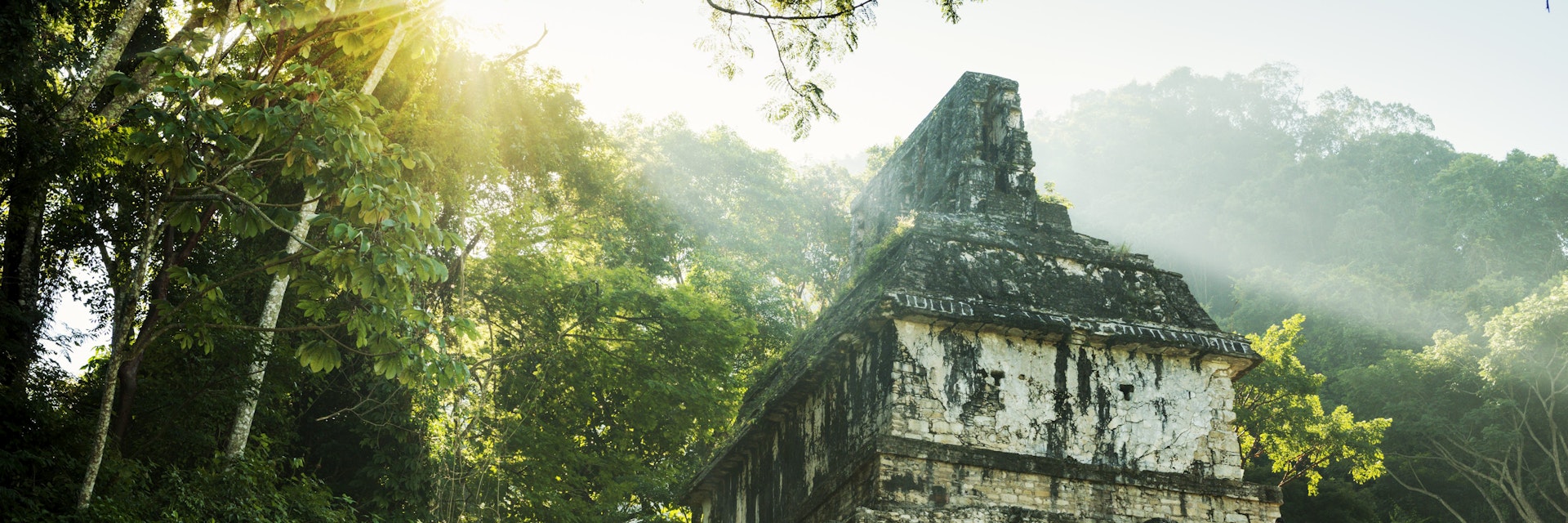
Justin Foulkes
Chilly pine-forest highlands, sultry rainforest jungles and attractive colonial cities exist side by side within Mexico’s southernmost state, a region awash with the legacy of Spanish rule and the remnants of ancient Maya civilization. Palenque and Yaxchilán are evocative vestiges of powerful Maya kingdoms, and the presence of modern Maya is a constant reminder of the region’s rich and uninterrupted history. The colonial hubs of San Cristóbal de las Casas and Chiapa de Corzo give way to sandbar beaches and fertile plots of coffee and cacao in the Soconusco, and for outdoor adventurers, excursions to Laguna Miramar and the Cañón del Sumidero are unmissable.
Leave the planning to a local expert
Experience the real Chiapas. Let a local expert handle the planning for you.
Attractions
Must-see attractions.
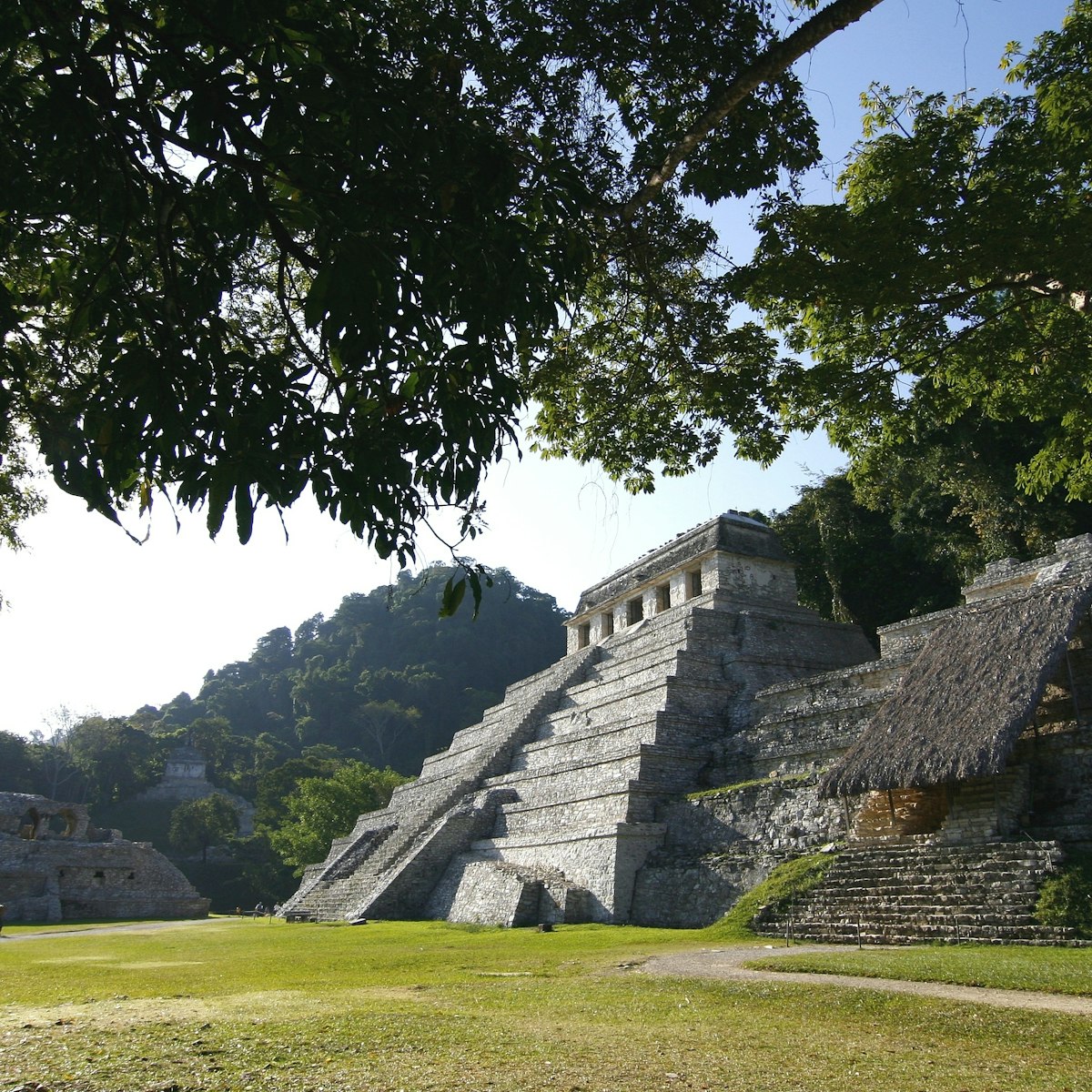
Palenque Ruins
Ancient Palenque stands at the precise point where the first hills rise out of the Gulf coast plain, and the dense jungle covering these hills forms an…

Jungle-shrouded Yaxchilán has a wonderfully atmospheric setting above a horseshoe loop in the Río Usumacinta. The control this location gave it over river…

Templo de las Inscripciones Group
As you walk in from the entrance the vegetation suddenly peels away to reveal many of Palenque’s most magnificent buildings in one sublime vista. A line…
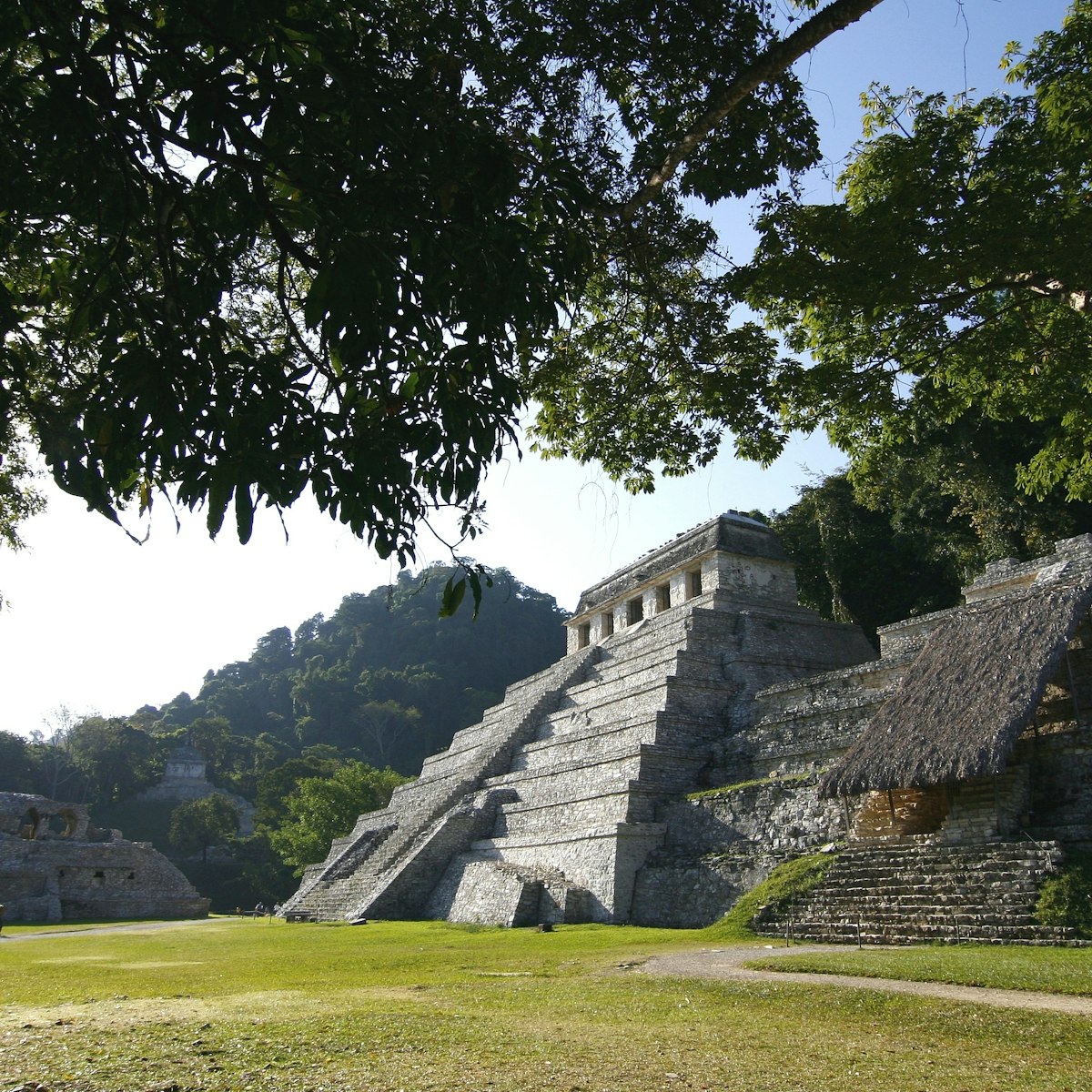
Templo de las Inscripciones
Perhaps the most celebrated burial monument in the Americas, this is the tallest and most stately of Palenque’s buildings. Constructed on eight levels,…
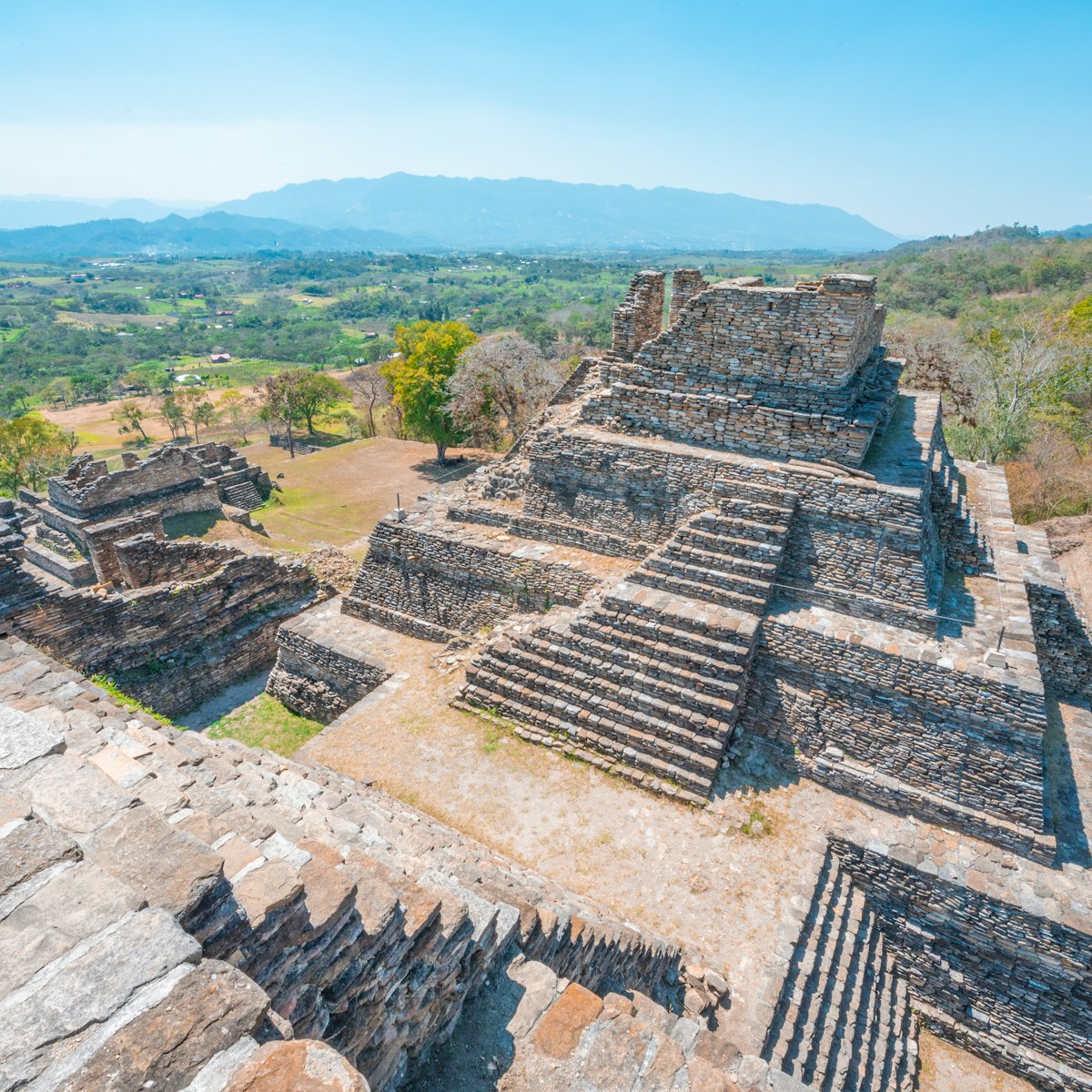
The towering ceremonial core of Toniná, overlooking a pastoral valley 14km east of Ocosingo, is one of the most spectacular archaeological sites in…
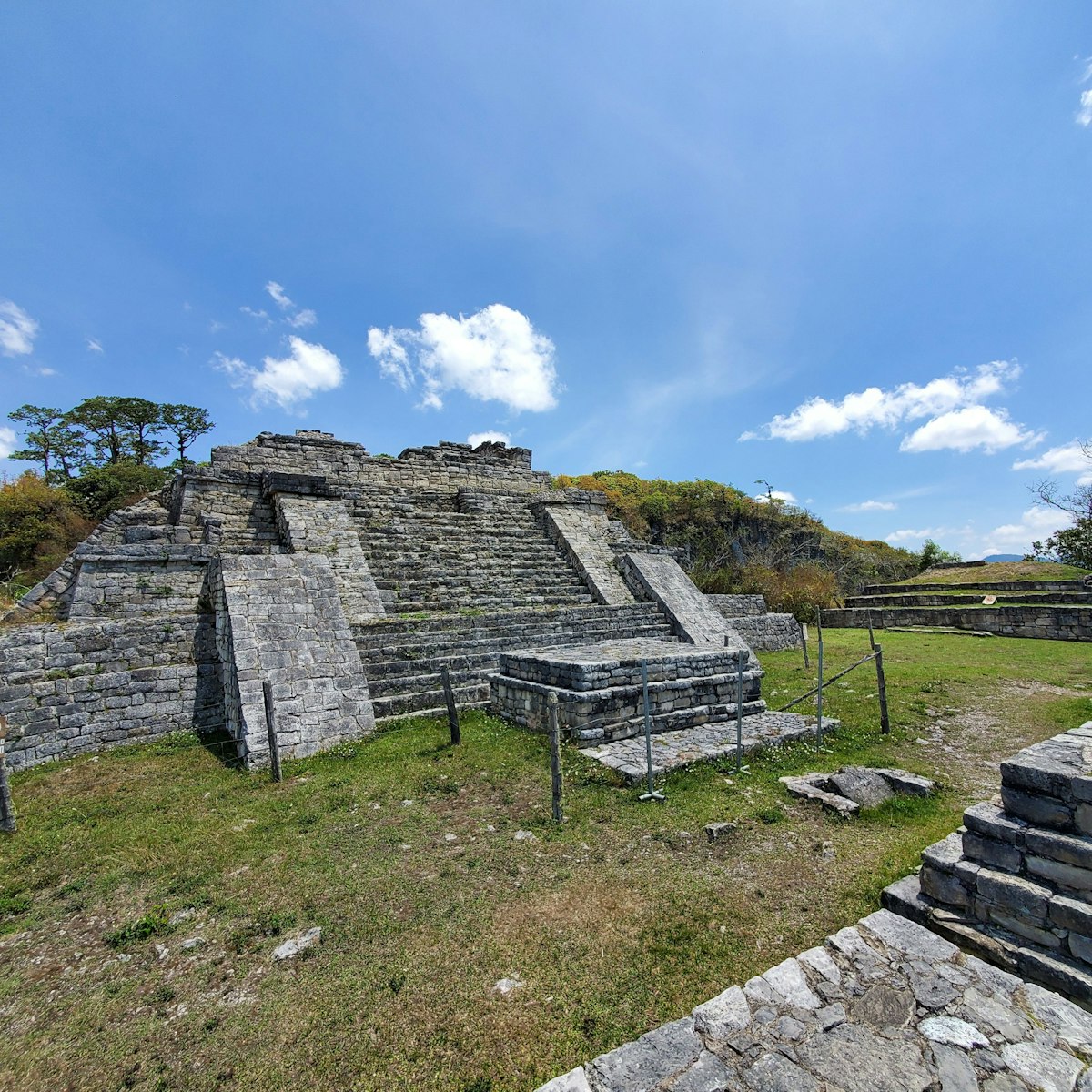
Chinkultic Ruins
With a dearth of other tourists, this is one of those magical archaeological sites where the sense of wild atmosphere is as enthralling as the stories…

Zona Arqueológica de Iglesia Vieja
Believed to be the regional capital of the Zoque during the Classic period, these ruins were inhabited between AD 250 and AD 400. The site's most…

San Cristóbal de las Casas
An atmospheric museum-research center, Na Bolom for many years was the home of Swiss anthropologist and photographer Gertrude Duby-Blom (Trudy Blom; 1901…
Plan with a local
Experience the real Mexico
Let a local expert craft your dream trip.
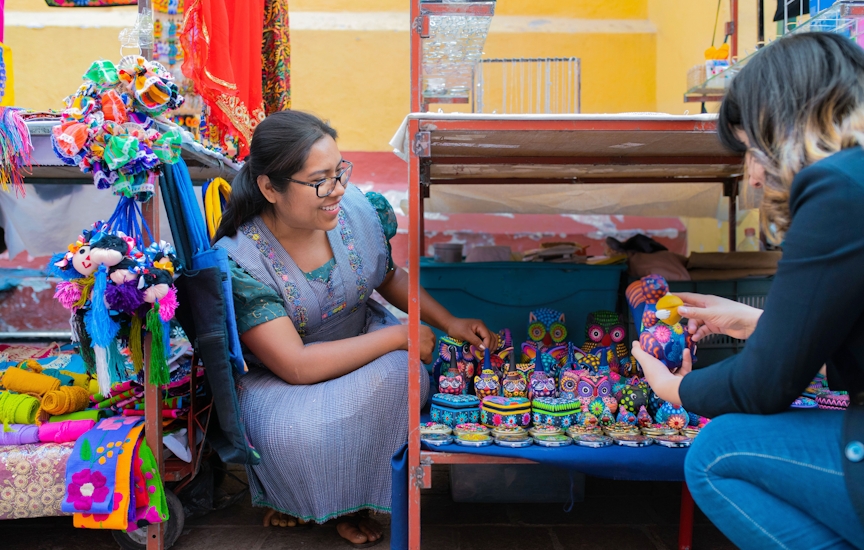
Latest stories from Chiapas
Filter by interest:
- All Interests
- Adventure Travel
- Art & Culture
- Beaches, Coasts & Islands
- Food & Drink
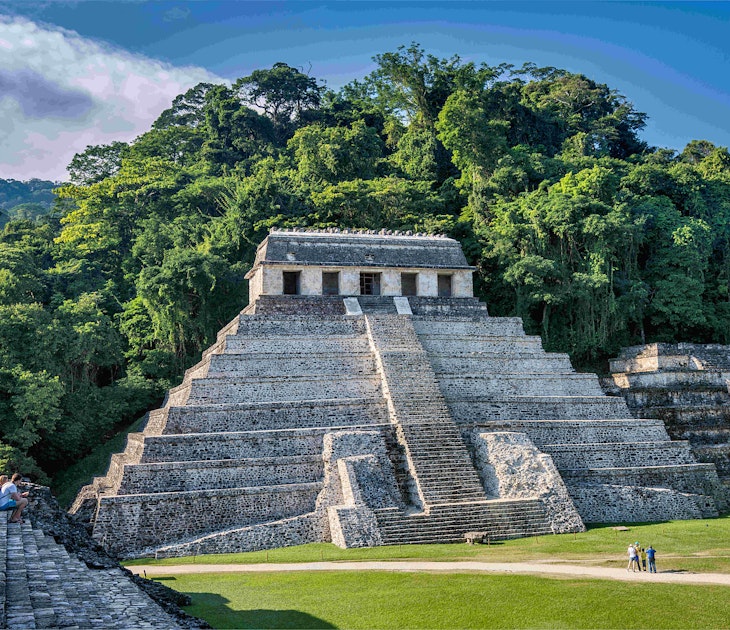
Wildlife & Nature
Nov 16, 2015 • 3 min read
The diversity of Chiapas extends to its geography and environment, a fertile green expanse of bird-rich tropical lowlands laced with hidden waterfalls,…
Purchase our award-winning guidebooks
Get to the heart of Chiapas with one of our in-depth, award-winning guidebooks, covering maps, itineraries, and expert guidance.
Chiapas and beyond
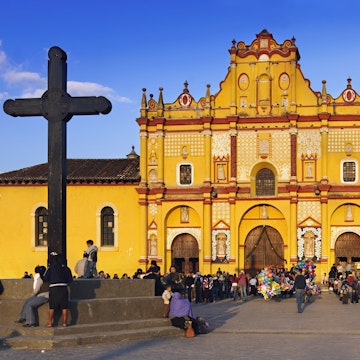
Your Ultimate Guide to Chiapas, Mexico
04/13/2021 by Emily Becker 2 Comments

There’s something about Chiapas that gives my heart that little pitter-patter. Maybe it’s the landscapes, the incredible coffee, or the plentiful opportunities for adventure. Between the thick jungles, remote beaches, and high mountain peaks, this state in Mexico has so much to offer.
If you’re not convinced to come to Chiapas yet, here’s a better idea of what’s in store:
Table of Contents
Waterfalls You’ll Fall in Love With
You may have seen the waterfalls of Chiapas posted all over Instagram and Pinterest . Crystal clear pools nestled in the mountainous jungles, oh my! What you see online about these waterfalls is the real deal. The areas where you can find these magnificent falls are protected by both governmental and non-governmental organizations and it shows. Here are a few that I personally recommend visiting:
Cascadas El Chiflón
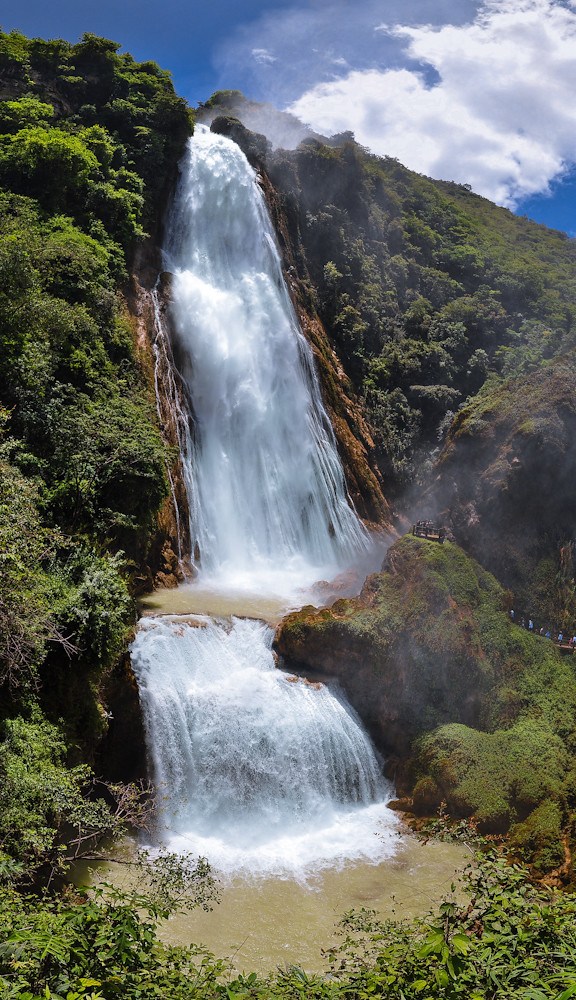
When you go to Chiapas, you cannot miss a trip to El Chiflón. It’s one of the most beautiful places I’ve been to in Mexico and unlike any other waterfall I’ve seen before. It’s about 2 and a half hours away from both San Cristóbal de las Casas and Tuxtla and 45 minutes from Comitán by car. The distance makes it a great option for a day trip from any of those bigger cities.
As you enter the park, you’ll see a small river below with a trail leading to the waterfalls. Moving along the trail, the waterfalls get bigger until you finally reach the most impressive one, Velo de Novia (the bride’s veil). At the end of the trail, there’s an amazing view of the waterfall and the mist rising from below. From that point, you can see the other trails around the falls, which are awesome to explore as well.
As you make your way back, you can actually zipline over the falls as a fun shortcut. I found it was an exciting way to see everything from above. It costs 200 pesos (about $10 USD) to zipline.
The entrance to El Chiflón is 50 pesos (about $2.50 USD).
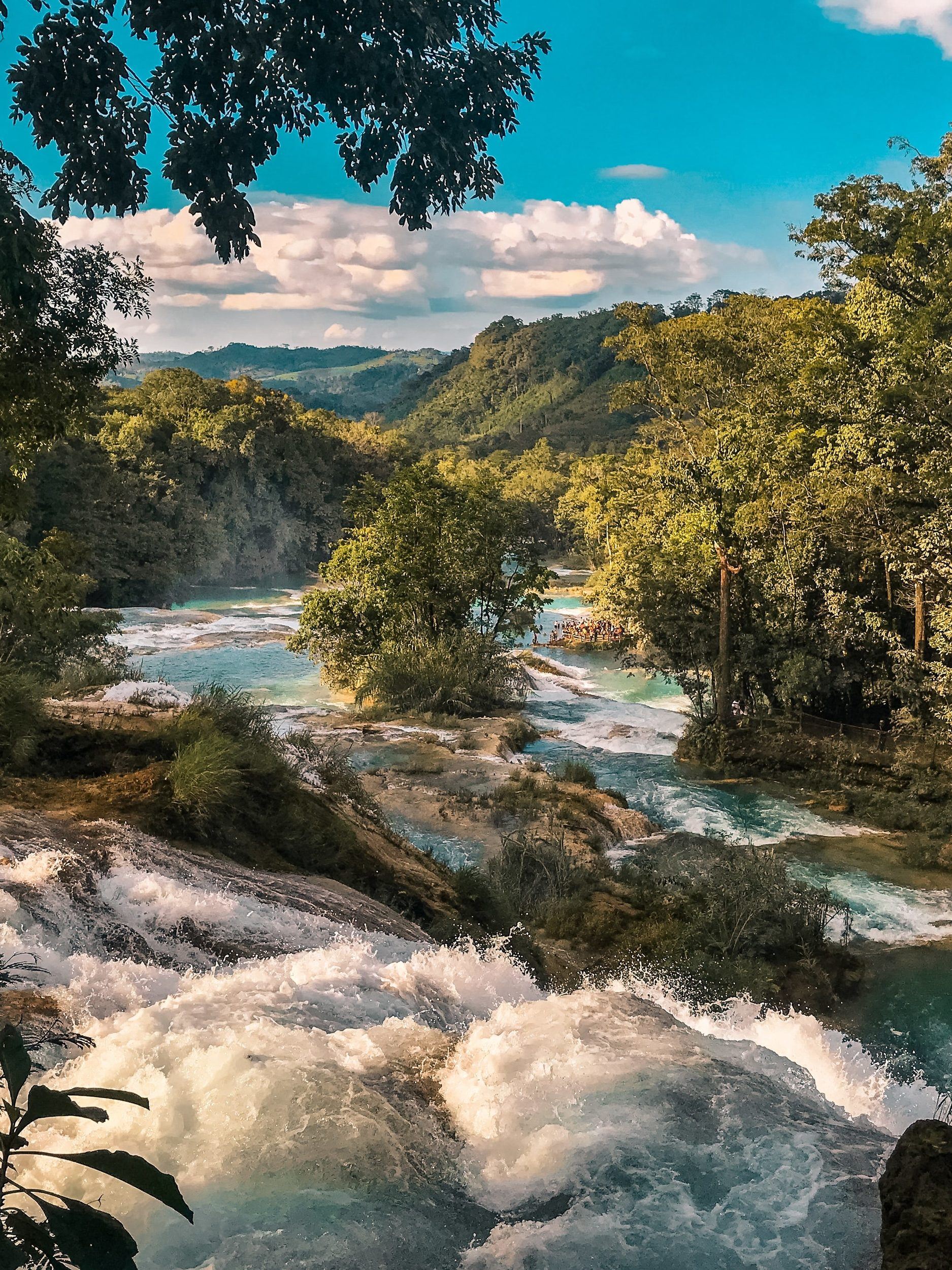
Since I arrived in Chiapas, everyone kept telling me I HAD to go to Agua Azul. After visiting, I understand the hype!
Agua Azul, gets its name from the intense turquoise pools both above and underneath the waterfall. It’s considered one of the best waterfalls in Chiapas because of its boisterous power and beauty.
However, I found Agua Azul to be crowded. There were so many food stalls, souvenir vendors, and large tour groups in such close proximity to the waterfall. It wasn’t a deal breaker for me, but it’s something to consider if you’re looking for a more low-key experience.
You can get to Agua Azul from San Cristóbal de las Casas, which is about 4 hours away. If you’re driving through Chiapas independently, it could be a great stop on your way to Palenque from San Cris or just as a quick day trip from Palenque. However, if you want to keep San Cris as your base, this tour picks you up from your hotel and will take you to both Agua Azul and Palenque in the same day.
Entrance to Agua Azul can be confusing. At the entrance to Salto de Agua ecopark (where Agua Azul is located), you have to pay a 10 pesos entrance fee. Then, you’ll have to pay again to actually access the falls, which will be another 20 pesos.
Cascadas Misol-Ha
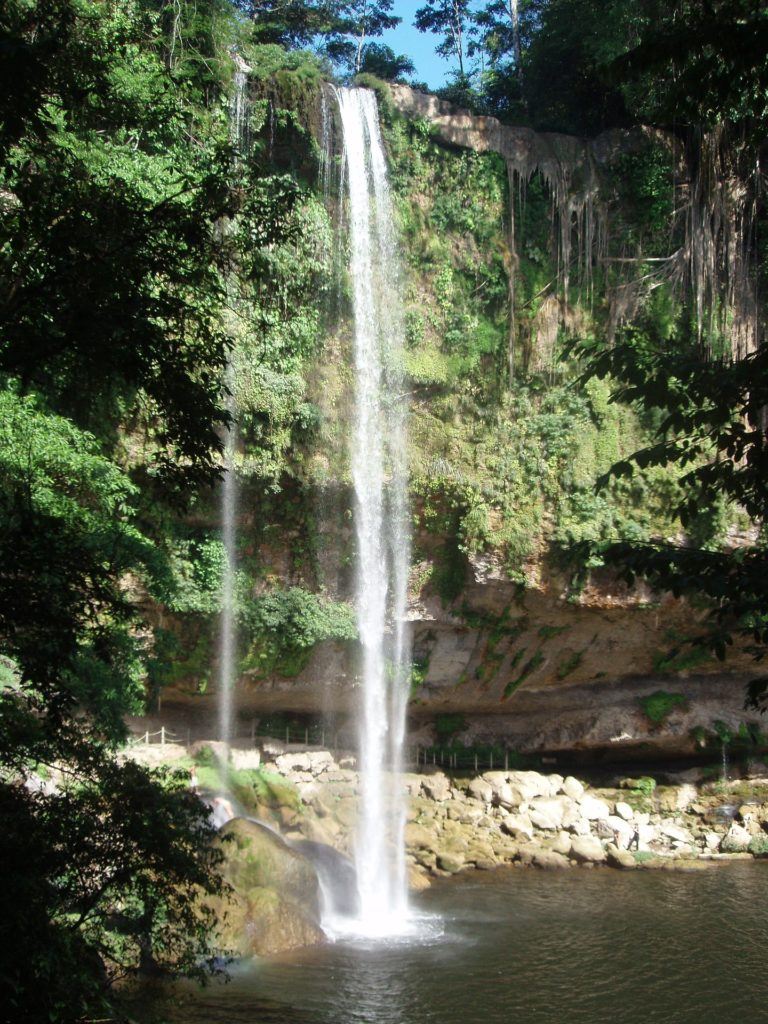
While the other waterfalls on this list are bright blue paradises, Misol-Ha has a totally different feel. Here you won’t find turquoise pools, but you will find a picturesque waterfall surrounded by bright green vegetation.
Misol-Ha is about 115 feet tall and towers above a pool that you can swim in. You can also follow a small trail that will take you right behind the mighty falls, which has a spectacular view.
This one is located close to Palenque. It’s about a 45-minute drive away and is often included on different tours going out from there. If you’re not into a tour, it’s easy to visit Misol-Ha from Palenque on your own.
This waterfall is another one where you have to pay twice to actually get to it. The first park entrance fee is 10 pesos, and then it’s another 10 pesos to access the falls.
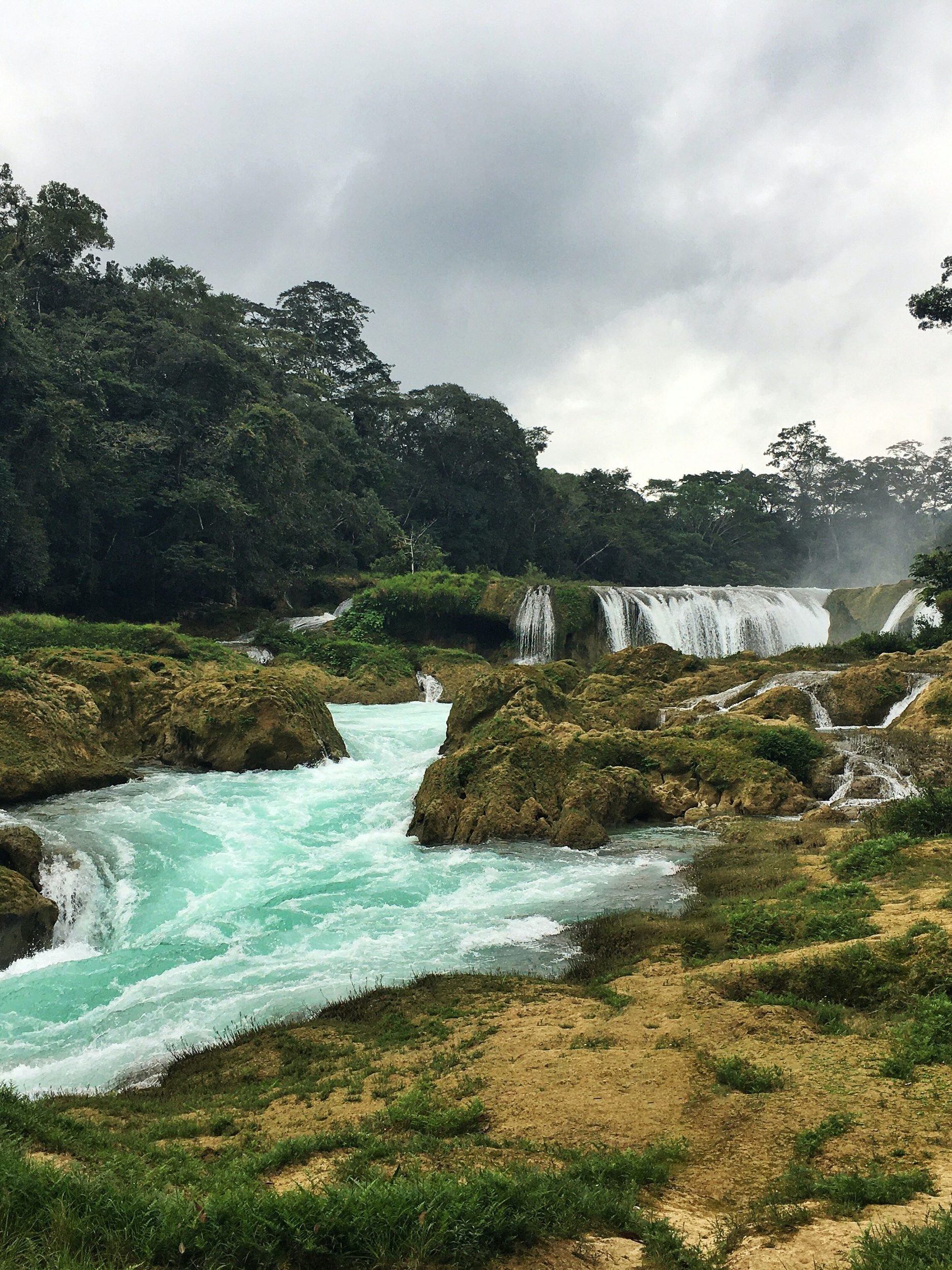
This stunning waterfall and waterway is much more remote than the others and is close to the Guatemalan border. It’s about a 5 hour drive from San Cristóbal de las Casas, but definitely worth the distance!
Las Nubes feels like you’re stepping into the garden of Eden. The lush greenery surrounding the brilliant blue waters with the round boulders above the cascades will take your breath away.
The best part of visiting Las Nubes is swimming in the blue pools above the falls. The water remains cool and refreshing year-round. It costs 30 pesos to enter the park. You can also rent a raft at the tourism center of the park for about $1,500 pesos (about $75 USD), which can fit up to 5 people.
Because of how far away Las Nubes is, I recommend spending a couple days exploring the area. You can easily camp around the park itself, or you can find other accommodation in Lagos de Montebello (see below). I camped nearby and enjoyed it, but another great option is this ecolodge which is right on the river.
Chiapas’ Best Archaeological Sites
Chiapas is located in southern Mexico, bordering Guatemala to the east. In fact, the general region of what is now known as Chiapas was part of Guatemala until 1824. This region of Mexico is known for being the most tied to its indigenous roots, which is evident in the local culture. You can often find local women wearing head-to-toe traditional clothing and there are many ceremonies and rituals that are still practiced here.
Chiapas is rich in indigenous culture and traditions that have been passed down for centuries. If you want a direct look into the past to better understand the roots of Mayan culture, take a trip to an archaeological site and dive head first into the beauty and mysticism of the ancient societies of Chiapas:
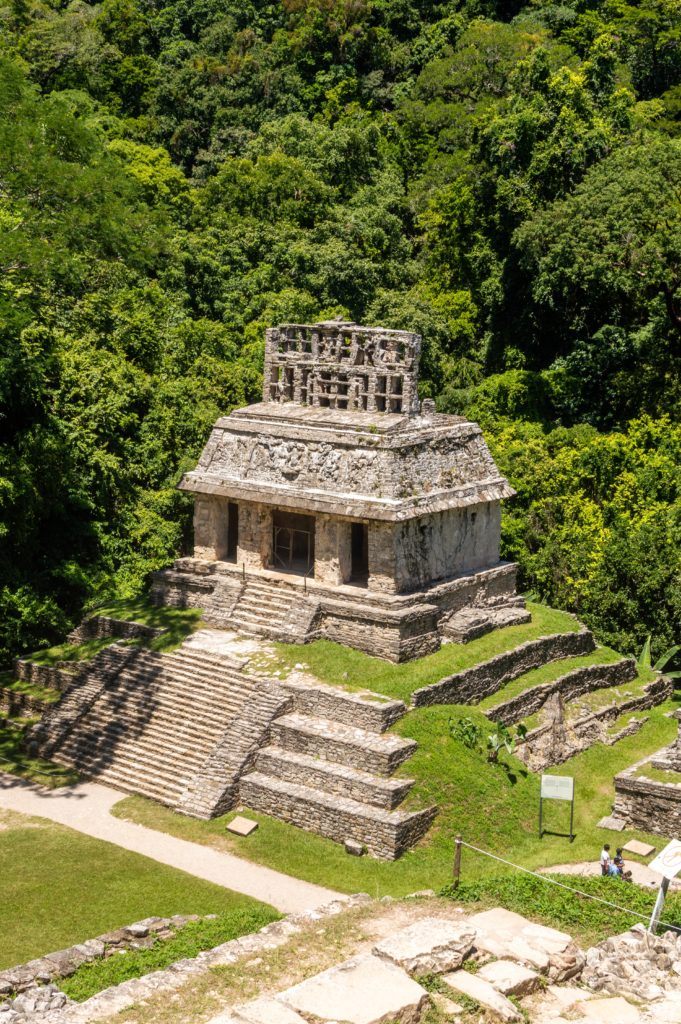
The first time I went to Palenque to explore the Mayan ruins there, I was speechless. I’ve been to my fair share of ruins and Palenque is by far my favorite.
The main temple on the grounds has a tomb inside, which used to house the deceased kings of the ancient city. You can go inside the dark, cavelike ruins and see where the kings used to lie. As you make your way through the ruins, I highly suggest hiring a guide. There are a lot of different symbols, sacred geometry, and even paintings which would be difficult to decipher without an expert present.
The city of Palenque has its own airport, which you can fly to from Mexico City. There isn’t a whole lot happening there, but it’s in the jungle and there are quite a few restaurants with traditional dishes to try. If you do go to Palenque, be prepared for humid weather and a lot of mosquitos!
Getting to the ruins from Palenque is as simple as driving there yourself or booking a tour once you get into town. These tours range from 300 to 1,000 pesos, depending on what is included. They are run out of local travel agencies, but you can also book one through GetYourGuide . The entrance fee for the ruins is 75 pesos, plus the 35 pesos fee to enter the surrounding national park where the ruins are.
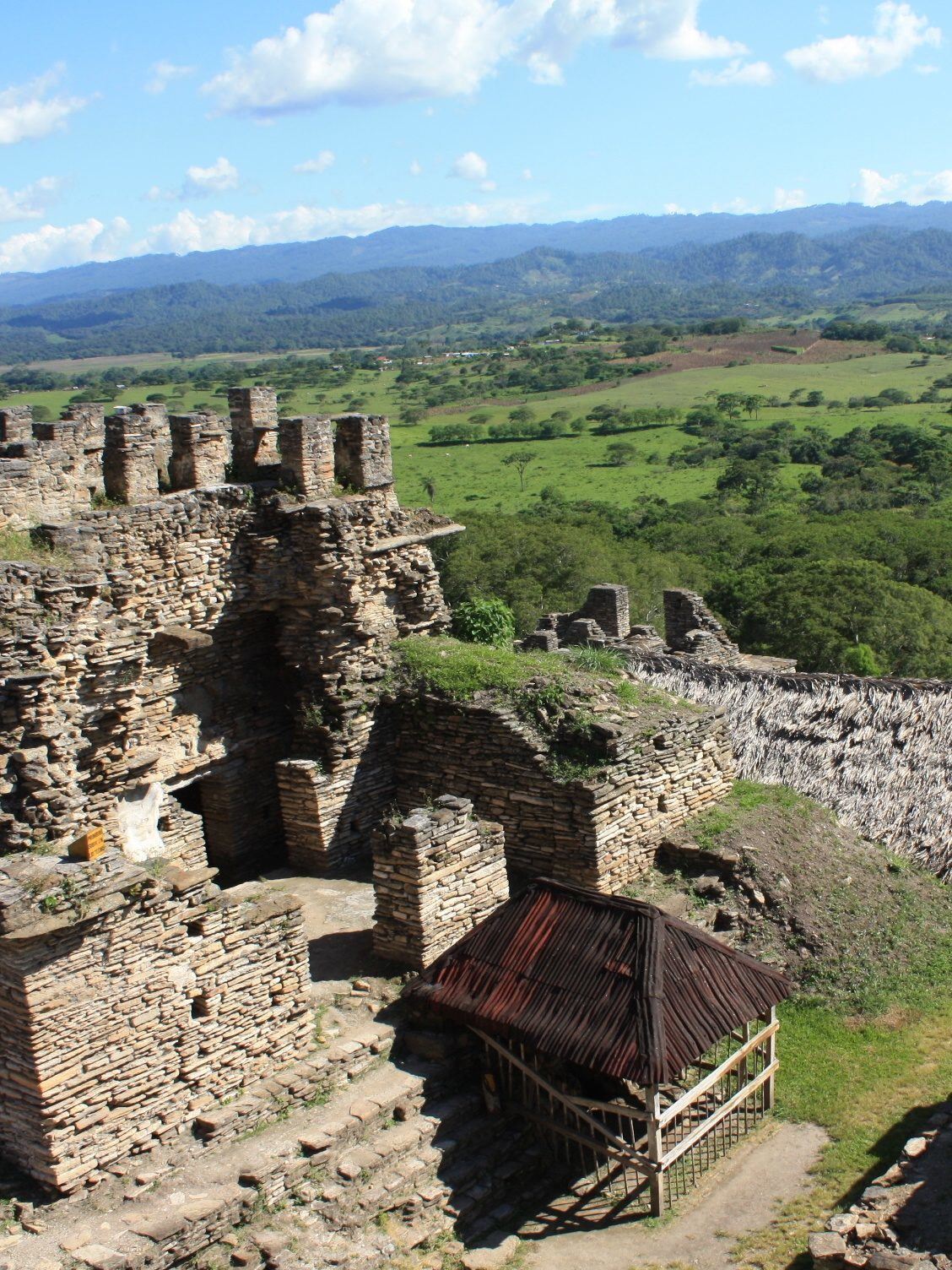
Meaning “House of Stone”, Toniná is the tallest archeological site in Mexico at 233 feet tall. If you’re ready for the climb of your life, you can trek up the stairs all the way to the top! I visited Toniná back in 2017 and was amazed at the view from the top of the main structure. With the gorgeous mountains in the background, it made the hike up totally worth it.
Toniná isn’t often crowded, and there’s a good chance you will have the site to yourself. It’s not a very well known archeological site yet, so it doesn’t have the same crowds you’d find at Palenque or other popular sites.
The entrance fee for Toniná is 46 pesos, which is cheaper than other big sites. Toniná is located just outside of the city of Ocosingo, which is about equidistant from San Cristóbal and Palenque, making it easily accessible from either of those cities. Tours to Toniná are often included in those which visit other archaeological sites, so it’s rare to find one that will just go there. One of those tours will cost around 500 pesos, which usually includes the park entrance fees.
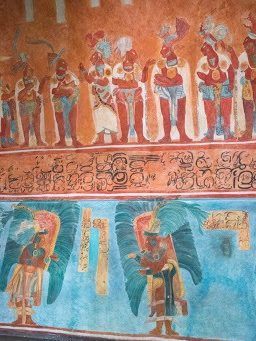
These ruins have the best preserved Mayan murals that have ever been found. When I saw them I couldn’t believe how old they were and it felt like I took a step back in time. The murals are the main focal point at Bonampak, and it’s worth hiring a guide to explain what they mean. There are some powerful images in the murals that give you an inside look at the ancient Mayan culture.
You can get to Bonampak from either San Cristóbal de las Casas, or more easily from Palenque. I recommend Palenque because it’s geographically closer and there are far more tours available. Taking a tour as opposed to tackling the ruins on your own won’t give you the same freedom of being on your own schedule, but it takes a lot of the pressure off.
If you decide to visit on your own, the park entrance fee to the park itself is 45 pesos, plus 25 pesos to enter the ruins themselves.
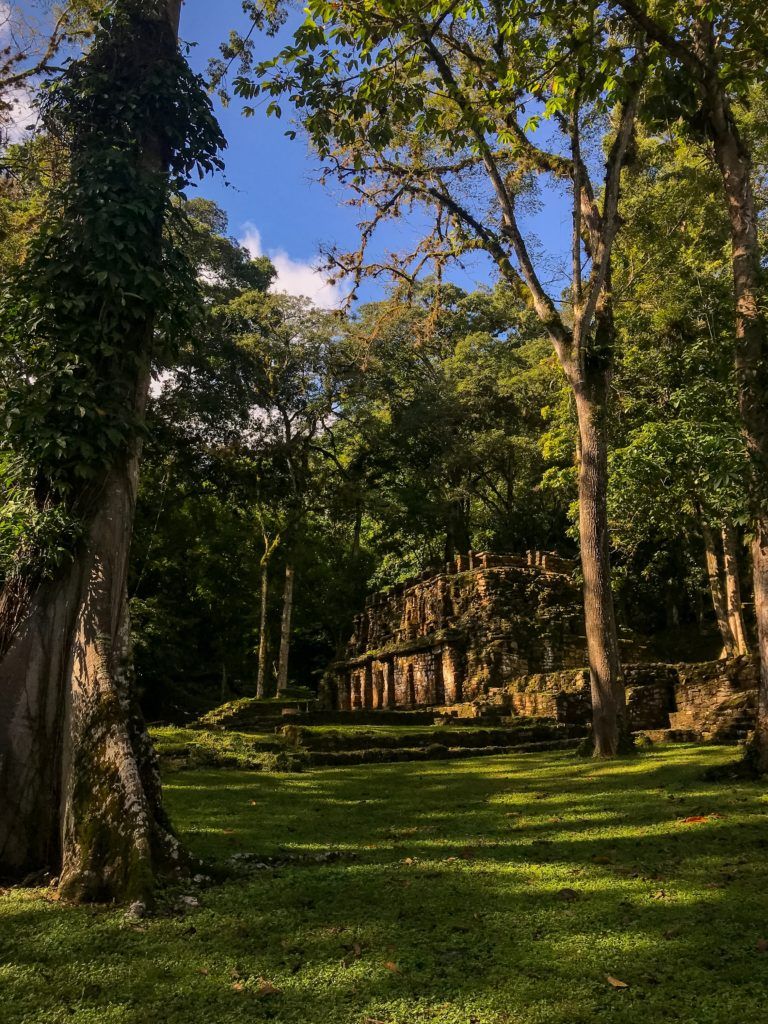
Located close to Bonampak, a trip to Yaxchilán will take you deeper into the jungle. The area around the ruins is one of the most sparsely populated places in all of Mexico, giving it some serious Indiana Jones vibes.
Yaxchilán is famous for the Maya hieroglyphs that are carved into the stones of the temples. These glyphs tell the story of the different dynasties of the ancient city. It’s fascinating to learn about these ancient civilizations and also interesting to ponder how much the world has changed since then!
Both Bonampak and Yaxchilán are off the beaten path and you won’t find the flocks of tourists like you will at many ruins in the Yucatan peninsula , for example. A tour that will take you to both of them from Palenque will cost around $40 USD, which doesn’t include a guide. Last time I went, I paid $10 USD at each place for a Spanish-speaking guide. If you don’t speak Spanish, you can ask for a guide who speaks English.
Getting to Yaxchilán is quite a journey and one you can take at your own risk. It involves crossing a river by boat, which can be expensive if you’re traveling alone. The entrance fee to the town itself is about 30 pesos, and there’s another fee to enter the ruins of about 30 pesos.
For ease, safety, and cost, I recommend doing a tour that will take you to both Yaxchilán and Bonampak which includes park fees and transportation.
Tenam Puente
Tenam Puente is just outside the small city of Comitan. The name literally translates to “defensive bridge” and was primarily used as a trading hub for nearly 1,000 years. You can climb the tallest temple there and get an awesome view of the scenery surrounding the site. There are also a few ball courts where the ancient Maya people used to play the sacred ball game.
One of my favorite things about visiting Tenam Puente was how empty it was when I went. Even though it was semana santa , or spring break, there were only a few groups of tourists in the entire site. It was at Tenam Puente that I felt much more connected to the spirit of the site and was able to sit with the peace and calm at this once-bustling city. If you can get a little bit of space, it’s cool to do a short meditation at the top of the temple.
The cost to enter the ruins is 45 pesos. If you’re curious about the Mayan ball game, consider hiring a guide who can take you through the courts and explain how it’s played.
Historic Towns
San cristóbal de las casas.
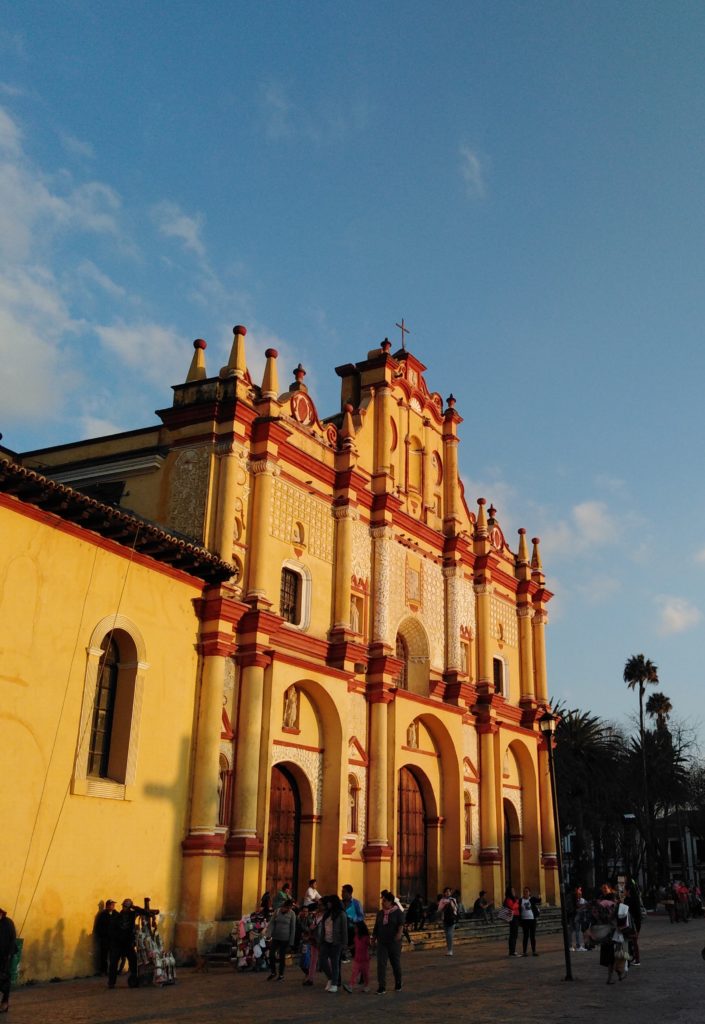
If you’ve read our post all about San Cristóbal de las Casas , you already know that San Cris has a very special place in my heart. It’s a charming colonial city high up in the mountains of Chiapas and a hub for artisans, yogis, and creative people of all kinds.
San Cris serves as a great base when visiting Chiapas because of how central it is. From here, you can easily take a day trip in any direction to visit ruins, waterfalls, and nature parks. Additionally, there is a wealth of history and culture here. With plenty of museums to visit and long pedestrian streets to stroll, you can spend a good amount of time here. I came here 4 years ago while traveling and I’ve just come back to stay – it has a magnetic quality!
San Cris is about an hour’s drive from the capital city Tuxtla Gutierrez, where the nearest airport is. If you’re renting a car to travel through Chiapas, I recommend doing so in Tuxtla as there is (literally) only one place in all of San Cris to rent a car. If you come during high season (around spring break and December), there is a chance that the rental company will be out of cars to rent.
San Juan Chamula
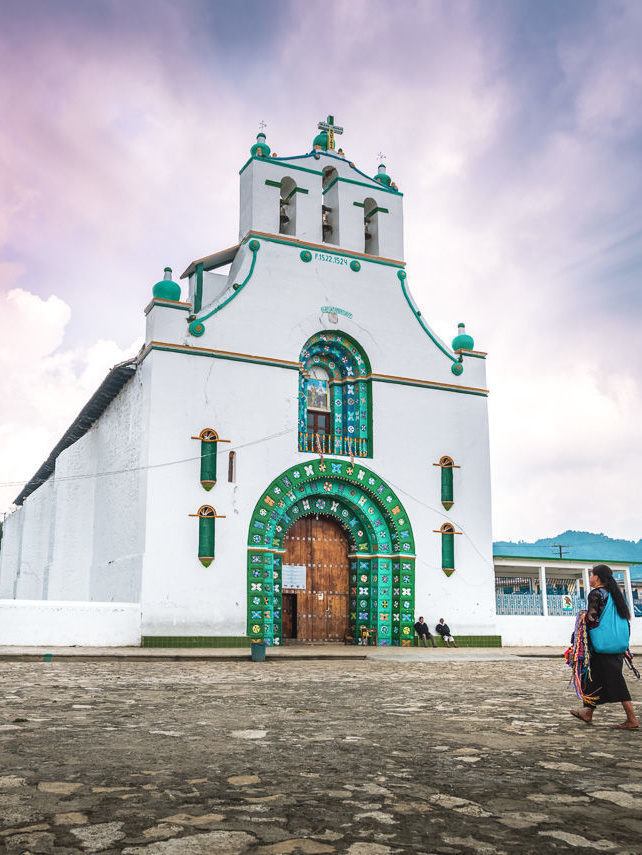
You’ll see signs all over the place about tours to visit San Juan Chamula as soon as you get to San Cris. This charming and mystical small town is only about a 20-minute drive from downtown San Cris and can be easily visited via taxi.
San Juan Chamula is known throughout the region as THE place to go to experience the heart of indigenous culture in Chiapas. The main attraction is an old church where priests, shamans, and local observers go to practice their sacred religious rituals. One of these rituals involves drinking Coca Cola and burping as a way of ridding the body of bad spirits. Yes, burping!
The cemeteries sprinkled throughout the town are a unique feature of Chamula. The grave sites at these cemeteries seem to pop up out of nowhere. In fact, it’s common practice in many indigenous communities here to bury loved ones in their own backyard. As buildings change hands or are knocked down, the graves remain.
It is important when visiting Chamula to be respectful of the local culture and customs. There is a very heavily-enforced rule at the church in Chamula that no phones or photography is permitted. There are signs outside that advertise this rule, and it applies to other sacred places there, too.
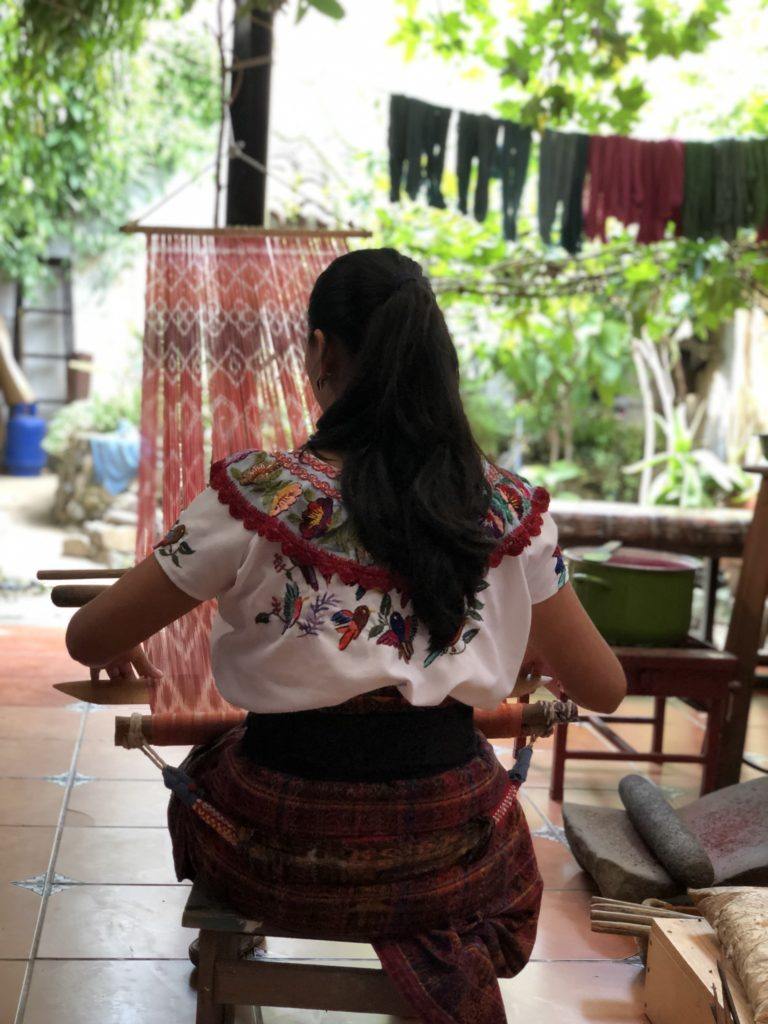
The first time I visited Zinacantán, I fell in love. This small town is best known for its handwoven textiles and traditional clothing. You’ll see women weaving fabrics by hand on a traditional waist loom. It’s fascinating to watch them carefully move the threads in and out of one another. It made me appreciate the meticulous care put into the garments. Read more about our favorite ways to support women when we travel here .
Most people in Zinacantán live off the textiles and clothing sold there, making it a great place to purchase souvenirs. That way, you can directly support the hard work of the artisans. The vibe of this town is much more laid back than San Juan Chamula, which made it easier to strike up a conversation with the locals.
There is a beautiful church in the center of Zinacantán that is definitely worth taking a peek at. During Catholic holidays, the church is filled with flowers which fills the space with a delightful floral aroma. There is no explicit “no pictures” policy at this church. However, it’s best to avoid taking pictures of people in their place of worship, no matter where you go. Stick to taking pictures of the architecture, the art, and the altars, but avoid snapping pictures of locals in the church.
You can easily go to both San Juan Chamula and Zinacantán in the same day on your own or with a tour. This one will bring you to both and even includes a traditional drink!
Chiapa de Corzo
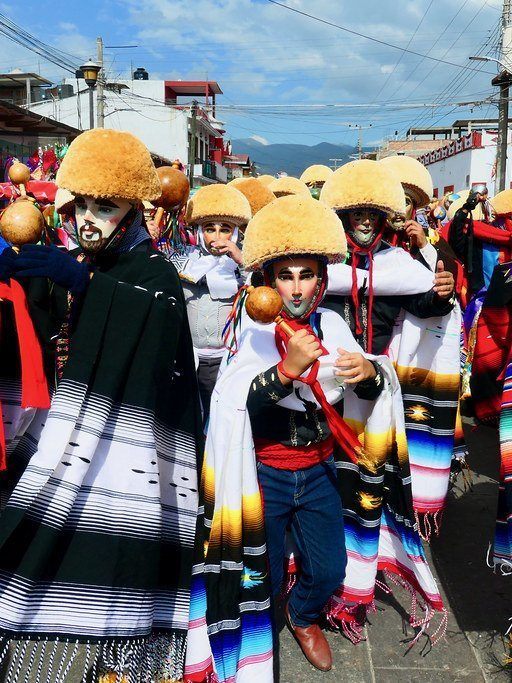
Do not, I repeat, do NOT go to Chiapas without going to Chiapa de Corzo! I might be partial to this magical town because of its delicious food, but there’s something for everyone there. If you want to get a taste of Mayan culture, this is the place.
Chiapa de Corzo is famous for its large festive celebrations including Dia de Los Muertos at the end of October as well as Christmas and Easter. Hang out in the main plaza and catch a glimpse of the dancers called parachicos moving together in synchronicity while wearing wooden masks and traditional wigs.
Beyond the cultural richness of the town, Chiapa de Corzo is located right next to Cañon del Sumidero. This canyon can be explored by boat while floating down the Sumidero river. There you might catch a glimpse of the crocodiles, monkeys, and birds that inhabit the area while you gaze up at the towering walls of rock. This tour includes both Chiapa de Corzo and Cañon del Sumidero and operates out of San Cristóbal, which is just a 45-minute drive away.
Comitán de Domínguez
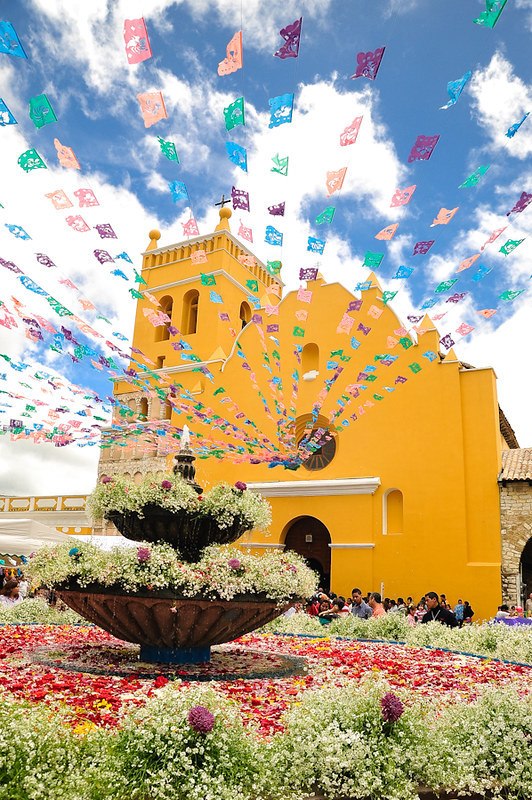
Comitán is the best base for exploring the wonders of southern Chiapas, as it is closer to many of the waterfalls mentioned above. This quaint town is known for its famous Christmas celebrations every year. The best part of visiting Comitán is how down-to-earth and non-touristy it is. Walking through the streets, you’ll likely see very few foreigners and not a whole lot of English happening in general, so be prepared if you don’t speak Spanish!
There also always seems to be music playing. The most common music to hear in the plaza is Marimba, which tends to illicit large crowds of dancing people. Join in if you can!
While you’re there, don’t miss the Rosario Castellanos Cultural Center, which hosts different art, music, and language workshops for the local community. It also has a theater, cafe, and bookstore inside and is right behind the Museo Arqueológico de Comitán. This museum is free and has some pretty neat artifacts from nearby ruins.
Coffee Farms
You don’t have to be a coffee connoisseur to know a great cup of coffee when you taste one. I’ve been ruined for life now because after tasting the coffee here in Chiapas, there is no going back. Whether you’re an expert on all things coffee or merely an enthusiast (like me!), here are a couple places where you can try some delicious brews and see where it all comes from:
This coffee farm is by far the most famous on the Ruta del Café here in Chiapas. It can be found about an hour north of Tapachula in southern Chiapas and has its own hotel and resort attached. The hotel is a bit of a splurge to stay at, but you can easily take a day trip there from Tapachula and just tour the farm. There is nothing quite like sipping the freshest coffee you’ve ever tasted with the backdrop of rolling green hills.
Finca Hamburgo

This coffee plantation is one of the oldest in Chiapas and was founded by a German family. The hotel on the grounds has some amazing views of the coffee plants and mountains, which are covered in green vegetation.
They also have tours of the facilities where you can learn about the coffee making process, the machinery, and the different varieties of plants on the farm. At the end of the tour, you’ll get to try some of the freshest brews directly from the farm itself. Sounds like a dream!
Finca Hamburgo is a bit more remote than Argovia at about two hours north of Tapachula in the heart of the coffee region. Both of these places would make an excellent day trip from Tapachula, but could also be made into a longer trip if you fancy staying for a while at one of the hotels.
A Beach Destination Unlike Any Other
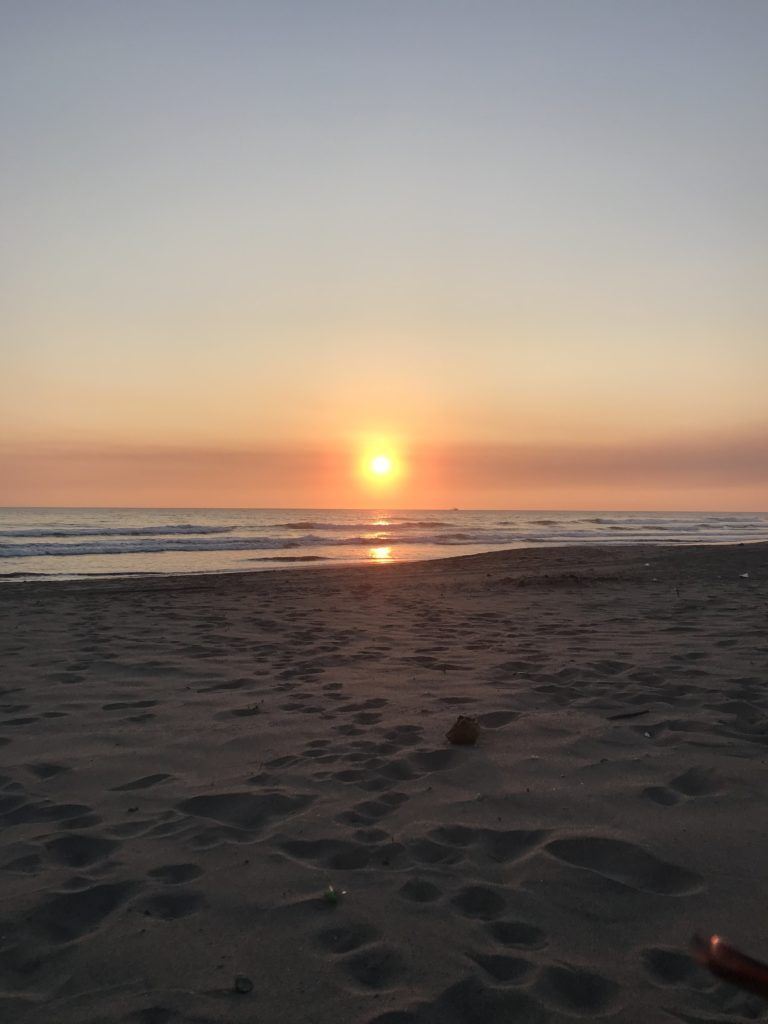
If you’re into the kind of destination that does NOT include big resorts and crowded beaches, the coast of Chiapas is for you. Boca del Cielo and Puerto Arista are the closest beaches to San Cristóbal de las Casas–about 4 hours away by car.
To get to the beach from San Cris, you will take the long and winding highway 190D for about 3 hours to reach Tonalá. This small city is the last place where you can find a grocery store and the best pit stop to stock up on snacks and drinks if you want to bring anything with you to the beach.
From there, you can drive (or take a taxi) to Puerto Arista where you’ll have to cross a lagoon by boat to get to the long strip of beach where you’ll find a few hotels spread out along the coast.
My favorite place to stay there is Entremares which has A-frame cabins and a geodesic dome. The rest of the buildings are built from earth and sand, which contributes to the overall eco-friendly vibe of the place.
The biggest draw of Puerto Arista and Boca del Cielo is the neat contrast of the lagoon with the mountains in the background and the grey beach on the other side of the isthmus. In this area you can take a dip in the lagoon and then walk for 5 minutes to then jump into the ocean. The best of both worlds!
Because of how remote this beach is, I recommend booking your accommodation ahead of time and clarifying with your host on how to get there. Boats that cross the lagoon are relatively cheap during the day (around $3 per person, per trip) but can increase at night.
Bonus: Lagos de Montebello
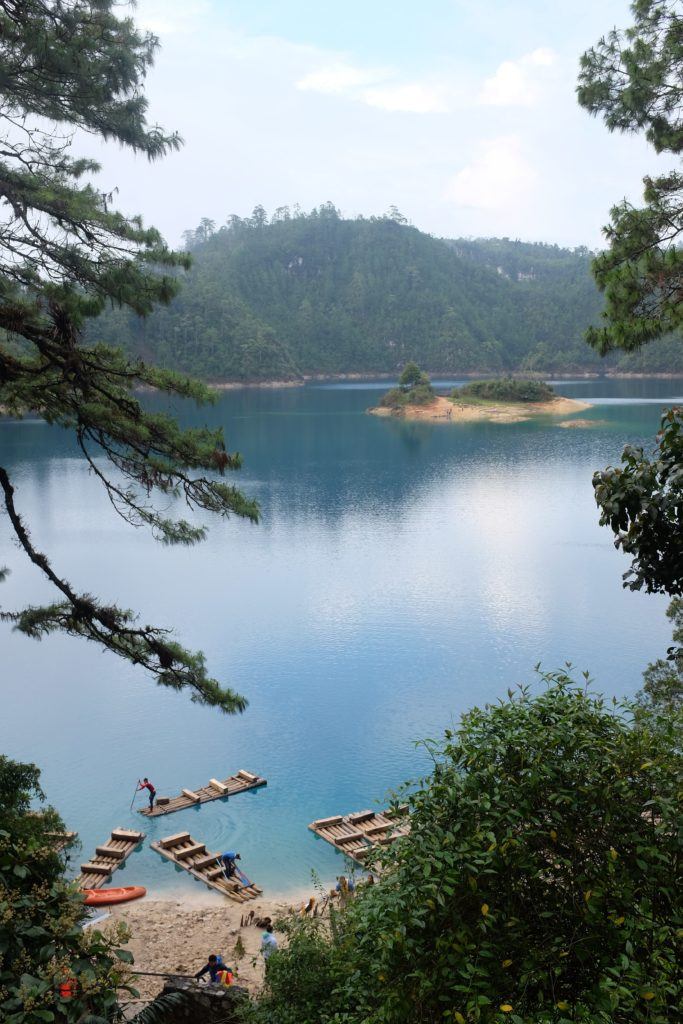
Imagine pulling up to a misty lake surrounded by pine-filled mountains after sleeping in the car for several hours only to realize you’ve stumbled upon paradise. That’s exactly what happened to me when I went to Lagos de Montebello while on a packed full-day tour.
This dreamy lake has a few small islands on it and is part of a chain of lakes along the Guatemalan border. Because of the altitude it gets quite chilly, especially during the winter months. I went in December when it was freezing cold outside! When the air is cold, the temperature of the water in the lake remains a few degrees warmer, creating steam above the lake.
The main activity at Montebello is floating around on a wooden boat, which are the same ones the Maya people used to cross the lake. From there, you’ll take a couple stops at different islands on the lake and you can even go for a swim!
Before You Go

Since Chiapas is still relatively off the beaten path, there are a few things to keep in mind before traveling there.
- Road Blockades: It’s commonplace to be driving on the highway in Chiapas and see that a road has been blocked by demonstrators. If you’re taking a road trip, be prepared to take an alternate route if you find yourself in a long traffic jam due to a blockade.
- Children Selling Souvenirs: You can expect to see many children selling trinkets, bracelets and other souvenirs in Chiapas. While some people feel called to purchase from those children, I don’t recommend it. Check out this article or do your own research before deciding for yourself.
- Photography: As I said above, please be mindful when taking photos in Chiapas. Many travelers feel inclined to take photos of or with local children without the parent’s consent. Here’s an article to provide some perspective.
- Language: While other places in Mexico may cater more to an English-speaking crowd, there are many places in Chiapas where it may be difficult to find an English speaker. Knowing a few key phrases goes a long way here, so no need to become absolutely fluent. Try downloading the offline Spanish-English and English-Spanish dictionary on the Google Translate app in case you need a translation in a pinch.
- Leave No Trace: The principle values of Leave No Trace are not limited to national parks in the USA. Organizations are working hard to keep the natural beauty of Chiapas free of pollution. Consider this while traveling and try to avoid single-use plastic whenever possible!
- Supporting Local Communities: Chiapas has plenty of opportunities to buy directly from artisans. That being said, there are plenty of big stores selling cheap dupes of local handicrafts. If you want to read more about supporting local women and artisans, check out our post about it.
Wondering how to fit all these sites into one trip? Here’s a map of each of the places mentioned so you can start planning:
Chiapas feels like it carries the heart and soul of what Mexico once was. Going out to these remote places to take in the natural beauty of the landscape brought me a lot of solace during a time when everything else felt like it was being turned upside down. Chiapas is often overlooked as travelers tend to favor the Caribbean and Pacific coasts, but that is what has allowed it to maintain its originality. Next time you get the itch to visit Mexico, consider coming to bask in the beauty of Chiapas.
About the author: Emily is a Mexico travel enthusiast based in San Cristóbal de las Casas, Chiapas. She is a part-time freelance writer for BMTM and part-time doula.
About Emily Becker
Emily Becker is a digital nomad based in Costa Rica. She's been traveling on and off since 2014 and has visited 15 countries—planning to tick many more off her bucket list. In addition to writing for BMTM, she works as a copywriter and project manager.
Leave a Reply Cancel reply
Your email address will not be published. Required fields are marked *
Save my name, email, and website in this browser for the next time I comment.
subscribe to our newsletter
This site uses Akismet to reduce spam. Learn how your comment data is processed .
03/08/2022 at 7:05 pm
Thanks for this detailed! I am planning to visit San Cristobal in November 2022 with my family. We want to visit Palenque as a day trip with a tour company. Do you feel this is safe to travel on highway 199? I have read some things that are giving me pause, and would love to hear from someone with more experience in the area.
03/10/2022 at 8:07 am
Hi Lily! How exciting that you’re planning to come to San Cristóbal. Visiting Palenque as a day trip from San Cris isn’t possible as the drive is about 6 hours (on a good day with no road blocks), so consider going for a few days at least. One day for travel each way, plus a full day to see the ruins, though I think two days with a guide is the best way to go if you have time.
Traveling on the highways here can be a bit of a wildcard. Right now I believe highway 199 might be a no-go because of some conflicts in one of the towns that it runs through. There are other routes that are safer, but they will take more time. If you want to get more info leading up to your trip, check out the San Cristobal Expats Community Facebook group, as people regularly update the page with their experiences traveling through the region.
I hope this is helpful and will give you some peace of mind about coming to Chiapas. I have lived here for about a year and a half and think it’s one of the most magical places in Mexico. Have a wonderful trip!
A Traveler's Overview of Chiapas, Mexico
Chiapas is Mexico's southernmost state and although it is one of the poorest states, it offers great biodiversity and remarkable landscapes as well as interesting cultural expression. In Chiapas, you will find lovely colonial towns, important archaeological sites, scenic beaches, tropical rainforest, lakes and high mountains, an active volcano, as well as a large Maya indigenous population.
Quick Facts about Chiapas
- Capital: Tuxtla Gutiérrez
- Area: 45 810 miles² (73 724 km²), 3.8 % of the national territory
- Population: 4.3 million
- Topography: volcanic mountain ranges, tropical rainforest, and coastal lowlands. The highest elevation is Tacaná volcano at 13 484 feet above sea level (4 110 m) in the Sierra Madre de Chiapas.
- Climate: subtropical with average temperatures between 68 and 84°F (20 to 29°C) in the lowlands; cool to warm with higher rainfall in summer in the mountain areas
- Flora: mangroves, pastures, rainforest and pine trees in the mountains
- Fauna: porcupines, agoutis, jaguars, ocelots, monkeys, anteaters, crocodiles, turtles and a great variety of birds
- Major Festivals: Fiesta de Enero (January Festival) in Chiapa de Corzo from January 8 to 23
- Archaeological Sites: Palenque, Toniná, Yaxchilán, Bonampak
Tuxtla Gutierrez
The capital of Chiapas state, Tuxtla Gutierrez has a population of approximately half a million inhabitants. It is a busy modern city with a reputable zoo and an excellent archaeological museum. Close by, the Cañon del Sumidero (Sumidero Canyon) is a must-see. This is a 25 mile-long river canyon with cliffs over 3000 feet in height and abundant wildlife, that can best be explored on a two and a half hour boat trip from Chiapa de Corzo or Embarcadero Cahuare.
San Cristobal de Las Casas
One of Chiapas' most charming cities, San Cristobal, was founded in 1528. A colonial city with narrow streets and colorful one-story houses with tiled roofs that enclose lovely courtyards, San Cristobal offers the visitor not only a journey back in time with its many churches and museums but also a contemporary bohemian ambiance of art galleries, bars and sophisticated restaurants catering to an international crowd of travelers and expats. Colorfully dressed indigenous people from the surrounding villages sell handicrafts in the market and streets, rounding out the city's very lively atmosphere. Read more about San Cristobal de las Casas and the best day trips from San Cristobal.
Palenque Town and Archaeological Site
The small town of Palenque is the bustling hub for excursions to one of the most important and beautiful prehispanic sites in Mesoamerica, surrounded by rainforest, and originally called La Kam Ha (the place of much water) before the Spanish renamed it Palenque. The on-site museum is a recommended stop for information about the site and Maya culture at the end of the ruins visit (closed Mondays). On the way to Palenque from San Cristobal de las Casas, don’t miss a visit to the stunning waterfalls of Misol-Ha and Agua Azul.
More Archaeological Sites
For those who would like to immerse themselves more in the history of Mesoamerica, there are more amazing archaeological sites in Chiapas that can be visited from Palenque: Toniná and Bonampak with its unique wall paintings as well as Yaxchilán, right on the banks of the Rio Usumacinta , Mexico's largest river. The latter two are situated in the middle of the Selva Lacandona that forms part of the Montes Azules Biosphere Reserve.
Chiapas Adventure Tourism
Heading to the southwest of the state, you can follow the Ruta del Café (coffee route), hike Tacaná Volcano or simply head off for some leisure to the Pacific coast with its mostly grey-black beaches at Puerto Arista, Boca del Cielo, Riberas de la Costa Azul or Barra de Zacapulco.
Also in Chiapas: Sima de las Cotorras - thousands of green parakeets make their home in this huge sinkhole.
Revolutionary Activity and Safety Concerns
The Zapatista (EZLN) uprising took place in Chiapas in the 1990s. This indigenous peasant revolt was launched on January 1, 1993, when NAFTA came into effect. Although the EZLN is still active and maintains a few strongholds in Chiapas, things are relatively peaceful and there is no threat to tourists. Travelers are advised to respect any roadblocks they may come across in rural areas.
How to Get There
There are international airports in Tuxtla Gutierrez (TGZ) and Tapachula, on the border with Guatemala .
Top Mexico Destinations
The Top 10 National Parks in Mexico
The Parachicos of Chiapas, Mexico: Cultural Heritage of Humanity
Top 5 Must-Visit Archaeological Sites in Mexico
Sumidero Canyon National Park: The Complete Guide
8 Magical Towns to Visit in Mexico
The 13 Most Amazing Maya Ruins to See in Mexico
20 Top Things to Do in Mexico
UNESCO World Heritage Sites in Mexico
Ancient Maya Sites of the Yucatan Peninsula
January Festivals and Events in Mexico
What Documents Do I Need for Mexico Travel?
National Parks in Guatemala
Summer in Mexico Weather and Event Guide
The Best Cruise Ports of Call in the Western Caribbean
Top 9 Mexico Travel Myths Debunked
- Mexico City
- Copper Canyon
- Guadalajara
- San Cristóbal de las Casas
- San Miguel de Allende
- 5-Day Mexico City Itinerary
- 10-Day Baja California Road Trip
- 10-Day Chiapas Road Trip
- 10-Day Copper Canyon by Train
- 10-Day Guanajuato Road Trip
- 10-Day Yucatan Road Trip
- 10-Day Oaxaca Road Trip
- Cozumel Island
- Isla Mujeres
- Holbox Island
- Playa del Carmen
- Punta Allen
- Puerto Escondido
- Hot Springs
- Mayan Ruins
- Mountains and Valleys
- Wildlife Experiences
- Best Mexican Foods
- Best Mexican Movies
- Best Books about Mexico
- Mexican Artists
- Mexico Fun Facts
- Mexico Historical Facts
- Mexican Holidays
- Day of the Dead in Mexico
- Pueblos Mágicos in Mexico
Chiapas Road Trip: My 10-Day Chiapas Itinerary
- by Nellie Huang
Chiapas is a rare slice of Mexico brimming with waterfalls, magical towns, and Mayan ruins. Here is my detailed 10-day Chiapas itinerary packed with outdoor adventures.
Tucked in southern Mexico straddling the Guatemala border, Chiapas is a forgotten state, one that has been sadly neglected by the government. It’s a shame, as Chiapas is brimming with some of Mexico’s greatest natural wonders : from the spectacular el Chiflon waterfalls to the well-preserved Palenque ruins and alpine lakes at Laguna de Montebello.
Thankfully, Chiapas has also escaped the clutches of mass tourism and managed to stay under the tourist radar. If you’re looking to escape the crowds of Cancun or Los Cabos , Chiapas is an excellent destination for adventure travelers seeking more authentic experiences.

Table of Contents
Luxury: Hotel Nututun Palenque
Mid range: axkan palenque, budget: cabañas kin balam, chiapas itinerary day 2: explore palenque ruins, chiapas itinerary day 3: day trip to yaxchilán, admire misol-ha, swim in agua azul, mid range: hotel casa mexicana, luxury: casa lum boutique hotel, ultra luxury: hotel bo, visit san juan chamulas, see the flowers of zinacantán, wander around chiapa de corzo, explore cañon de sumidero, marvel at the waterfalls of el chiflon, budget: hotel real colonial, mid-range: hotel casa delina, luxury: collection o corazón del café hotel boutique, chiapas itinerary day 9: explore lagos montebello, chiapas itinerary day 10: head back to tuxtla gutierrez, best time to travel chiapas, how much does a chiapas trip cost, is it safe to visit chiapas, driving tips in chiapas, chiapas road trip tips, my chiapas itinerary & guide.
You’ll need at least 10 days in Chiapas to see the highlights: from the colonial charm of San Cristobal de las Casas to the indigenous villages such as San Juan Chamula and the impressive Palenque ruins and nearby waterfalls. I’m sharing my Chiapas road trip itinerary, including where to stay and what to see at each spot.
Here is a summary of my 10-day Chiapas itinerary. I will be giving a day-to-day breakdown below.
- Days 1-2: Palenque
- Day 3: Day Trip to Yaxchilán
- Day 4: Day Trip to Misol-Ha and Agua Azul
- Days 5-7: San Cristobal de las Casas
- Day 8: Comitán and El Chiflon
- Day 9: Lagos Montebellos
- Day 10: Back to Tuxtla Gutierrez
Download my Chiapas itinerary on Google Maps.
How to Get to Chiapas
The starting point of our Chiapas itinerary is the Villahermosa Airport (VSA) . It’s a small airport and planes that land there tend to be smaller. There are regular flights from Mexico City, Cancún, Mérida, Monterrey, and Guadalajara. Check for flights.
You’ll then fly out from the Tuxtla Gutierrez International Airport (TGZ) in the capital of Chiapas. It’s a relatively small airport and only serves Mexico City, Monterrey, Guadalajara, and Cancun. The only international destination it serves is Guatemala City.
Flights from Cancun to Tutxla Gutierrez are really cheap; I paid US$50 each way even when I booked it the week before flying. Flights from Guatemala City cost only $70 each way.
Search for Flights here!

San Cristóbal is popular with backpackers who travel overland here from Guatemala. There are many tour agencies that offer transport services from Panajachel, Quezaltenango, and Antigua in Guatemala directly to San Cristóbal. The journey usually takes 10-16 hours including the time it takes to pass immigration.
From other parts of Mexico, you can catch the ADO bus (Mexico’s biggest bus company) that has comfortable, air-conditioned buses that run on time. There are regular night buses from Palenque to San Cristobal. Book your bus tickets online!
The most popular routes are below:
- Palenque — San Cristóbal: 9 hours; 420 MXN (US$21)
- Campeche — San Cristóbal: 11 hours; 962 MXN (US$49)
- Oaxaca — San Cristóbal: 12 hours; 932 MXN (US$47)

Getting around Chiapas
Hiring a car is the best way to explore the Chiapas state – the drive from San Cristobal de las Casas to Palenque in particular is best done by car as bus drivers along the route are notorious for their reckless driving and crazy speed (more on safety below).
I always book my car rental from Discover Cars as they offer the best prices and excellent customer service. An economy rental car in Oaxaca costs around $200 for a whole week, which is less than $28 a day . The current price for gas is 23.50 MXN (around $1) per liter.
Check Car Rental Prices

In general, bus travel in Chiapas is convenient and comfortable. ADO bus is very reliable and punctual, and you can easily book tickets online. Just bring a jacket because the air conditioning will be cranked up and be prepared for a long journey around the mountains. Pre-book your bus tickets here to ensure availability.

My 10-Day Chiapas Itinerary
Chiapas itinerary day 1: arrive in palenque.
Upon arrival in Villahermosa Airport, catch the bus to Palenque. ADO runs a direct service in comfortable mini-buses from Villahermosa airport to the bus terminal at Glorieta de la Cabeza Maya in Palenque town. Pre-book your bus tickets here to ensure availability.
There are two main areas to stay in Palenque: the city center and the area along the road to the Palenque ruins. Staying in the city center offers more amenities and food options, on the other hand, the hotels along on the road to the ruins are surrounded by nature and you can even hear the howler monkeys at night!
Palenque town itself is a modern city with not much to see; all the interesting sights lie in the countryside. Spend your evening wandering around the main square, take photos with the colorful ‘Palenque’ sign, and enjoy dinner. Tropi Tacos near the central square is a budget-friendly restaurant with lots of tacos options to choose from. Read reviews.

Where to Stay in Palenque
Hotel Nututun Palenque is a 4-star hotel in Palenque that offers a comfortable stay for families, couples, and friends. Surrounded by beautiful nature, the Hotel Nututun Palenque has air-conditioned rooms, a swimming pool, a restaurant, onsite parking, and free Wi-Fi. Just a short 10-minute ride away from the Palenque ruins. Check rates here.
Axkan Palenque is a great option to stay without breaking the bank. Located just outside of town, you can catch the colectivos outside the hotel that head to the ruins. Amenities include free Wi-Fi, a swimming pool, and restaurant on site. Check rates here.
Cabañas Kin Balam is conveniently located just 5 minutes away from the Palenque ruins. Cabañas Kin Balam offers affordable yet charming cabins surrounded by gardens and an outdoor swimming pool for guests to relax in. Check rates.

The next day, rise bright and early to visit the Palenque ruins as it opens (at 8 am). This is when the site is the least crowded and you can avoid the heat of midday. I was one of the first to enter the Palenque ruins when they opened, and it was spectacularly seeing the sun piercing through the mist that hovered above the pyramids.
To get to the Palenque Ruins from the city center, you can take the colectivo minibus with a sign that reads ‘Ruinas’.They depart from the ADO bus terminal every 15 minutes and make stops in town along the way, operating from 7:00 am to 7:00 pm every day. Tickets only cost 40 MXN (US$2) and the Colectivo takes you directly to the entrance of Palenque ruins.
Read my guide to the Palenque ruins .

The Palenque Ruins are an absolute marvel but the remote Yaxchilán ruins will blow your mind. Located about 169 km (105 miles) from Chiapas, the Yaxchilán ruins have been immaculately preserved because of their secluded location. Loosely translated as “green stones” in the Maya language, Yaxchilán is found along the Usumacinta River near the Guatemalan border.
Yaxchilán centers around the majestic Gran Plaza, which is flanked by the Great Acropolis and the Little Acropolis. Adorned with intricate decorations, ornate motifs, and cryptic hieroglyphics, the site is a testament to the enduring legacy of the Mayan empire.
It’s not so straightforward to get there; it’s best to book a guided day trip . But if you prefer to venture there on your own, catch the colectivo mini bus from Palenque to Frontera Corozal. Then take a taxi to the riverside where you will take a boat to the ruins. At the riverside, you’ll need to wait for 6 more people to share the boat ride cost or opt to pay the entire fee (1300 MXN or $76.55).

Chiapas Itinerary Day 4: Cool off in Waterfalls
After spending the first few days of your Chiapas road trip exploring Mayan ruins , it’s time to refresh yourself at the waterfalls just 20km (12.5 miles) away from Palenque. Misol-Ha is the largest waterfall in Palenque , at over 110 feet (35m) high.
Misol-Ha stands out from the other waterfalls because it has a single drop, so you can explore the cool networks of caves behind the falls. You are allowed to swim in the plunge pool at the bottom of the waterfall.
From Palenque, the colectivo takes about 40 minutes at 90 MXN (US$5) per person. The entrance fee is 30 MXN (US$2), although sometimes an additional 10 MXN maintenance charge is also applied.

A stone’s throw away, you will find Agua Azul, considered one of the best waterfalls in Mexico . The name translates to “blue water,” Agua Azul is famous for its stunning crystal clear blue tones .
However, this color is only visible during the dry season (October to April). During the rainy season (May to September), the consistent rain will make the water look brown. When I was there, the water was so brown and turbulent that swimming was allowed.
Don’t forget your swimsuit, towel and dry bag!There are life jackets rentals if you’re not a strong swimmer. Water shoes are also highly recommended as the rocks to walk on can be very slippery. It takes around 2 hours from Palenque to get to Agua Azul.

Chiapas Itinerary Day 5: Explore San Cristóbal de las Casas
Next day, head over to the colonial city of San Cristobal del las Casas , which is just about 3 hours and 20 minutes away by car. However, the road between San Cris via Ocosingo to Palenque is not safe mostly because of road blockades and armed gangs patrolling this stretch of the road.
You can catch the overnight ADO bus, which takes a detour via Tuxtla Gutiérrez. The journey takes much longer, around 7 hours, but ADO bus takes the safer route to Palenque. You can save a night of accommodation and arrive in Palenque in the morning. Book your seat here.
The crown jewel of Chiapas, San Cristobal de las Casas is a pueblo mágico (magical town) bursting with colors and Indigenous culture. Perched at an elevation of over 7,200 feet (2,200 meters), San Cris – as it’s affectionately known – is lined with cobblestoned streets and terracotta-roofed colonial houses, surrounded by misty mountains and hilltop churches. Indigenous Tzoztil ladies saunter along the sidewalks in their embroidered huilpil , hawking beautiful artisan and textiles.
Read my recommendation on the best things to do in San Cristobal de las Casas .

Where to Stay in San Cristóbal de las Casas
Accommodation prices in San Cristóbal de las Casas are really affordable and even upscale boutique hotels here are cheaper than you’d imagine. We recommend staying in the historic center (near Plaza de la Paz) so you can easily walk everywhere.
I stayed here for a week and really loved the excellent location, amazing prices, and comfortable rooms. Housed in a colonial building with a lush patio/garden, the hotel is a great option for those who want comfort without spending too much (pictured). Check rates here.
Located along the pedestrianized Calle Real de Guadalupe, this sweet 8-room boutique is intimate and stylish. Built with reclaimed wood and tiles, the hotel features upcycled furniture and textiles from local indigenous artisans. And the onsite restaurant uses vegetables and herbs grown in their backyard garden. Check rates here.
The most expensive hotel in San Cristobal is the Venetian-style Hotel Bo, an upscale boutique hotel with designs inspired by indigenous music with a sort of rustic minimalism. The main appeal of this hotel is Restaurant Lum, serving gourmet Mexican fare with wild flavor combinations. Check rates here.

Day 6: Day Trip to San Juan Chamula and Zinacantán
Just a 30-minute drive from San Cristobal de las Casas lies the famous Tzoztil indigenous village, San Juan Chamula. This village has become renown for its prominent Tzoztil tradition, syncretist practice, and animal sacrifice rituals.
Visiting the church in San Juan Chamula was the highlight for me. Instead of rows of benches, you’ll find pine needles covering the floor, candles lit all over the place, and locals are sat deep in prayers or sobbing with grief. Shaman healers walk the aisles collecting offerings in the form of Coca-Cola and pox (a Chiapas alcoholic drink). Other times, it’s a live chicken that gets killed in the church.
You can get there on your own by taxi or colectivo, but booking a guided tour will give you more insights to the indigenous culture and rituals. I booked this day tour online and was pretty satisfied with my guide.
TIP: Photography is strictly prohibited inside the church. This also refers to photographing locals, who are understandably cautious of strangers. Their strong adherence to Mayan tradition has led them to believe that each shot taken from them is stealing a part of their soul.

Zinacantán is another day trip you can squeeze into your Chiapas road trip. At just 18km (11 miles) from San Juan Chamula, you can easily see both towns in the same day.
The community of Navenchauc resides snugly at the valley’s base, surrounded by the distinctive calcareous formations. Here, the rhythm of life intertwines with the seasonal changes, as orchards and greenhouses flourish amidst the verdant scenery. However, the valley grapples with drainage challenges during the rainy season, transforming the surrounding plain into a temporary lagoon.

Day 7: Day Trip to Cañon de Sumidero
At just 1 hour from San Cristobal de las Casas, Cañon de Sumidero and the gateway town, Chiapa de Corzo, are an easy day trip away. Located along the banks of the Grijalva River, Chiapa de Corzo has a rich blend of history and culture that blankets the entire continent.
As one of the oldest settlements in the region, this enchanting pueblo mágico (magical town) is steeped in centuries of tradition. Its roots trace back to the ancient civilizations of the pre-Columbian era, where indigenous groups like the Chiapanecas once flourished.

Just north of Chiapa de Corzo is the majestic Cañon de Sumidero, one of the deepest canyons in Mexico. Formed by the Grijalva River, the canyon is absolutely massive, measuring over 3,000 meters (10,000 feet) deep in some parts. You can see the sheer scale of it from the numerous viewpoints on the top of the canyon.
But what really makes this place special is the boat ride through it. You’ll get to see how incredibly vast and deep the canyon is as you cruise past walls of lush greenery, towering cliffs, and even the occasional crocodile basking in the sun. Besides crocodiles, the national park is home to other endangered species such as spider monkeys and ocelots.
The boat ride costs 400 MXN per person (US$20) and takes about 2 hours to get to Chiapas de Corzo. The easiest way to get here is on a day tour; I booked this day trip and really enjoyed it.

Day 8: Head to Comitán and El Chiflon
Continue your Chiapas road trip to the small tranquil town of Comitán, about 2 hours from San Cristobal de las Casas. Located in the “Los Altos de Chiapas” region, Comitán de Domínguez is a cultural gem, proudly bearing its historical heritage.
Founded amidst marshy terrain by the Tzeltal people, this ancient settlement flourished. In 1486, the Aztec empire extended its reach to Comitán, leaving an indelible mark on its identity. Today, Comitán’s charm extends beyond its historical significance; it is a Magical Town where tradition and modernity intertwine seamlessly.

Comitán is the gateway to El Chilfon, arguably one of the most impressive natural wonders of Mexico . It’s made up of a series of five tiered whitewater falls and turquoise mineral pools. The star of the show is one of the highest waterfalls in Mexico , known as Cascada Velo de Novia , standing at an impressive 230 feet (70m) tall.
The entry fee to the El Chiflon waterfalls is 50 MXN (US$2.50) per person and you pay for the tickets the entrance of the Ecotourism Center. Once you’re at the park, there’s a short hike of about 15 minutes to get to the first waterfall. From there, it’s another 45-minute hike to get to Cascada Velo de Novia , the tallest of the waterfalls. Take the slippery steps up to El Mirador (viewpoint) with caution and prepare to get wet from the thundering falls.
Be sure to bring a swimming suit and towel if you want to swim in the pools. There are designated swimming areas as some parts can be quite dangerous due to the strong currents.
TIP : If you’d rather stay in San Cris, consider this day tour to visit both El Chiflon and Lagos de Montebello . It’s an incredibly long day trip, but an easy way to see them without worrying about logistics.

Where to Stay in Comitán
Located in the heart of Comitan, Hotel Real Colonial offers affordable accommodations without compromising on comfort. The rooms are clean and cozy, and the hotel provides basic amenities for a comfortable stay. Check rates here.
Hotel Casa Delina offers a step up in comfort and amenities while still being reasonably priced. Situated in a convenient location, this hotel features spacious rooms with modern decor and amenities such as free Wi-Fi and breakfast included. Check rates here.
For travelers seeking a luxurious experience in Comitan, Collection O Corazón Del Café Hotel Boutique is the perfect choice. This upscale hotel boasts elegant rooms with stylish furnishings and deluxe amenities. Check rates here.

Next day, do another day trip from Comitán to Lagos de Montebello, a gorgeous medley of lakes and pine forests close to the Guatemala border. The reserve contains 59 multicolored lakes, a vast expanse of forest, Mayan ruins and a multitude of wildlife.
UNESCO designated the 6,000 hectare area a Biosphere Reserve in 2009. Lake Tziscao is the largest of the lakes in Lagunas de Montebello National Park, and the closest to the border with Guatemala . There are cabins for overnight stays and opportunities to kayak and swim in the lakes. Book a tour to Lagos de Montebello here .

On the last day of your Chiapas road trip, head back to the capital of Chiapas, Tuxtla Gutiérrez for your flight home. The city’s name means “place of rabbits” in Nahuatl, a nod to its indigenous heritage. Its bustling streets hum with life, complemented by a warm and inviting climate that draws visitors year-round. At the heart of its downtown lies the Zocalo or Civic Plaza, where the city’s pulse beats strongest.
The city is home to historic landmarks like the Whitewashed Catedral de San Marcos and the Palacio de Gobierno. The Plaza de San Marcos buzzes with vendors selling arts and crafts. It is the best place to buy a souvenir to remember your Chiapas road trip.

Where to Go After Chiapas
Located in the Yucatán Peninsula , Campeche has a captivating blend of historical richness and natural splendor. Its allure lies in a harmonious fusion of culture and wilderness, offering a plethora of attractions to behold. The echoes of ancient Mayan civilizations resonate through the ruins of its majestic cities, while its colonial charm will leave history buffs mesmerized.
From the Miguel Colorado cenotes and the vast Calakmul Biosphere Reserve, there is plenty to do here especially for nature lovers. For the beach bums, the idyllic sand pits of Isla Arena and Playa Bonita are ideal for sunbathing and swimming. Mangroves, jungles, rivers, and lagoons paint a picturesque backdrop, inviting you to explore its hidden treasures.

Chiapas has several Mayan ruins but it doesn’t quite compare to Yucatan. Yucatan is home to the famous Chichén Itzá and Uxmal. Chumul, Sayil, and Ek Balam are also worthwhile archaeological sites to visit in Yucatan.
There’s a reason why we used to live in the Yucatan Peninsula. Yucatan’s blend of a rich history and beautiful beaches is what makes this region one of the most visited states in Mexico. Here are some of the best things to do in Yucatan.

Oaxaca has a rich blend of history, gastronomy, and indigenous culture, casting an enchanting spell on all who wander its cobbled streets. This cultural mecca, adorned with majestic churches and elegant plazas, proudly wears its UNESCO World Heritage badge, a testament to its rich heritage.
Here, the essence of Zapotec and colonial legend intertwines seamlessly, painting a picture of resilience and tradition. Beyond this façade lies a city pulsating with life, where every corner whispers tales of a storied past. Read my list of things to do in Oaxaca City and My 10-Day Oaxaca Itinerary.

Chiapas Travel Guide
Thanks to its location in the central highlands of Mexico, Chiapas is blessed with a pleasant spring-like climate all year round . In general, any time of the year is great to visit as Chiapa’s climate doesn’t vary too much throughout the year, with average high temperatures hovering between 73°F (23°C) and 88°F (31°C) no matter the season.
But we would recommend visiting Chiapas between November and April when there’s less rainfall than in the summer months. We visited in March and the weather was glorious. It was always sunny, but the high altitude meant a very dry climate.

Your trip to Chiapas will not break the bank. It’s one of the cheapest regions in Mexico. You can find really affordable accommodation here, and day tours are reasonably-priced. On my Chiapas road trip, I spent around $101 ($1,677 MXN) per day — $23 ($391 MXN) on meals, $32 ($536 MXN) on buses and taxis, and $93 ($1,548 MXN) on hotels.

An armed insurgency by the Zapatistas ( a socialist militant group) in the ’90s that went on until recently, made the Mexican army a fixture in the region. It crippled the development of the state, making it one of the poorest in the country. However, thanks to the increased police presence, San Cristobal has become of the safest cities in Mexico.
You will be safe if you stick to popular tourist destinations such as San Juan Chamula, Palenque, Comitan, and San Cristobal de las Casas. Also, you should always stay up to date with travel advisories.

- In Mexico, you drive on the right side of the road.
- Roads in Chiapas are notorious for their portholes, watch out for the ‘TOPE’ sign.
- Some roads in Chiapas (such as the one from Palenque to San Cristobal) are not safe. Make sure you check with locals before driving.
- Always keep your driving license, car rental papers, and proof of insurance handy.
- The main road hazards are reckless drivers; they tend to go very fast, changing lanes as and when they like without signaling. Be wary of these drivers and keep calm!
- Avoid driving at night as you won’t be able to see the speed bumps and drivers go even faster than usual.

I hope you’ve found this Chiapas itinerary useful. Chiapas will surprise even the most seasoned traveler. Feel free to leave a comment below if you need any help with planning your Chiapas road trip.
For those who are planning to travel more of Mexico, check out other articles I’ve written on Mexico:
- My Guide to the Palenque Ruins
- 30 Things to Do in San Cristobal de las Casas
- 10-Day Oaxaca Road Trip Itinerary
- 10-Day Yucatan Road Trip Itinerary
- 10-Day Baja California Road Trip Itinerary
- 10-Day Guanajuato Road Trip Itinerary
- Where to Stay in Mexico City
Disclaimer: This post contains affiliate links i.e. if you book a stay through one of my links, I get a small commission at NO EXTRA COST to you. Thank you for your support!
Inspired? Pin it!

Related Posts:
![5 Days in Mexico City Itinerary [2024] 5 Days in Mexico City Itinerary [2024]](https://photos.smugmug.com/North-America/Mexico/Mexico-City/i-mKGCcCv/0/b73c4201/L/IMG_1963-L.jpg)
Leave a Reply Cancel reply
Your email address will not be published. Required fields are marked *
Save my name, email, and website in this browser for the next time I comment.
- Featured Bloggers
- Featured Foreign Travellers
- Featured Travelling Pinoys
- Location Independent Jobs
- On The Road
- Travel Gears and Products
- Travel Tips and Hacks
- Budget Travel Series
- Caribbean and Central America
- Middle East
- South America
- South East Asia
- USA and Canada
- City’s Best
- Australia and the Pacific
- Central America
- North America
- Privacy Policy

5 Best Car Rental Companies In The World

Planning The Perfect Trip: Tips for Creating a Great Travel Itinerary

SafetyWing Review: Affordable Travel Insurance For Filipino Travelers

10 Best Travel Shoes for Women

Where to Stay in Coron (2021 • COOLEST Areas!)
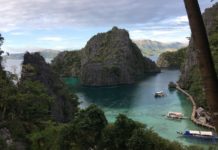
Where to Stay in Palawan (2021 • COOLEST Areas!)
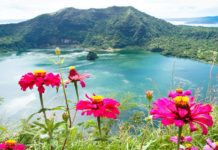
Where to Stay in Tagaytay (2021 • COOLEST Areas!)
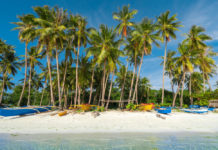
Where to Stay in Siquijor (2020 • COOLEST Areas!)

Best Airbnbs in Manila
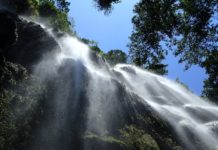
Best Airbnbs in Cebu
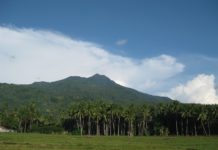
Where to Stay in Camiguin (2020 • COOLEST Areas!)

Best Airbnbs in La Union

How To Apply Schengen Visa For Finland

How To Get A Russian Visa For US Citizens

How To Apply For A Vietnamese Visa As A US Citizen?
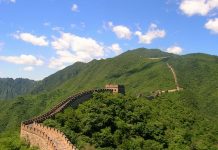
How To Apply Chinese Visa For US Citizen Guide
- Destinations
Chiapas Travel Guide: 13 Things To Do and See In Chiapas Mexico
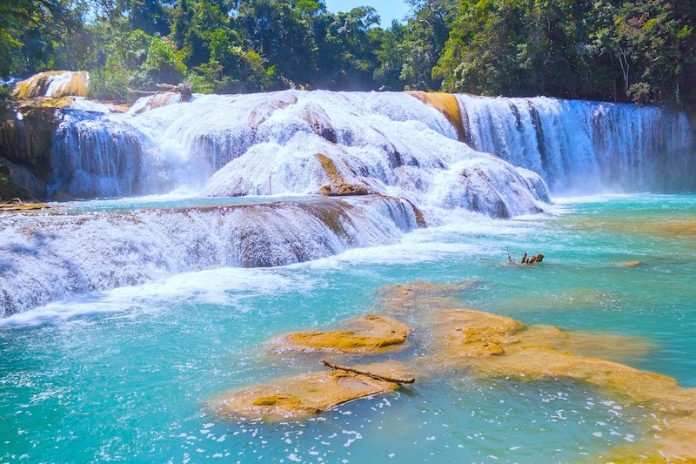
Chiapas is a state in Southern Mexico known for its mountainous highlands and dense rainforest dotted with colonial little towns and Mayan archeological sites. One of the least touristy places in Mexico , there are lots of things to do in Chiapas. This hidden gem has lots of things to offers for travellers. Chiapas is also a pretty compact state so it is easy to travel around the area.
Where is Chiapas?
Chiapas is located in the most southern part and on the Pacific coast of Mexico. It borders Guatemala on east and southeastern sides, Pacific ocean on the southwest and the states of Oaxaca, Veracruz, Tabasco, and Yucatan from west to northeast.
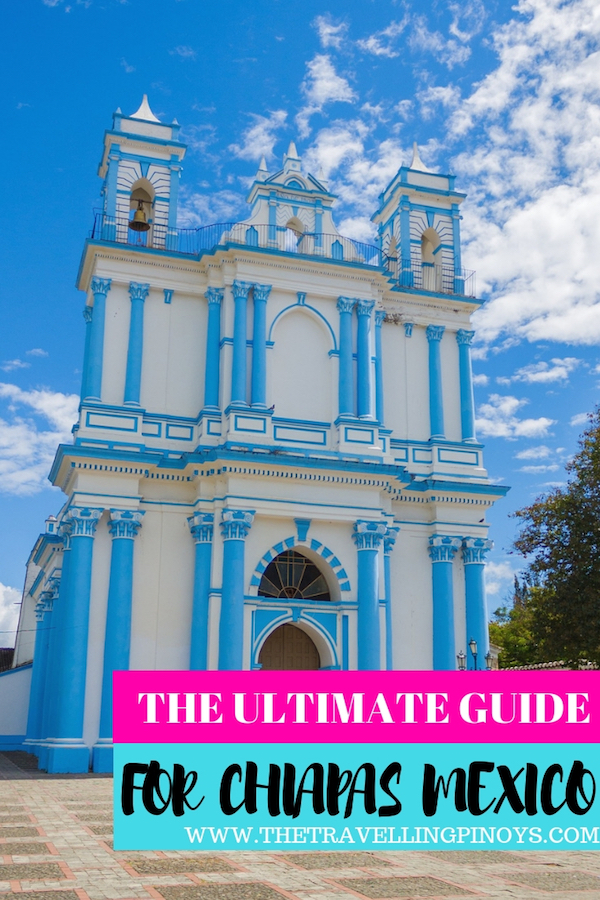
Flights to Chiapas Mexico
Chiapas has a small international airport that connects the state from other major cities of Mexico. Tuxtla Gutiérrez is about an hour by road to San Cristóbal de las Casas where the majority of the tourists stay. You can take a bus, rent a car or take a cab from the airport to your hotel.
As an alternative, you can also take a bus to Chiapas from Cancun, Merida , Playa Del Carmen and other major cities in Mexico.
Is Chiapas safe?
Chiapas is generally safe but as rule of thumb, be aware of your surroundings, take care of your personal belongings and don’t flash your money around.
Best places to visit and things to do in Chiapas
1. cañón del sumidero.
View this post on Instagram A post shared by Lawson (@lawson406) on Mar 24, 2018 at 7:17am PDT
Cañón del Sumidero or Sumidero Canyon is a deep natural canyon surrounded by the Sumidero Canyon National Park. It is a protected area and covers 4 towns in the state of Chiapas. This amazing canyon is best seen from the boats that leave the river from Chiapa de Corzo. Aside from the amazing landscape, this national park also houses endangered and threatened species such as river turtle and American crocodile.
For the prices of the tour from San Cristobal de las Casas, click here .
2. Palenque Mayan Ruins
View this post on Instagram A post shared by SBodur (@sittinsenegez) on Aug 12, 2018 at 1:14pm PDT
The archeological ruins of Palenque are one of the important sites for Mayans dating from about 600 AD to 800 AD. The ruins are located 6 km from the town of Palenque. Surrounded by thick vegetation, you can also bird watch and check out the falls in the area.
For the prices of the tour to the ruins of Palenque, click here .
3. Cascadas de Agua Azul
View this post on Instagram A post shared by World Shares (@worldshares) on May 25, 2018 at 5:26am PDT
Cascadas de Agua Azul is a waterfall 69 kilometers from Palenque. Located in the Municipality of Tumbalá, this waterfall is high in mineral content that results to its intense blue color. Its naturally-made swimming pools are a product of the series of limestone beds on the Xanil River. There are restaurants, and cabins in the area if you want to stay overnight. There are also hiking opportunities in the area.
4. San Cristóbal de las Casas
View this post on Instagram A post shared by San Cristóbal de Las Casas (@sancristobaldelascasas) on Jul 29, 2018 at 1:14pm PDT
San Cristóbal de las Casas is a little charming city known for its colorful buildings. There are several places that you can check out here; the town’s plaza, hilltop churches, museums, local markets, and the Mayan Villages.
San Cristobal is also a good base while in Chiapas. This little town has many tour operators that offer tours around Chiapas. And if that’s not enough, check out the restaurants for authentic Mexican foods.
To check the rates for the tours around the town, click here .
5. Laguna Miramar
Laguna Miramar is a freshwater lake surrounded by the lush forest of Lacandon Jungle . It is one of the most ecologically diverse areas of Mexico , containing around 20% of all species.
There are several things to do in Laguna Miramar if you want to take a break in nature. You can kayak, hike, bike, bird watch or explore the caves in the area.
6. Chiapa de Corzo
View this post on Instagram A post shared by Fernanda Miranda (@fermirandas) on Feb 12, 2018 at 7:13pm PST
Chiapa de Corzo is a laid-back town in Chiapas. It is known for its colonial architecture and it’s a good alternative for San Cristobal sans the crowd. There are beautiful churches and waterfront in the area worth checking. Chiapas de Corzo is also a good base to explore Sumidero Canyon and the archeological sites in the area.
7. San Marcos island, Boca del Cielo
Boca del Cielo is one of the few seaside villages in Chiapas and known for its laid-back beach. The island of San Marcos is the main point of interest and it’s short boat ride away from the main village. The island is only 300 meters wide but 10 km long. If you want a quiet beach, this is a good place to relax and just enjoy nature.
8. Las 3 Tzimoleras
View this post on Instagram A post shared by Espiritu Viajero De Mexico (@espiritu.viajero.mexico) on Sep 27, 2018 at 7:07pm PDT
Are you a fan of extreme adventures? Las 3 Tzimoleras is a private eco-ranch in Tzimol that offers canyoneering, rappelling, camping, horse-back riding, ATV and hiking. The main attractions are the 3 beautiful waterfalls in the area where the place is named after.
9. La Encrucijada Biosphere Reserve
La Encrucijada Biosphere Reserve in Chiapas is an ideal place to disconnect from everything and enjoy the nature. This Biosphere Reserve is a highly dynamic ecosystem where land, fresh water, and salt water meet. It is home to several threatened and endangered species including jaguar, spider monkeys, Rufus kingfishers, green parrots, and agami heron. The place is also home to several iguanas, crocodiles and several migratory birds who use the place as a stopover.
Grupo Turistico Costa Verde is a community-based cooperative tour company in El Castaño that offers a tour in La Encrucijada Biosphere Reserve.
10. Lagos de Montebello
View this post on Instagram A post shared by Iván Sánchez (@ivnovich) on May 6, 2018 at 12:44pm PDT
Lagos de Montebello is a national park in Chiapas, Mexico. It comprises 59 multicolored lakes, pine forest, and Mayan ruins. The lakes are famous for its different colors ranging from turquoise to dark green, and purple to reddish black. There are also cenotes and limestones caves in the area.
Lagos de Montebello is about 2.5 hours away from San Cristobal de las Casas. For the tour prices going to Lagos de Montebello, click here .
11. Volcán Tacaná
Volcán Tacaná is a UNESCO biosphere reserve and the second highest peak in Central America. If you like hiking, Tacana is considered one of the most interesting hikes in the region. Along the trail, you’ll find farming villages, ancient magma flows, and lush rainforest. It takes about 10 hours to reach the summit from Union Juarez, Chiapas.
12. El Chiflon
View this post on Instagram A post shared by I Like Mexico (@ilikemexico.com.mx) on Apr 4, 2018 at 11:39am PDT
El Chiflon is 5 waterfalls in Tzimol, Chiapas. Famous for its multi-staged cascades and turquoise waters, the waterfalls are surrounded by mountains and rainforest. The activities here range from enjoying a nature tour, scenic views, hiking, zip-lining, or simply relaxing.
For the tour prices going to El Chiflon, click here .
13. Zinacantán
San Lorenzo Zinacantán is a charming little village in the Chiapas Highlands. The Tzotzil Mayan people from Zinacantán are known for their colorful and embroidered tunics. If you want to see these colorful textiles and to help out the local community by buying them, they held an open-air market every Sunday.
How to get around Chiapas
View this post on Instagram A post shared by San Cristóbal de Las Casas (@sancristobaldelascasas) on Jul 14, 2018 at 8:04am PDT
There are many colectivos in the main towns. Colectivo is a small van that follows specific routes. This is the cheapest way to get around. Most colectivos have a sign on their windshield for their destinations. If you are not sure if they will pass to your destination, just ask them. Or you can either rent a car, take a taxi or join private tours.
Hotels in Chiapas
View this post on Instagram A post shared by Hotel Parador Margarita (@paradormargarita) on Dec 5, 2016 at 1:06pm PST
Chiapas is a very affordable place to travel. You can find decent hotels in Chiapas for less than $50 a night. Below are some of our favorites.
Hotel Posada El Zaguan is a small hotel in San Cristobal known for its nice decorated rooms and quiet location in the center of the city. It is an old house converted to a hotel but very comfortable and clean. To check their latest rates and reviews, click here .
Parador Margarita is known for its beautiful courtyard and traditional Mexican interior. Only 3 blocks from the main square, this place offers the best value in town. To check their latest rates and reviews, click here .
Puerta Vieja Hostel is a good hostel near the main square. If a hostel is your thing, this hostel offers a comfy bed with curtains for privacy, evening activities, tasty breakfast, and awesome social vibe. To check their latest rates and reviews, click here .
If you like what you read, please share! And also follow us through our Facebook, Twitter , Instagram and Pinterest accounts for updates. Keep on travelling, y’all!
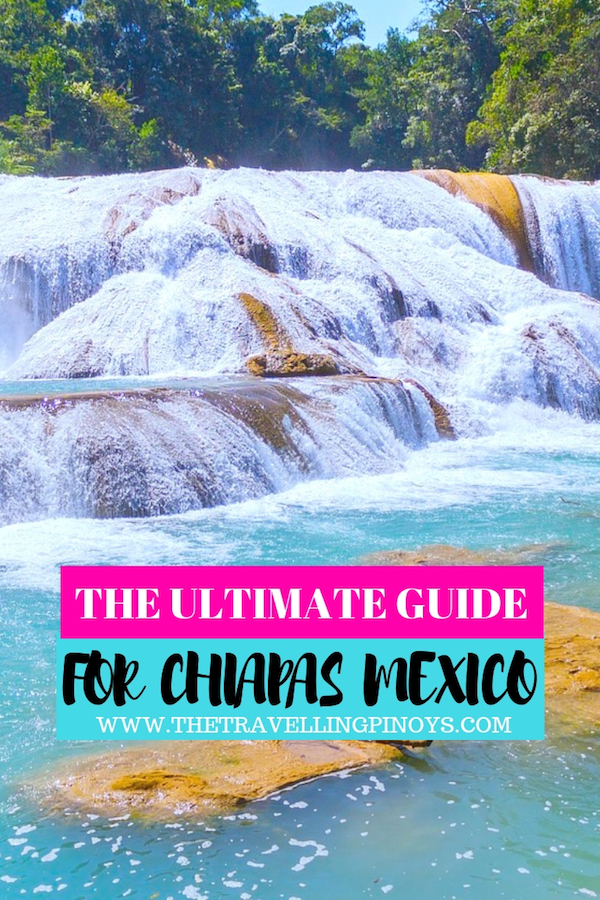
RELATED ARTICLES MORE FROM AUTHOR

12 Best Things To Do In Cancun, Mexico

12 Best Christmas Gift Ideas For Travelers
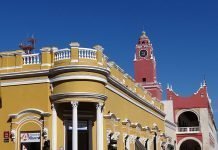
10 Best Things To Do in Merida, Mexico
Leave a reply cancel reply.
Save my name, email, and website in this browser for the next time I comment.
Popular Posts

How To Create Fake Return Ticket Without Editing Skills

11 Fun And Free Things To Do In Rome, Italy

8 Legit Online Jobs Using Mobile Phones Without Investment

20 Free Things To Do In Budapest, Hungary
Where to stay.
Type in the name of the city in the search bar to help you find accommodation from our selection that suits your needs and budget.
DON'T KNOW WHERE TO GO?
Type in the name of the country in the search bar to help you find our travel guides of the best destinations across the globe.
- Work With Us
Chiapas Travel Guide
Book your individual trip , stress-free with local travel experts
- roughguides.com
- North America
- Travel guide
- Itineraries
- Local Experts
- Travel Advice
- Accommodation
Plan your tailor-made trip with a local expert
Book securely with money-back guarantee
Travel stress-free with local assistance and 24/7 support
The company is very good, very friendly people work very seriously and responsibly, recommended.
Although they’re very different states – Chiapas is mountainous, and Tabasco is steamy lowlands – we group them together here, because travellers will usually pass through one or both of them en route to the Yucatán. Endowed with a stunning variety of cultures, landscapes and wildlife, Chiapas has much to tempt visitors, but the biggest draw is how many indigenous traditions survive intact, as well as how much pristine wilderness exists. The state of Tabasco , by contrast, is less aesthetically attractive than its neighbour, and its rural areas see almost no tourists. But its capital, Villahermosa, is a transit hub, and archeology buffs know the region as the heartland of the Olmecs, Mexico’s earliest developed civilization.
The State of Chiapas
Fiestas in chiapas and tabasco, palenque and around, brief history, tours around palenque, olmec culture, south of villahermosa, west of villahermosa, a taste of tabasco, villahermosa, parque-museo la venta.
Chiapas was administered by the Spanish as part of Guatemala until 1824, when it seceded to join newly independent Mexico. The state is now second only to Oaxaca in Indian population: about 25 percent of its four million-plus inhabitants are thought to be indígenas, of some fourteen ethnic groups, most of Maya origin. Tuxtla Gutiérrez is the capital, but travellers usually head straight for the colonial town of San Cristóbal de las Casas, tucked among the mountains in the centre of the state and surrounded by strongholds of Tzotzil and Tzeltal Maya culture. Ancient customs and religious practices carry on in these villages, yet as picturesque as life here may sometimes seem, villagers often live at the barest subsistence level, with their lands and livelihoods in precarious balance. These troubles helped fuel the 1994 Zapatista rebellion, and although that conflict has long subsided, many of the core issues concerning land use remain unresolved. Now illegal immigration is the bigger issue, and a heavy military presence focuses more on the Guatemalan border and the eastern half of the state.
In Tabasco , Villahermosa is the vibrant, modern capital, with a wealth of parks and museums, the best of which is Parque La Venta, where the original massive Olmec heads are on display. In the extreme southwest, bordered by Veracruz and Chiapas, a section of Tabasco reaches into the Sierra de Chiapas up to 1000m high. Here, in a region almost never visited by outsiders, you can splash in pristine rivers in Tapijulapa and explore the astonishing ruins of Malpasito, a city of the mysterious Zoque culture.
Tailor-made travel itineraries for Mexico, created by local experts
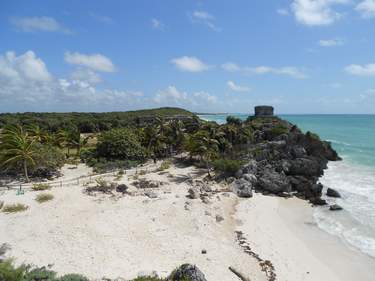
17 days / from 1590 USD
The Magic of the Yucatan and Mexico City
Explore the magic of the Yucatan Peninsula: from colonial towns like Merida to Archaeological sites like Uxmal and Calakmul, close to the Guatemala border, to beaches in Bacalar and Tulum, this itinerary shows you the real Yucatan before heading out to explore Mexico City.

15 days / from 1430 USD
Mexico City, Oaxaca & the Yucatan
Explore Central Mexico with its ever-busy capital Mexico City, visiting Teotihuacan and the famous museums in the city. Further on to Oaxaca City, the gateway to the Archaeological Site Monte Alban. Afterwards, continue to the white beaches of the Yucatan: Cancun and Isla Holbox await.
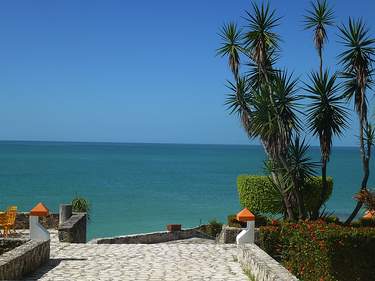
18 days / from 1735 USD
Fascinating Mexico: From Guanajuato to the Yucatan
Discover Mexico from fascinating San Miguel de Allende over busy Mexico City all the way to the Yucatan Peninsula. This itinerary combines public transportation with domestic flights to ensure you can make the most of discovering fascinating Mexico within two weeks.
The state of Chiapas rises from the Pacific coastal plain to the peaks of two ranges, the Sierra Madre de Chiapas and Los Altos de Chiapas. The climate, like the land, varies enormously. The coastal areas can be hot and muggy, while in highland towns like San Cristóbal de las Casas, nights can call for a jumper, even in August.
Chiapas has the greatest biological diversity in North America. Its forests are home to howler monkeys, red macaws and jaguars. Most visitors will likely see these animals only at the zoo in Tuxtla Gutiérrez, but you can venture into the heart of the huge Montes Azules Biosphere Reserve, a section of the largest remaining rainforest in North America. From Ocosingo you can make forays into its heart, Laguna Miramar, a truly isolated wilderness destination. There’s also cloud forest in the south of the state, protected in El Triunfo Biosphere Reserve. From the pretty colonial town of Comitán de Domínguez, the isolated Frontier Highway runs along the Guatemala border and past the beautiful lakes and hills of the Parque Nacional Lagos de Montebello.
On the east side of the mountains, at the edge of the Yucatán plain, the Classic-period Maya city of Palenque is one of Mexico’s finest ancient sites. The limestone hills in this area are pierced by exquisite waterfalls. Palenque is the best starting point for a trip down the Usumacinta valley, to visit the remote ruins of Bonampak and Yaxchilán, where you can cross to Guatemala by boat. This remote eastern half of Chiapas is also the home of the Lacandón Maya, who retreated into the forest when the Spaniards arrived, and shunned all outside contact until some fifty years ago.
The states of Chiapas and Tabasco are extremely rich in festivals. Local tourist offices should have more information on what’s happening.
- New Year’s Day (Jan 1). San Andrés Chamula and San Juan Chamula, both near San Cristóbal, have civil ceremonies to install a new government for the year.
- Día de San Sebastián (Jan 20). In Chiapa de Corzo, a large fiesta with traditional dances (including the masked parachicos) lasts several days, with a re-enactment on Jan 21 of a naval battle on the Río Grijalva.
- Día de la Candelaria (Feb 2). Colourful celebrations at Ocosingo.
- Fiesta de San Caralampio (Feb 11–20). In Comitán, celebrated with a parade to San Caralampio church, where elaborate offerings are made and dances held in the plaza outside.
- Carnaval (the week before Lent; variable Feb & March). Celebrated in hundreds of villages throughout the area, but at its most frenzied in the big cities, especially Villahermosa.
- Anniversary of the foundation of Chiapa de Corzo (March 1). Town fair with kiddie rides, live music and more.
- Semana Santa (Holy Week). Widely observed. There are particularly big ceremonies in San Cristóbal de las Casas. Ciudad Hidalgo, at the border near Tapachula, has a major week-long market.
- Feria de San Cristóbal de las Casas (April 1–7). Festival in San Cristóbal de las Casas celebrating the town’s foundation.
- Feria de Villahermosa (second half of April). Villahermosa hosts its annual festival, with agricultural and industrial exhibits and the election of the queen of the flowers.
- Día de San Pedro (April 29). Celebrated in several villages around San Cristóbal, including Amatenango del Valle and Zinacantán.
- Día de la Santa Cruz (May 3). Celebrated in San Juan Chamula and in Teapa, between Villahermosa and San Cristóbal.
- Día de San Isidro (May 15). Peasant celebrations everywhere – famous and picturesque fiestas in Huistán, near San Cristóbal. There’s a four-day nautical marathon from Tenosique to Villahermosa, when craft from all over the country race down 600km of the Río Usumacinta.
- Día de San Antonio (June 13). Celebrated in Simojovel, near San Cristóbal, and Cárdenas ( Tabasco ), west of Villahermosa.
- Día de San Juan (June 24). The culmination of several days’ celebration in San Juan Chamula.
- Día de San Cristóbal (July 17). Celebrated enthusiastically in San Cristóbal de las Casas and in nearby villages such as Tenejapa and Amatenango del Valle.
- Día de Santiago (July 25). Provokes widespread celebrations, especially in San Cristóbal de las Casas.
- Fiesta de Santo Domingo de Guzmán (last week of July, first week of Aug). Comitán’s fair, with concerts, rodeos and more.
- Fiesta de San Lorenzo (Sun nearest Aug 10). Celebrated in Zinacantán, with much music and dancing.
- Día de Santa Rosa (Aug 30). Celebrated in San Juan Chamula, when the locals don traditional garb and play Tzotzil harps and instruments outside the church.
- Independence Day (Sept 14–16). In Chiapas, independence celebrations are preceded by those in honour of the state’s annexation to Mexico.
- Día de la Virgen del Rosario (first Sun in Oct). Celebrated in San Juan Chamula and Zinacantán with Tzotzil folk music and dances. There’s also a special craft market.
- Día de los Muertos (Day of the Dead; Nov 1–2) The most captivating celebration of the Day of the Dead in Chiapas takes place in Comitán, where the cemeteries overflow with flowers and ornate altars.
- Día de la Virgen de Guadalupe (Dec 12). An important day throughout Mexico. There are particularly good fiestas in Tuxtla Gutiérrez and San Cristóbal de las Casas.
- Feria and cheese expo (Dec 17–22). Held in Pijijiapan, on the coast highway to Tapachula.
San Cristóbal de las Casas and around
The unofficial capital of highland Chiapas, San Cristóbal de las Casas – or Jovel, as many locals call it – is a major stop on the travel circuit. But the city, a clutch of tile-roofed houses huddled together in the bowl of a valley, has held up to tourism well. The modern edges of the city don’t make a good first impression, but the centre has none of this unchecked development: pedestrianized central streets foster a low-key social scene, with a cosmopolitan mélange of small bars and restaurants that thrive on a certain degree of leftist-revolutionary cachet. It’s also a great base for studying at one of the numerous Spanish-language schools.
San Cristóbal is also a prime base for exploring highland Chiapas, perhaps the most scenic part of Mexico. The densely forested mountains give way to dramatic gorges, jungle valleys flush with orchids, vividly coloured birds and raucous monkeys. In addition, the area’s relative isolation has allowed the indigenous population to carry on with their lives little affected by Catholicism and modern commercialism – and this includes clothing and craft traditions as brilliantly coloured and rich as the wildlife (though older people in particular maintain a traditional aversion to photography – be sure to ask permission first, and respect the answer). Villages to the west of San Cristóbal are generally Tzotzil-speaking, and those to the east speak Tzeltal, but each village has developed its own identity in terms of costume, crafts and linguistics.
Just 75km from Tuxtla, up the fast toll highway that breaks through the clouds into pine forests, San Cristóbal is almost 1700m higher, at 2100m. Even in August, the evenings are chilly – be prepared.
San Cristóbal was designed as a Spanish stronghold against an often hostile indigenous population – the attack here by Zapatista rebels in January 1994 was only the latest in a long series of uprisings. It took the Spaniards, led by conquistador Diego de Mazariegos, four years to pacify the area enough to establish a town here in 1528. The so-called Villareal de Chiapa de los Españoles was more widely known as Villaviciosa (Evil City) for the oppressive exploitation exercised by its colonists. In 1544, Bartolomé de las Casas was appointed bishop, and he promptly took an energetic stance in defence of the native population, playing a similar role to that of Bishop Vasco de Quiroga in Pátzcuaro. His name is still held in something close to reverence by the local population. Throughout the colonial era, San Cristóbal was the capital of Chiapas (at that time part of Guatemala), but lost this status in 1892 as a result of its continued reluctance to accept the union with Mexico.
Independent as the indigenous groups are, economic and social status in the mountains around the city lags far behind the rest of Mexico. This is in part due to the long duration of the encomienda system of forced labour, which remained in place here long after the end of Spanish colonialism. Many small villages still operate at the barest subsistence level. It’s worth noting that many indigenous communities and some local transport operators refuse to observe the time change in summer, preferring la hora vieja – the old time, or, as some savvy marketers have dubbed it, ‘Zapatista time’.
Kinta Jimultik in San Juan Chamula
During the annual Kinta Jimultik, the carnival (five days in Feb/March), representatives of all the villages in the area around San Cristóbal attend in traditional dress, marching in circles around Iglesia de San Juan Bautista and up to strategically placed crosses on the hillsides for the first four days. On the final day, which coincides with the last of the five ill-fated days of the Maya calendar, purification rites and fire-walking ceremonies take place in the plaza.
Visiting Chamula and Zinacantán
Almost everyone who stays in San Cristóbal visits the Tzotzil Maya villages of San Juan Chamula and San Lorenzo de Zinacantán. Both places have retained much of their unique cultural identity, including a religion that is a blend of traditional animist belief and Catholicism. The church at Chamula, in particular, is one of the most moving sights in Mexico.
It’s hard not to feel a sense of intrusion in these settings, where you may be a spectator at some intense religious ritual. Though an organized tour (very easy to arrange in San Cristóbal) can feel a little rushed and contrived, paradoxically it may make you feel like less of a gate-crasher – your presence in the church is made a bit more ‘official’, and the guides can explain some of the rituals. Tours depart at 9.30am, visit both villages and return to San Cristóbal around 2pm (there is little difference between companies).
If you do come on your own, you’ll feel less conspicuous in busy tourist times (Aug primarily), when there’s more of a Mexican tourist crowd, and a festive atmosphere. Inexpensive combis leave frequently for Chamula, Zinacantán and other villages from Edgar Robledo, just north of the market in San Cristóbal. There are no combis between Chamula and Zinacantán.
Visiting Chiapas: the legacy of the Zapatista rebellion
On January 1, 1994, the day that the North American Free Trade Agreement (NAFTA) came into effect, several thousand lightly armed rebels calling themselves Zapatistas (after early twentieth-century revolutionary Emiliano Zapata) occupied San Cristóbal de las Casas, the former state capital and Chiapas’ major tourist destination. The Zapatistas declared themselves staunchly anti-globalization, as well as opposed to local efforts by paramilitary groups to force indigenous people off the land. When the Mexican army recovered from its shock, it launched a violent counterattack, but international solidarity with the rebels soon forced the Mexican government to call a halt.
A ceasefire was agreed in 1995, and negotiations have continued over the years, as yet to conclude in a peace treaty. But eventually the issue of indigenous rights spread beyond the state’s borders, with large-scale disturbances in Oaxaca in 2006 making Chiapas seem relatively peaceful.
Twenty years on, the word “Chiapas” is still synonymous with violent revolution, but while the Zapatistas remain nominally “at war” with the Mexican government, the struggle is now largely ideological. The organization still runs its own municipalities, “caracoles”, on land seized from large landowners, and is largely left alone by the government. Tourists have always visited Chiapas with no problems other than delays due to army (and occasional Zapatista) checkpoints. The government is hostile to foreign Zapatista sympathizers, however, as their presence is considered an illegal influence on Mexican politics – so showing obvious Zapatista support in Chiapas can potentially lead to deportation.
Chiapa de Corzo and around
An elegant town of about seventy thousand, CHIAPA DE CORZO overlooks the Río Grijalva. As it’s barely twenty minutes east of Tuxtla, it makes a scenic alternative to the big city. It’s best known as the starting point for boat rides through the Cañón del Sumidero, and has quite a tourist scene during Mexican holiday times. The first Spanish city in Chiapas, it was officially founded in 1528, though it had already been an important centre in pre-Classic times. A stele found here bears the oldest Long Count date yet discovered, corresponding to December 7, 36 BC. The ruins that remain are on private land behind the Nestlé plant, at the far end of 21 de Octubre on the edge of town.
Cañon del Sumidero
On the highway east from Chiapa de Corzo towards San Cristóbal, you catch occasional glimpses of the Río Grijalva and the lower reaches of one of Mexico’s deepest canyons, with walls up to 1000m high in some places. Its rock walls are sprinkled with patches of bright green vegetation and odd rock formations, and carved out with shallow caves. A drive along the rim passes miradores (lookout points) that are unnervingly close to the edge – the most dramatic is at Las Coyotas. A boat ride up the river from Chiapa de Corzo is just as awe-inspiring, snaking through the whole gorge up to the Chicoasén Dam, which forms a lake at the northern end. Along the way are several waterfalls, including the remarkable El Árbol de Navidad, where calcareous formations covered in algae resemble a Christmas tree. Crocodiles and spider monkeys can often be spotted, along with pelicans, egrets and cormorants.
The one drawback to the water-level view from the boat is the undeniable amount of rubbish in the water that collects along the stagnant edges of the canyons. It’s periodically rounded up and disposed of, but it’s particularly bad during the rainy season, when the water is highest. But this shouldn’t deter you from seeing the greatest geological wonder in Chiapas.
Chiapa de Corzo boat tours
In Chiapa de Corzo, several companies offer boat trips down the canyon, all for around the same price. The first office you reach is Turística de Grijalva (961 600 6402), on the west side of the plaza. Or you can head straight south down the street to the embarcadero, where other companies operate. During Mexican vacation times, boats fill with the requisite ten people almost immediately, and it doesn’t matter where you buy your ticket. In slower times, it’s best to show up early and go from company to company to see which boat is closest to full. Tours last a couple of hours.
Comitán de Domínguez
The fourth-largest city in Chiapas, Comitán is 88km from San Cristóbal, southeast along the Panamerican Highway through scintillating scenery. Strategically poised on a rocky hillside, the city is surrounded by rolling farms and wild countryside in which orchids bloom. Once past the scrappier outskirts, the city has an elegant colonial core and a small but absorbing market, as well as a mellow timetable, with many businesses still observing an afternoon siesta. Travellers often pause here before heading for the border with Guatemala or deeper into the wild at the Lagos de Montebello or the Lacandón forest.
Once a major Maya population centre (the ruins of Bonampak and Yaxchilán and even Palenque are not far, as the parrot flies), Comitán was originally known as Balún Canán (“Nine Stars”, or “Guardians”), but was renamed Comitán (“Place of Potters” in Náhuatl) when it came under Aztec control. At 1560m, it’s not as high as San Cristóbal but can still be more refreshing than the sweltering lowlands; make sure your hotel has blankets.
The Usumacinta valley and the Frontier Highway
The Carretera Fronteriza (Frontier Highway) heads south from Palenque into the Lacandón forest and the Río Usumacinta, passing the two great Maya sites of Bonampak and Yaxchilán. The remote highway, which was paved only in 2000, to help delineate the border with Guatemala, has a reputation as a dangerous place. Although tourist convoys are no longer required, it’s still not advisable to drive the road after dark: there is a risk of robbery, a lot of wildlife, and few people to help you if you break down, have an accident or encounter any trouble. Army checkpoints are common, so make sure you have your passport. If you don’t visit with a group, try to pick up an information sheet on the Lacandón community from Casa Na-Bolom in San Cristóbal.
Relatively small compared with other ruined Maya cities, BONAMPAK is unique due to its fascinating murals, evocative memorials to a lost civilization. Bonampak’s actual buildings, most from the eighth century, are small and not the most spectacular, but the murals definitely make it worth the visit – there is very little like them elsewhere in the Maya world, and even in their decayed state, the colours are vivid and the imagery memorable.
Bonampak lies in the small biosphere reserve controlled by the Lacandón on the fringe of the much larger Montes Azules Biosphere Reserve. The site is quite isolated, and the only facilities are toilets and a couple of huts selling crisps and carved-wood souvenirs. The nearest settlement is the village of Lacanjá Chansayab, about 2.5km away – basic cabañas, rented by the Lacandón people, are available here.
The outside world first heard of Bonampak, meaning “painted walls”, in 1946, when Charles Frey, an American who’d dodged the draft by heading to the Mexican forest during WWII, was shown the site (but apparently not the murals) by Lacandón, who still worshipped at the ancient temples. The first non-Maya to actually see these murals – astonishing examples of Classic Maya art – was the American photographer Giles Healey, who arrived shortly after Frey’s visit, sparking a long and bitter dispute over exactly who was responsible for their discovery.
La Gran Plaza
After crossing an airstrip, you are at the northwest corner of the central plaza, 110m long and bounded by low walls that mark the edges of a former palace. In the centre of the plaza Stele 1 shows a larger-than-life Chaan Muan II, the last king of Bonampak, dressed for battle – at 6m, it is one of the tallest steles in the Maya world. You’ll encounter other images of him throughout the site.
The Acrópolis
Ahead of the Gran Plaza, atop several steep flights of steps, lies the Acrópolis. On the lower steps, more well-preserved steles show Chaan Muan with his wife, Lady Rabbit, preparing himself for blood-letting and apparently about to sacrifice a prisoner. From the highest point of the acropolis there’s an impressive sense that you’re surrounded by primeval forest – the Selva Lacandona – with just a small cleared space in front of you.
Edificio de las Pinturas
The highlight is the modest-looking Edificio de las Pinturas, halfway up the steps of the acropolis. Inside, in three separate chambers and on the temple walls and roof, the Bonampak murals depict vivid scenes of haughty Maya lords, splendidly attired in jaguar-skin robes and quetzal-plume headdresses, and equally well-dressed ladies; and bound prisoners, one with his fingernails ripped out, spurting blood. Dating to around 790 AD, these paintings show the Bonampak elite at the height of their power: unknown to them, the collapse of the Classic Maya civilization was imminent. Some details were never finished, and Bonampak was abandoned shortly after the scenes were painted.
Though you can’t enter the rooms fully, the vantage point inside the doorway is more than adequate to absorb what’s inside. No more than three people are permitted to enter at any one time and queues are possible, but you shouldn’t have to wait long. Having said that, time and early cleaning attempts have clearly taken their toll on the murals, and apart from a few beautifully restored sections, it takes some concentration and imagination to work out what you’re looking at.
In Room 1, an infant wrapped in white cloth (the heir apparent?) is presented to assembled nobility under the supervision of the lord of Yaxchilán, while musicians play drums, pipes and trumpets in the background. Room 2 contains a vivid, even gruesome, exhibition of power over Bonampak’s enemies: tortured prisoners lie on temple steps, while above them lords in jaguar robes are indifferent to their agony. A severed head rolls down the stairs and Chaan Muan II grasps a prisoner (who appears to be pleading for mercy) by the hair – clearly about to deal him the same fate. Room 3 shows the price paid for victory: Chaan Muan’s wife, Lady Rabbit, prepares to prick her tongue to let blood fall onto a paper in a pot in front of her. The smoke from burning the blood-soaked paper will carry messages to ancestor-gods. Other gorgeously dressed figures, their senses probably heightened by hallucinogenic drugs, dance on the temple steps.
A larger and more dramatic site than Bonampak, Yaxchilán was an important Classic-period centre. From around 680 to 760 AD, the city’s most famous kings, Escudo Jaguar (Shield Jaguar) and his son Pájaro Jaguar IV (Bird Jaguar), led a campaign of conquest that extended Yaxchilán’s sphere of influence over the other Usumacinta centres and made possible alliances with Tikal and Palenque. The buildings occupy a natural terrace above the river, with others climbing steep hills behind – a superb natural setting.
Not so many people make the trip here, which involves a ride in a narrow lancha with a tin roof for shade, down the broad, fast-flowing river with Mexico on one bank, Guatemala on the other. At the site, it’s easy to be alone in the forest with nothing but moaning howler monkeys around you. Giant trees keep the place shady, but nonetheless the jungle heat can be palpable – bring plenty of water, as there are no services at the ruins.
Pequeña Acrópolis
From the site entrance, the main path leads straight ahead to the Gran Plaza, but if you have the energy for climbing, it’s more rewarding to explore the wilder parts of the site first. Follow the branching path to the right that leads up the hillside to the Pequeña Acrópolis, a set of thirteen buildings. A lintel on the most prominent ruin, known as Edificio 42, depicts Escudo Jaguar with one of his warriors.

Templos del Sur
Walk behind Edificio 42 to find another narrow trail down through the jungle, over several unrestored mounds, until you reach a fork: to the right, the path climbs steeply once again until it reaches, in about ten minutes, Edificios 39 to 41, also called the Templos del Sur, 90m above the river level – buildings that probably had some kind of astronomical significance. High above the main forest, this is also a good spot to look for canopy-dwelling birds like parrots, though the trees also obscure any view.
Retrace your steps back to the main path, and continue on until it emerges at the back of Edificio 33, the most famous building at the site, also known as El Palacio. It overlooks the main plaza from a high terrace. The lintels here are superbly preserved, and inside one of the portals is a headless statue of Pájaro Jaguar IV. In ancient times the building was a political court; more recently, it served as a religious site for the Lacandón Maya.
Descending 40m down the stairs in front of the Palacio brings you to the long Gran Plaza. Turn back to look up at the Palacio: with the sun shining through the building’s roofcomb and tree roots cascading down the stairs, this is what you imagine a pyramid lost in the jungle should look like, especially if you’ve been brought up on Tintin.
To your left, just above the level of the plaza, Edificio 23 has a few patches of coloured stucco around its doorframes – just one patch of many well-preserved paintings and relief carvings on the lintels of buildings surrounding the long green lawn. Some of the very best works were removed in the nineteenth century and are now in the British Museum in London, but the number and quality of the remaining panels are unequalled at any other Maya site in Mexico. Many of these depict rulers performing rituals.
This can also be seen on Stele 1, right in the middle of the plaza, near the base of the staircase. It depicts Pájaro Jaguar IV in a particularly eye-watering blood-letting ceremony, ritually perforating his penis. Stele 3, originally sited at Edificio 41, has survived several attempts to remove it from the site and now lies at the west side of the plaza, where it shows the transfer of power from Escudo Jaguar to Pájaro Jaguar IV.
El Laberinto
Heading back to the entrance, be sure to pass through El Laberinto (The Labyrinth) at the plaza’s northeast corner, the most complex building on the site, where you can walk down through dim passages out onto the main path.
The Lacandón
You may already have encountered the impressively wild-looking Lacandón Maya, dressed in simple white robes and selling exquisite (and apparently effective) bows and arrows at Palenque. Until recently, they were the most isolated of all the Mexican Indian groups. The ancestors of today’s Lacandón are believed to have migrated to Chiapas from the Petén region of Guatemala during the eighteenth century. Prior to that the Spanish had enslaved, killed or relocated the original inhabitants of the forest.
The Lacandón refer to themselves as “Hach Winik” (true people). Appearances notwithstanding, some Lacandón families are (or have been) quite wealthy, having sold timber rights in the jungle, though most of the timber money has now gone. This change has led to a division in their society, and most live in one of two main communities: Lacanjá Chansayab, near Bonampak, a village predominantly made up of evangelical Protestants, some of whom are keenly developing low-impact tourist facilities; and Nahá, where a small group still attempts to live a traditional life, and where it is possible to arrange stays in local homes. The best source of information on the Lacandón in Chiapas is Casa Na-Bolom in San Cristóbal de las Casas, where you can find a manuscript of Last Lords of Palenque, by Victor Perera and Robert Bruce. Hach Winik, by Didier Boremanse, is an excellent recent study of Lacandón life and history.
Parque Nacional Lagos de Montebello
Fifty kilometres southeast of Comitán, along the border with Guatemala, the Parque Nacional Lagos de Montebello is beautiful wooded country studded with more than fifty lakes, sixteen of them very large, and many edged with small restaurants providing local food and basic cabañas. The combination of forest and water is reminiscent of Scotland or Maine, with many kilometres of hiking potential. For the less energetic, roadside viewpoints provide glimpses of various pools, lent different tints by natural mineral deposits and the angle of the sun. The lakes themselves are actually a series of cenotes (sinkholes) formed by the erosion of limestone over millions of years.
San Juan Chamula
Usually referred to as just Chamula, this is the closest indigenous village to San Cristóbal (10km), as well as the most frequently visited. It has a population of fifteen thousand or so, and more than ninety thousand in the surrounding municipality – despite the fact that thousands of residents have been cast out in recent decades for converting to Protestant faiths (these so-called expulsados create many of the crafts sold in San Cristóbal proper).
Chamula and the surrounding indigenous communities are essentially self-governing, and have their own schools, police force, and a small prison with two cells that are semi-open so as to expose the criminals to “public shame”. Over the centuries, the village has been far more resistant to change than neighbouring Zinacantán, putting up fierce resistance to the Spaniards from 1524 to 1528, then acting as the centre of a rebellion described as the second “Caste War” from 1867 to 1870, inspired by the uprising in the Yucatán.
On the north side of the plaza, the two hundred-year-old Iglesia de San Juan Bautista, painted a festive turquoise, is the epicentre of Tzotzil Maya religion in the area, and one of the most intensely sacred spots in all of Mexico. A visit can be a humbling and moving experience. The interior is glorious, the floor covered with pine needles and the light of a thousand candles casts an eerie glow. Lining the walls are statues of the saints adorned with offerings of clothes, food and mirrors (thought to aid communication with the laity), while above the altar, San Juan, patron saint of the village, takes pride of place. The customs practised inside the church incorporate aspects of Christian and Maya beliefs – each villager prays by clearing an area of pine needles and arranging a “message” in candles, and rituals frequently involve tearful chanting, singing, an array of fizzy drinks – locals believe expelling gas through burping helps to release evil spirits – and posh, a sugar-cane alcohol. Eggs, bones and live chickens – which are sacrificed in the church and later eaten or buried – are also used in these ceremonies. There are no priests, masses or marriages here, only baptisms, and the church is open 24 hours (though tourists are welcome only during daylight). It plays a central role in healing ceremonies.
In keeping with Chamula's very traditional atmosphere, photography is generally not appreciated, and it is explicitly banned inside the church.
Chiapas on a plate
While the cuisine of Chiapas is not as famous as that of neighbouring Oaxaca, you can still eat very well while visiting the state. Dishes to look out for include pepita con tasajo (sliced beef marinated in chilli and herbs), tamales flavoured with local herbs like hoja santa and chipilín, pork in a pipian (pumpkin seed) sauce, and (in the coastal regions) dried shrimps in a tomato sauce. The city of San Cristóbal de las Casas is known for its Spanish-style cured hams and sausages, while the area around Ocosingo produces a good range of artisanal cheeses, and Chiapa de Corzo is famous for its suckling pig dishes. In terms of drinks, as well as excellent coffee from the state’s highland regions, there are some more unusual beverages to sample, such as tazcalate (a blend of toasted corn, chocolate and cinnamon) and pozol (a sugary corn and chocolate drink).
Set in thick jungle buzzing with insects, the ancient Maya ruins of Palenque are some of Mexico’s finest Maya sites: less crowded than Chichén Itzá, larger than Uxmal, and with the most spectacular setting. It is a relatively small site – you can see everything in a morning – but a fascinating one, strongly linked to the lost cities of Guatemala while displaying a distinctive style.
Nine kilometres east of the ruins, the rather helter-skelter town of Palenque functions as the base for exploring the ruins and the waterfalls in the nearby hills. With every facility a visitor might need, it’s lively enough, but it has no real intrinsic appeal. As there are a number of excellent camping sites, cabañas and hotels near the ruins, you may prefer not to stay in town at all.
The ruins are located in the Parque Nacional de Palenque, the border of which is just after El Panchán accommodation and restaurant site. The main road first passes a well-stocked artesanía shop, a café and the excellent site museum. You can enter at the gate across the road, hiking up to the main part of the site via the waterfalls trail, but most people will press on to the main site entrance, at the top of the hill another 2km up a winding road. Near this main entrance, there’s a small café and numerous souvenir stalls selling drinks, as well as toilets and some expensive lockers.
The ruins themselves bear a closer resemblance to the Maya sites of Guatemala than to those of the Yucatán, but ultimately the style here is unique – the towered palace and pyramid tomb are like nothing else, as is the abundance of reliefs and inscriptions. The setting, too, is remarkable. Surrounded by jungle-covered hills, Palenque is right at the edge of the great Yucatán plain – climb to the top of any of the structures and you look out over an endless stretch of low, pale-green flatland. If you arrive early enough in the day, the mist still clings to the treetops and the howler monkeys are roaring off in the greenery.
Founded around 100 BC as a farming village, it was four hundred years before Palenque began to flourish, during the Classic period (300–900 AD). Towards the end of this time the city ruled over a large part of modern-day Chiapas and Tabasco, but its peak, when the population is thought to have numbered some one hundred thousand, came during a relatively short period in the seventh century, under two rulers: Hanab Pakal (Jaguar Shield) and Chan Bahlum (Jaguar Serpent). Almost everything you can see (and that’s only a tiny, central part of the original city) dates from this era.
Touts offer a huge variety of tours to local attractions in the vicinity of Palenque, above all the waterfalls at Agua Azul and Misol-Há and the ruins of Bonampak and Yaxchilán. There are also trips to Tikal in Guatemala or to Toniná, and adventure tours, including kayaking and horseriding. Be sure to check what’s included in the price – entrance fees, meals and English-speaking guides most importantly. One of the more reliable agents is Viajes Na Chan Kan (916 345 2154, [email protected] or [email protected]), on Hidalgo at Jiménez.
Few visitors view the state of Tabasco as more than a transit corridor for Palenque. Crossed by numerous slow-moving tropical rivers on their way to the Gulf, the low-lying, humid region is the homeland of the ancient Olmec, Maya and Zoque cultures. You can see the legendary Olmec stone heads in a beautifully done exhibition in state capital Villahermosa, a city otherwise often maligned for its concrete and chaos, yet boasting a historic, lively and pedestrian-friendly downtown.
Hwy-180 runs close to Tabasco’s coast, alternating between estuaries and sand bars, salt marshes and lagoons. Though the sands are a bit insect-ridden, and the views often marred by the offshore oil industry, they do have the virtue of being frequented only by locals, if at all. Much of inland Tabasco is very flat, consisting of the flood plains of a dozen or so major rivers. Boat trips along the Grijalva and the Usumacinta are the best way to glimpse remote ruins and abundant birdlife. You can also travel by river into the Petén in Guatemala, from the far eastern corner of the state.
In the far south of the state, the foothills of the Sierra Puana offer a retreat from the heat and humidity. Waterfalls spill down from the mountains, and a few small spas (balnearios) have developed. Village tracks provide some great hiking trails too.
Throughout the Maya period, Tabasco was a natural crossroads, its great rivers important trade routes to the interior. But its local Maya communities were relatively unorganized, and when Hernán Cortés landed at the mouth of the Río Grijalva in 1519, he easily defeated the Chontal Maya. But the town he founded, Santa María de la Victoria, was beset first by indigenous attacks and then by pirates, eventually forcing a move to the present site and a change of name to “Villahermosa de San Juan Bautista” in 1596.
For most of the colonial period, swampy Tabasco remained a relative backwater. Independence did little to improve matters, as local leaders fought among themselves, and it took the French invasion of 1862 to bring some form of unity, though Tabasco offered fierce resistance to this foreign intrusion. The industrialization of the country under dictator Porfirio Díaz passed Tabasco by, and even after the Revolution it was still a poor state, dependent on cacao and bananas. Though Tomás Garrido Canabal, Tabasco’s socialist governor in the 1920s and 1930s, is still respected as a reformer whose laws regarding workers’ rights and women’s suffrage were decades ahead of the rest of the country, his period in office was also marked by intense anticlericalism. Priests were killed or driven out (a process vividly brought to life in Graham Greene’s The Power and the Glory; he covers the aftermath in The Lawless Roads), all the churches were closed, and many, including the cathedral in Villahermosa, torn down.
The region’s oil, discovered in the 1930s but not fully exploited until the 1970s, provided the impetus to bring Tabasco into the modern world, enabling capital to be invested in the agricultural sector and Villahermosa to be transformed into the cultural centre it is today.
Relatively little is known about the Olmec culture, referred to by many archeologists as the mother culture of Mesoamerica. Its legacy, which includes the Long Count calendar, glyphic writing, a rain deity and probably also the concept of zero and the ball-game, influenced all subsequent civilizations in ancient Mexico. The name Olmec comes from Nahautl (the language of the Aztecs) word “Olmecatl”, meaning “rubber people”; this is a reference to the Olmecs practice of extracting latex from trees growing in the region and mixing it with the sap of local vines to produce rubber.
The fact that the Olmecs developed and flourished in the unpromising environment of the Gulf coast swamps 3200 years ago only adds to their mystery. After emerging around 1200 BC, and eventually spanning across northern Central America and much of central Mexico, the civilization began to decline around 400 BC, and over the subsequent thousand years the plains were gradually absorbed by the great Maya cities to the east, an influence most notable at Comalcalco.
South of Tabasco's capital, the foothills of the Sierra de Chiapas are heavy with banana plantations, while higher up, thick forest remains and the roadside pools and wetlands are as wild as ever. The highlights of this region include numerous caves and grottoes, as well as several accessible spas, created by tectonic activity, in the main town of Teapa.
Fifty-nine kilometres to the south of Villahermosa, the small, friendly town of TEAPA is a lovely base for visiting nearby caves and hot-spring spas. The springs are sulphuric but soothing, and popular on weekends; during the week, they’re often empty. At the spectacular Grutas del Coconá, 4km northeast of Tepea, eight chambers are open to tourists, as is a small museum displaying pre-Hispanic artefacts found inside. A stroll through takes about 45 minutes. The caves are surprisingly humid, and lined with oddly shaped stalactites and stalagmites.
To escape the humidity of the lowlands, head up the valley of the Río Oxolotán to the Sierra Puana, Tabasco’s “hill country”. This is an extraordinarily picturesque area, with quiet colonial towns set in beautiful wooded valleys, and a turquoise river laden with sulphur. The main destination is TAPIJULAPA, a beautiful whitewashed village with narrow cobbled streets that could, at first glance, be mistaken for a mountain town in Spain. Dubbed a Pueblo Mágico by the federal government, it’s celebrated for wicker craftspeople, who have workshops all over town, and it’s the starting point for a beautiful natural park. From the edge of the village, the main street, López Portillo, leads downhill to a pretty little plaza. At weekends, local women serve exceptionally delicious tamales and other inexpensive food in the large civic building.
The main attractions west of the city is a series of isolated ruins, the most famous being the Olmec site at La Venta, although, with the best pieces now residing in Villahermosa, the site itself is a bit empty. The little-known ancient Zoque people also flourished in this area, and the ruins at Malpasito reflect that unique culture.
This small town on the border between Tabasco and Veracruz, 128km from Villahermosa, would be of little interest were it not for the nearby archeological ruins. This ancient city, the name of which remains unknown, was occupied by the Olmecs between 1200 and 400 BC and is regarded as their most important centre. Most of the finest pieces found here, including the famous basalt heads, were transferred to Villahermosa’s Parque La Venta in 1957 and 1958. The museum at the entrance to La Venta itself (800m north of the bus station) has a model of the grounds, as well as glass cases with rather confusing displays of unlabelled pottery.
The site itself retains some replicas of the sculptures and heads now displayed in Villahermosa, and a few weathered steles and monuments, but the highlight is the huge grass-covered mound, about 30m high, clearly a pyramid, with fluted sides believed to represent the ravines on the flanks of a sacred volcano. The climb up is worth the effort for the views and the breeze. Paths below take you through the jungle – fascinating for its plants and butterflies, but haunted by ferocious mosquitoes.
Some 100km southwest of Villahermosa, between the borders of Veracruz and Chiapas, a narrow triangle of Tabasco thrusts into mountains known as the Sierra Huimanguillo. These rugged peaks are not that high, only up to 1000m, but in order to appreciate them fully, you’ll need to do some hiking: not only to canyons and waterfalls, but also to the ruins of MALPASITO, with their astonishing petroglyphs.
The post-Classic Zoque ruins are overshadowed by jagged, jungle-covered mountains, the highest point in Tabasco. Though the ruins bear a certain resemblance to Palenque, the Zoque were not a Maya group – one of the few facts known about them. On the way into the site you pass terraces and grass-covered mounds, eventually arriving at the unique ball-court. At the top of the stone terraces forming the south side of the court, a flight of steps leads down to a narrow room, with stone benches lining either side. Beyond this, and separate from the chamber, is a square pit more than 2m deep and 1.5m wide. This room may have been used by the ball-players to make a spectacular entrance as they emerged onto the top of the ball-court.
But the most amazing features of this site are its petroglyphs. More than three hundred have been discovered so far: animals, birds, houses and more, etched into the rock. One large boulder is covered in enigmatic flat-topped triangles surmounted by a square or rectangle, and shown above what look like ladders or steps – stylized houses or launching platforms for the chariots of the gods, depending on your viewpoint.
The food of Tabasco state relies heavily on seafood and tropical fruits such as pineapple and passion fruit, which are both cultivated here, along with coffee and cacao. A freshwater fish, the skinny pejelagarto, is particularly prized: the green-fleshed, pike-like fish is usually barbecued and served with chile, lime and a salsa of deadly, caper-size chiles. Other typical dishes to look out for include smoked oysters, coconut tortillas, banana bread, and chirmol, a rich mole sauce flavoured with pumpkin seeds and local herbs that works particularly well with fish. In terms of drinks, hot (or cold) chocolate and iliztle, a sugar-cane alcohol flavoured with pear or peach, are popular. But note that Tabasco Sauce isn’t actually a speciality: although Tabasco peppers are named after the state, they don’t grow here, and the celebrated condiment is in fact an American product made from peppers grown in Louisiana.
Huge, hot, noisy and brash as only a Mexican city can be, VILLAHERMOSA – or “Beautiful Town” – could at first sight hardly be less appropriately named. For travellers in this area, though, it’s something of an inevitability, as a junction of road and bus routes. But it’s also a distinct place, and it can grow on you. Quite apart from the sudden vistas of the Río Grijalva’s broad sweep, there are attractive plazas, quiet old streets, impressive ultramodern buildings and several art galleries and museums.
Most sights are in or around the pedestrianized downtown core (called the Zona Luz ), though some tourist services are 2km or so northwest, in the modern commercial centre called Tabasco 2000. Between the two areas are the spires of a half-built Gothic cathedral , begun in 1973 – a fine symbol of the city’s new-old aesthetic.
A visit to this archeological park and museum 2km northwest of the centre could easily fill half a day. The most important artefacts from the Olmec site of La Venta, some 120km west of Villahermosa, were transferred here in the late 1950s, when they were threatened by Pemex oil explorations.
Just inside the entrance, a display familiarizes you with what little is known about the Olmecs, as well as the history of the discovery of La Venta. The most significant and famous items in the park are the four gigantic basalt heads , notable for their African-looking features. They’re also extraordinary because the material from which they were hewn does not occur locally in the region, so they must have been imported from what is now Veracruz, Oaxaca or Guatemala. Additionally, there’s a whole series of other Olmec stone sculptures.
To conjure a jungle setting, monkeys, agoutis (large rodents) and coatis (members of the racoon family) wander around freely, while crocodiles, jaguars and other animals from the region are displayed in sizeable enclosures. At night, there’s a rather good sound-and-light show that involves strolling from monument to monument, dramatically illuminated amid the shadowy trees. Parque La Venta is actually set on the edge of the much larger Parque Tomás Garrido Canabal, stretching along the shore of an extensive lake, the Laguna de Ilusiones . There are walking trails here and boats to rent, or you can climb the Mirador de los Águilas, a tower in the middle of the lake.
Discover more places in Mexico

- Travel Guide Morocco
- Travel Guide Namibia
- Travel Guide South Africa
- Travel Guide China
- Travel Guide India
- Travel Guide Indonesia
- Travel Guide Japan
- Travel Guide Laos
- Travel Guide Malaysia
- Travel Guide Myanmar (Burma)
- Travel Guide Nepal
- Travel Guide Philippines
- Travel Guide Singapore
- Travel Guide South Korea
- Travel Guide Sri Lanka
- Travel Guide Taiwan
- Travel Guide Thailand
- Travel Guide Australia
- Travel Guide Fiji
- Travel Guide New Zealand
- Travel Guide Belize
- Costa Rica Travel Guide
- Travel Guide Cuba
- Travel Guide Guatemala
- Travel Guide Honduras
- Travel Guide Jamaica
- Travel Guide Nicaragua
- Travel Guide Panama
- Travel Guide Puerto Rico
- Travel Guide Trinidad and Tobago
- Travel Guide Albania
- Travel Guide Austria
- Travel Guide Belgium
- Travel Guide Bosnia-Herzegovina
- Travel Guide Bulgaria
- Travel Guide Cyprus
- Travel Guide Czechia (Czech Republic)
- Travel Guide Denmark
- Travel Guide England
- Travel Guide Estonia
- Travel Guide Finland
- Travel Guide France
- Travel Guide Germany
- Travel Guide Greece
- Travel Guide Hungary
- Iceland Travel Guide
The Rough Guides to Mexico and related travel guides
In-depth, easy-to-use travel guides filled with expert advice.

Find even more inspiration here

Planning your own trip? Prepare for your trip
Use Rough Guides' trusted partners for great rates

written by Andy Turner
updated 26.04.2021
Ready to travel and discover Mexico?
Get support from our local experts for stress-free planning & worry-free travels.
- Where to stay
- Travel advice
A Chiapas Road Trip: The Ultimate Itinerary
Many people who visit Mexico have probably never heard of Chiapas. I hadn’t until I visited nearby Oaxaca and started planning our onward journey. Just what is there to do in Chiapas? After a little digging, it became clear that Chiapas is known for two things. Fantastic waterfalls and incredible Mayan ruins. It also became clear that to truly experience everything this diverse state had to offer a road trip of Chiapas was in order.
So we set out on our Chiapas road trip adventure to see if Chiapas was everything it was cracked up to be. We were not disappointed. A stunning state overflowing with waterfalls, deep cenotes, soaring mountains, stunning gorges, and lush green jungles. Hidden amongst this spectacular backdrop are crocodiles, spider monkeys, exotic birds, and the ruins of an ancient and powerful Mayan civilization. Grab your whip and your fedora and let’s get cracking on your own Chiapas road trip.
Helpful Resources We Trust and Love
Accommodation – Booking.com Transport – Bookaway Car Rental – Discover Cars Travel Insurance – World Nomads / SafetyWing Global Health Insurance – SafetyWing Experiences – Get Your Guide
Is Driving in Chiapas Safe?
Before you set out on your own Chiapas road trip, you are probably wondering if it is safe to drive in Chiapas. Well, it can be.
Driving in Chiapas is perfectly safe as long as you take the necessary precautions. While many areas of Chiapas are perfectly safe to travel through there are some parts of Chiapas that are “self-governed”. There is an ongoing “war” between the indigenous population and the government. Currently, there is no military action but the police nor the military are active in these areas.
In these areas, you will often time see children with ropes over the road requesting money or in one case a whole community with nails hammered into a board requesting money. If you were to drive through the rope and injure anyone, it is possible for the local government to detain you using their own customs. If this were to happen, the Mexican government would not intercede.
These types of activities are most frequently encountered on the road between Palenque and San Cristobal de las Casas. If you do plan to drive this way, it is advisable to only drive during the day and take plenty of change to give to children and communities along the way. We also recommend buying a bag of candy to hand out to the children as an incentive for them to drop the rope and let you continue. A small price to pay for your freedom.
By taking these necessary precautions, driving in Chiapas is perfectly safe. We spent a month driving through the jungles of Chiapas and never once felt unsafe while driving.
The Two-Week Chiapas Road Trip Itinerary
Exploring Chiapas is no easy feat, with rugged mountainous terrain covered in thick jungle, and often large distances between the sights and attractions. Therefore, driving this state is the perfect way to enjoy it at your own pace, without the expense or rigidity of organized tours. Whether you rent a car in Tuxtla or bring your own (like us).
To properly explore Chiapas by car you need at least two weeks. We spent a month in Chiapas and felt like we only scratched the surface. The distances in between cities and attractions may seem short initially, but when you factor in topes (Mexican speed bumps), the occasional police check, and winding mountain roads, the time spent driving is not commensurate with the kilometers.
Here is our Chiapas two-week itinerary for exploring this natural paradise. A list of all of the best places to visit in Chiapas, what to do in Chiapas, and other tips and tricks that we learned on this road trip of Chiapas.
Day 1- 3: Tuxtla Gutiérrez and Chiapa de Corzo
The starting point for your Chiapas road trip will most likely be the capital city of Tuxtla Gutiérrez as it boasts the state’s only international airport. As we made the drive from Oaxaca, this was also our first stopping point.
READ MORE: The Best Beaches in Oaxaca: A Vanlife Guid e
While Tuxtla Gutiérrez is a large, bustling capital city, there are plenty of outdoor adventures to be had nearby if you choose to make this your home base for a few days. Here are a few options for what to do in Tuxtla.
Cascada El Aguacero
Start your nature adventure off with Cascada El Aguacero, an hour’s drive west of the city. This federally protected waterfall is located in the El Ocote Biosphere Reserve. To reach the waterfall, you must make your way down the 700-step, concrete staircase which is suitable for all travelers. The journey down should take approximately 20 minutes until you reach the beautiful cascading falls. The return journey is a bit more grueling as you climb back up to the top of the falls. Take snacks or lunch and spend the day soaking up the Mexican sun before heading back to Tuxtla for the evening.
Useful Information
- Entrance Fee: $36 pesos per person
- Distance: 56 kilometers (~ 1h) from Tuxtla Gutiérrez
The Sumidero Canyon
The Sumidero Canyon can be visited in two different ways, and we recommend taking advantage of both.
The Mirador
If you have your own wheels, grab breakfast to take with you and enjoy it at the final mirador overlooking the stunning Sumidero Canyon. If you go just as the gates open there will be few (if any) tourists imposing on your viewing space.
After breakfast, head back down the winding road and stop at the remaining five miradors. The cost to enter is $37 pesos and there are toilets available at the last view point or “mirador”.
Pro-tip: The views over the Sumidero Canyon will make you want to use your drone for some great aerial footage. Be careful if you do this as drones are illegal for tourists in Mexico. While we did not see any police nearby, we have seen tourists stopped in Mexico for the use of a drone.
After enjoying the vantage point of the Sumidero Canyon, take a boat ride to further explore this monumental canyon. Boat rides depart from Chiapas de Corzo throughout the day and cost $230 pesos. Take advantage of the discount on the boat ride when you show proof of payment from your previous entrance at the mirador (must be the same day).
From this vantage point, you will be able to marvel at the 1,000-meter-high walls, spot wildlife such as the American crocodile and the elusive spider monkey, and visit small caves and rock formations. The return trip should take approximately two (2) hours. Make sure to bring plenty of sun protection. The boats are uncovered and can be exposed to the sun depending on the time of day.
- Mirador: $36 pesos
- Canyon: $236 pesos ($200 pesos if you show a same-day entrance ticket for mirador)
- Mirador: Al Sumidero, Las Granjas
- Cañón Del Sumidero
Chiapa de Corzo
- Mirador: 8:00 am – 5:00 pm, closed Tuesdays
- Canon Del Sumidero: 8:00 am – 5:00 pm
- Cahuare: 8:00 am – 4:00 pm
- Chiapa de Corzo: 9:00 am – 4:30 pm
Known as the heart of Chiapa, the town of Chiapa de Corzo is culturally significant not only because it is the starting point for visits to the Sumidero Canyon, but also because it holds one of Mexico’s most lauded festivals. While the city is charming in its own right, visiting during the Fiesta Grande in January is a remarkable experience. The streets come alive with vendors and performers leaving a festive experience not to be missed.
- Distance: 14 kilometers (~20 min) from Tuxtla Gutiérrez
READ MORE: 5 Things to Know About the Fiesta Grande Chiapa de Corzo
El Chorreadero Falls (Cascada de Chorreadero)
Make your last outdoor adventure near Tuxtla Gutiérrez a visit to El Chorreadero Falls. When we visited, the waterfall was just a drizzle, but I can imagine during the rainy season it would be impressive.
The waterfall is fed through an underwater river that descends into a series of pools from a cave. Tours can be arranged to take you deep into the heart of the cave and include adventure activities like rappelling, jumping, scrambling, and more.
The cost to enter is $25 pesos per person. We asked to camp at the gates of the falls (only in a parking lot) and were allowed with no problems or additional payments.
- Entrance Fee: $25 pesos per person
- Address: Carretera Federal Libre a San Cristorbal Km 24+600 Juan de Grijalva
- Hours of Operation: 8:00 am – 6:30 pm
- Distance: 12 kilometers (~ 20m) from Chiapa de Corzo
Day 3 – 4: El Chiflon and the Cenotes of Chiapas
El chiflon waterfall (cascada).
The next stop on your road trip in Chiapas is one of our favorite experiences in Chiapas. And, what we think is the most impressive waterfall in Chiapas (and maybe all of Mexico). El Chiflon is a series of waterfalls culminating at the Velo de Novia (Bride’s Veil) which reaches a height of 120 meters. These waterfalls are not only impressive because of their height and thunder, but also because of the turquoise blue color of the San Vincent River. This personally was my favorite part of visiting these falls. The watercolor is so mesmerizing that it almost looks fake. Like someone dropped a whole lot of water coloring into the river! Soak up the sun, take a dip in the stunning river, and enjoy one of Chiapas’ greatest gifts.
The cost to enter is $50 pesos per person. You can also camp in the parking lot overnight for an additional $70 pesos per car. Plus, it allows you to be the first to enter the falls beating the crowds and busloads of tourists.
- Entrance Fee: $50 pesos per person
- Camping Fee: $70 pesos per car
- From El Chorreadero Falls: 140 kilometers (~ 2h 45m)
- From Tuxtla Gutiérrez: 130 kilometers (~ 2h 30m)
READ MORE: The Best Waterfalls in Chiapas
Cenote Chucumaltik
With the rest of your afternoon, head over to Cenote Chucumaltik just thirty minutes down the way. If you don’t know what a cenote (pronounced say-NO-tay) is, you are not the only one. I had to look this one up too. A cenote is a natural pit, or sinkhole, resulting from the collapse of limestone bedrock that exposes groundwater underneath. Cenote Chucumaltik, in particular, reaches depths of 60 meters and is a stunning blue color. Plus if you time it right, there will be no one around to bother you.
Entrance to the cenote is $30 pesos but you can stay as long as you want. Remember to bring plenty of water as there are no vendors or restaurants here. We also recommend grabbing some lunch and enjoying a picnic at Cenote Chucumaltik. Lastly, make sure to pack your snorkel gear as the scenery under the water is equally as impressive.
- Entrance Fee: $30 pesos per person
- Distance: 22 kilometers (~30m) from El Chiflon
Pit Stop: Uninajab
If you have more time, further down the road from Cenote Chucumaltik is Uninajab. Uninajab is a community with a series of freshwater pools overlooking the valley and La Angostura. It is a great place to visit if time permits. The cost to enter is $25 pesos per person, but you can stay here overnight for no additional fees.
End the day in the charming town of Comitan to rest up and explore the next day. Walk the old town streets, explore the lively main town square, and take in the traditional Mexican culture. We recommend dining at Ta Bonitio for the best meal in the city! Or, if you are looking for something more authentic head, over to El Puerquito for delicious carnitas tacos!
- Distance: 30 kilometers (~40m) from Cenote Chucumaltik
Tenam Puente
The Tenam Puente ruins are small in comparison to some of the other ruins located throughout Mexico but are just as fascinating. The overgrowth from trees and vegetation that provide a canopy over the ruins is unique. Like a bygone era, these ruins that were once forgotten now have a renewed sense of beauty.
We were not charged the entrance fee but be prepared to pay $40 pesos per person for entry which gives you access to the ruins and a small museum.
- Entrance Fee: $40 pesos per person (or free if you are luckily like us)
- Address: A13Km al Suroeste de Comitan Carretera Federal Km190 rumbo a La Trinitaria
- Hours of Operation: 8:00 am – 5:00 pm
- Distance: 15 kilometers (~30m) from Comitan
Day 5: Chiapas’ Freshwater Lagoons
Lagos de colon.
Lagos de Colon is a hidden gem of Comitan, along the Chiapas road trip adventure. Located close to the Guatemalan border, Lagos de Colon is definitely not to be missed. The series of small waterways are filled with crystal blue water surrounded by lush, green jungle. You won’t find many (if any) international tourists here as Lagos de Colon caters primarily to the rural communities and nearby towns. This is evidenced by the flocks of locals that descend upon the lakes to enjoy the cool, refreshing water for family picnics and gatherings.
Follow the road towards the El Lagartero Ruins to explore not only the ruins but the labyrinth of water bodies hidden beneath the tree canopies. This is also an excellent location to camp overnight as the locals leave at 5:00 pm and the parking area under the trees is quiet during the evening.
The entrance fee is $25 pesos per person which includes entry into the El Lagartero Ruins. Palapas can be rented for an additional $100 pesos per day and there are restaurants and tiendas for purchasing food and beverage. Toilets are also available for $5 pesos.
- Entrance Fee: $25 pesos
- Address: 30160 La Trinitaria
- Distance: 66 kilometers (~ 1h 15m) from Tenam Puente
Day 6 – 7: Lakes and Rivers
The next stop on your Chiapas road trip should be the Lakes of Montebello and Las Nubes.
Lagos de Montebello (Lakes of Montebello)
The Lakes of Montebello are a series of 59 different lakes near the Guatemalan border. These lakes are famous for their striking colors ranging from blue to emerald and the impressive forestry surrounding the lakes making them untainted by commercialization and tourism. Entry into the National Park is $36 pesos (January 2020) and then an additional $25 pesos to enter the lakes. Camping is available on the shores of Lake Tziscaco, however, a guard might ask for an additional $25 pesos per person if he is there when you leave in the morning.
- National Park Fee: $36 pesos per person
- Lagos de Montebello Fee: $25 pesos per person
- Distance: 94 kilometers (~1h 40m) from Lagos de Colon to Lago Montebello
Continuing further you will find Las Nubes. The thundering waterfall of Las Nubes along the Santo Domingo Las Nubes is known for its power and breadth. An ecotourism center protects and maintains the falls which are in impeccable condition. Entry is $30 pesos to visit the waterfall for the full day and includes access to toilet and shower facilities. For an additional $100 pesos you can spend the night in your campervan or cabins are available for $1,400 pesos.
We spent the afternoon relaxing by the falls, reading books, and enjoying the peace and quiet of the ecotourism center. If you dare to get in the gorgeous water be prepared as can be chilly!
- Address: Ejido Las Nubes S/N, Las Nubes
- Distance: and 72 kilometers (~1h 40m) from Lago Montebello
Day 8: The Labyrinth of Yaxchilán
How to get to yaxchilán.
It is important to head out early as you start day 8 of your Chiapas road trip as today will be one of the longest driving days on the trip. To reach Yaxchilán, you will need to take a boat from the nearby town of Frontera Corozal which is a four-and-a-half-hour journey from Las Nubes. The drive itself, however, is impressive passing through tiny pueblos with rolling mountains in the background from Guatemala.
Once you reach Frontera Corozal, you will need to pay an entry fee of $30 pesos per person to enter. This act of paying a town levy is customary in Chiapas as the communities take the opportunity to capitalize on international tourists. Once in Frontera Corozal, you will then need to take a boat to the ruins. The boat only leaves when the boat is full (10 people) to share the cost of the boat or wear the entire boat ride (~$1,000 – $1,500 pesos). It seems like a lot to do to get there, so is it worth it? We think yes!
The Yaxchilán Ruins
As you can probably gather Yaxchilán is located on the Usumacinta River making it a dominating power in the Mayan culture. Standard in Chiapa, the ruins are encased by the lush Chiapan jungle which is home to howler monkeys.
What makes Yaxchilán unique is the labyrinth. The labyrinth is the first structure that you will come to once you enter Yaxchilán. Legend is told that the Mayans used the labyrinth to test individuals who wanted to compete on the ball field. Mayans would be sent into the labyrinth after taking a hallucinogenic and if you made it out alive you were deemed fit.
If you are a cultural or ruin aficionado then making a stop at Yaxchilán is a must before heading onwards to one of the most visited ruins in all of Mexico.
- Frontera Corozal: $30 pesos per person
- Boat Ride: $1,000 – $1,500 pesos per boat (can be shared)
- Ruins: $65 pesos per person
- Address: 29935 Frontera Corozal
- Hours of Operation: 8:00 am – 5:00 pm (last boat is at 3:30 pm)
- Distance: 250 kilometers (~4h 30m) from Las Nubes
Pro-tip: Camping is allowed in the embarcadero without facilities free of charge.
Day 9: The Ancient Murals of Bonampak
How to get to bonampak.
A day in Chiapas without visiting a waterfall or ruin would be disappointing. Luckily, the next destination is the nearby Bonampak ruins.
As with Yaxchilán, a fee of $35 pesos per person is collected to enter the village of Lancado. This, unfortunately, is not the last payment that will need to be paid before entering the ruins or even getting there. Along the road leading to the ruins, locals set up a roadblock. The roadblock is to stop you from driving to the ruins with your own car and requiring you to take their transportation and of course for a price. The additional transportation will set you back between $100 – $150 pesos per person for round-trip transportation.
The Bonampak Ruins
Bonampak which means “painted wall” in modern-day Mayan is known not for its architecture or size, but for its unique mural paintings. These paintings are displayed within the three rooms of Structure 1. These murals depict the history of the Mayan people who lived at Bonampak. Do not miss the opportunity to visit these unique murals!
- Lancado : $35 pesos per person
- Transportation: $100 – $150 per person
- Ruins: $70 pesos per person
- Distance: 45 kilometers (~1h 15m) from Yaxchilán
Day 10: Chiapas’ Most Impressive Ruins, Palenque
The city of Palenque is less than charming. The main square is nothing special and there are a handful of restaurants or bars. The ruins, however, are worth a visit. The jungle of Chiapas’ rainforest engulfs the ruins of Palenque. Unlike other ruins in Mexico found on windswept hills or desolate fields, this one makes you feel as if you are in an Indiana Jones film. The rays of sunlight peeking through the jungle canopy make you stop and realize just how lucky you are to be able to explore such amazing sites.
The one downside to Palenque, however, is the souvenir vendors that set up shop IN the ruins. No, I’m not talking about outside, I’m talking about ALL over the walkways throughout the ruins. We went just as the ruins opened, so the hawkers were not yet spruiking their wares. They were too busy setting up shop for the busloads of tourists that would arrive later in the morning. Our advice, get there early to avoid the salespeople and the busloads of tourists.
- National Park: $37 pesos per person
- Ruins: $80 pesos per person
- Address: Carretera a Palenque- Zona Archaeologica Km. 8
- Hours of Operation: 8:00 am – 4:30 pm
- Distance: 152 kilometers (~3h) from Bonampak
Pro Tip: For those intending to overland in Palenque be careful. We parked on the streets of Palenque and were woken up to a burglar IN our car. Be smart about where you park and if you can afford it maybe spring for paid accommodation. Luckily the bandit only made out with a camera lens and a raincoat, but it gave us quite the scare!
Day 11: Waterfalls of Chiapas
Today is all about visiting the amazing waterfalls in Chiapas and is one of the most popular things to do in Chiapas. The drive from Palenque to Misol Ha and Agua Azul will take you across the beautiful scenery of the Chiapan mountains and jungle. It will also take you through at least one possible road blockade.
Communities gather at certain points along the road with a wooden board boasting nails protruding upwards to puncture your tires barring your onward journey unless you pay a fine to the community. We managed to get by with only paying $20 pesos, but have heard of people being charged upwards of $200 pesos. Ultimately you have no way of getting around the blockade without driving significantly out of the way as there is only one road leading from Palenque to San Cristobal de las Casas through the mountains. Either way, it is a small price to pay for being able to explore the impressive natural wonders that Chiapas has to offer.
Update: Please exercise extreme caution when traveling the journey between Palenque and San Cristobal. The incident we mentioned above is not isolated. Many people have been victimized by the locals along this route especially those traveling by bicycle.
The second last stop on your nature adventure is Misol Ha. Misol-Ha is just thirty minutes south of Palenque. While the falls of Misol Ha do not have the stunning turquoise blue waters of other waterfalls in Chiapas, Misol Ha is still impressive. When we visited water thunderously cascaded down the thirty-five-meter drop into a deep pool surrounded by lush, green forest. Make sure to bring your swimsuit here to enjoy the cool depths of the waterfall pool.
A concrete walkway has been constructed behind the falls allowing you to get up close.
- Address: Camino a Cascada de Misol-Ha
- Hours of Operation: 6:45 am – 7:45 pm
- Distance: 21 kilometers (~30m) from Palenque
Agua Azul Chiapas
Next, make the hour-long drive down to Agua Azul. It is hard not to be impressed with Agua Azul. Thousands upon thousands of liters of stunning turquoise water surge over a series of sprawling waterfalls. The only drawback is the food stalls, souvenir shops, and tour guides vying for your business and your money. While the overly commercialized aspect detracts some from the natural beauty of Agua Azul, we still recommend making it a stop on your way down to San Cristobal de las Casas.
We were charged an entrance fee of $25 pesos each at the top of the hill before we entered the national park, only to find out that this was a “road usage fee” (despite being provided a ticket stating Cascada entrada). We were asked to pay another $45 pesos each at the falls. While the overall cost is not so significant, the idea of getting scammed at every point (this double-dipping is common through Chiapas) makes you feel like a target and a sap.
- Road Usage (Perhaps Scam): $25 pesos per person
- Waterfalls: $45 pesos per person
- Address: 7V4M+RW Arroyo Agua Azul
- Distance: 44 kilometers (~1h) from Misol Ha
Pit stop: If you have not gotten your waterfall fix yet in Chiapas, the drive to Tonina passes two more small waterfalls that are worth a visit. Find out more in our article The Best Waterfalls in Chiapas .
Day 12: Discover the Ruins of Tonina
Complete your Chiapan adventure with one last visit to a Mayan ruin. The Tonina ruins are located approximately 30 minutes outside of Ocosingo. These ruins, in my opinion, rival the ruins in Palenque probably due to the lack of an oversaturated tourism industry.
The centerpiece of the Tonina ruins is the acropolis which extends over 71 meters tall and provides sweeping views over Chiapas’ countryside. The climb to the top of the vista is worth the visit alone. There is also a labyrinth similar to the one in Yaxchilán if your Chiapas road trip didn’t take you all the way there.
Make sure to bring plenty of water and sun protection as the climb up to the top can be slow going on the narrow facade of the acropolis.
The entrance fee is $65 pesos per person available at the kiosk prior to entering the ruins. Guides are also available on-site to learn more about the history of Tonina including its rivalry with nearby Palenque.
- Entrance Fee: $65 pesos per person
- Distance: 77 kilometers (~2h) from Agua Azul
Day 13 – 14: San Cristobal de las Casas
After visiting all of the natural wonders Chiapas has to offer, end your Chiapas road trip in San Cristobal de las Casas . This mountain town is slowly making a name for itself amongst travelers as being a culinary and coffee destination. While you can find traditional Mexican cuisine, the San Cristobal de las Casas specializes in international flavors. Korean to Argentine steak houses, and Indian to Spanish, the booming international food scene in San Cristobal de las Casas is a surprise revelation.
Spend your final days indulging and pampering yourself after long days exploring ruins and waterfalls throughout Chiapas.
Read more on what to do in The Ultimate Guide to San Cristobal De las Casas .
- Distance: 107 kilometers (~2h 40m) from Tonina
Useful Tips for a Road Trip in Chiapas
Before you set out on your road trip of Chiapas, make sure you go over these dos and don’ts.
When Is the Best Time to Road Trip Chiapas?
The best time to visit Chiapas is during the dry season which runs from November to May each year. The weather is a little cooler and less humid during this time as well as making nights more enjoyable.
Do always bring your raincoat when traveling abroad.
Don’t let the weather spoil your holiday!
What Are the Driving Conditions in Chiapas?
Like most of Mexico, driving in Chiapas can be hectic. Mexicans typically do not adhere to passing rules, speed bumps (topes) appear out of nowhere, and impromptu toll booths by communities can make driving stressful at times.
Do keep your speed in check.
Don’t drive at night as the roads are not well lit and topes appear out of nowhere.
Do stop for impromptu toll booths.
Don’t forget your fake wallet with small bills.
Can I Find Gas in Chiapas?
One thing to always be mindful of while on a road trip in Chiapas is running out of gas. One rule of thumb we live by is to keep the tank above one-quarter and to keep a gas can in case of emergency. Gas stations are easy to come by in cities throughout Mexico but are few and far between in more remote parts of the country (like the Chiapan countryside). Gas is often sold in plastic coke bottles from roadside vendors in a pinch.
Do fill up your tank in the city before heading out into nature’s playground.
Don’t find yourself stranded in the jungle of Chiapas without gas or cell service.
Do pay by card at gas stations as they are the one reliable place to use credit cards and bank rewards points!
Don’t forget to tip the attendant for filling your tank.
Is It Safe to Drink the Water in Chiapas?
Water in Mexico is non-potable. We recommend bringing a Platypus water filter to filter your own water. Additionally, carry jerry cans to purchase water at water purifying facilities for cents.
Do ask the gas stations to fill your unfiltered water tank to be filtered later.
Don’t mistake this for clean water and drink it.
Is Chiapas Safe?
We frequently are asked about safety and whether we feel safe overlanding in Mexico. We find that speaking with locals is a great way to make us feel comfortable with our camping spot and to make the locals feel comfortable with a stranger setting up camp nearby.
Do check in with the locals and make sure it is safe to park there.
Don’t park in unlit spots where burglars might be lurking.
Are There ATMs in Chiapas?
Mexico uses the Mexican peso (MXN not to be confused with the old Mexican peso MXP). There are ATMs in most medium-sized cities and most will charge a small fee for each transaction depending on the bank. We found the fee can be as little as $15 pesos to as much as $60 pesos. Specifically in Chiapas, there are no ATMs at the waterfalls and lakes, so make sure you visit one before leaving Tuxtla, Comitan, Palenque, or San Cristobal de las Casas .
Do carry cash in Mexico as most local restaurants and shops are cash only.
Don’t tip the locals off to you being a tourist and try to pay in your home country currency. (I’m looking at you Mom!)
Is the Mobile Internet Reliable in Chiapas?
In this day and age, we all depend on our cell phones, tablets, and laptops. We need the internet to navigate roads and if you are like us to work on the go. The mobile signal in Chiapas varies significantly depending on where you are located. Expect there to be no cell coverage in between cities especially on the drive from Las Nubes to Palenque and then further on to San Cristobal de las Casas.
Do download offline versions of maps.me or Google Maps.
Don’t rely solely on the internet as the locals usually have the best scoop.
We hope you enjoy your road trip in Chiapas! Thanks for wandering with us!
Love it? Pin it!
From a small town in the USA, I had my first taste of travel when I was 17. Since then, I have traveled to over 80 countries and every continent bar Antarctica. I love to experience new places, cultures, and food. While you may occasionally find me in popular tourist destinations, I tend to gravitate to up-and-coming destinations, hidden gems waiting to be uncovered.
Leave a Reply Cancel reply
Your email address will not be published. Required fields are marked *
20 Comments
I am planning to visit this year during semana santa (first week of April) Solo female traveller. Will have about 5 full days. Debating about whether to hire a car or pay the $$$ for the tours. Cascada Aguacero, El Chilflon, Palenque the ruints (misol ha and agua azul) area
What do you think? I thought this was 2022 but I saw some people’s comments from 2020! haha
Thanks for reading.
It will be an awesome adventure.
Normally we say swerve the tour and go it alone, BUT Chiapas was not the safest state to travel in Mexico. As we mentioned in the article we had problems with roadblocks, scams, and worst of all we had our car broken into while we were inside in Palenque. While these instances didn’t make us afraid of traveling in the state, they did shake us up a little, and if we were on our own, probably would have ruined the experience. If it were me I would probably shell out for the tour, just for the peace of mind.
Let us know if you have any other questions.
With regard to the date published, thanks for bringing that to our attention, whenever we update something the published date is automatically changed, we will change that to show a published date and a last updated date.
Do not travel the Ruta Maya. Go around. 1000 topes and get extorted by force at least 3 times for passage by local criminals. That’s from San Cristobal to Palenque. I have scars to prove it.Do not bicycle it. Bicyclist have been murdered on this road. By locals. Stay near Palenque. There’s 4 star hotels $40 per night and gorgeous with pools and messages. Go around!
That sounds horrible. We were scammed once and heard of other people being scammed once, but nothing this bad! I will update the article so that other people are aware. Thanks for sharing this valuable information.
I had never heard of this but it looks so beautiful! Now I need to go!!
Yes, add it to your bucket list! Thanks for reading!
This area looks amazing. I’ve never heard of it, but it looks so interesting and beautiful.
It truly is special! Thanks for reading!
What an amazing itinerary! Mexico is one of my favorite countries and even though I want to visit a lot of places there, Chiapas is my dream destination. Plus, I have been to all major Mayan sites except Palenque. I hope to visit soon.
Chiapas is beautiful! Hope you make it soon!
I spent a week in San Cristobal de las Casas a few years back and loved it! We took a lot of trips out, but it looks like there’s a lot more we could do! I’m hoping to revisit in the next year or so.
There is soooooo much to do in Chiapas and all of Mexico!!
I, honestly, had never heard of Chiapas but it looks like some place that I would love to visit someday!
It is such a great place! Definitely add it to your bucketlist!
Wow how beautiful is this place and after reading this I can say you totally sold me on this place. Going into. bucketlist.
Glad you enjoyed! You won’t be disappointed if you visit!
Wow! This is an incredibly informative post and your pictures are just beautiful. Thank you!
Thanks! We really enjoyed our time in Chiapas!
Amazing! You must have had a great adventure!
Yes, you should definitely put Chiapas on your bucket list!
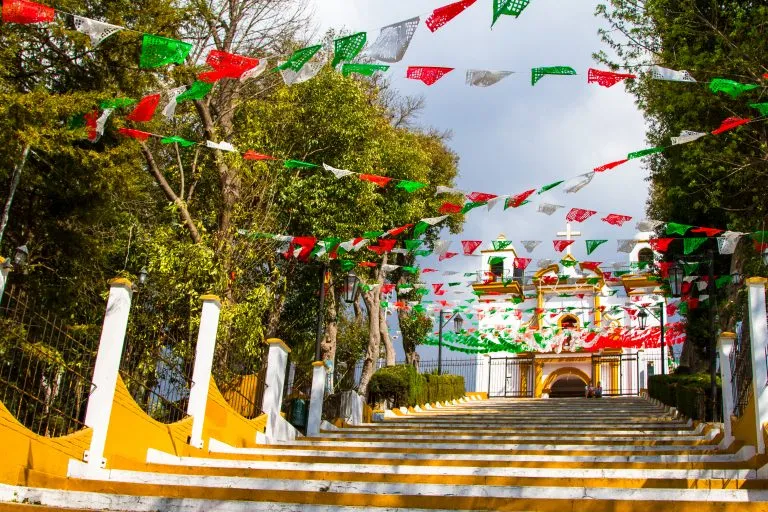
11 Cool Things to Do in Chiapas, Mexico
There were a lot of things that we were expecting from the southern Mexican state of Chiapas: fun things to do, low prices, a colorful city in San Cristobal, and mountain views.
What we weren’t expecting was to discover a destination that appears to be designed for outdoor lovers like us.
If you love waterfalls, wildlife, and bargains, here are are the best things to do in Chiapas–and why you need to visit immediately!
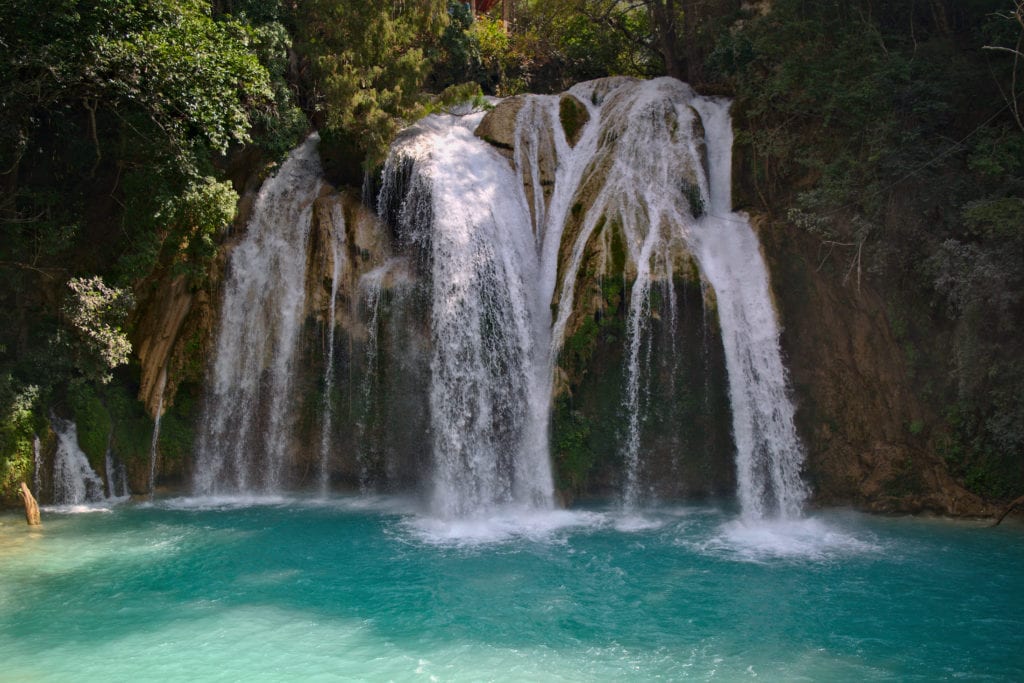
Some links in this post may be affiliate links. If you make a purchase through one of these links, we may earn a small commission at no extra cost to you. Please see our disclosure policy for more detail.
The Best Things to Do in Chiapas
Stare in wonder at el chiflon..
Rainbow Falls at El Chiflon became our new favorite waterfall the second that we laid eyes on it.
Enormous and cascading into a beautiful turquoise pool, one of our favorite aspects of the Rainbow Falls is that rather than falling in one giant bucket of water, it falls along the cliff it runs over–the effect is beautiful.
Some of the smaller waterfalls at the park were also beautiful, and reminded me forcibly of the Plitvice Lakes in Croatia.
Hike to El Chilfon and don’t want to head back down?
Don’t worry: as long as you didn’t go up the “wrong” (left) side like us, you can zipline most of the way back down!
Our wrong turn worked to our benefit, however–looking at where the viewing platform is on the opposite side of the waterfall, I think that we got the better view.
When we head back to this area at some point in the future, visiting El Chilfon again will be one of our first things to do in Chiapas, Mexico.
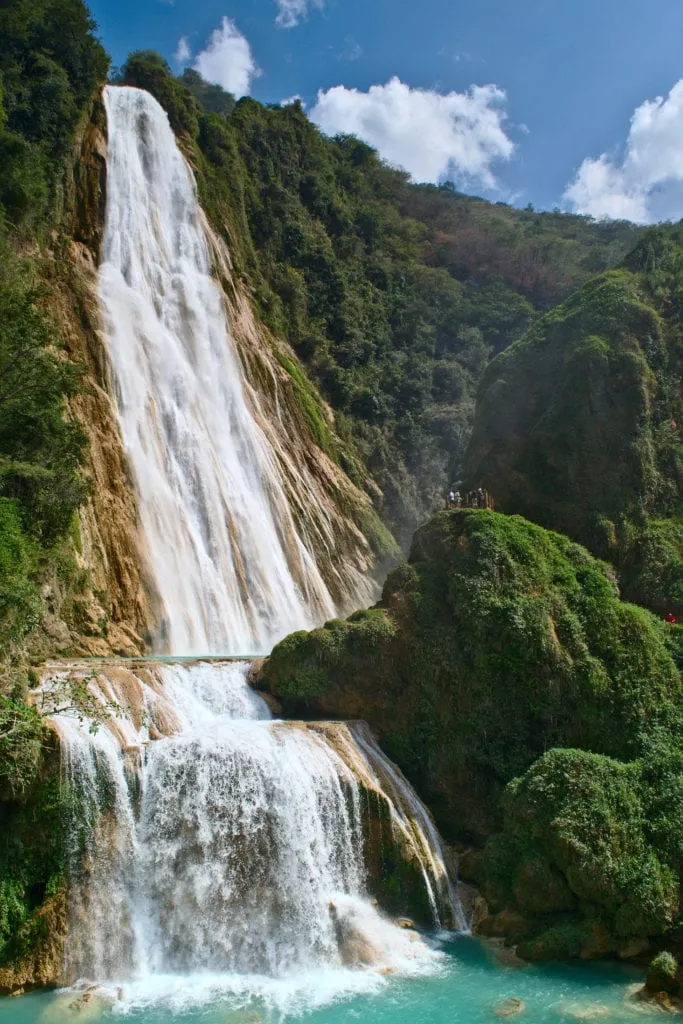
Enjoy the beauty of the Lagos de Montebello.
I never expected to find a view that reminded me of the karst cliffs of Thailand while in Mexico–but the Lagos de Montebello fit the bill.
These lakes are said to often be covered in mist, which held true for when we visited, but they were still beautiful (even if we didn’t feel up for the kayaking, which is one of the most popular Chiapas travel experiences there).
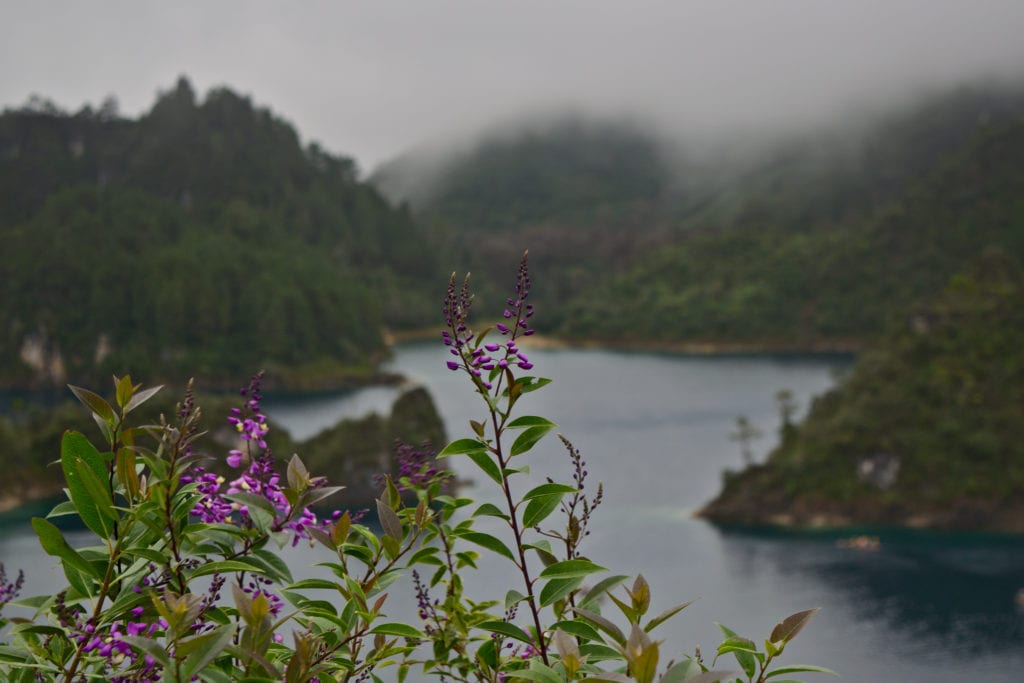
Go horseback riding in the countryside.
I have always loved to ride horses and took several years of lessons as a teenager, and Chiapas is the perfect place to explore on horseback.
Our three-hour tour took us through farmland, forest, and small villages–and most notably, the Templo de San Juan (more on that below).
Both a plus and a minus: the guides were very hands-off, and let us essentially do what we want, including trotting and cantering at will.
As an experienced rider, I adored the experience, but as many of our group members had never been on a horse before, I also found it fairly risky.
Make sure that you stay safe and know your own limits because you’ll need to set them yourself.
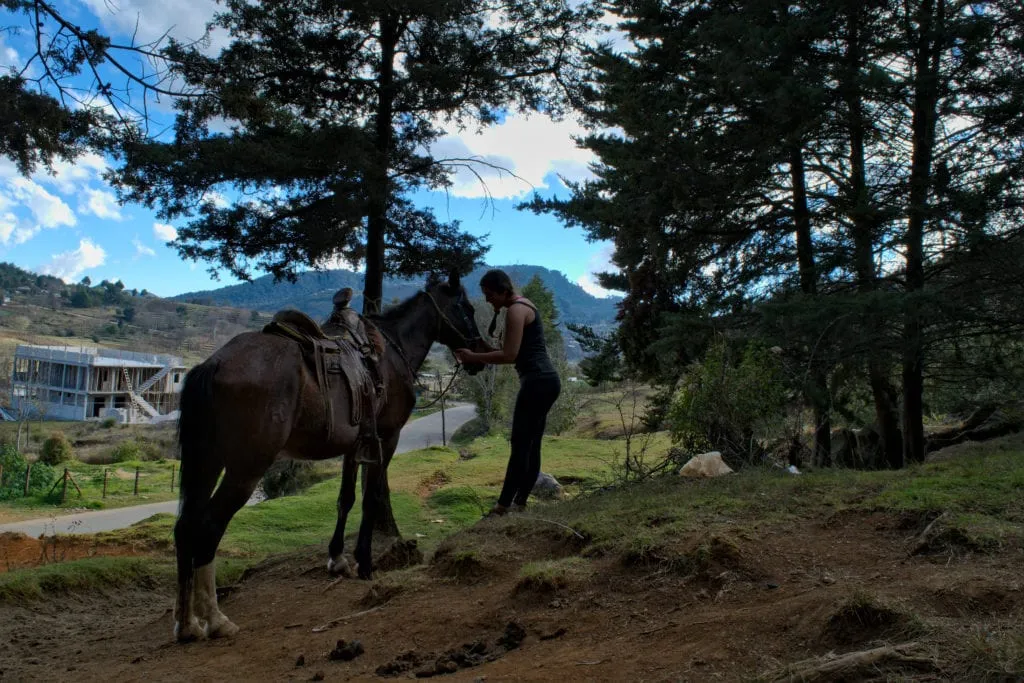
Visit the unforgettable Templo de San Juan.
Enormous amounts of incense. Chanting in a language that was not Spanish or Latin (it’s Tzotzil, the local indigenous language).
No pews. Straw all over the floor.
Hundreds of candles burning directly onto the ground, no candle holders in sight. A chicken in a box, waiting to be sacrificed at the end of a ritual.
No priests. Very few crucifixes. Plenty of statues of saints. One small Jesus statue off to the side of the altar.
Is this a Catholic church?
That’s what the Templo de San Juan, considers itself, but it is, without a doubt, the most unique house of worship that I’ve ever entered.
The church, which is located in the village of Chamula, strictly bans all photography inside and was vehement about enforcing it–and yet I have never wanted to take photos so badly in my life.
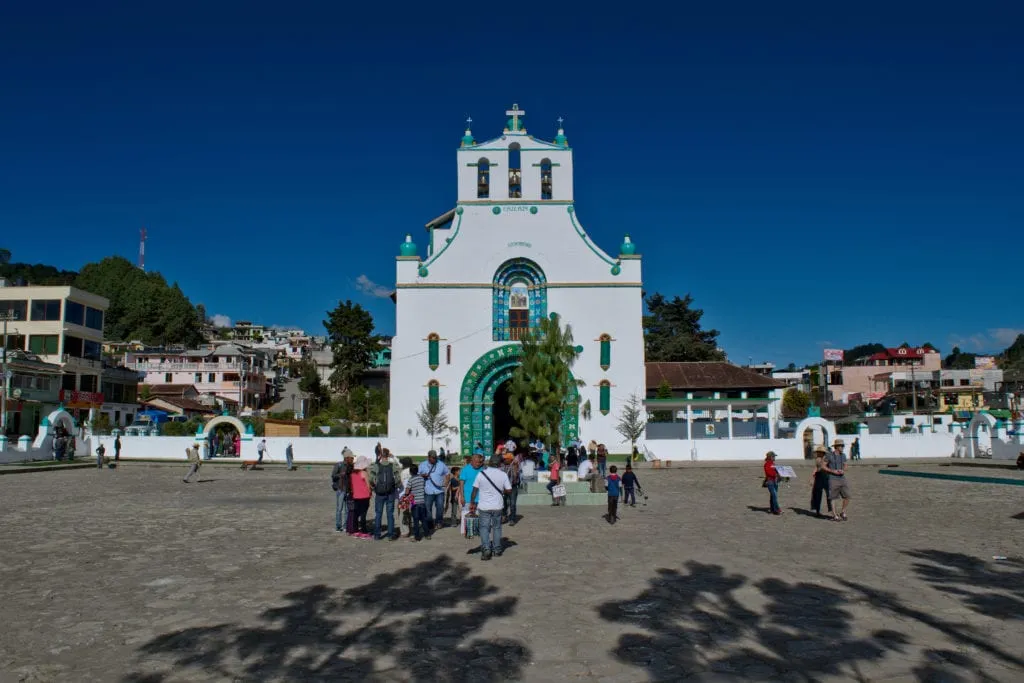
Climb the ruins of Palenque.
Not all of the incredible ruins in Mexico are available to climb anymore, including the famous pyramids at Chichen Itza.
That is for the best– Angkor Wat is a great example of a world-class site that is being damaged by its numerous visitors.
That being said… it’s still incredibly fun to climb ruins, and when you find sites (usually lesser-known ones) that let you scramble over them, it’s a blast.
Palenque is a perfect example of this–the best views of the city are from sitting on top of some of its buildings.
Admiring this view was one of our favorite things to do in Chiapas!
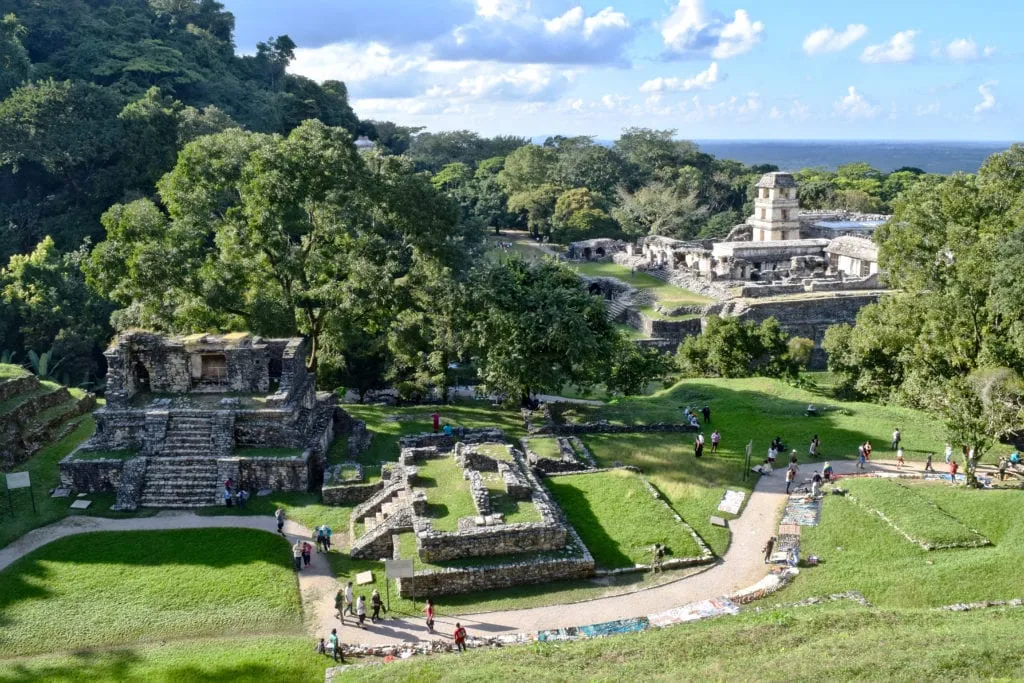
Discover the colors of San Cristobal.
It’s easy to overlook the city of San Cristobal in all of the nature that surrounds it, but there are plenty of things to do in San Cristobal , and the city itself is also worthy of some attention.
San Cristobal makes a perfect base for travelerss visiting Chiapas, Mexico.
The city is reasonably priced has plenty of transportation and tourism companies available to arrange excursions, there are tons of food and dining options.
This is where ee had our first Pad Thai since Asia–definitely not as good as on Koh Tao, but still great!
Most strikingly, San Cristobal de las Casas is so colorful , making it a joy to explore.
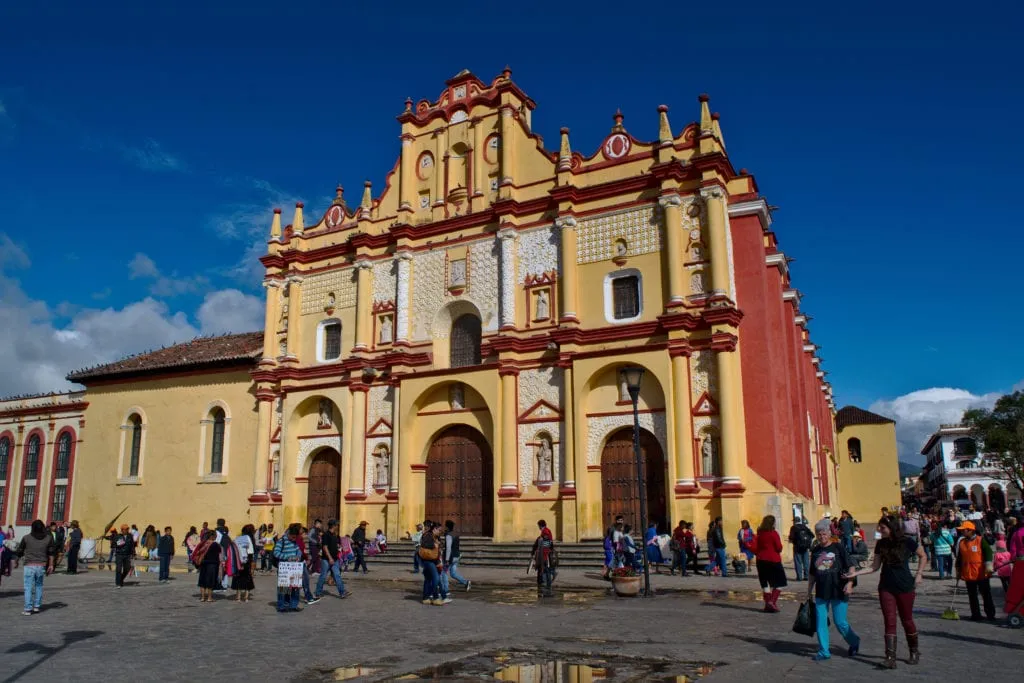
Climb behind beautiful Misol-Ha.
Sitting at the base of Misol-Ha is like sitting at the bottom of a cavern: there’s so much beauty above you.
Want to explore an actual cave?
For 10 pesos, you can explore the cave situated behind Misol-Ha–just be prepared to get very wet on your way there!
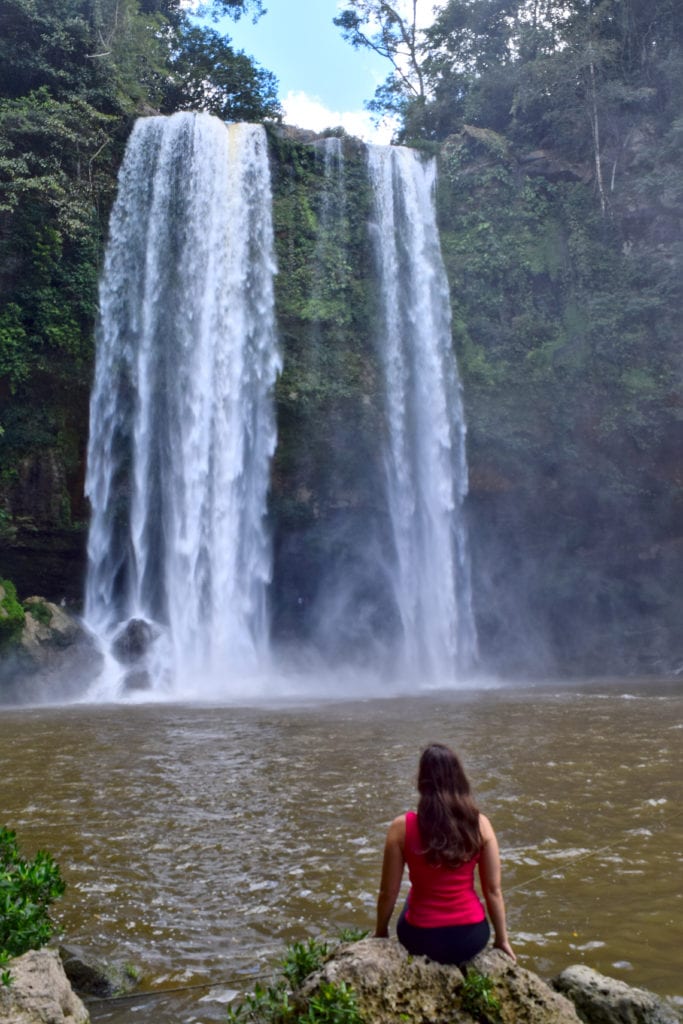
Take a boat ride through Sumidero Canyon.
I love canyons–they’re a great reminder of how enormous the Earth really is.
The walls of Sumidero Canyon reach over a kilometer high in some points, and there’s nothing more relaxing than enjoying a slow boat ride through it.
… As long as you’re not scared of alligators, that is!
We spotted a couple of adults and one baby sunning themselves during our cruise through the most famous canyon in Chiapas.
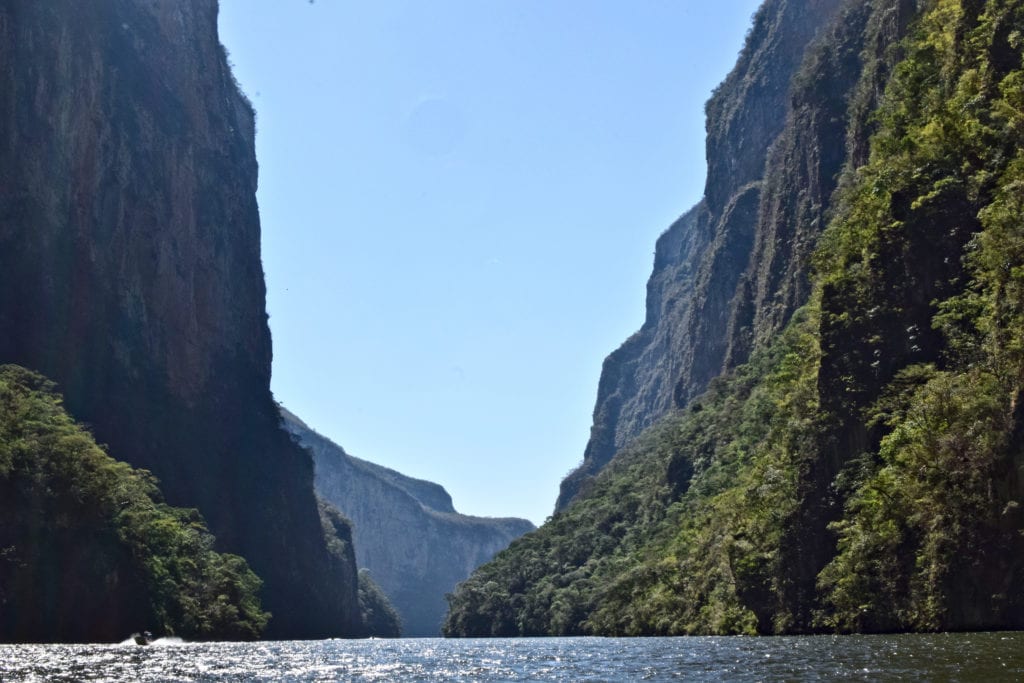
Get underground at the Grutas de Rancho Nuevo.
This striking cavern is beautiful enough for the first 350 meters–but if you want to have an unforgettable (if potentially terrifying) adventure, you can continue into the cave further than the light will follow you.
That’s right: armed with a flashlight and helmet, you can continue a bit further into the cavern to experience absolute darkness.
If you’ve never experienced the absolute complete darkness that a cave offers before, it’s definitely a memorable experience!
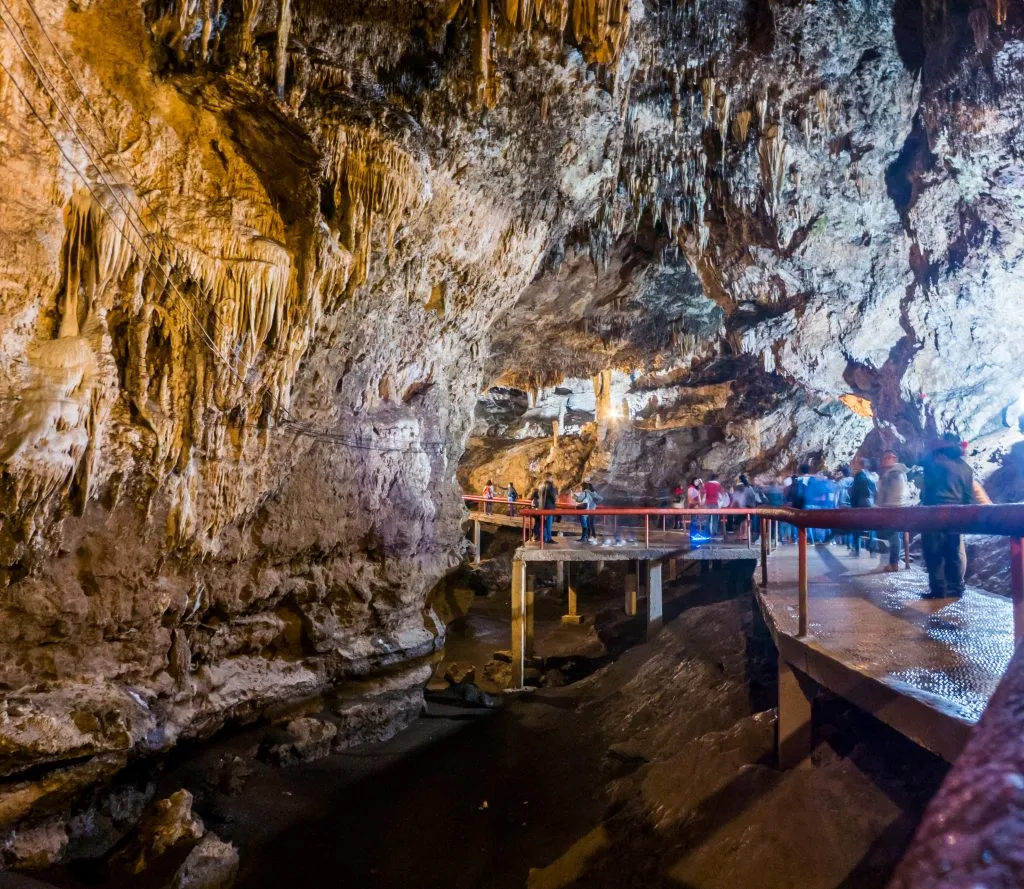
Visit El Arcotete Eco Park.
Whether you want to explore caves, try your hand at ziplining, or even go rock climbing or rappelling, you can find it at El Arcotete Eco Park, which is located an easy 15-20 minute ride from San Cristobal.
Go swimming at Agua Azul.
Just like the smaller waterfalls at El Chiflon, Agua Azul gave me Croatia flashbacks–this time to Krka National Park , complete with the option to swim at the bottom of the falls.
Keep in mind that you can’t swim just anywhere: some areas are much more dangerous than others, so be sure to follow the signs!
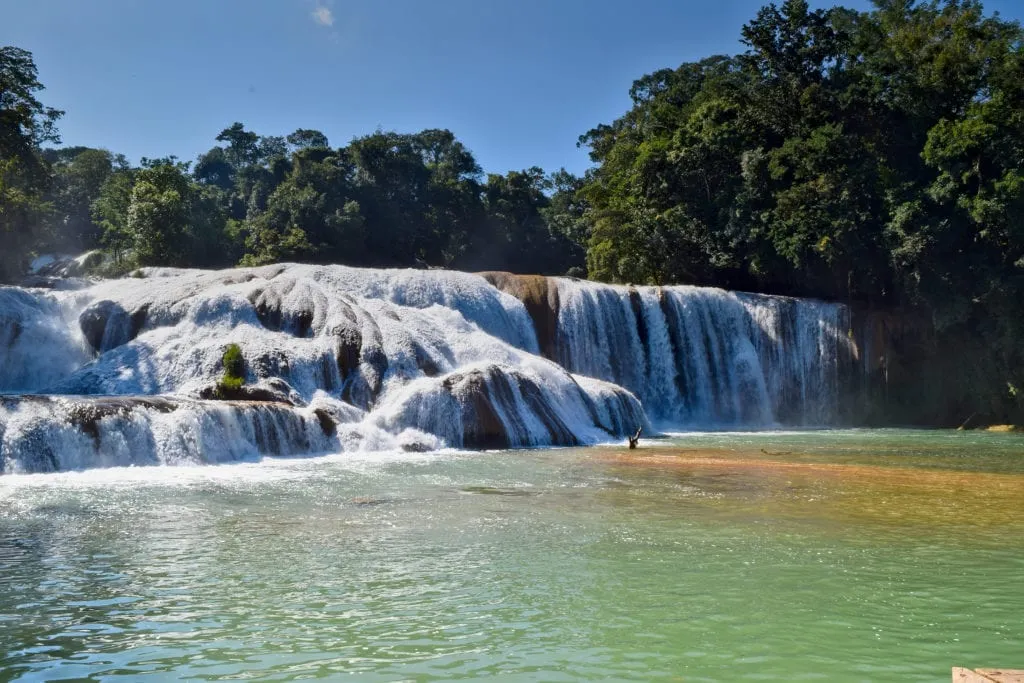
How much does it cost to visit Chiapas, Mexico?
Chiapas is one of the most affordable states in Mexico for travelers hoping to backpack Mexico on a budget .
Three-hour horseback riding tour? $10 USD.
A full-day trip to El Chiflon and Lagos de Montebello, including entrance fees? $16 USD.
Tour of the Sumidero Canyon, including transportation there and back? $15 USD.
The prices here are so low that with a moderate budget, you can easily do an excursion a day without breaking a sweat.
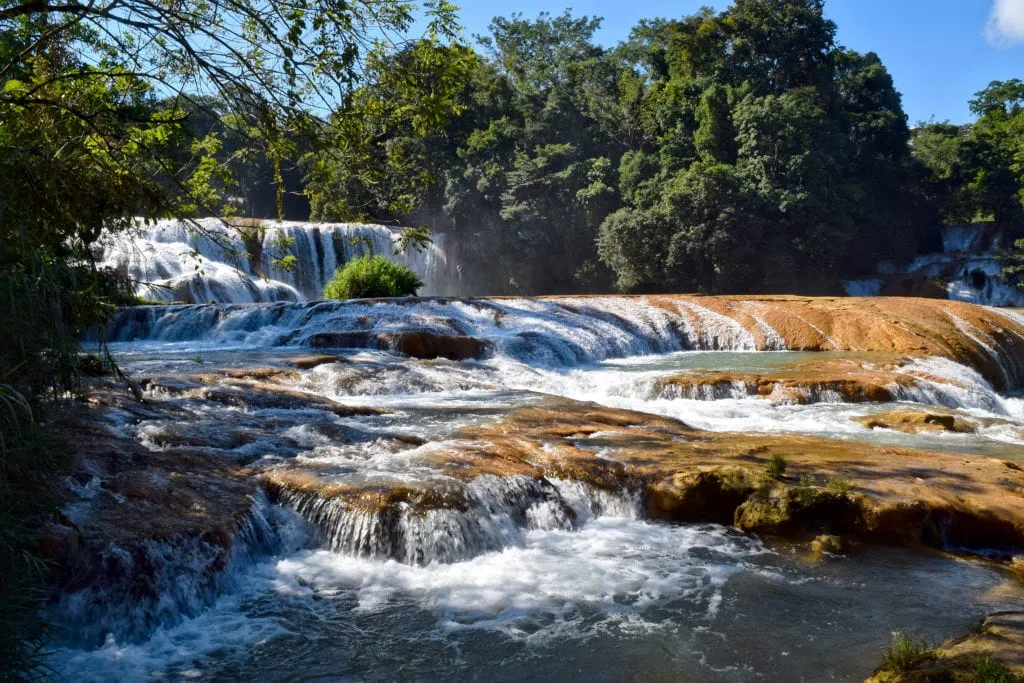
Don’t start checking off the best things to do in Chiapas without travel insurance! We use and recommend Safety Wing for their affordability, ease of purchasing & the clarity of their contract!
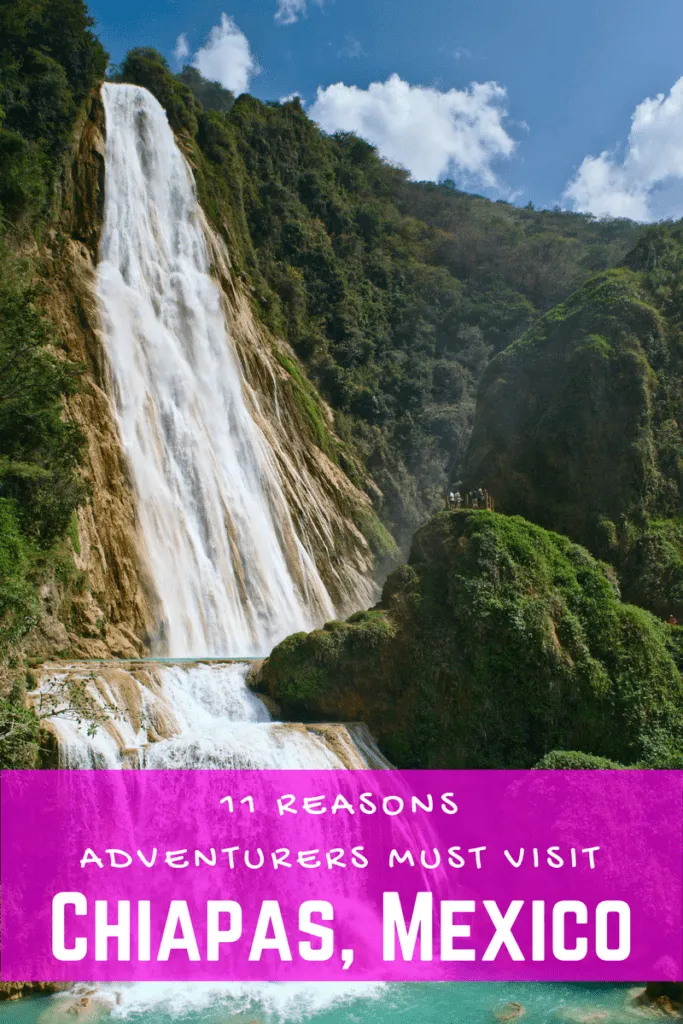
About Kate Storm

In May 2016, I left my suburban life in the USA and became a full-time traveler. Since then, I have visited 50+ countries on 5 continents and lived in Portugal, developing a special love of traveling in Europe (especially Italy) along the way. Today, along with my husband Jeremy and dog Ranger, I’m working toward my eventual goal of splitting my life between Europe and the USA.
23 thoughts on “11 Cool Things to Do in Chiapas, Mexico”
Grandpa enjoyed looking at your pictures on his new IPad. Have a lot to learn using the new toy.
Oh, we’re so glad to hear that! We love you and miss you. Looking forward to calling as soon as we can get strong enough Wifi.
I loved this blog post! found it on pinterest when I typed in Chiapas. Where all did yall stay during your trip?
Thanks, Calle! We stayed in an Airbnb in San Cristobal de las Casas. I definitely recommend San Cristobal–it’s the perfect place for exploring Chiapas, and a great city in its own right.
I was wondering the same thing – good to know! Pretty easy and affordable taking taxis around to all of your destinations?
Very! We used a combination of taxis and group tours in shuttle buses/vans to get around. All were easy to use and very affordable.
Hi, great post…I will be reading a lot more of your blog…I am planning a 3 week trip to Mexico in August, and 4-5 days in Chiapas (do you think it’s enough to explore Chiapas?). Are the tour prices really that cheap? I can see you’ve been there just this year? What is the best way to get there from Mexico city? Are the buses ok, or is it better to fly? Thanks, Everton
Hey Everton! 4-5 days is definitely enough to get a solid taste of the area, though you’ll be leaving some things undone–all the more reason to come back later!
Yes, the tour prices really are that cheap, at least as of January 2017.
We took a bus from Puerto Escondido to San Cristobal, so didn’t come directly from Mexico City. ADO buses should be able to get you between the two points fairly easily (though it’s a long ride!). We had nothing but good experiences with ADO buses–they were all clean, modern, and efficient, included a/c and some even had charging stations in the seats. I don’t see any reason to fly unless you are very worried about time.
Hope you have an awesome time!
That’s great Kate, thanks for the tips. One more thing. Do you know if the tours from San Cristobal to Palenque allow you to take your luggage? I was thinking to do a tour to Palenque, but then stay in Palenque instead of returning to San Cristobal, which means we’ll have to take the lugagges. I couldn’t find any info on this on the internet…Thanks
Anytime, Everton!
Our tour guide let us bring our luggage and didn’t even bat an eye when we asked, and I imagine most others will react similarly. We were in a sedan, and they just through our bags in the trunk. Chiapas is a pretty casual place–if you tell the tour company what you’re looking for, I’d say the odds of them turning your money away are very slim!
Thats awesome to know, my plans should work then…Thanks Kate
Happy to help, Everton!
where did you stay ? thank you !
Hi Paul! We stayed in this Airbnb: https://www.airbnb.com/rooms/13079917
The layout was a bit odd–half of it was separated by a private outdoor space–but we liked it well enough. 🙂
what company did you use for your horseback riding tour
Honestly, I have no idea! We just booked from one of the many tourist agencies in town. The people in our group came from several different agencies/hotels/hostels–essentially, they just combined us into one tour. Not sure if the horseback riding team had an official company name or not.
Jeremy and Kate ..I am a Scotsman who lives in Chiriqui Panama, was thinking of a trip to Chiapas and other places in Mexico ..I’m a seasoned traveller and use hostels etc
My question is when you done the trip to Panama did you use the TICA BUS , THEY GO FROM Panama to Chiapas ..if you did how did you find it, there web site is quite good and I like the idea that you can plan some time in other countries as well ,they seem quite flexable.
Thanks in Advance Donald
Nope, I’m not familiar with Tica Bus. We used local buses in some areas and booked shuttles through tourist agencies on the ground in others, but we booked everything as we went!
Hi, thanks for your post. My husband, daughters (11 & 13) and I are spending two weeks in Chiapas in July. We’re planning on spending a few days each, in about 4 or 5 cities, and visiting many of the places you listed. I’m not sure when you were there last, but I was wondering whether the Central American migrants are impacting traffic (e.g. walking on the highways) or whether you encountered blockades? We’ll have rental car. I speak Spanish and have driven in Mexico City and other cities in Mexico, but I’m a little anxious about the state of the roads (narrow? pot-hole ridden?). It seems to make more sense for us to rent a car (cost and flexibility) vs. taking a bus everywhere. Did you make it to Frontera Corozal or Yaxchilan? Thanks!
Hi Norma! We were in Chiapas in early 2017, so I’m not sure if there are any incredibly recent issues, but I suspect the odds of running into an issue with travelers on foot/blockades in Chiapas is minimal. I’d recommend asking a local before you arrive (maybe at your hotel or your Airbnb host?) and seeing if they know of anything recent.
Best I can remember, the roads weren’t incredibly well maintained (LOTS of speed bumps, and yes narrow in places), and there weren’t street lights everywhere, so things got very, very dark on the road. If you’re used to driving in Mexico I wouldn’t rule out driving as a possibility, but just go in with caution.
We didn’t make it to Frontera Corozal or Yaxchilan on our last trip, but maybe next time! We’d love to return to Chiapas.
It’s probably too late for your own trip, I was back in Chiapas around 2008, Commandante Zero was running for president in a balaclava. There were blockades of a sort, Mostly stop and searches on the buses. But the agents kept well away from me, in a way that was almost awkward. Near the border, taxi cab drivers fought over taking north, because the minute the immigration agents see a white person in the taxi, they’ll leave it alone. Many local Mestizo Mexicans HATE immigrants from Guatemala and further south. I had a conversation in Spanish with a local man who complained that the “Indios guatemaltecos” didn’t know Spanish (many only speak dialects of Mayan and other indigenous people) and didn’t want to learn, they were only there to take their jobs! Sound familiar? When migrants on the trains go through towns in Guatemala, children throw candies, when they pass the border, children throw rocks at them. You will not run into immigrants on the roads, because they rightfully fear the locals and the federales. It gets much worse, I was naive and thought Mestizos could not be racist against the indigenous people. I was very wrong. Maybe things have changed, but I doubt it. Be prepared to encounter barefoot children offering to shine your shoes. Heartbreaking.
Thanks for this informative blog post! Do you remember the tour company you used for the horseback riding to the indigenous villages & San Juan Chamula church?
Not only do I not remember, but I’m also pretty sure I never got a name in the first place! We booked it through an agency in town (not sure which one), but like in many places around the world, our actual tour group was composed of people who had booked at different places around town.
I have no doubt you’ll be able to find plenty of agencies in town offering the tour. We definitely recommend taking it! 🙂
Leave a Comment Cancel reply

Chiapas Travel Guide: What To See & Do In Chiapas, Mexico
Chiapas is the perfect destination for those of you who want to experience cascading waterfalls, ancient Mayan ruins, colourful indigenous culture and dramatic natural wonders. It may be one of the economically poorest states in Mexico but it is the richest in terms of diversity and beauty. This Chiapas Travel Guide proves it’s the ideal destination for active adventurers who want to get off the beaten path and avoid the crowds of more well-known regions in the country.
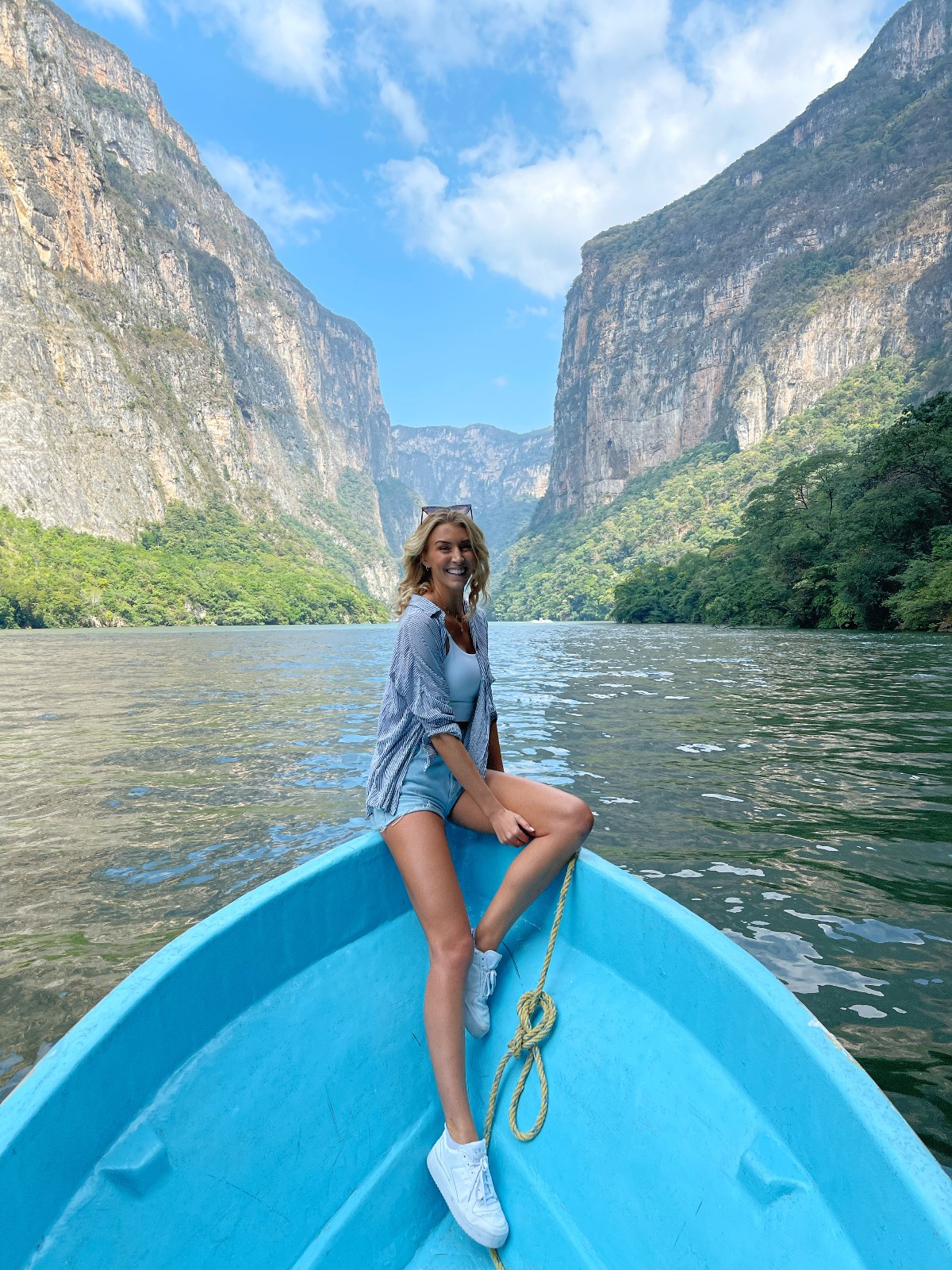
The Practicalities:
Getting there & getting around:.
There is only one main airport in Chiapas, Tuxtla Gutierrez International Airport. From here you can easily catch a taxi or transfer to San Cristobal. We used authorized taxis and tours to get around the state. If you want more freedom then rental cars are readily available.
How Long To Stay:
You can see the highlights of Chiapas in 3-4 full days but staying longer means you won’t be rushing and can see a lot more of this beautiful destination.
Where To Stay:
I recommend basing yourself in San Cristobal de Las Casas while exploring the state. You can also do overnight stays elsewhere if you visit attractions that are further afield such as Palenque and El Chiflon.
When To Go:
If you’re visiting inland Chiapas, which is what this travel guide focuses on, then the dry months from November to May are the best time. If you’re venturing the coast then November to March would be ideal.
Chiapas is one of the economically poorest states in Mexico and as a result one of the most affordable. For example, we had a three-course meal of sharing plates with drinks for £14 total in Tuxtla.
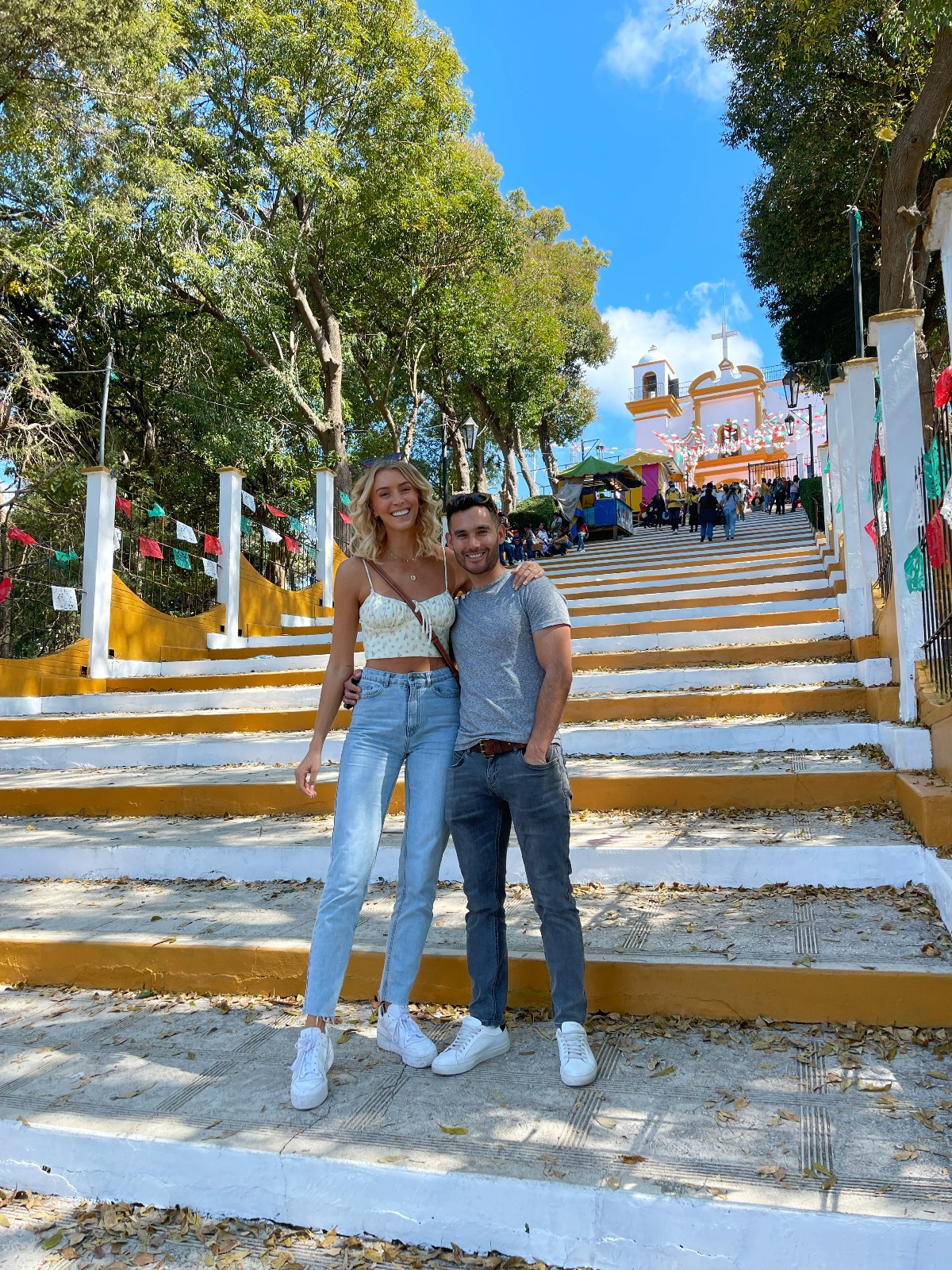
Chiapas Travel Tips:
- Water . Do not drink the local water. Drink bottled water (buy large gallons and decant into reusable bottles to reduce plastic consumption). Avoid salads washed in local water, stick to cooked foods and ask for cold drinks without ice. Take some imodium with you.
- Language . The most dominant language in Mexico is Spanish and many locals do not speak English. Do yourself a favour and learn the basics to help you get by. It is also useful to have google translate on hand to assist, for example with translating menus which are often in Spanish.
- Safety . In general, Chiapas is a safe place as long as you keep your wits about you and take basic precautions. Click here for a Mexico safety guide.
- Cash . It is wise to carry a small amount of cash with you as not everywhere takes card, the local currency is Pesos.
- Phones . I recommend purchasing a local SIM card to get the best phone coverage at the most affordable price.
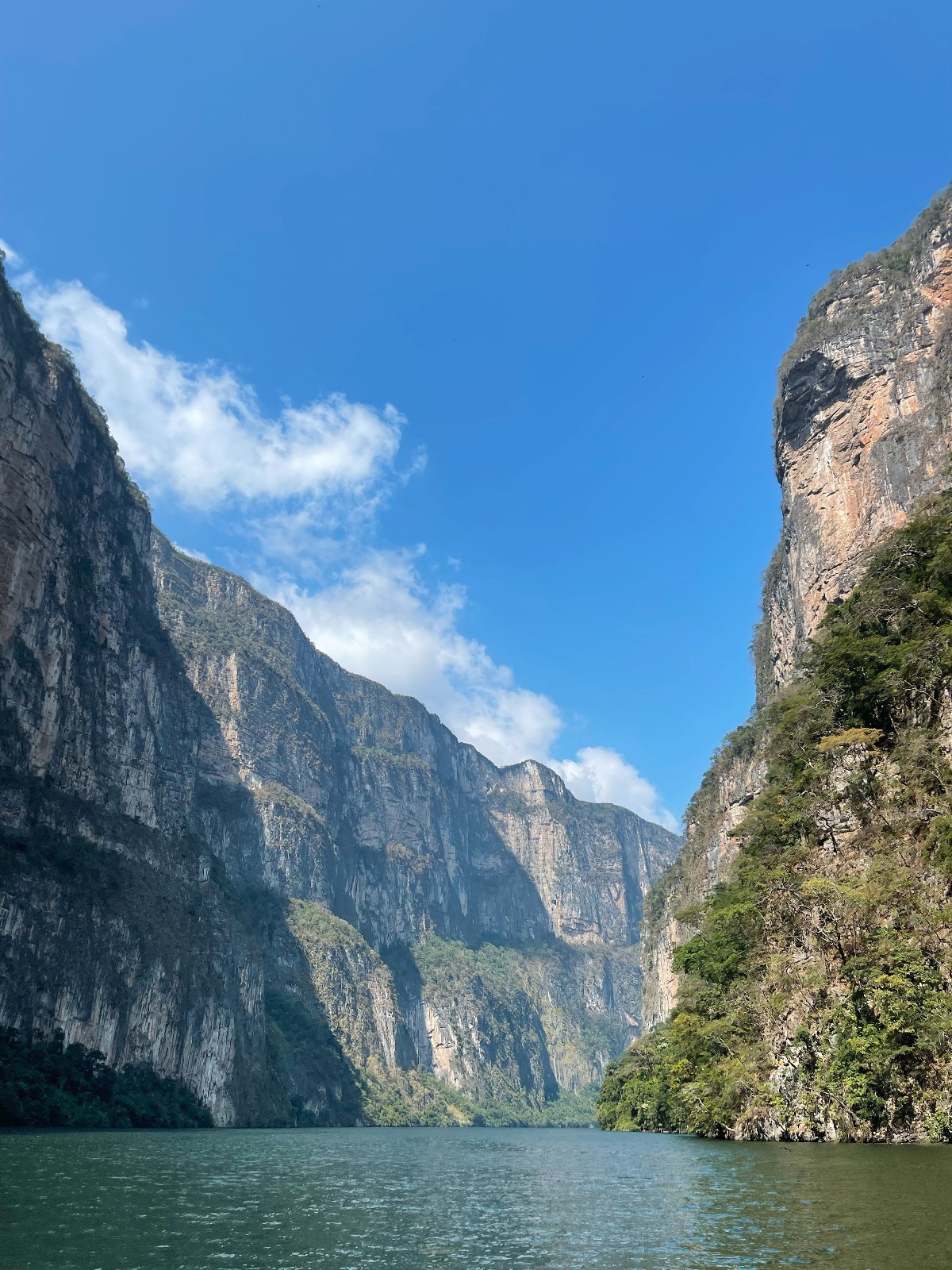
What To See & Do in Chiapas:
Parque nacional canon del sumidero.
This was the highlight of Chiapas for us. A spectacular canyon – so beautiful it rivals the Grand Canyon – with walls almost a kilometer high at its deepest point. It is absolutely beautiful and a haven for wildlife such as river crocodiles, spider monkeys, and numerous birds. The two most popular ways to explore the canyon are by boat (which takes around 2-3 hours) and by driving up to the viewpoints above it. You can easily do both of these activities in one day. Personally, we hired a local taxi for the day to drive us to the boat, lunch (which we had in Chiapa de Corzo) and viewpoints and it worked well.
You can also partake in more adventurous activities here such as hiking, rock climbing and mountain biking. However to do these there is a little bit of admin with forms and fees, so the best thing to do is use a local tour guide company to help facilitate your plan. This is a great in-depth guide to the canyon.
San Cristobal de Las Casas
San Cristobal is known as a Mexican “Pueblo Magico” i.e. magical town, and it lives up to the title. It is set up in the Chiapas highlands so is a few degrees cooler than other regions (take an extra layer) and is a hub for cultural and historic attractions – as well as some of the best food in the state. I recommend exploring the city on foot with a guided walking tour but if you want to explore of your own accord, here are a few things you shouldn’t miss:
- The Coffee. Chiapas is known as the source of the best coffee in Mexico and San Cristobal is a great place to grab a cup or even a bag of beans. Black Love Coffee is a cute spot.
- The Churches & Cathedrals. San Cristobal has a whole selection of beautiful ones, head to the central Cathedral and Templo Santo Domingo for stunning facades.
- Walk Up To Inglesia de Gaudalupe. The walk up Calle Real de Guadalupe to this church gives some of the most beautiful views over the city, and at the top you might even encounter some live music.
- The Veggie Food. San Cristobal is super vegan and veggie friendly. Check out Veganos la Taqueria, Aguacate Veggie Bar and Todo Vegano.
- Mercado de Artisanias de Santo Domingo. This artisan market below Templo Santo Domingo is where you can purchase some beautiful handmade local textiles.
Psst. If you would like an adventurous day in San Cristobal, you can hike up to the nearby Cerro Don Lauro viewpoint where you can also explore a series of rock climbing routes.
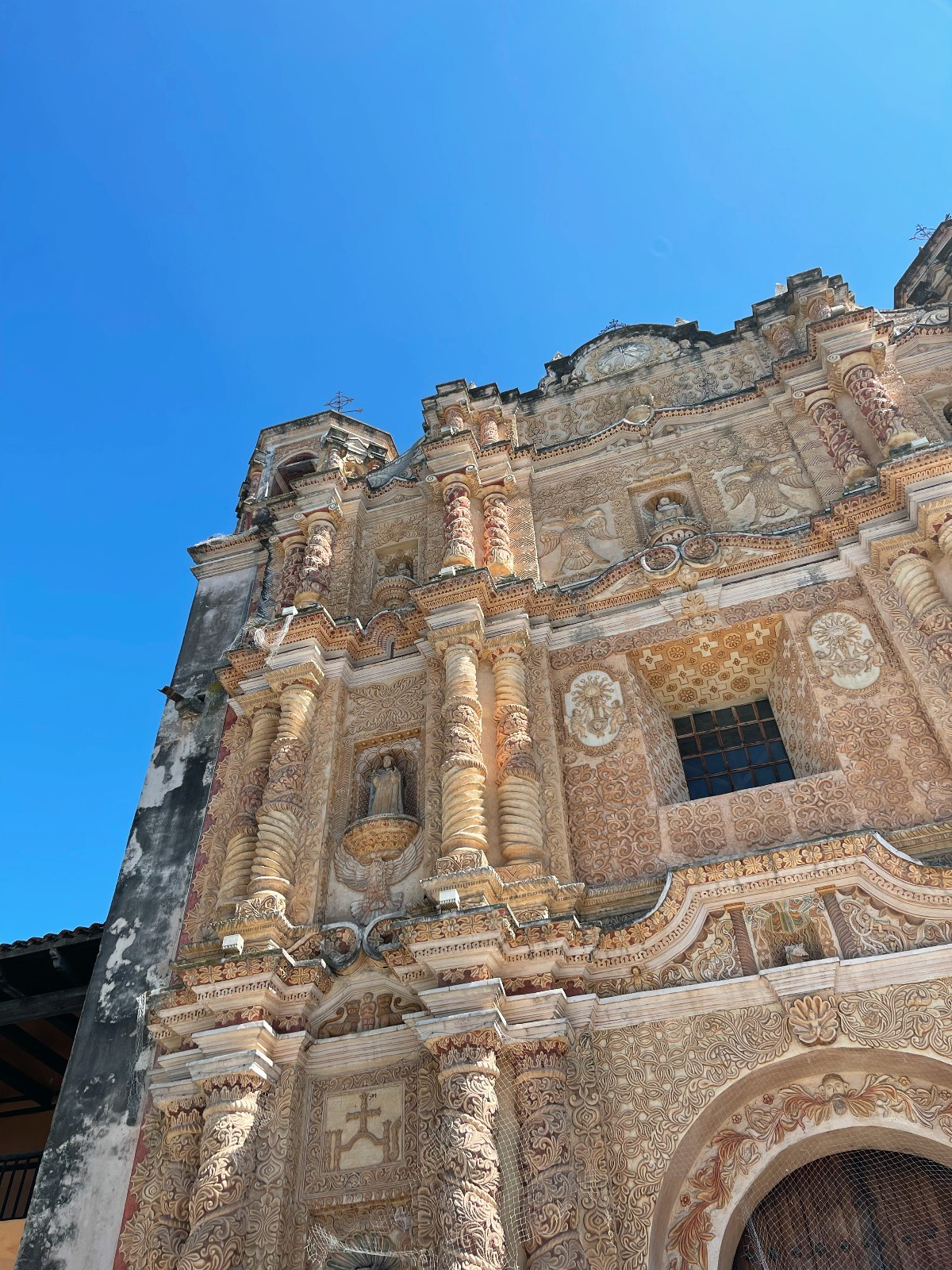
Visit The Indigenous Villages
Over 12 indigenous groups call Chiapas home and many welcome tourists into their villages to show their way of life. This is an incredible way to learn more about the local culture while supporting these communities. Two popular villages to visit are:
- Chamula. Here the Tzotzil Mayas make live animal sacrifices and use Coca Cola (mixed with a local liquor) for ceremonial purposes, where they “burp out” evil spirits, which can be seen in their churches. Please do not take photos inside the churches out of respect. (Fact: Chiapas as a whole has the highest consumption of Coca Cola in the world. An average of 2l per person per day including children, as it is cheaper to purchase than clean water).
- Zinacantan. Here the Tzotzil Mayans are well known for their women’s weaving. You can find stunning embroidered textiles featuring decorative floral patterns and purchase their handmade items directly from them. Again, this is a lovely way to support the community and their craft.
The Waterfalls
Chiapas is known for its array of beautiful waterfalls. Pack your swimming kit and don’t miss these:
- El Chiflon. Near the border of Guatemala, El Chiflon has five waterfalls you can explore. It’s perhaps the most famous waterfall destination in Chiapas. You can hike, swim, zip line and camp here. It is 2.5 hours from San Cristobal so it is worth making an overnight stay and exploring other attractions nearby such as Chucumaltik Cenote.
- Agua Azul, Misol-Ha and Roberto Barrios. These three incredible waterfalls are all located close to one another, so can easily be combined into a single day trip. Plus they are on the road to Palenque so why not stop off on your way there or back? Just a warning, Aqua Azul is by far the most busy and touristy. If you want less crowds and a more natural experience, then Roberto Barrios is your best bet of the three.
- Cascada El Chorreadero. This slightly smaller but still stunning waterfall just outside Tuxtla is worth stopping off at if you’re passing by. It’s super easy to access. It is deep enough to swim underneath and you can easily climb into the cave where the waterfall begins. There are even longer guided caving experiences where you rappel deep into the water source.
- Cascada Poyok Manok . An hour outside of Tuxtla is this little known but incredibly beautiful waterfall. It requires a drive down a dirt track and a short 20-30 minute hike to get there. You will most likely have this beautiful cascada to yourself, as well as its very photogenic suspension bridge.
- Cascada La Aguacero. This lesser known waterfall is a series of cascades down the side of a remote canyon located inside the Biosphere Reserve Selva Ocote. You climb down over 700 steps to get there and once you reach it, it feels like a hidden tropical paradise you have all to yourself.
- Cascada la Conchuda. This waterfall is located on the same river as Cascada La Aguacero but is even more remote. It requires a two hour hike further into the canyon, a truly hidden gem.
Bonus experience: Nearby to Cascada La Aguacero is Sima de Las Cotorras. A huge sinkhole that is filled with a forest. You can rappel down into the sinkhole and see unique wall paintings from thousands of years ago.
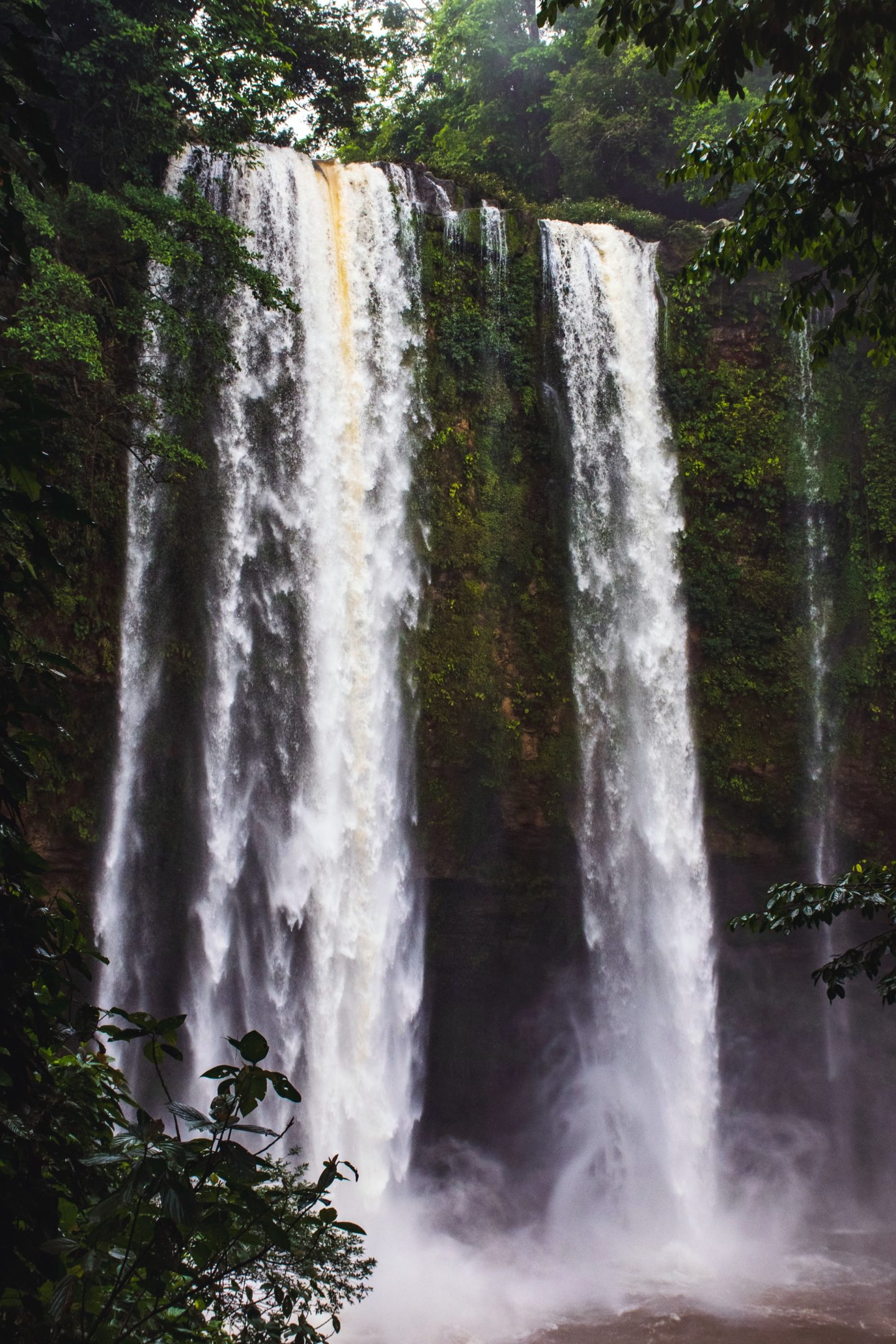
Arco Del Tiempo
This is the one thing we didn’t do in Chiapas which I am really kicking myself for, it looks truly phenomenal. The arch is nestled deep in the Mexican jungle and is the highest natural arch in the world. Its walls are home to cave art which was etched there between 5,000-10,000 years ago. And the best bit? It is almost untouched by tourism because it takes some serious effort to get there.
In order to get to the Arch you embark on a 3-4 hour drive into the jungle from Tuxtla, then stay overnight and set off for an early morning 4 hour guided hike through the wild and rugged landscape. You then rappel down Canyon Rio La Venta walls into the water below. You can head back in the afternoon or camp underneath the arch on small sandy inlets. This is truly an incredible adventure for intrepid travelers who want to have a unique and unrivaled experience. I need to go back and do it myself!!!
Palenque is a UNESCO world heritage site, perhaps the most well known tourist destination in Chiapas and for a good reason. It is a hugely famous Mayan archeological site where you can explore well preserved Mayan ruins dating back thousands of years (226 BC to 799 AD). It is a true testament to the creative genius of this ancient civilization. I recommend taking a guided tour around the ruins to hear about their rich history.
If you’re traveling to Palenque from San Cristobal it is a long way, so I recommend staying overnight so you can explore the site and nearby attractions without rushing. There are other lesser-known Mayan ruins within reaching distance such as Yaxchilan, Piedras Negras and Bonampak as well as waterfalls such as Agua Azul, Misol-Ha and Robertos Barrios which are well worth exploring.
Montebello Lakes
The Lagos de Montebello include 59 natural lakes in Southeastern Chiapas, right on the border with Guatemala. This destination is well off the beaten tourist path and only a handful of the lakes are accessible, but it is definitely worth heading there on a sunny day to experience their beautiful turquoise waters. A great way to tick off a few of the lakes in a day is by taking a local Tuk-tuk tour which will set you back about $14-24 for three hours. There are numerous activities in the region including swimming, hiking (try the El Perol trail), kayaking, horseback riding and even renting a Balsa (a raft made of logs tied together) and paddling around the lakes. If you want to extend your trip there, you can rent a cute little lakeside cabin.
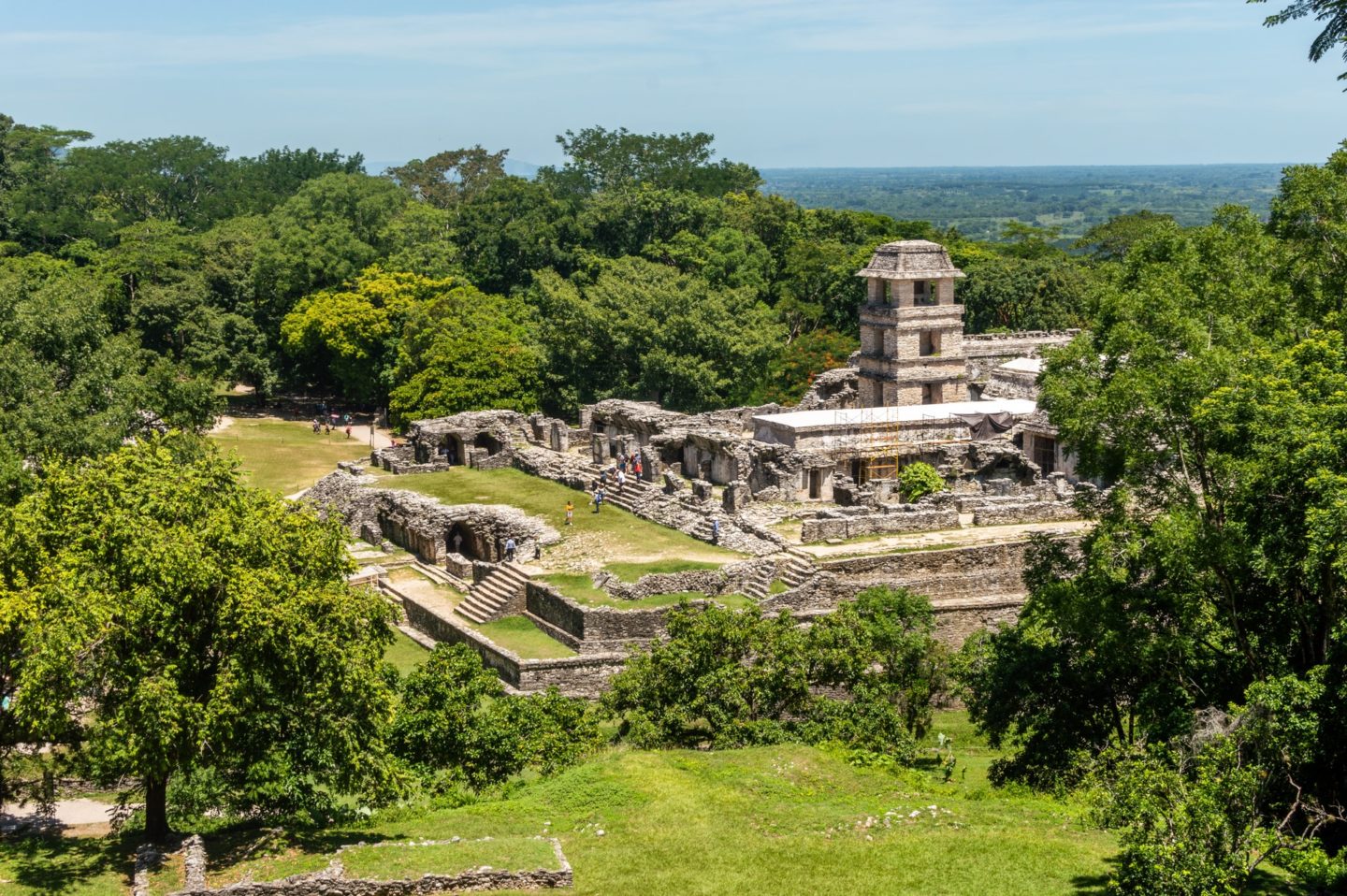
Regrettably, we only spent 4 days in Chiapas, we could easily have spent well over 2 weeks there! It has everything – pine-covered mountains, warm sandy beaches, ancient Mayan ruins, unique immersive cultures, diverse local wildlife and phenomenal natural landscapes. Let me tell you, you simply won’t regret an adventure in this underrated region of Mexico.
Safe travels,
You may also enjoy:
What to pack for the lost city …, the best hikes in picos de europa: …, appenzell hiking guide: the best hikes in …, wild swimming essentials: what to take on ….

Sign up to my newsletter
Let me slide into your inbox. A monthly newsletter of all the good stuff - latest posts and videos, rants and rambles, recommendations and resources.
Privacy Overview

Chiapas Itinerary (1 week)
Welcome to our 1 week Chiapas Itinerary.
Mexico is one of the most visited countries in Latin America year upon year and has earned its status as one of the world’s best backpacking destinations.
The region of Chiapas is a very diverse part of Mexico , where you’ll find mysterious ruins, dense jungle, exotic animals, breathtaking mountains and more in abundance here.
What's in this guide?
Backpacking Chiapas Itinerary
In this guide we’ll explore the region of Chiapas. Here we’ll go through the very best things to do with our personalised 1 week itinerary.
Specifically, we’ll look in-depth at the destinations of Palenque, San Cristóbal de las Casas and Tuxtla Gutiérrez.
Getting around Chiapas State
Chiapas is quite a rugged state, with many of its main roads winding through mountains and jungles between destinations.
Though bus times can be somewhat long, the quality of transport is still great nevertheless like most other southern states in the country.
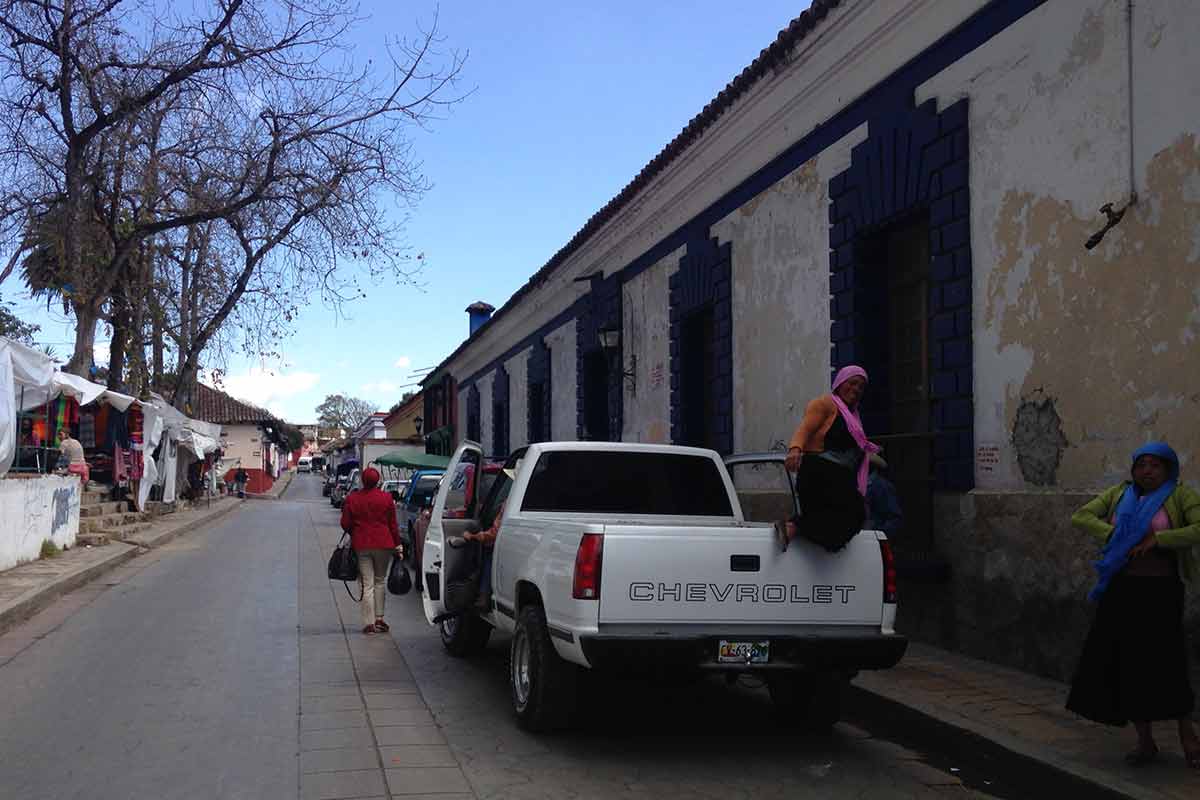
The best bus companies to go with are OCC and ADO, which are both found within the ADO terminals in each destination.
If heading out to some of the more remote gems like Agua Azul , you’ll either need to go with a tour in a 4×4 , or rent your own vehicle.
Other Things to know: Travel Tips
*When completing the itinerary below of Chiapas, you’ll need a daily budget of $15-25 a day.
This budget will cover a dorm bed, a few hearty meals, some local buses and also a few drinks or extras. Other costs such as international flights, travel insurance or long-distance buses are not included in this budget.
Chiapas is quite a safe state to travel to . Within destinations like San Cristóbal and Palenque, be sure to leave valuable at home since pickpocketers seem to be on the increase here. We recommend carrying a solid padlock like this one to keep your things safe in your accommodation whilst out and about.
Also know that there are a few cartels such as Los Zetas that operate along the more remote roads within the region, so to stay safe always talk to a local advisory to know where best to travel through.
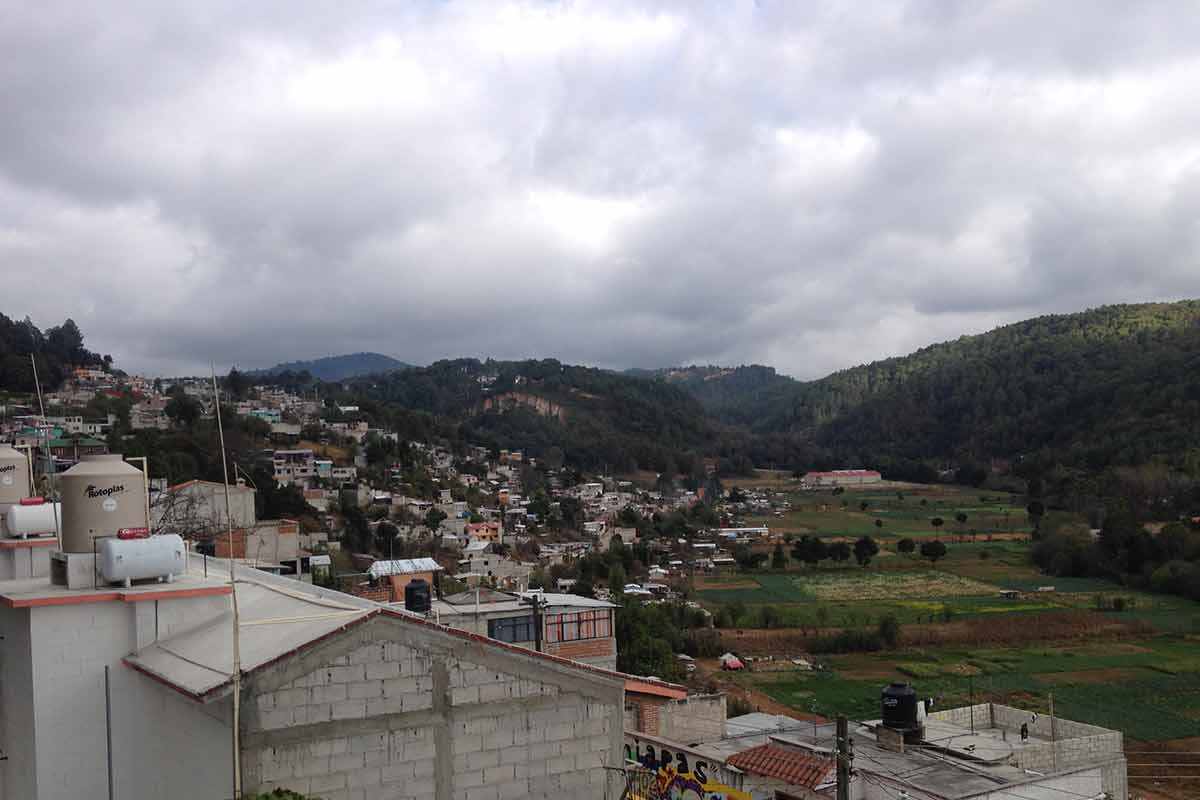
And if you do come into contact with them – remain calm and do whatever they ask (it’s more of a respect thing – you show it and you’ll be fine).
When it comes to packing, you’ll need a variety of clothes for Chiapas . In Palenque and the jungle it can get quite hot, so light clothes, lots of sun cream and mosquito repellent are all necessary.
In San Cristóbal it’s cooler, however in the night and early morning can get quite chilly so bring a few extra layers.
Chiapas Itinerary (1 Week)
Now we’ll go through our one week itinerary of the Chiapas region.
Here we’ll go in-depth and cover the very best sights and experiences you can have in this ultimate Mexican region.
Palenque (Days 1-3)
We’ll first kick off this itinerary in the diverse jungle city of Palenque. This city is one of a kind within Mexico, and is best known for its dense jungle full of mysterious ruins and many exotic animal species .
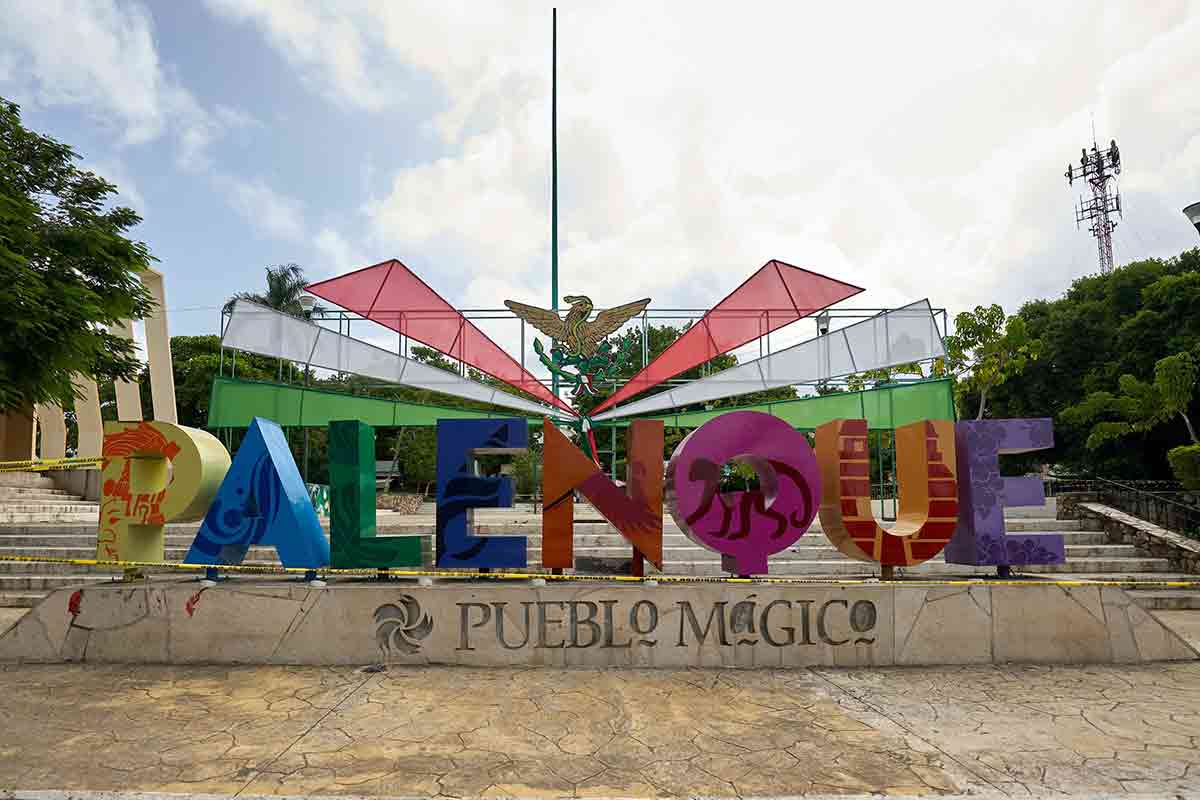
We recommend staying within the jungle area (known as La Zona Arqueológica Palenque) where there’s many accommodation options along this one road that leads to the ruins.
The best thing to do is to take an early morning walking tour like this one , where you’ll be able to hear the shrieks from the Howler Monkeys as well as possibly see a Jaguar if you’re very lucky!
The Palenque Ruins cannot be missed, and are really one of a kind set in the middle of the sprawling fauna.
Known as Lakamha in the ancient Itza language , the best sites to explore here include The Temple of the Inscriptions, as well as The Palace.
Within the city of Palenque, a cool thing to do is to head to Aluxes Eco-Park.
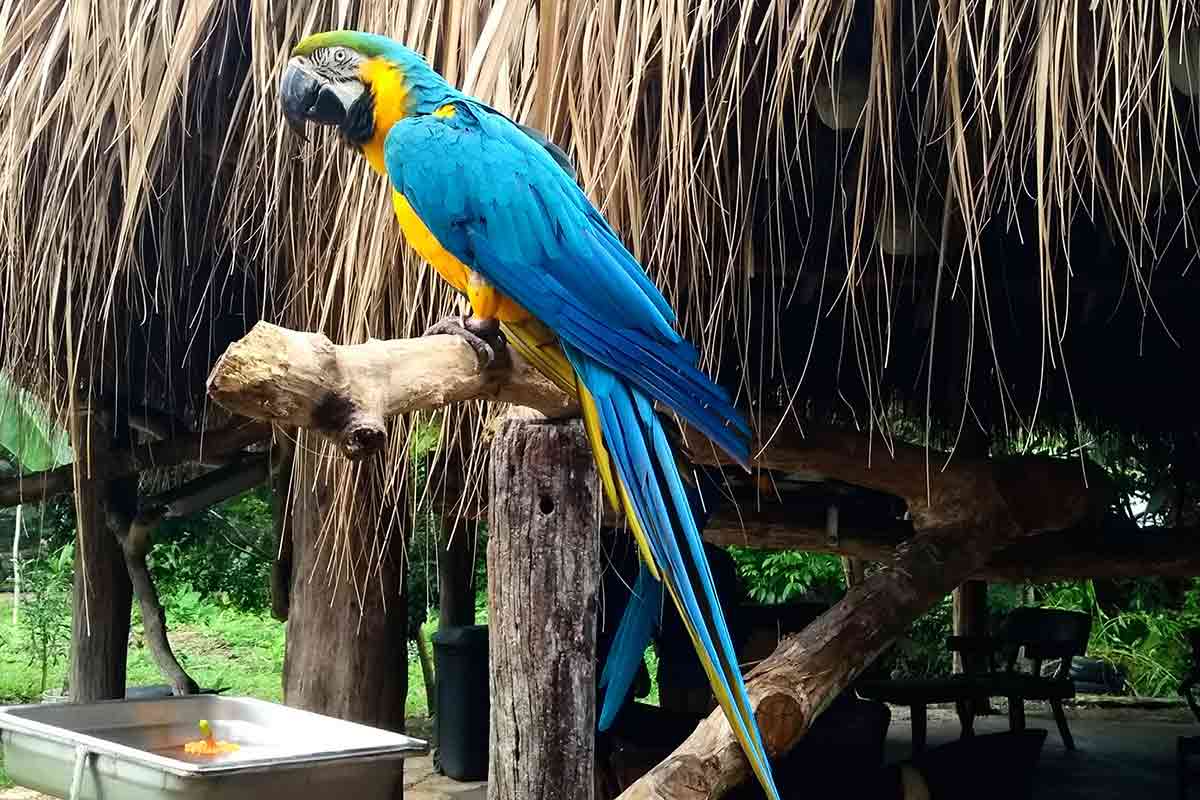
Here you can see many rare animals that you might not be lucky enough to see on the jungle tour, such as: Toucans, Ocelots, Crocodiles as well as the elusive Jaguar and Panther.
A worthy day trip to take from Palenque is to the stunning Agua Azul waterfalls, which are a series of bright blue cascades set within the thick, remote, jungle canopy .
You can get here with a tour , which takes around 4 or 5 hours by 4×4.
To get to Palenque, you can connect with a domestic flight from Mexico City, or travel by bus from the region of the Riviera Maya or from neighbouring Guatemala located in Central America.
San Cristóbal de las Casas (Days 4-7)
Next we’ll take a bus from the ADO station in Palenque, and head to the mountain town of San Cristóbal de las Casas (which takes around 10 hours).
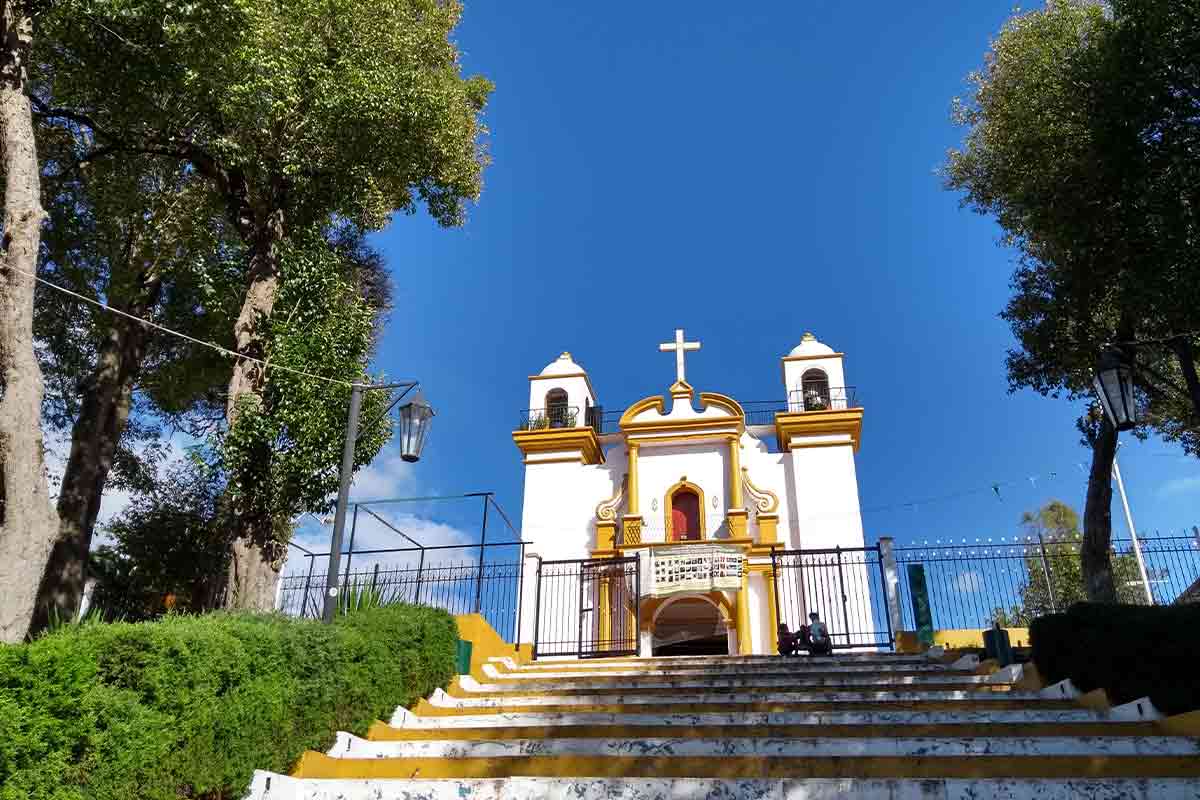
One of the most popular backpacking spots in Southern Mexico, here you’ll enjoy many cultural sights as well as impressive sceneries outside of town too.
Within San Cristóbal, the best things to see include the picturesque Iglesia de Guadalupe , which is set on top of a hill, as well as the Casa Na Bolom, which is an old house-turned museum that showcases the heritage and culture of the local indigenous tribe of the Lacandon Maya.
The Parque Central is a nice area to go for a stroll, where you can try out local street dishes such as Tamales Juacanes , as well as to get some good photos of the Catedral de San Cristóbal de las Casas.
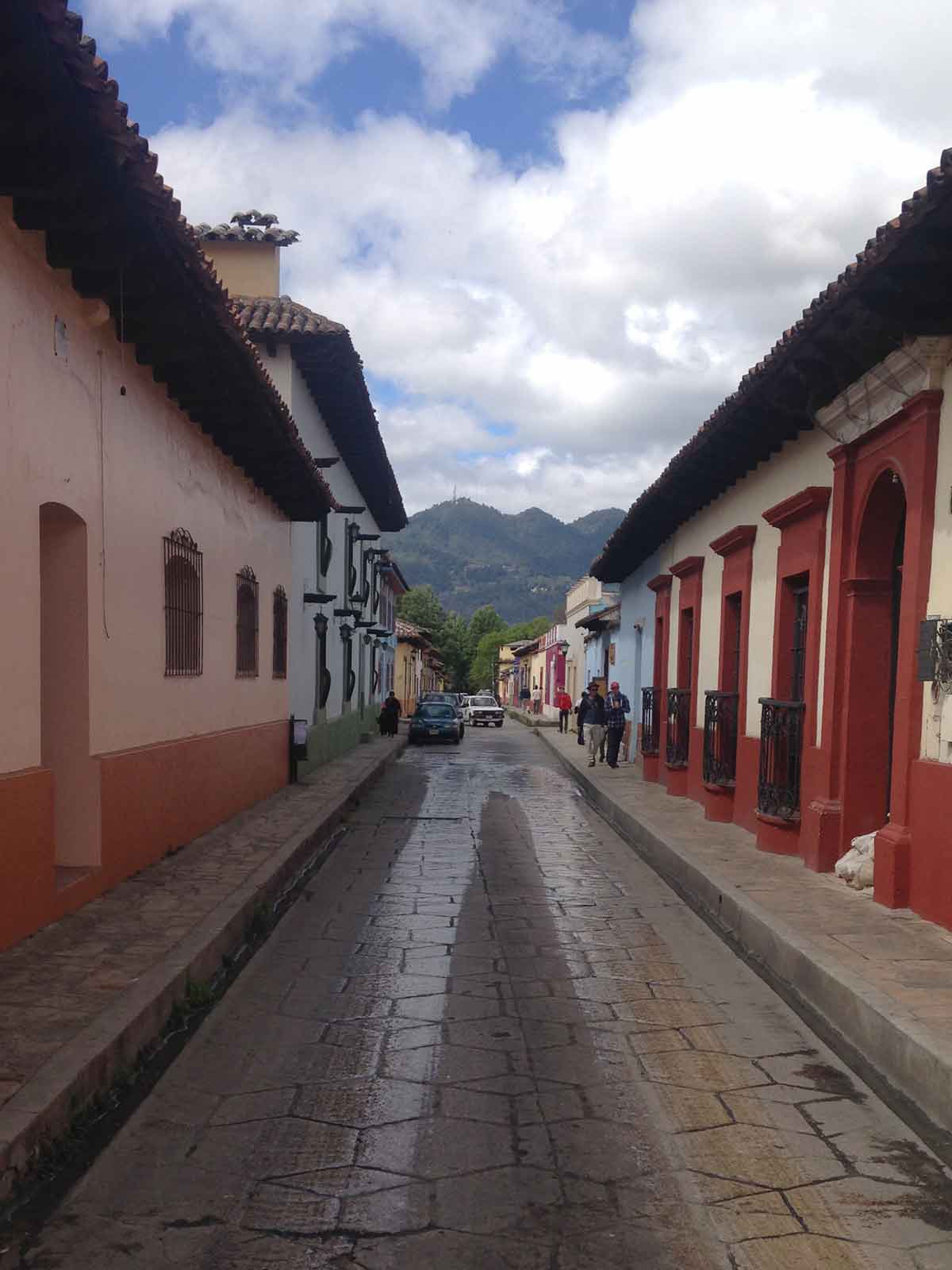
The arguably best thing to see here (and if not in the whole state) is Sumidero Canyon , which is just outside of the town.
This stunning canyon features perfectly vertical cliffs that spiral upwards of 3,300ft above the river below.
Here you can take a boat tour to get the best glimpses of the stunning canyon, as well as get up and close with numerous wildlife such as the American Crocodile, Central American River Turtle as well as Spider Monkeys.
Tuxtla Gutiérrez (Days 7-8)
Lastly on our adventure we head to the capital of Chiapas.
Tuxtla tends to be skipped by most travellers as it’s not so tourist friendly compared to the rest, however we recommend a night here to see some of the lesser known gems of the region .
Home to some of the best preserved ruins of the region, you must visit Museo Regional de Anthropologia e Historia where you can see numerous fossils and exhibits, with some dating up to 300 million years old!
After this you can head to the Dr. Faustino Miranda Botanical Garden, which is home to many rare endemic plants of the region, including colourful orchids and over-sized cycads.
When you’ve got free time between these activities, be sure to head to the Plaza Civica, where you can see many sites from the white-washed Catedral de San Marcos to the Municipal Hall .
It’s also a good area to find a local restaurant and try out more of the local Chiapas cuisines, such as Ningüijute as well as the Chipilin herb.
From here you can easily take a flight back to Mexico City or Cancún and onwards.
Alternatively (if you have more time), you can head west towards Oaxaca with its world-class beaches, or south into Guatemala to start your Central American adventure!
Another worthy sight are the El Chiflon Waterfalls, which are easy to get to from the city. We recommend heading on this tour , which also includes a visit to the picturesque Montebello Lake.
Best time to visit Chiapas
We’ve spoken a lot about the best time to visit Mexico on this blog (George is absolutely obsessed with checking the weather when we travel).
The best time to head to Chiapas are during the months of March and April .
Still within the dry season, here daily average temperatures in San Cristóbal are optimal with between 57-61°F, highs of 73°F and lows of 57°F.
In Palenque these range with daily averages of 80-83°F, highs of up to 94°F and lows of 70°F.
Within all of the major destinations, you can expect between 1-3 inches of rainfall throughout each of these two months .
Aside from the weather, it’s also a great time to visit as the Spring season tends to receive less tourists than the busier Winter and Summer periods.
If heading during the wet season, then you’ll need a good quality poncho which is especially the case when heading to Palenque
Chiapas Backpacking Tips
⬇️ Below you can find a list of our top recommendations for Chiapas:
- 🛏️ – Hotel Cabañas Safari (Palenque), Posada del Abuelito (San Cristobal de las Casas).
- 🌮 – Real de Guadalupe in San Cristóbal is full of cheap eats and nice restaurants, with my favourite being Carajillo Cafe. In Palenque, head to the Zócalo for lots of great street food options.
- 🏛️ – Sumidero Canyon, Palenque Ruins, Guadalupe Church (San Cristóbal), Agua Azul Falls. See this list of top rated tours in Chiapas.
- 🍺 – Panóptico is a nice bar in San Cristobal, and to be honest anything else around the plaza and Real de Guadalupe does the job.
- 💡 – When staying in Palenque, look to book yourself in one of the hostels/hotels in the archaeological zone. Not only are you in a nicer area (middle of the jungle!) but you’ll be able to get to the ruins much earlier than the tour buses. Double win.
The diverse region of Chiapas is perfect for backpackers, with some picturesque towns to be explored with all of their charm and hidden gems .
There’s also some breathtaking landscapes such as Sumidero Canyon and Agua Azules too, not to mention the vast exotic wildlife to be experienced in its dense jungle.
In this itinerary-style guide, we’ve explored the Chiapas region including the very best destinations to visit, how much time to spend in each, what to see and also our own top recommendations.
Be sure to come back to this article whenever you need help planning, or even to suggest your own tips once you’ve completed the adventure yourself.
Also see our backpacking Mexico guide for more travel inspiration!
👉🏽 P.S. If you’ve found this guide helpful, buy us a coffee here to say thanks! Or, support us by downloading our South America Travel Bible to get our best content.
“ Dear traveler! Some links in this post contain affiliate links. Meaning, if you click through and make a purchase, book a hostel or sign up for a tour, we may earn a small commission at no additional cost to you . Your support means a lot and helps us to carry on traveling and maintaining the quality of this site for you.”
Similar Posts
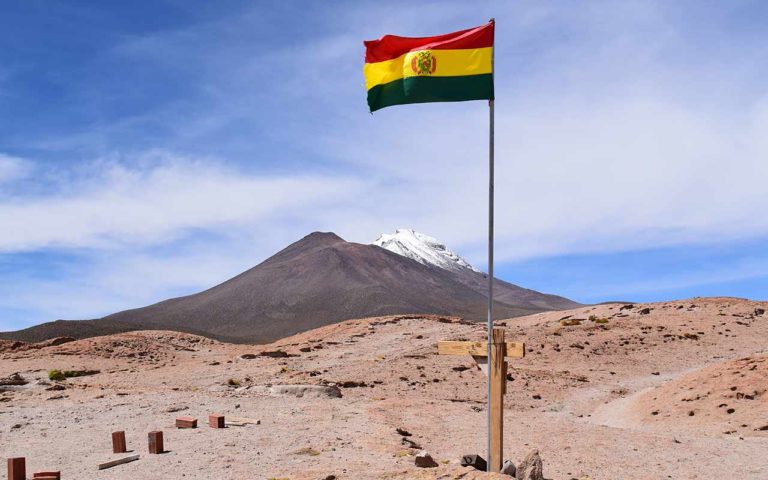
Backpacking Bolivia Itinerary
Welcome to our backpacking Bolivia itinerary. Bolivia is a great destination for tourists who want to have an authentic South American experience, so it’s one of the best options to consider. The exciting, yet mystical allure of Bolivia has long made it one of the most popular countries to backpack in South America. Backpacking Bolivia…
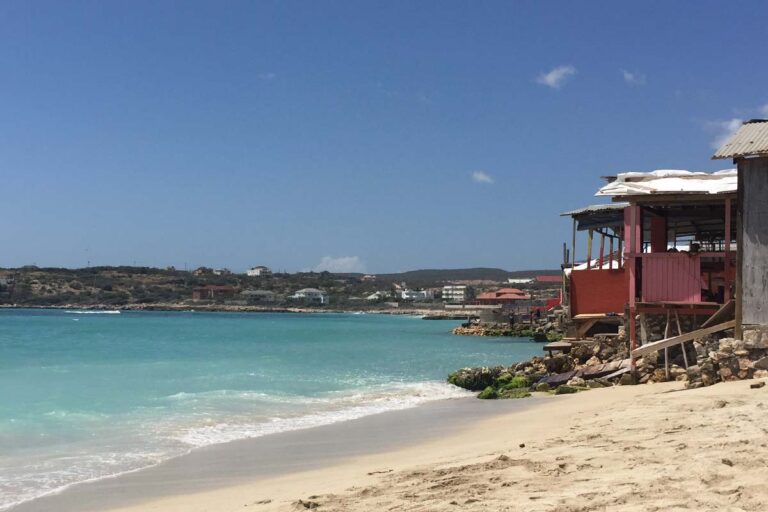
Backpacking Jamaica Itinerary
Welcome to this backpacking Jamaica itinerary. Visiting Jamaica at least once is something we all should do if we get the chance. It’s not only the birthplace of jerk and reggae, it’s home to some of the most breathtaking Caribbean beaches, natural sites, culture, and delicious food. There are many reasons to visit this wonderful…
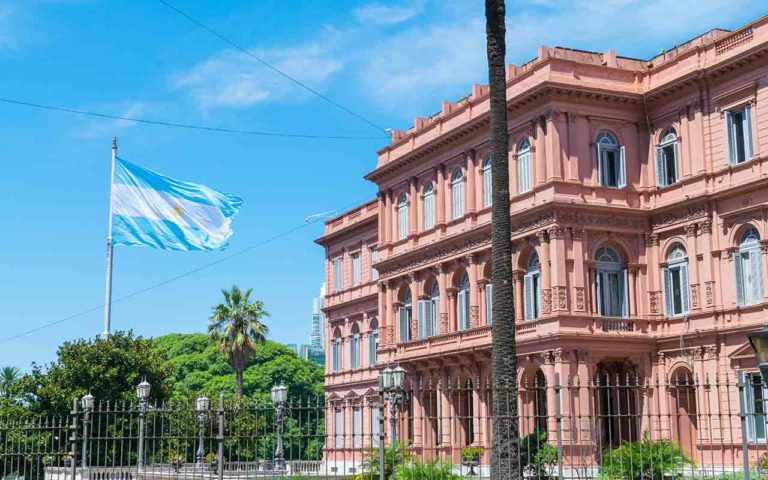
Backpacking Argentina Itinerary
Welcome to this backpacking Argentina itinerary! Argentina is an incredible country to visit because it’s full of exciting cities, a great selection of natural wonders, and many amazing highlights you simply can’t miss. Backpacking Argentina There’s also a passionate, romantic culture, and people are very welcoming (depending on where you go), so it’s truly a…
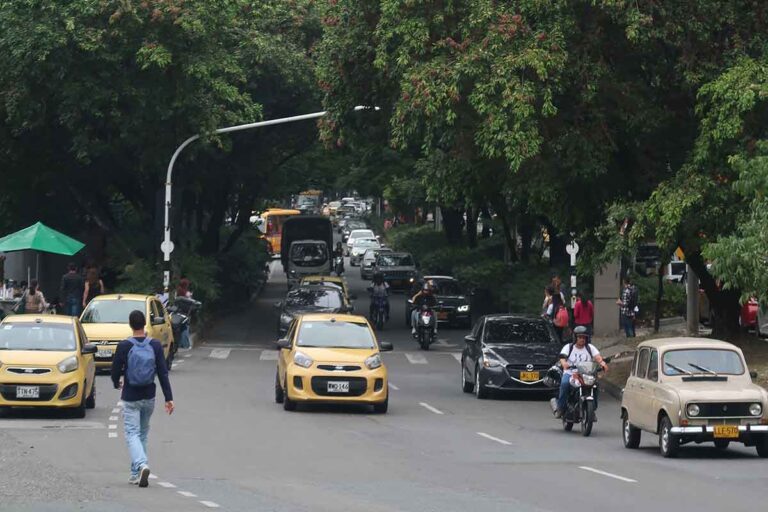
3 days in Medellin itinerary
Welcome to our 3 days in Medellin itinerary for backpackers. Set in the Aburrá Valley, Medellin is a city known for its warm pleasant climate and its inviting friendly vibe that welcomes people from all over the globe. Over recent years Medellin has become one of the most popular cities in Colombia to visit and…
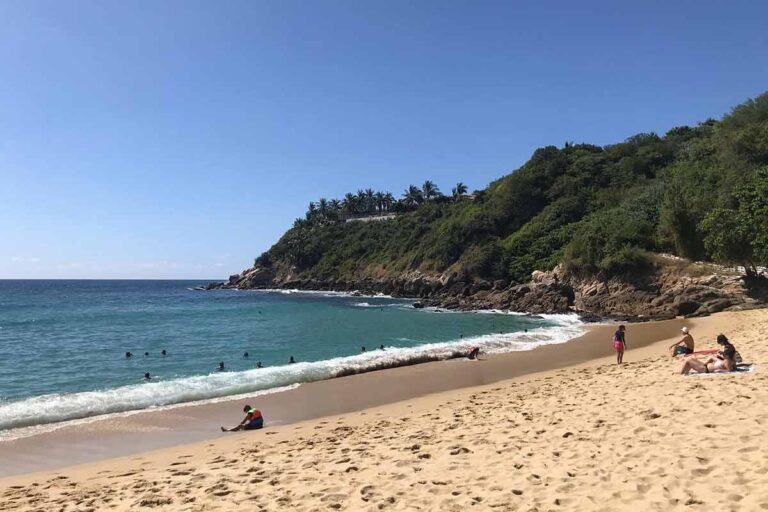
Puerto Escondido, Mexico Backpacking Guide
Welcome to Puerto Escondido! This town is one of the up and coming beach destinations of Mexico, with its name comfortably perching on most backpacking itineraries. Despite its growing popularity, Puerto Escondido still retains its authentic vibe and is one of our favourite places to visit in all of Mexico. Here you can find an…
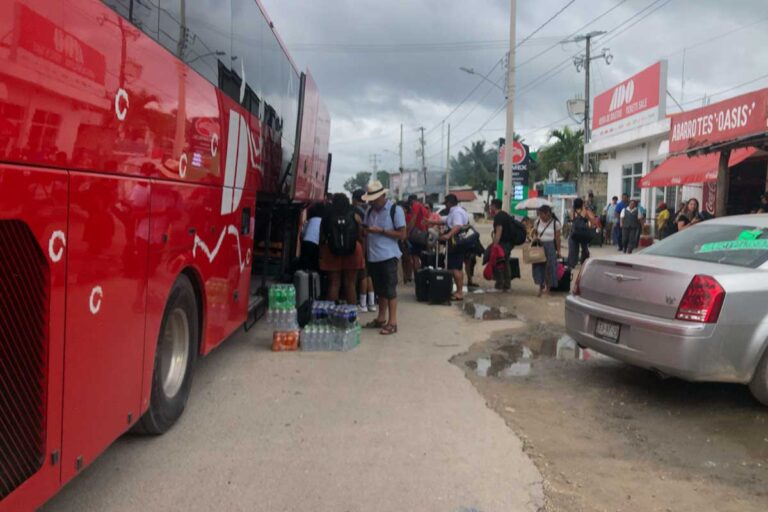
How to get to Mahahual
In this practical transport guide, we’ll look at 4 different ways on how to get to Mahahual and we’ll also give you our personal opinion on which is the overall best route to take. We’ll also touch on other important topics such as safety and when is best to visit, as well as how to…

16 Unmissable Things To Do in Chiapas, Mexico
By: Author Stefania Guglielmi
Posted on Last updated: March 18, 2024
Categories Mexico , North America
Looking to visit Chiapas, Mexico? This state in the South of Mexico is incredible! Check out the best things to do in Chiapas + useful travel tips.
Chiapas is the southernmost state in the country of Mexico and is still quite a hidden gem. If you’re looking to escape the crowds of Yucatan, you’ll find Chiapas way more authentic and less touristy .
But what is Chiapas known for besides being home to a large number of Mayan ruins? This region of Mexico contains the largest population of indigenous people in the country.
It’s one of the only places in the world where you can explore old ruins and colorful colonial towns on the same day.
Chiapas in Mexico also contains several natural wonders such as the Canyon del Sumidero and the Sima de Las Cotorras . So, are you curious? Let’s take a closer look at what to do in Chiapas, and everything this incredible Mexican state has to offer!
Table of Contents
WANDER AROUND SAN CRISTOBAL DE LAS CASAS

San Cristobal de Las Casas is widely considered to be th e cultural capital of Chiapas and is one of the state’s most popular tourist destinations.
The reason why it’s so popular is because it still retains the appearance of an old, colonial Spanish village. It boasts red-tiled roofs and cobblestone streets which reminded me a bit of the streets in Puebla .
It also has a very strong indigenous population , with many of its people using clothes and customs from pre-Columbian times. Because of this, visiting San Cristobal is much like taking a step back in time .
There are also a number of markets to be found in San Cristobal, making it the perfect place to go shopping while you’re in Chiapas.
Things you can’t miss in San Cristobal de Las Casas include:
- Wandering around the historic center , where you’ll find the Zocalo and the Cathedral.
- Visiting the museums, among which stand out Na Bolom and Centro de Textiles del Mundo Maya .
- Browsing through the bustling markets .
- Taste the traditional Mayan drink, Pox .
CLIMB PYRAMIDS AT THE PALENQUE RUINS

If you really want to see some history, you have to visit the Palenque Ruins . This is an ancient Mayan city that still stands in near-perfect condition.
It’s one of the most thoroughly investigated Mayan sites today, thought to contain some of the best examples of Mayan sculpture and architecture in the world.
READ ALSO: A Day Trip to Palenque from San Cristobal de las Casas
However, it’s also one of the ruins of which the least information is known. Most of what has been discovered came from hieroglyphic inscriptions . It’s supposed to have had its heyday in the 7th century , though the reasons for its decline are unclear.
In fact, it was hidden by the dense jungle for many centuries , as nature took over the pyramids when humans left. The excavated area spans a total of 2.5 square kilometers, but that’s believed to be only only 10% of the city!
In Palenque there are many gorgeous temples and palaces that you must see for yourself. The best part of all is that you can climb these pyramids, unlike most other Mayan ruins in Mexico .
If you’ve ever wanted to catch a glimpse of how the ancient Mayans lived, this is your chance. Check out HERE how to get to Palenque, Mexico + other useful info for your visit.
➤ The Chiapas: Agua Azul, Misol-Ha & Palenque Tour lasts a full day. You’ll visit the jaw-dropping Agua Azul waterfalls, and then head to Misol-Ha through the tropical jungle. Finally, step foot in Palenque, exploring the ancient site with a professional guide. ➥ BOOK IT HERE
FEEL SMALL AT THE CANYON DEL SUMIDERO
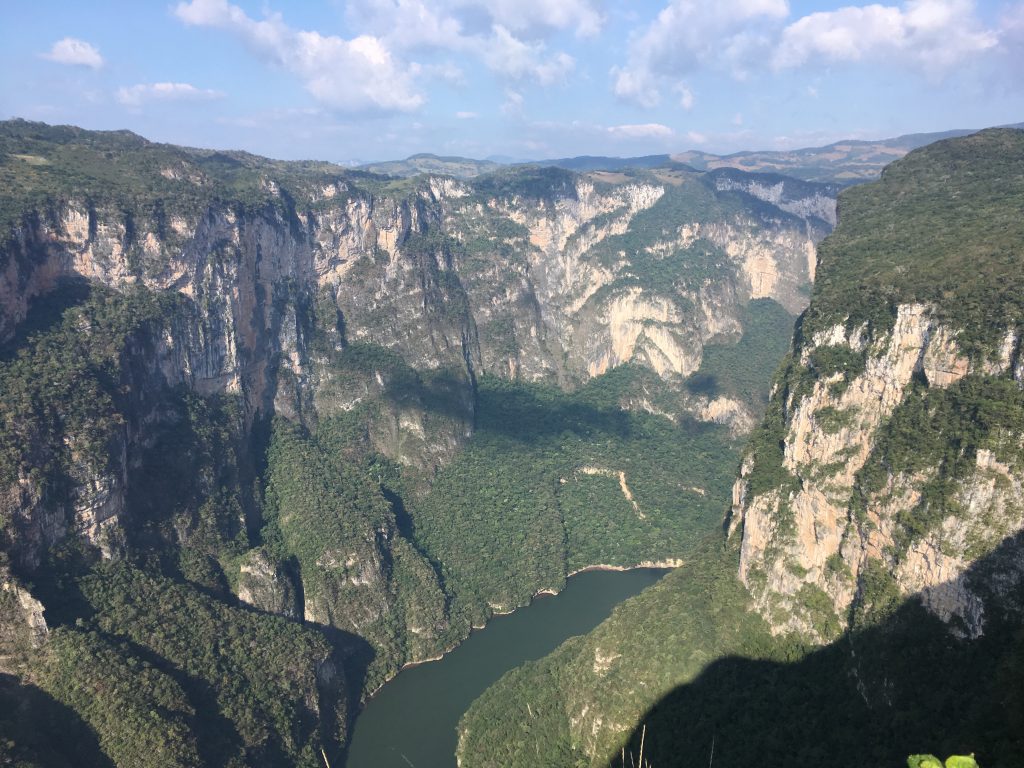
The Sumidero Canyon is a massive canyon located near Chiapa de Corzo. This natural attraction is as old as the Grand Canyon in the United States and a popular tourist spot in the region. It ranks high on the Chiapas things to do list!
While you’re there, you can take a boat tour of the canyon in which you’ll see waterfalls, caves, and animals such as crocodiles and spider monkeys. The canyon walls, which are over a thousand meters high, are a wonder to look at!
The canyon is also surrounded by a national park, popular for extreme sports such as rappelling, spelunking, and mountain biking.
➤ Check out this Cañon Del Sumidero, Miradores from San Cristobal de Las Casas . You’ll travel to the stunning natural park, where you’ll marvel at the walls, and look out for the wildlife. You’ll also enjoy a boat ride along the river, and visit the city of Chiapa de Corzo. ➥ BOOK IT HERE
VISIT MISOL-HA WATERFALL AND AGUA AZUL

Two of Chiapas’s most impressive natural wonders are the Misol Ha waterfall and Agua Azul waterfalls . Agua Azul is a series of cascades while Misol-Ha is a single waterfall with a height of 35 meters. You can’t miss them when you visit Chiapas!
Both sites are only an hour away from each other and can –be visited on the same day either from Palenque or San Cristobal de Las Casas. They both feature clear, blue waters and pools that you can swim in.
READ ALSO: Misol Ha, Agua Azul, and Palenque Ruins: a Day Trip from San Cristobal de Las Casas
➤ This Agua Azul and Palenque Day Trip From San Cristóbal is a full-day excursion. It takes you to explore the waterfalls, and includes a visit to the Palenque ruins with a professional guide, all entrance fees covered. ➥ BOOK IT HERE
HORSEBACK RIDING TO CHAMULA

Chamula is another indigenous town near San Cristobal with its own language and customs. The town is surrounded by beautiful forests and hills. What better way to explore this countryside than by going on a horseback riding tour?
You’ll be greeted with many views of the spectacular Chiapas countryside . The ride itself lasts for about an hour and a half, and it doesn’t require any previous horseback riding experience. Although if you have some, you probably won’t hurt like me the next day!
A couple of agencies that offer the experience are Chultot Viajes Turisticos , and Chambajlum Tour Operator .
After the ride, you’ll be able to experience the unique culture of Chamula , which leads to the next point.
WITNESS THE RELIGIOUS RITUALS IN SAN JUAN CHAMULA

Visiting Chamula is much like seeing a country within a country . This municipality enjoys autonomous status within the country of Mexico.
Visiting it is one of the best ways to see how indigenous people live today. It’s an entirely unique culture with its own language, clothes, and architecture.
The people here also have fascinating religious beliefs, influenced by Catholicism and Paganism . This is best exemplified in Templo de San Juan , a colonial style church in which people kneel to pray on hay, surrounded by hundreds of tea light candles.
At the same time, they offer their Gods a variety of goods such as Coke bottles and chickens . Witnessing one of the rituals here is truly a magical sight to behold and something you can’t afford to miss.
A reminder: you are not allowed to take photos or videos inside the temple. Please respect the rule!
➤ If horse riding isn’t for you, check out the Tour to San Juan Chamula & Zinacantan . You’ll explore the historic center of San Cristobal de las Casas, and then head to the villages of San Juan Chamula and Zinacantan with a guide. ➥ BOOK IT HERE
➤ An alternative is this Bike Tour Chiapas Indigenous Peoples . In a few hours, you’ll discover the country life of the region, visiting local towns. Learn about the culture and traditions of the Tsotsil Mayans, and ride along stunning landscapes. ➥ BOOK IT HERE
RAPPEL DOWN THE SIMA DE LAS COTORRAS
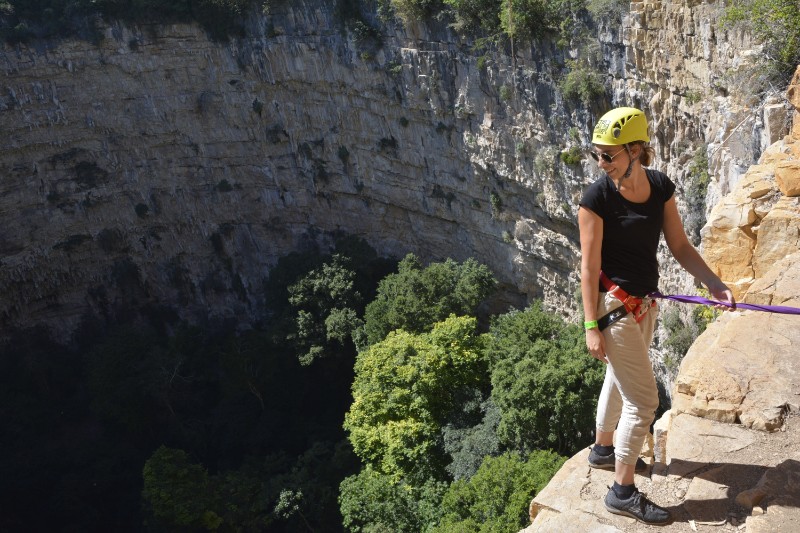
Sima de Las Cotorras is a huge sinkhole located in Chiapas, but unlike the cenotes, this isn’t filled with water but with a forest.
Along with being an incredible natural wonder in its own right, it’s also home to thousands of Mexican parrots . Every morning, you can see these parrots fly out of the sinkhole at once, which is a sight unlike any other.
This makes Sima de Las Cotorras a popular destination for bird watchers around the world.
It’s also a great spot for rappeling if you’d like to try something adventurous… I tried and it was tons of fun but a little scary, especially if you are afraid of heights! On top of all this, the sinkhole also contains a number of wall paintings from the ancient Zoque culture .
➤ Unless you’re willing to rent a car and drive through the countryside (and some sketchy areas), I recommend coming here with a Sima de las Cotorras Tour . Rappel down this incredible spot for an adrenaline rush and some incredible views. ➥ BOOK IT HERE
SWIM AT CENOTE CHUKUMALTIK
If you follow this blog, you’ll know I’m probably the biggest fan of cenotes , so I couldn’t leave this one out of this guide. Chiapas isn’t famous for cenotes like Yucatan, but you can find a beautiful one here.
Cenote Chukumaltik is a giant sinkhole filled with crystal-clear waters. It’s a perfect place for swimming, and it’s also a popular spot for scuba divers.
There are many interesting sights to be seen under the water such as petrified trees , stalagmites of seaweed , and an altar of the Virgin Dolorosa . It’s a great spot for beginners if you’ve never tried scuba diving before.
Cenote Chukumaltik is still somewhat unknown compared to other attractions, so you’ll likely have the place to yourself.
YOU MIGHT ALSO LIKE: 6 Unmissable Cenotes in Tulum 11 Cenotes You Need to Visit Near Valladolid 11 Incredible Cenotes in Playa del Carmen
SOAK UP THE VIEWS AT EL CHIFLON WATERFALL

If you love nature, then this is something you don’t want to miss. El Chiflon is a chain of five waterfalls that can be found in the municipality of Tzimol. The tallest of these waterfalls is 120 meters high.
Also, if you hike to the top of the aptly named Rainbow Waterfalls , you’ll be greeted with a beautiful view of a rainbow below.
Many people who’ve visited Cascada El Chiflon describe it as one of the most beautiful natural wonders they’ve ever seen.
Along with simply enjoying the sight itself, there are several other activities you can participate in. These include hiking , swimming , and even zip-lining .
➤ The Chiflon Waterfalls & Montebello Tour from San Cristobal will bring you to discover the remote Chiflon Waterfall (where you’ll be able to swim), then you’ll cross one of the lakes at Montebello Lakes National Park on a raft. ➥ BOOK IT HERE
TAKE A TOUR TO THE COFFEE PLANTATIONS

This is something that coffee lovers like me are sure to appreciate ! Chiapas is famous for its fragrant coffee, boasting lush coffee plantations and around 400 million (!!) coffee plants.
The region grows what’s considered the best quality coffee in the country , besides producing 30% of Mexico’s entire production.
The volcanic soils and climatic conditions play a big part in the exquisite taste and body of the drink. They even earned it the Denomination of Origin in 2003 .
You’ll find that there are many fincas you can visit for a tour around the plantation, some delicious tastings, and coffee shopping.
It’s a good opportunity to learn about the making of coffee, the daily lives of local farmers, and how coffee production impacts the local economy .
Some of the fincas worth checking out include Finca Hamburgo , Finca Irlanda, and Finca Argovia .
TAKE A DAY TRIP TO THE LAGOS DE MONTEBELLO

Lagos de Montebello (Montebello Lakes National Park) is near the Guatemalan border, and consists of 59 beautiful lakes . The colors of these lakes are quite striking due to their unique mineral contents.
The waters you’ll find here are various shades of green and turquoise ; some of them are even purple or reddish black. Many of the Lagunas Montebello are suitable for swimming and kayaking .
The park also features ancient Mayan ruins from the pre-Colombian era. Stand at the top of its main pyramid to get an incredible view of the lakes below.
➤ The Chiflon Waterfalls & Montebello Tour from San Cristobal will let you soak up the beauty of Chiflon Waterfall (where you’ll be able to swim). Then, you’ll enjoy crossing one of the lakes at Montebello Lakes National Park on a raft. ➥ BOOK IT HERE
HIKE UP VOLCÁN TACANÁ
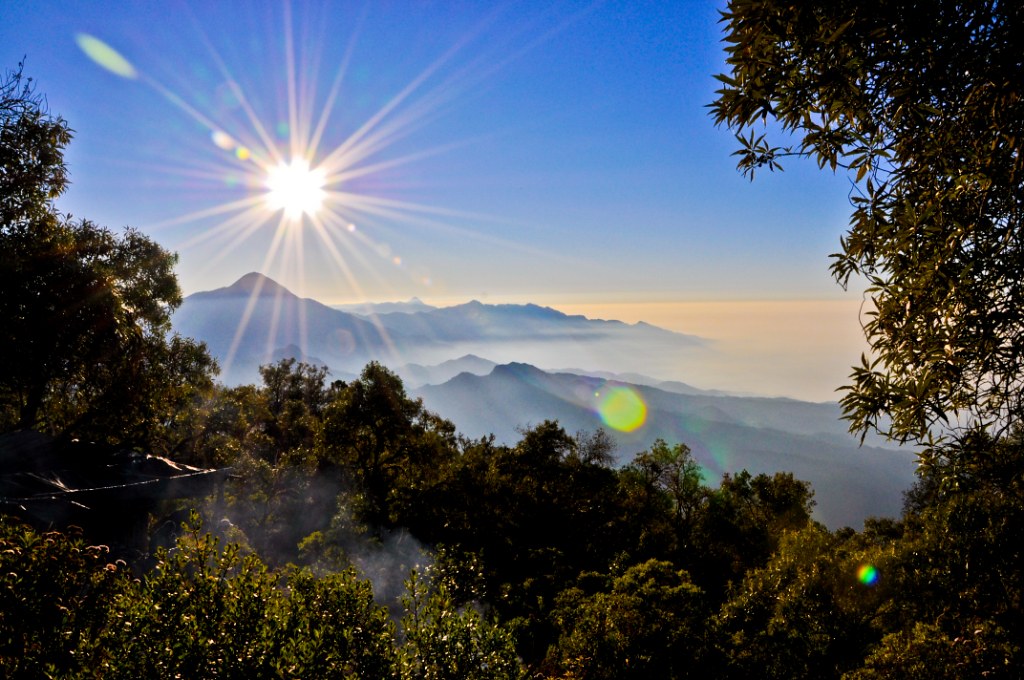
Volcán Tacaná is an active volcano that can be found on the border of Mexico and Guatemala, and it’s one of the highest peaks in Central America.
There are two different paths to the summit, one starting in Mexico and one in Guatemala. The Mexican path is not only easier to get to, but it’s also considered to be one of the best hiking experiences in Central America.
This hike will take you through several different landscapes, including small villages, jungles, and volcanic forests. If you enjoy hiking, then this is something you must try for yourself.
VOLUNTEER IN CHIAPAS
Have you ever wanted to volunteer somewhere in Mexico but had no idea where to start from? It’s not always easy to look for good volunteer opportunities in Mexico on your own. Besides, agencies can charge even thousands of dollars to find you a volunteer placement.
On Worldpackers, however, there are plenty of opportunities when it comes to volunteering in Chiapas. You can help a local NGO, teach music to children, or work at a hostel in San Cristobal de Las Casas.
READ ALSO: A Complete List of Volunteering Opportunities in Mexico
You simply have to pay a yearly membership that gives you access to thousands of volunteer opportunities all over the world. The best part is that it’s very affordable. The yearly membership usually costs $49, but use this link for $10 OFF .
LEARN ABOUT TEXTILE PRODUCTION IN ZINACANTAN
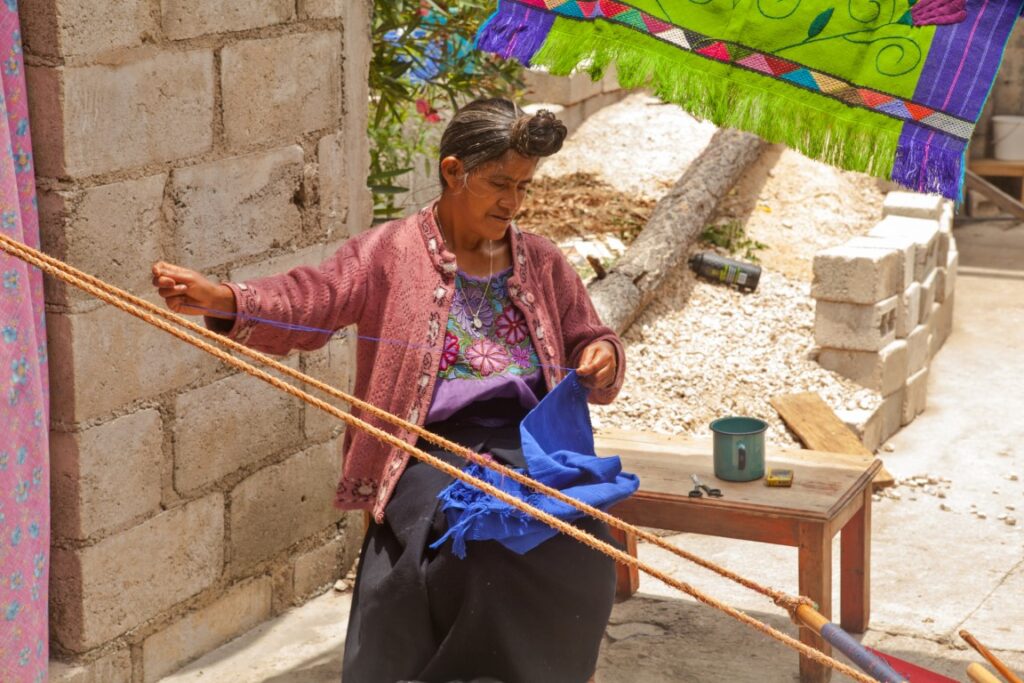
Zinacantan is a small village in the state of Chiapas, known for its textile production . There’s a great number of textile workshops in town, most of which are family-run, where gorgeous hand-woven garments are crafted.
You’ll find exquisitely embroided blouses and dresses, showcasing designs inspired by their culture , and traditional clothing.
But even more fun than window shopping (or even actual shopping!) is learning about it!
➤ The Customs of Indigenous Villages of Chiapas is a 6-hour experience. A local will introduce you to the traditions and legends of their people, and the history of the town. Visit main landmarks, and learn about textile production with a family of artisans. ➥ BOOK IT HERE
VISIT CHIAPA DE CORZO
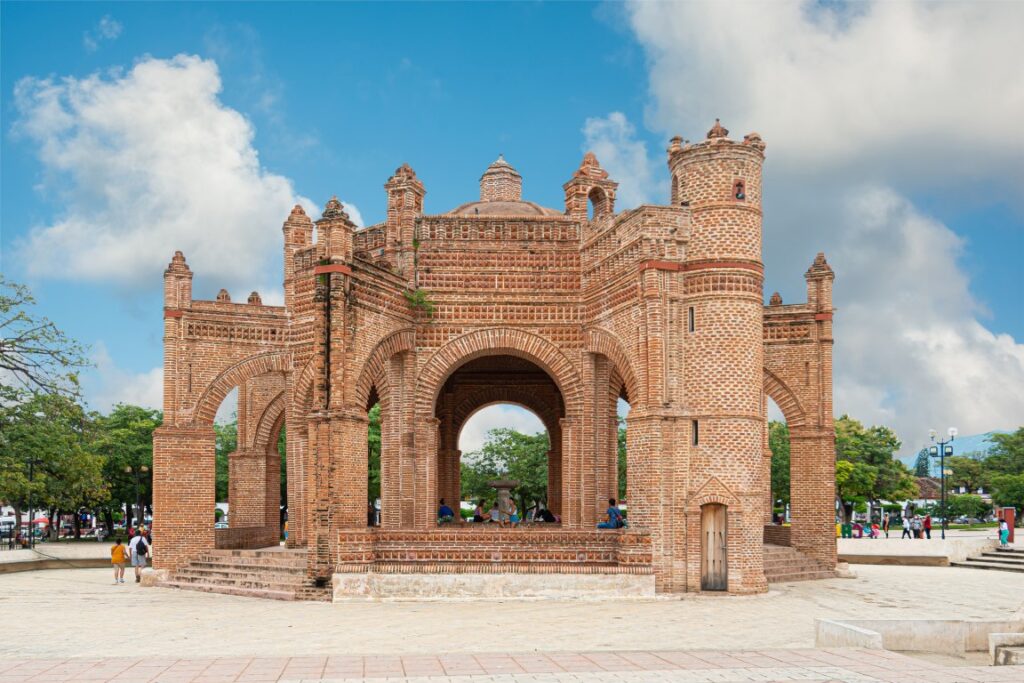
Chiapa de Corzo is a small town in Chiapas, known for its namesake archaeological site . The ancient city dates back to pre-Columbian Mesoamerica, and saw its heyday around 600 BC.
The town of Chiapa de Corzo, however, has beautiful attractions of its own. One of the landmarks you can’t miss is the main square, where you’ll find the stunning Fuente Mudejar , built in Moorish style.
Wide open streets surround the plaza , with colorful shops selling everything from traditional garments to the town’s local drink, Pozol.
The Templo de San Jacinto , the picturesque alleys , and the local history museum housed in the former Santo Domingo convent are worth a visit.
➤ A good way to visit is by joining this Chiapa de Corzo: Tradition, Gastronomy, and Canyon del Sumidero . It’s an 8-hour excursion that takes you on a comprehensive tour around town. Learn about the history of the Parachicos, visit traditional houses, and savor local dishes. ➥ BOOK IT HERE
EXPLORE THE RUINS OF YAXCHILAN AND BONAMPAK
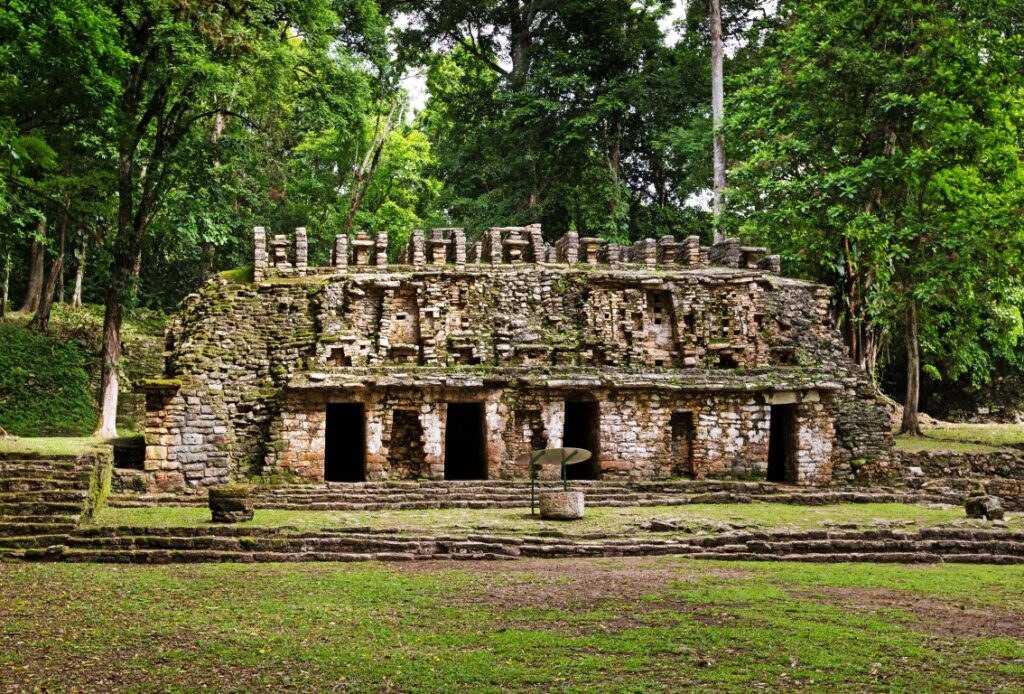
The Yaxchilan and Bonampak ruins are two of the most hidden Mayan sites, nestled deep in the Chiapas jungle . As such, the archaeological sites are relatively unknown , retaining their authenticity. Besides, getting there is quite an adventure!
A boat ride along the Usumacinta River will take you to Yaxchilan, from where you can reach Bonampack by heading further into the jungle.
The sites date back to approximately 300 AD, and retain fascinating paintings and carvings on the walls. While over 100 structures dot Yaxchilan, it’s believed that 80% of the original city hasn’t been unearthed!
The ruins are fascinating to explore, and the lack of tourists will make you feel like you’re in your very own Indiana Jones movie. You’ll be wandering around ancient structures and the thick jungle like an true adventurer.
WHERE TO STAY IN SAN CRISTOBAL DE LAS CASAS
When staying in Chiapas Mexico, it’s recommended that you use San Cristobal as a base . Not only is it an amazing cultural experience in its own right, but it’s also relatively close to the other sites on this list. Book your accommodation by using the map below ⬇
Of all the hotels available in San Cristobal, none are better than Villas Casa Morada . This hotel comes with a number of great amenities including a restaurant, a cafe, a bar, cable TV, and free WiFi.
The rooms also come equipped with a fireplace, and a kitchenette with microwave and refrigerator. Some of them are on two levels.
My favorite part was the fireplace that they kindly helped us light . After over a month on the road, there was nothing better than ordering pizza and beer and having a night of Netflix and chill in front of the fireplace!
San Cristobal de Las Casas can get very chilly at night, so it’s certainly appreciated.

The hotel is also located near many of San Cristobal’s attractions. The Na Bolom Museum is only a five minutes’ walk away, and the Santo Domingo Temple is only fifteen minutes away. All these things make it a great mid-budget option for your stay in Chiapas, Mexico.
Check out RATES & AVAILABILITY for Villas Casa Morada
OTHER MEXICO ARTICLES TO CHECK OUT
8 Top Things To Do in Oaxaca
The One and Only 3 Days in Mexico City Itinerary
Isla Holbox, Mexico: The Complete Guide To This Island Paradise
Stefania Guglielmi is the founder of Every Steph. Originally from Bologna, Italy, she's been traveling full-time since 2016 and has visited over 50 countries across 6 continents. She believes sustainable travel and luxury travel can go hand in hand and has been advocating for responsible tourism since 2014. Stefania's advice and travel experiences have been featured in important publications such as Business Insider, Refinery29, and Yahoo Money.
Sign me up for the monthly newsletter!
Thursday 4th of November 2021
Hi Julien! When I wrote this article they weren't selling the activity on the Internet, just in a local travel agency, but this one is the exact tour I went on: https://www.civitatis.com/en/san-cristobal-de-las-casas/indigenas-communities-horse-ride/?aid=8495
Wednesday 3rd of November 2021
Hi Steph, loving all this info, you didn't provide a link to book to horseback ride to Chamula, any chance you remember what tour/service you used for that? thanks!
Aundrea Grieco
Saturday 4th of September 2021
Thank you for this article Steph! Really appreciate it! :) Learned a lot.
Monday 6th of September 2021
So glad it was useful!! :)
Man Everywhere
Friday 10th of January 2020
You need visit Chiapas on this hollydays, during january 9 january 23 all the towns celebrate the parachico fest! YOU SHOULD LOVE IT! it's a super crazy party where you can feel all the love and culture from Chiapas.
MÉXICO: 50 POSTS QUE AYUDAN PARA VIAJAR [1] | Viatges pel Món
Wednesday 8th of May 2019
[…] 12 Unmissable Things To Do in Chiapas, Mexico | Every Steph […]
¿Qué estás buscando?
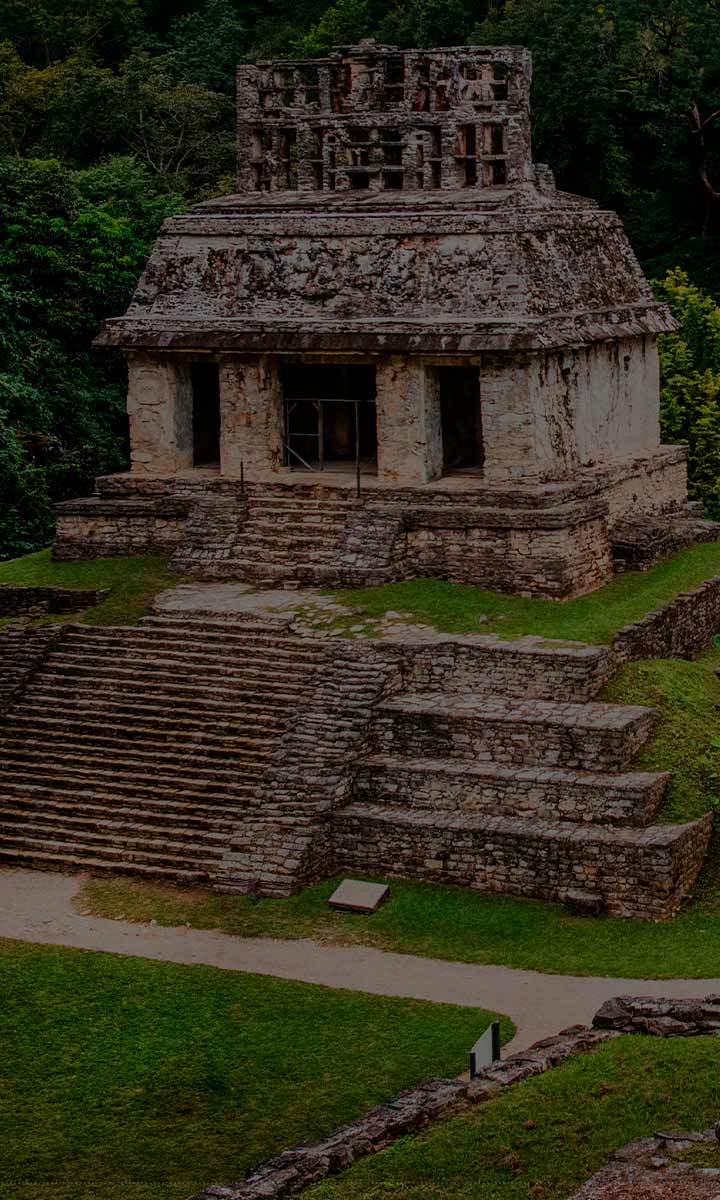
Spirit of freedom, conscience, mysticism and adventure
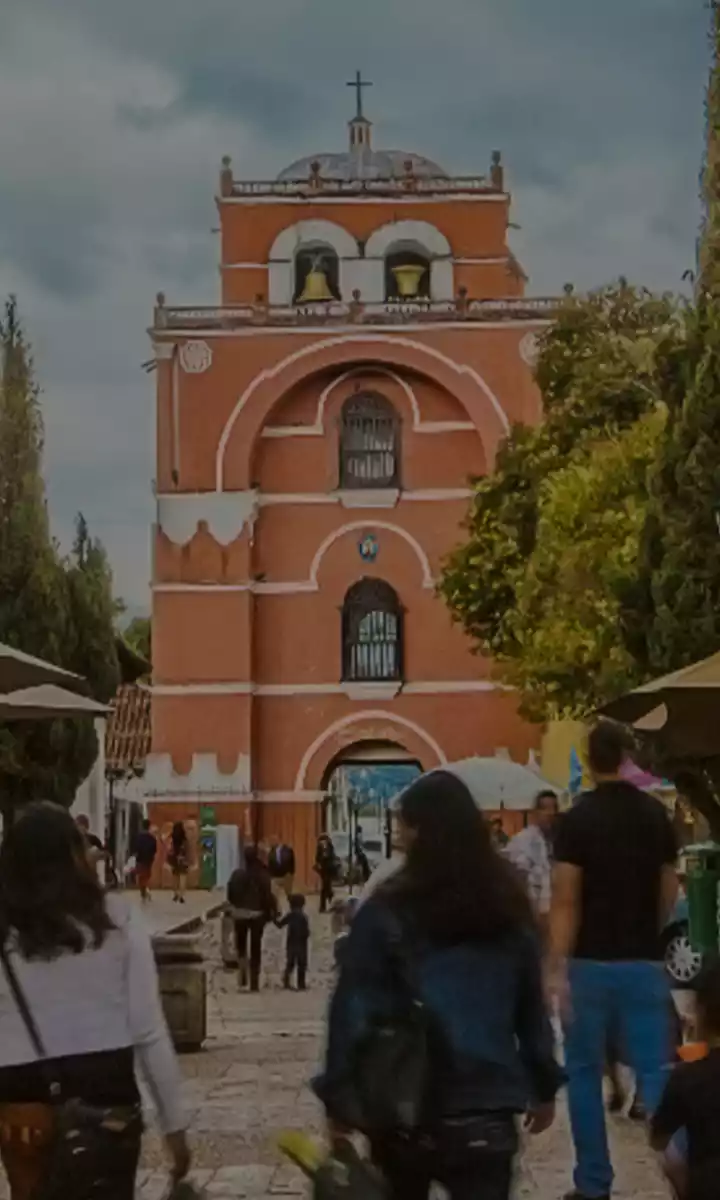
Main Destinations
Your journey begins in our most emblematic cities and ecotourism centers with all the services you need to explore Chiapas.
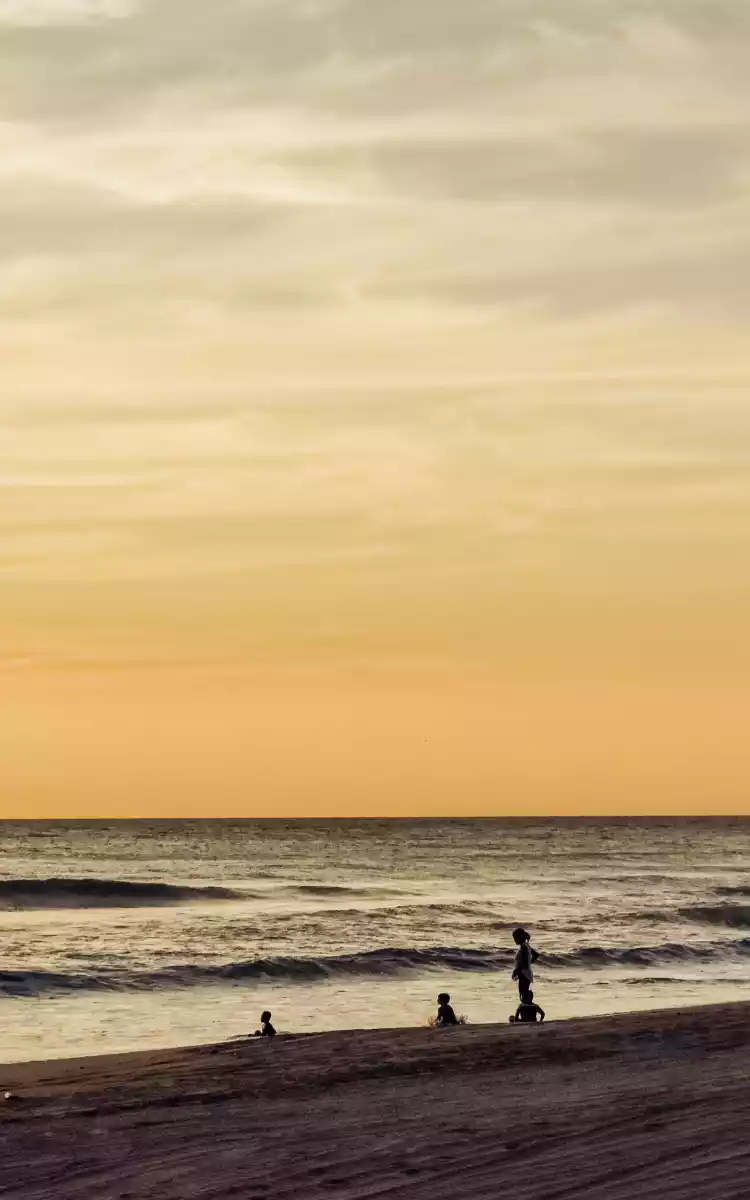
Tourist Routes
We have designed different routes for you that will take you through the most exciting places in Chiapas.
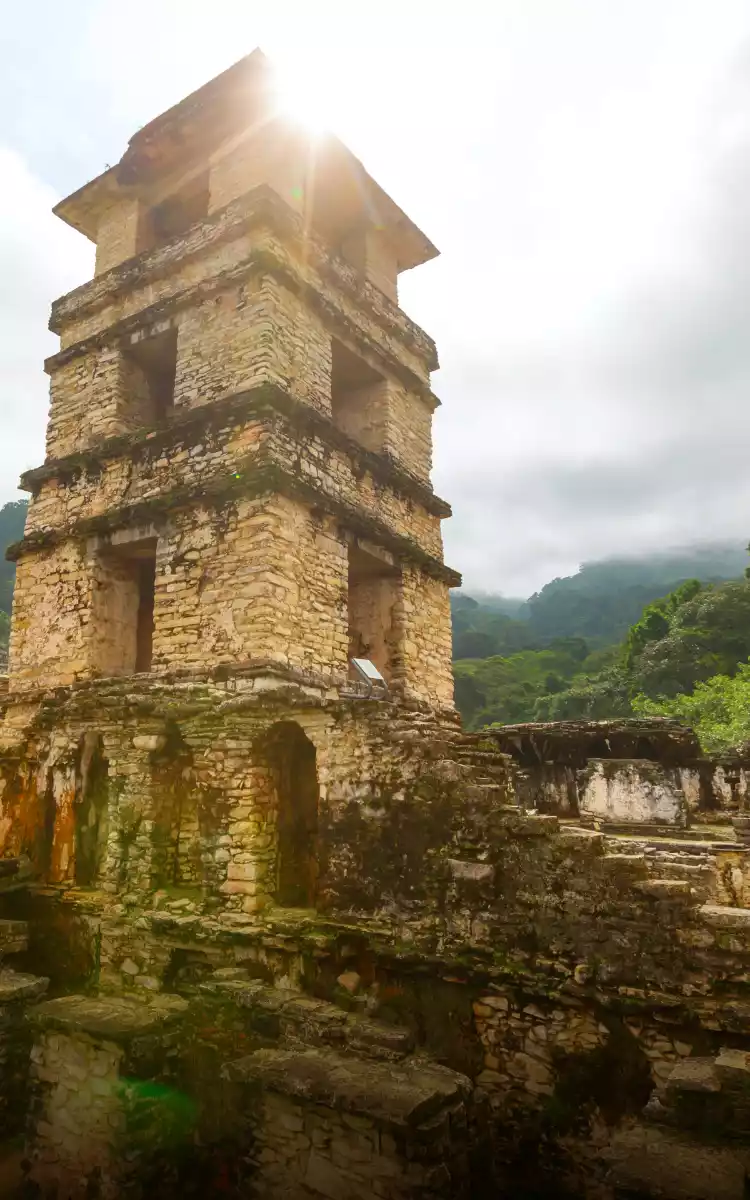
Travel Blog
Chiapas is a parade of colors, smells, flavors, traditions and culture. Find out through our blog.
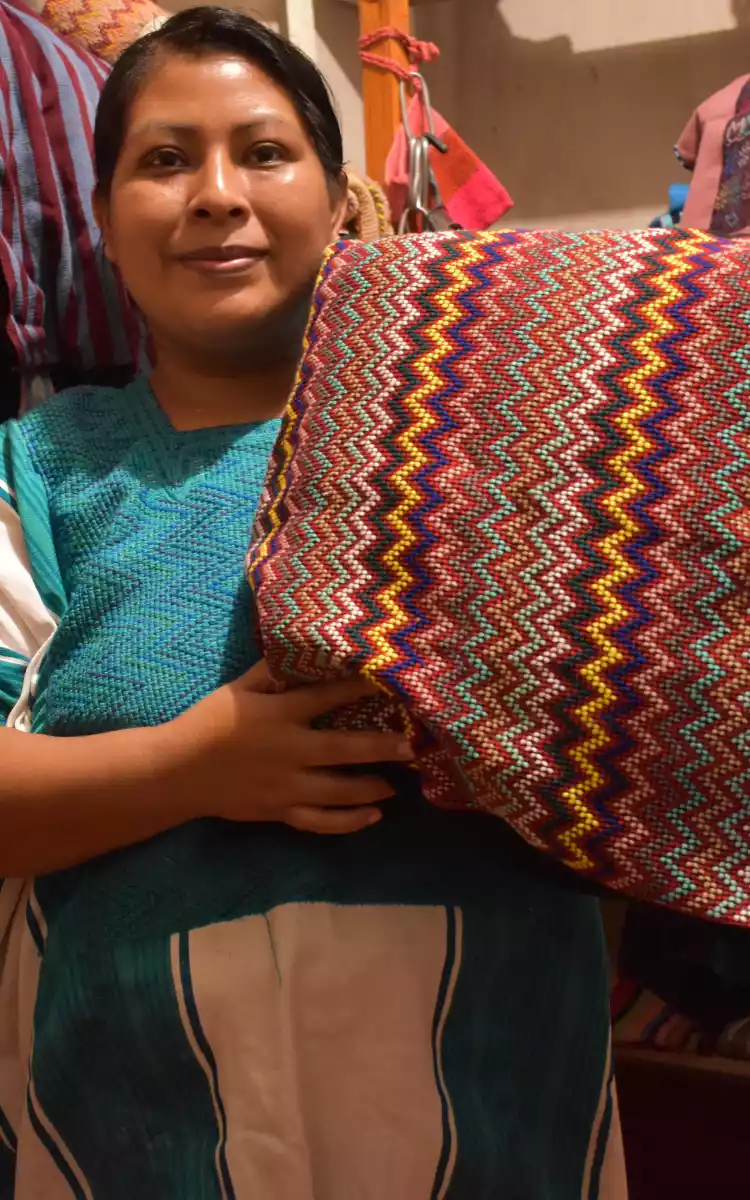
Chiapas Spirit
You will always find the best experience: unique, sensorial, fun.
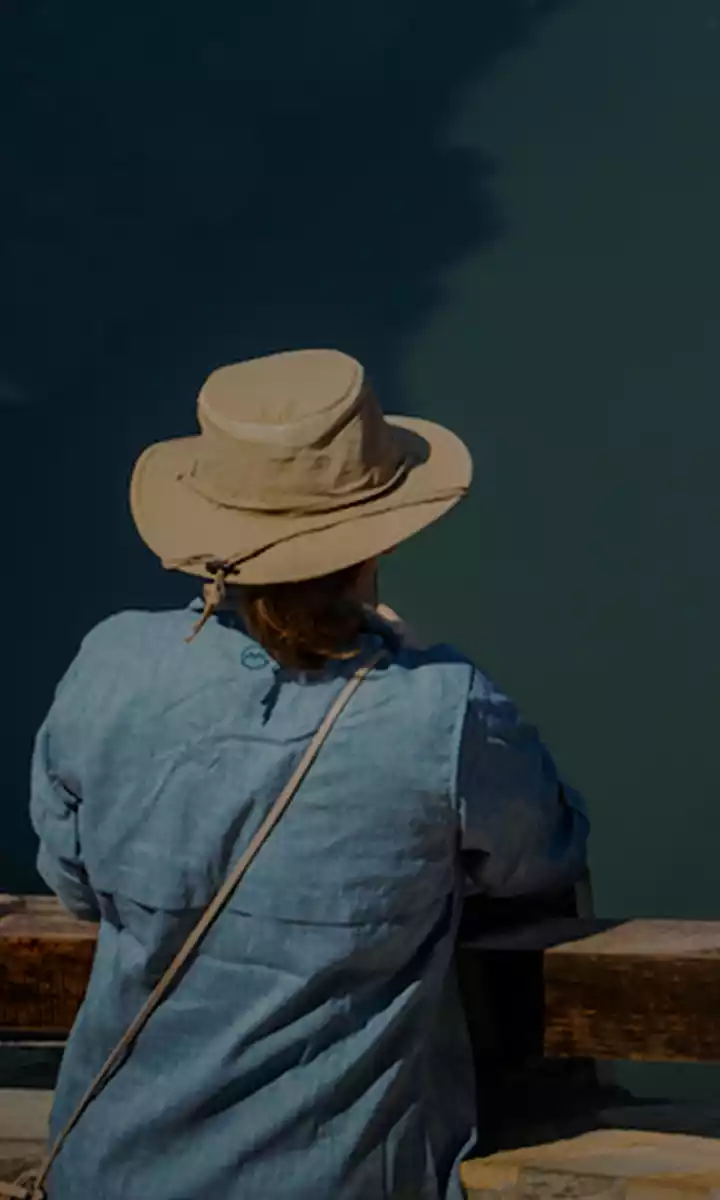
Find restaurants, travel agencies and all the service providers that will make your trip more comfortable.
Interactive Map
Visit the tourist destinations of Chiapas, hover over the illustrations on the map and click to learn more about the destination.
National Geographic content straight to your inbox—sign up for our popular newsletters here

7 of the best Maya ruins to visit in Mexico
Remnants of ancient civilisations still stand across Central America — and well-preserved temples and jungle-cloaked pyramids are open to visitors across southern Mexico.
Before the Spanish colonised Central America in the 16th century, the ancient Maya were one of the most sophisticated civilisations in the Western Hemisphere. They developed a complex calendar system through their knowledge of astrology and mathematics, used intricate hieroglyphics to record their history and built large, lavishly decorated cities, complete with pyramids, temples, and plazas.
At its height, the ancient Maya civilisation comprised 40 cities across Central America, spanning southern Mexico, Guatemala, Honduras, Belize, El Salvador and Nicaragua. In the southern Mexican states of Yucatán, Quintana Roo and Chiapas, many of these settlements — the largest housed up to 50,000 people — still stand today, offering visitors a unique insight into the social, cultural and religious lives of the ancient Maya.
From carefully reconstructed sites like Chichen Itza to the wild, jungle-clad pyramids and ceremonial temples of Calakmul, these are the ancient Maya ruins not to miss in southern Mexico.
1. Chichen Itza
Named one of the New Seven Wonders of the World in 2007, the beautifully preserved Chichen Itza in Yucatán is Mexico’s most famous Maya ruin. Despite the crowds, few are disappointed with El Castillo — a carefully restored pyramid that rises up 80ft and has 365 steps — or the city’s tlachtli , the largest Maya ball court in the Americas.
Occupied until the 16th century, Tulum was one of the last cities inhabited by the Maya and the only one built by the coast. The pyramids here aren’t as large as other Maya ruins in Mexico, but the setting, on 40ft-high cliffs above turquoise Caribbean waters south of Cancun, more than makes up for it.
Home to the tallest pyramid in the state of Quintana Roo, Cobá was once one of the most important Maya cities in Yucatán. Located around 30 miles west of Tulum ruins, the city was built in around 600 CE and it eventually grew to 50,000 inhabitants. Though much of Cobá has yet to be excavated, travellers can climb the 138ft-high Nohoch Mul — a pyramid that offers sweeping views over the Yucatán jungle. Cobá is also known for its sophisticated sacbe, or ‘white road’2, network — limestone pathways that connect the city to neighbouring settlements.

4. Palenque
Deep in the jungles of northeastern Chiapas state in southern Mexico lies Palenque , a Late Classic Maya city known for its detailed hieroglyphic inscriptions and sculpted reliefs. These highly sophisticated designs have helped archaeologists understand more of the ancient Maya's history, mythology and calendar systems.
5. Calakmul
Cloaked by the second-largest expanse of tropical forests in the Americas, in Campeche’s Calakmul Biosphere Reserve near the border with Guatemala, Calakmul is one of Mexico’s wildest Maya ruins. It has the largest and tallest pyramid in Yucatán and more than 6,000 structures, many of them covered by jungle. The site is particularly beautiful at sunrise, when the surrounding jungle comes alive with birdsong, howler monkeys and, if you’re lucky, the roar of a jaguar.
6. Ek Balam
Around 25 miles north of the Yucatán city of Valladolid is Ek Balam , which means ‘black jaguar’ or ‘jaguar star’ in the Yucatec Maya language. The city reached its height in the eight century, when more than 20,000 people lived here. Its largest pyramid is 160 metres long and 105ft high, and contains the tomb of Ukit Kan Le´t Tok, the king of Ek Balam between 770 CE and around 797 CE. Archaeologists found the ruler buried with more than 7,000 pieces of jade, bone, ceramic, shell and precious metal, and the outside walls decorated with stone jaguars, winged creatures and human skulls.
A one-hour drive from the Yucatán capital of Merida is this seventh-century Maya city, once large enough to house 25,000 inhabitants. The Uxmal ruins are part of the Ruta Puuc, a 25-mile road network that connects Uxmal with the archaeological sites of Kabah, Sayil, Xlapak, Labná, Oxkintok, Grutas de Calcehtok and Grutas de Loltún.
FREE BONUS ISSUE
Related topics.
- HISTORIC SITES
- ADVENTURE TRAVEL
- PREHISTORIC CULTURES
- ANCIENT CIVILIZATIONS
You May Also Like

Albert Lin hunts for lost Maya cities in Mexico. Here’s how travelers can too

A guide to Guadalajara, the alternative Mexican city hosting this year's Gay Games

Photo story: ancient ruins and Indigenous culture in Mexico's Maya Ka'an region

It’s been called ‘the greatest museum of prehistoric art’—but few tourists know it exists

5 of the best Indigenous winter adventures in Sweden's Sámi country
- Environment
- Perpetual Planet
- History & Culture
History & Culture
- History Magazine
- Mind, Body, Wonder
- Terms of Use
- Privacy Policy
- Your US State Privacy Rights
- Children's Online Privacy Policy
- Interest-Based Ads
- About Nielsen Measurement
- Do Not Sell or Share My Personal Information
- Nat Geo Home
- Attend a Live Event
- Book a Trip
- Inspire Your Kids
- Shop Nat Geo
- Visit the D.C. Museum
- Learn About Our Impact
- Support Our Mission
- Advertise With Us
- Customer Service
- Renew Subscription
- Manage Your Subscription
- Work at Nat Geo
- Sign Up for Our Newsletters
- Contribute to Protect the Planet
Copyright © 1996-2015 National Geographic Society Copyright © 2015-2024 National Geographic Partners, LLC. All rights reserved

Is Chiapas Safe to Travel to in 2024? Your Local Guide
If you are planning a trip to Southeastern Mexico, you might be asking yourself “Is Chiapas safe to travel to?” While Chiapas is one of the poorest states in Mexico, it is also considered one of the safest.
Places like San Cristobal de las Casas, the Palenque ruins, and the Sumidero Canyon are among the best-loved emerging destinations in the country, and the local authorities prioritize the safety of tourists. You are in good hands here because I live in Mexico and I have traveled extensively through Chiapas. (and I am a solo female traveler!) In this post, we will look at everything you need to go before you travel, and how you can stay safe during your trip.

Table of Contents
Is Chiapas Safe to Travel to in 2024?
I have traveled extensively through Chiapas – flying into Tuxtla Gutierrez from where I live in Merida, spending a fair amount of time in San Cristobal de las Casas and Comitan de Dominguez and using both cities as bases for a wider exploration of the state. (I also visited the pueblo magico of Chiapa de Corzo, the Montebello lakes, Sumidero Canyon and the indigenous villages of Zinacantan and Chamula).
Still, nowhere in Mexico is completely trouble-free, and it is important to be aware of the historical clashes between the Zapatista and the indigenous persons of Chiapas, and the authorities. At the time of updating this post (27th February 2024), there are a couple of things to be aware of in Chiapas.
It currently is not possible to visit the Mayan archeological sites of Yaxchilán, the pyramids of Tonina and Bonampak which are closed to the public due to land disputes and cartel violence. Several sources state that armed men have taken control of the sites and the cartel have set up roadblocks on the roads that approach them. On the approach to Lagartero, tourists have been asked to hand over identification and cell phones.
Local tour operators have suspended excursions to the sites and it is not wise to try to attempt to reach them independently. Aside from that, I would personally still not hesitate to travel to other parts of Chiapas – Palenque and San Cristobal de las Casas, Comitan and the southern part of the state, etc.

Cartel activity in Chiapas
Generally speaking, Chiapas does not see the same level of narco violence as other Mexican states. (It definitely isn’t comparable to places like Sinaloa, and Chihuahua, and it sees less than in Cancun even, where various criminal organizations are fighting for the territory).
However, it does exist, and as mentioned, there has been a recent uptick. No tourists have been harmed in the recent increases in violence and generally, the cartel do not target tourists and crimes against tourists are pretty frowned upon.
Crime in Chiapas state
Tourism makes up 8% of Mexico’s GDP and this is increasing year on year. It is in the government’s best interest and priorities to ensure that tourists are kept safe.
As long as you don’t go looking for trouble, and you have a good level of situational awareness, trouble wont go looking for you.
Chiapas is the poorest state in Mexico, with recent research indicating that more than 1.6 million Chiapas residents live in extreme poverty while more than 75.5% live in poverty.
With that being considered, you would think that the crime here would be higher than it actually is. Homicides and violent crime here are well below the national average.
Numbeo is a good resource to gauge how safe a certain city/state is in comparison to other parts of the country or places in the world. The Numbeo safety index awards different destinations a rating from 0 to 100 based on an interview with local residents to gauge how safe they feel in their hometown. (With 0 being very unsafe and 100 being safe). Similarly the numbeo crime index references the amount of crime in a certain place. (With 0 being little and 100 being a lot).
According to the safety index Numbeo, San Cristobal has a crime rating of 29.55.
Tuxtla Gutierrez is a sprawling capital city so it makes sense that it has a crime rating of 46.97 and a safety rating of 53.03. By contrast, Mexico City has a high crime rating of 67.77. As does Cancun at 55.73.
Check your government travel advice for Chiapas
It is always a good idea to consult your government travel advice before visiting anywhere new and the same is true of traveling to Mexico for the first time. The U.S. Department of State awards a safety rating to each of the 32 Mexican states based on any perceived risks or dangers.
States are flagged as places to “exercise normal precautions”, “exercise increased precautions”, “reconsider travel” and “do not travel to”. This rating is awarded based on consideration of a number of factors.
Chiapas is flagged as a place where you need to “Exercise increased caution due to crime.” It goes on to state that “Criminal activity and violence may occur throughout the state.”
Be aware of the US government state ratings but don’t be terrified by them. They are sternly worded to encourage you to be alert.
It is important to note that despite the recent upticks in crime in the area, the US Department of State have not modified their safety advice for Chiapas in any way.

Safe Destinations to Visit in Chiapas in 2024
Palenque and San Cristobal de las Casas are the best things to do in Chiapas as far as most travelers are concerned. However, there is a lot more to see and do in the region.
You could easily spend weeks in San Cristobal de las Casas using it as a base to explore the wider area. Word hasn’t gotten out about the treasures of Chiapas yet, it doesn’t see the tourist hordes as other parts of Mexico, and therein lies part of its charm.
Some of the safest places to visit in Chiapas are detailed below for your consideration. They are all wonderful places to explore during your trip.

San Cristobal de las Casas
San Cristobal de las Casas is a lot of people’s entire raison d’etre for visiting Chiapas. The mountain town was founded by Spanish settlers in 1528.
The Spanish had moved here after relocating from Chiapa de Corzo where they struggled to cope with the heat. San Cristobal has almost become something of a hippie commune in recent years, with a lot of barefoot travelers choosing to stay here for extended periods of time.
Its labyrinth-like network of narrow cobbled streets twists and turn and lead to grand pizzas where Tzotzil women sell street food and handicrafts. The architecture here is different from other parts of Mexico.
San Cristobal’s streets are made up of pastel-colored houses adorned with red tile roofs. Several majestic catholic churches sit on hilltops and offer incredible panoramas over the city.
From here, you can take organized day trips to the indigenous villages of Chamula and Zinacantan. Here, you are also at the heart of one of Mexico’s best coffee-growing regions and can do a tasting and tour of one of the many nearby Chiapas coffee plantations if you like.
San Cristobal de las Casas is a safe town. Sometimes the occasional criminal is apprehended here but the town has largely managed to avoid the violent crime that affects other parts of Mexico.
There are no parts of town that are unsafe. You can comfortably explore its entirety on foot, take the time to get lost in the various areas, etc.
Walking to and from restaurants and bars in the early evenings is mostly fine. However, it is still best not to walk alone at night (just like anywhere).

Chiapa de Corzo
Chiapa de Corzo is a charming pueblo magico in Chiapas state. It is largely overlooked from most people’s Chiapas itineraries and is often only seen as a stopping point en route to the majestic Sumidero Canyon.
However, the little town is definitely worthy of a day or two’s exploration in itself. The fact that it has been recognized as a “pueblo magico” should be a testament to that too.
(Pueblo magicos are towns that have been recognized by the Mexican tourism board for possessing a particularly special history, culture, or gastronomy. When you see that somewhere has been flagged as one, it is usually a good indicator that it is a worthwhile place to visit.)
The “Zocalo” is the central square of Chiapa de Corzo. It is a popular meeting point among locals and is home to the beautiful “La Pila” brick statue, built in the shape of a diamond, which dates back to 1562.
Lots of great cafes and coffee shops where you can indulge in Chiapas coffee and traditional Mexican breakfast dishes encircle the square. Chiapa de Corzo, surprisingly, has an incredible street art scene.
Large murals depicting local indigenous traditions and festivals cover entire walls, alleyways, and storefront facades. Many quaint, centuries-old churches are scattered around the town and a nice way to explore on foot is to simply pin their locations in Google maps and walk from one to another.
You will discover some wonderful off-the-beaten-path neighborhoods and markets as you go. Chiapa de Corzo is safe, locals are friendly, and the area has a very small-town vibe.

Comitan de Dominguez
Comitan is a pueblo magico in the southernmost part of Chiapas state, close to the border with Guatemala. This area has been occupied for thousands of years – initially by the Tzeltal Indians who named it Balún Canán, and later by the Aztecs and the Spanish.
Comitan, with a population of 140,000 people, is the fourth largest city in Chiapas. Still, it has a very small-town feel about it.
There are some great cafes and restaurants here where you can sample the best of the local Chiapescan cuisine. Street food vendors serve treats like cascara preparada and pan compuestos that you simply won’t find elsewhere.
Be sure to check out the Comitan Archeological Museum while in town. It is only small, but it contains many interesting masks and artifacts recovered from the nearby Mayan cities of Chinkultic and Tenam Puerte.
Very few tourists venture here and you will seldom see many other travelers ambling around. However, nobody bothers or hassles you, and the locals are very friendly. Since Comitan is closer to El Chiflon Falls, Montebello Lake, and other natural attractions in southern Chiapas, it actually makes a better base than San Cristobal for getting to some places.

Chiapas indigenous villages
Chiapas is one of the most indigenous parts of Southern Mexico. The Tzotzil, Tzeltal, Chol, and Zoque people make up a large part of the indigenous population.
(There are more than 68 different indigenous groups in Mexico, all with their unique customs, indigenous clothing , language, and traditions). Some parts of Chiapas are autonomous and are controlled by a specific indigenous group.
The villages of Zinacantan and Chamula are predominantly inhabited by Tzotzil people. You can visit them on a day trip from San Cristobal de las Casas.
Zinacantan is known for its beautiful churches and tradition of growing and selling flowers. Chamula is known for its unique San Juan Chamula church where people visit to see curanderos (local witch doctors) when they are sick.

Chiapas Safety Tips
Chiapas is a safe place to travel as long as you use your common sense and take basic precautions for your safety. The lack of detailed information about it online and the fact that it isn’t the most common place to visit in Mexico can have you thinking otherwise.
But you don’t need to worry. Some safety advice for traveling to Chiapas is detailed below.
Monitor the situation on the road between Palenque and San Cristobal
The road Between the Mayan city of Palenque and San Cristobal De Las Casas is one of the only places where you need to take additional precautions when traveling in Chiapas. The road does not have the best reputation and is known for being somewhat sketchy.
Several years ago, two travelers lost their lives here after they were attacked. However, this was an isolated incident and buses pass along this route every day.
So you shouldn’t let it scare you out of visiting. There are often roadblocks along the road between the two sides, particularly around Ocosingo.
Locals may block the road and refuse to let people pass until they give them a payment of around 100 or 200 pesos. It is generally better to just hand this over rather than risk getting into any debate.
Although it isn’t what you want to deal with when traveling, these people generally don’t mean harm and it’s important to understand it comes from a place of poverty and desperation. The most frustrating thing about these roadblocks is that they can add hours to your journey if you wind up getting stuck behind a line of traffic somewhere.
The roadblocks aren’t constantly there, however, they are often. In 2022, many travelers reported tourist buses being followed by thieves along this route but things seemed to have improved lately.
It is a good idea to sense-check what the situation is like in travel Facebook groups and forums before you travel.

Tuxtla Gutierrez safety tips
Tuxtla Gutierrez, the Chiapas capital is not an especially pretty or interesting city. It may be convenient to stay overnight here when you arrive at Chiapas’ Ángel Albino International Airport or before you depart.
However, you can also just as easily stay in a more charming guest house in nearby Chiapa de Corzo. There are a few points of interest here but the industrial city isn’t easy to get around on foot.
The Cristo de Copoya is a 62m high cross with an image of Jesus Christ carved out of its center. It sits on the top of Mactumactzá Hill in the southern part of the city, and you can enjoy sweeping vistas of Tuxtla and the wider region from the top.
You need to keep your wits about you more here, as you would in any large city. Female travelers may feel uncomfortable with the amount of attention and comments they receive from men.
It is better to ignore catcallers but sometimes it is just incessant here. Do not walk alone at night and be mindful about which areas you are venturing into.
It is worth paying a little more for a good hotel where you feel safe. Read past reviews of the hotel you choose so you know what you are getting yourself into.
Tuxtla Gutierrez airport cabs
When you travel in Mexico and Latin America, it is generally better to use Uber or other rideshare apps like Didi rather than get into a random street cab. There is more accountability that way.
However, these do not function in the Chiapas state. When you land at Chiapas airport, you will see that there are always plenty of airport cabs lined up outside.
These are safe to use – just insist that they put the meter on. (Alternatively, you can also ask your hotel to organize an airport pick-up for you).
If you need cabs elsewhere in Chiapas, it is generally better to ask the receptionist/concierge of your hotel to organize one for you, rather than to get into a random street cab.
Public transport in Chiapas
Public transport in Chiapas is generally pretty good. Buses are a low-cost and convenient way to get around and run between all major cities and towns at regular intervals.
You can take the bus from Tuxtla Gutierrez to San Cristobal, and from San Cristobal to Comitan. Small minivans run from San Cristobal to Chiapa de Corzo, and from Comitan to the Montebello lakes.
You are generally fine to purchase your ticket at the train station ticket office an hour or so before you want to travel. If you have luggage or a big backpack, you can store it under the bus.
(You will be given a ticket which you need to present in order to collect your bag once you arrive at your destination).
Learn a little Spanish
English is not widely spoken in Chiapas. You may find a few English speakers in some hotels and tourist businesses but for the most part, you may struggle to communicate if you don’t have at least a couple of Spanish words and phrases down.
Obviously, it isn’t realistic to expect yourself to become fluent in a new language right before a trip. However, a handful of words and phrases can go a long way.
You should also download Google Translate on your phone to help you with your interactions with locals. A handful of useful Spanish words and phrases that will help you during your trip are detailed below.
Useful Spanish phrases
- Yo tengo una reserva – I have a reservation
- Mi nombre es – My name is
- Lo siento, no entiendo – Im sorry, I don’t understand
- Disculpe – Excuse me
- Yo quiero – I want (useful for ordering food)
- La cuenta por favor – The bill please
- Quanto es – How much is it?
- Buenos dias – Good morning!
- Buenos tardes – Good afternoon!
- Buenos noches – Good night
- Hasta luego – See you later
- Una mesa para uno/dos/tres – A table for one/two/three…
- Dónde está – Where is…
- Gracias! – Thank you
- Tienes wifi? – Do you have wifi?
- Necesito ayuda – I need help
- Habla Inglés?
- Lo siento no puedo hablar español – Im sorry I cannot speak Spanish
Watch your personal belongings
Crime rating is low in Chiapas but nowhere in the world is completely devoid of crime. There are opportunists everywhere in the world and if you are going to find yourself a victim of crime in Chiapas, it is most likely going to be petty theft like pickpocketing or bag-snatching.
These things can be easily avoided. Make sure you have your eye on your personal belongings at all times.
Never store valuables such as your wallet or your phone in your back pocket. In crowded marketplaces and busy streets, walk with your backpack in front of you.
Theft-proof backpacks such as those offered by Pacsafe are a worthwhile investment if you travel a lot. They come with additional safety features compared to normal backpacks.
For example, they are slash-proof, waterproof, and come with TSA-approved locking devices.
They are a little more expensive than regular backpacks, sure. However, they tend to come with long, multi-year warranties.
It is better not to wear expensive jewelry, accessories, and designer items. People don’t really wear them in Chiapas and it is a surefire way to draw additional attention to yourself.
Similarly, don’t walk around with your expensive DSLR camera hanging around your neck. Keep it safely stored away in your bag.
If you go to a coffee shop in San Cristobal De Las Casas, Tuxtla Gutierrez, etc, never leave your laptop unattended. Take it with you to the counter or to the bathroom rather than asking other people to watch it for you.

FAQs about Staying Safe in Chiapas
Do you have any further questions about safety in Chiapas or planning a trip to this part of Mexico? The answers to some frequently asked questions on the topic are detailed below.
Hopefully, you will find the information that you are looking for there. If not, please do not hesitate to reach out to me.
Is Chiapas safe for American tourists?
Chiapas is safe for American tourists and tourists from any other part of the world. This is a less common part of Mexico to travel to.
However, that doesn’t make it any less worthwhile to visit than more popular places like Puerto Vallarta or places in the Yucatan.
Follow the same common sense precautions as you would at home or anywhere else in the world and you will be just fine in Chiapas.
Is it safe to drive around Chiapas?
Renting a car in Mexico can give you a lot more freedom and flexibility in your schedule compared to having to depend on public transport. However, the road conditions and local people’s attitudes to driving differ significantly from one part of the country to another.
In tourist places like Quintana Roo, the Yucatan, and Baja California Sur, the road conditions are pretty good. In fact, you might not notice any difference compared to driving in the US!
Chiapas is a little more off the beaten path and some of the roads have potholes or are not as well maintained. People here often speed or drive dangerously so if you are considering renting a car, you need to be very aware of your surroundings.
Driving between tourist destinations in Chiapas is pretty safe. However, you need to be careful on the road between Palenque and San Cristobal De Las Casas and in the Ocosingo region

Is Chiapas safe to travel to in 2024? Final thoughts
Chiapas is a safe and wonderful place to visit. If you are planning a trip to Mexico, you may also enjoy reading these Mexico travel tips or this post on general Mexico travel safety. Have a wonderful time!
Buen Viaje! Melissa xo
Melissa Douglas
Similar posts.

Zinacantán Mexico: Indigenous Village in the Heart of Chiapas
Zinacantán Mexico is a little town in the southern part of the central Chiapas highlands. While globally, few people have heard of Zinacantán, the town…

15 Best Things to do in Chiapa de Corzo, Chiapas in 2024
There are plenty of things to do in Chiapa de Corzo to warrant spending a couple of days in the charming pueblo magico during your…

24 Best Things to Do in Chiapas Mexico: 2024 Local’s Guide
There are plenty of things to do in Chiapas, Mexico to warrant spending at least a week here. However, Mexico’s southernmost state is often overlooked…

Mexican Chiapas Coffee: Culture, Heritage and Flavor (2023 Guide)
Mexican Chiapas coffee is among the best coffee that you can try. This is not just restricted to within Mexico but in the world. When…

11 Wonderful Things to do in Comitan Chiapas Mexico in 2024
Comitan Chiapas is a gorgeous city and pueblo magico in the southernmost part of Chiapas state. Despite its charm and proximity to many of Chiapas’…
![travel in chiapas San Juan Chamula – A Chiapas Town Like No Other [Your 2023 Guide]](https://www.mexicotravelsecrets.com/wp-content/uploads/2022/05/280270495_10159439808500379_4945484260208090559_n-768x1024.jpg)
San Juan Chamula – A Chiapas Town Like No Other [Your 2023 Guide]
San Juan Chamula is a small town just 11km (25 minutes) away from the charming Chiapas pueblo magico of San Cristobal de las Casas. It…

LANGUAGE EXCHANGE
Organized by Fany Trujillo
- Wed Apr 24 from 7:11 PM to 11:59 PM (CDT)
- Calle Francisco I. Madero, 29215 San Cristóbal de las Casas, Chiapas, Mexico
This event is over.
Login or Join if you want to see more!

IMAGES
VIDEO
COMMENTS
Everything You Need in a Hotel: Low Rates, Great Reviews, Perfect Location & More. Search for the Best Travel Deals on Chiapas Hotels with TripAdvisor.
Chiapas, Mexico's southernmost state, is steeped in Mayan heritage and an under-the-radar place for history, adventure, and crafts. ... This South American City Is One of the Best Places to Travel ...
1. Palenque Ruins. The Palenque Ruins are some of the best in Mexico! A visit to the Palenque ruins is a must-do when in Chiapas. These well-preserved Maya ruins are some of the most impressive in all of Mexico. The Palenque ruins date back to 226 BC and were once a major city of the Maya civilization.
The Ultimate Chiapas Travel Guide. Chiapas is a hidden gem and bucket list adventure that offers a truly immersive and authentic travel experience for visitors looking to get off the beaten path. It's an enchanting land with acres of pristine wilderness, over a dozen prehispanic cultures and languages, and some of the most iconic ...
Chiapas travel guide Chiapas Mexico: Know before you go. ️ Airport: Tuxtla Gutiérrez International Airport (code: TGZ); ⏰ Time Zone: Eastern Standard Time (GMT-5). 💰 Currency: Mexican Peso; 🗣 Language: Spanish, though English is common, and you may even hear some indigenous languages; 🎫 Mexico Visa: The vast majority of travelers do not need a visa for Chiapas — this includes ...
Chiapas. Mexico, North America. Chilly pine-forest highlands, sultry rainforest jungles and attractive colonial cities exist side by side within Mexico's southernmost state, a region awash with the legacy of Spanish rule and the remnants of ancient Maya civilization. Palenque and Yaxchilán are evocative vestiges of powerful Maya kingdoms ...
Travel tip: If you're not sure whether the climb is in your power, try the street view in Google Maps. I know, it sounds weird. But it will show you the path and help you decide. This is how you get to El Aguacero, Chiapas. You can find the trail on alltrails . Opening hours: 9 AM - 5 PM daily ; Price: 50 pesos (2.5 US dollars)
Chiapas is often overlooked as travelers tend to favor the Caribbean and Pacific coasts, but that is what has allowed it to maintain its originality. Next time you get the itch to visit Mexico, consider coming to bask in the beauty of Chiapas. About the author: Emily is a Mexico travel enthusiast based in San Cristóbal de las Casas, Chiapas.
Sumidero Canyon. The most popular day trip from San Cris is the Sumidero Canyon, located about an hour and a half away. This impressive canyon is over 1,000 meters deep and runs for 35 kilometers. Taking a boat ride through Sumidero Canyon is a can't-miss activity in Chiapas.
Best things to do in Chiapas, Mexico Spend a long weekend in San Cristobal de Las Casas . San Cristobal de Las Casas is the main raison d'etre that most people decide to visit Chiapas. The town was founded in 1528 and named ¨Villa Real de Chiapa¨ Its name has changed various times over the centuries before being given its current name in 1848.
A travel guide to the Mexican state Chiapas with information about population, area, history and major attractions. ... One of Chiapas' most charming cities, San Cristobal, was founded in 1528. A colonial city with narrow streets and colorful one-story houses with tiled roofs that enclose lovely courtyards, San Cristobal offers the visitor not ...
Here is a summary of my 10-day Chiapas itinerary. I will be giving a day-to-day breakdown below. Days 1-2: Palenque. Day 3: Day Trip to Yaxchilán. Day 4: Day Trip to Misol-Ha and Agua Azul. Days 5-7: San Cristobal de las Casas. Day 8: Comitán and El Chiflon. Day 9: Lagos Montebellos. Day 10: Back to Tuxtla Gutierrez.
2023. 4. Aluxes Palenque. 774. Nature & Wildlife Areas. We are Aluxes Ecoparque a non-profit non-governmental civil association based in Palenque Chiapas. Due to all the destruction of the ecosystems in the last couple of years Aluxes was created. The mission: ecosystemic rescue.
There are beautiful churches and waterfront in the area worth checking. Chiapas de Corzo is also a good base to explore Sumidero Canyon and the archeological sites in the area. 7. San Marcos island, Boca del Cielo. Boca del Cielo is one of the few seaside villages in Chiapas and known for its laid-back beach.
Chiapas, Mexico Travel Tips. Carry cash: it's a good idea to carry plenty of pesos when exploring Mexico. Best time to visit: if you plan on swimming in the waterfall pools in Chiapas, Mexico, then be sure to visit during the dry season (November to April). Swimming is often prohibited during the rainy season (May to October) and the blue ...
The unofficial capital of highland Chiapas, San Cristóbal de las Casas - or Jovel, as many locals call it - is a major stop on the travel circuit. But the city, a clutch of tile-roofed houses huddled together in the bowl of a valley, has held up to tourism well.
Chiapas is a stunning state overflowing with waterfalls, deep cenotes, ranging mountains, stunning gorges and lush green jungles. Hidden amongst this spectacular back drop, crocodiles, spider monkeys, exotic birds, and the ruins of an ancient and powerful Mayan civilization. Best explored with your own vehicle, we have put together the ultimate Chiapas road trip itinerary
A road trip in Chiapas, Mexico is the ultimate adventure.. Imagine discovering, in 2-3 weeks' time, some of the most magical natural landscapes — from roaring waterfalls with turquoise pools to ancient Mayan ruins lost in the jungle to colorful indigenous towns and colonial cities (and more!).. There are so many places to visit in Chiapas that a road trip is the best way to check them off ...
Don't start checking off the best things to do in Chiapas without travel insurance! We use and recommend Safety Wing for their affordability, ease of purchasing & the clarity of their contract! Categories Mexico. Travel Stories of 2016: Our Year in 10 Vignettes.
Chiapas is the perfect destination for those of you who want to experience cascading waterfalls, ancient Mayan ruins, colourful indigenous culture and dramatic natural wonders. It may be one of the economically poorest states in Mexico but it is the richest in terms of diversity and beauty. This Chiapas Travel Guide proves it's the ideal ...
Other Things to know: Travel Tips *When completing the itinerary below of Chiapas, you'll need a daily budget of $15-25 a day. This budget will cover a dorm bed, a few hearty meals, some local buses and also a few drinks or extras. Other costs such as international flights, travel insurance or long-distance buses are not included in this budget.
San Cristobal de Las Casas is widely considered to be the cultural capital of Chiapas and is one of the state's most popular tourist destinations.. The reason why it's so popular is because it still retains the appearance of an old, colonial Spanish village.It boasts red-tiled roofs and cobblestone streets which reminded me a bit of the streets in Puebla.
Find restaurants, travel agencies and all the service providers that will make your trip more comfortable. Interactive Map Visit the tourist destinations of Chiapas, hover over the illustrations on the map and click to learn more about the destination.
4. Palenque. Deep in the jungles of northeastern Chiapas state in southern Mexico lies Palenque, a Late Classic Maya city known for its detailed hieroglyphic inscriptions and sculpted reliefs ...
Safe Destinations to Visit in Chiapas in 2024. Palenque and San Cristobal de las Casas are the best things to do in Chiapas as far as most travelers are concerned. However, there is a lot more to see and do in the region. You could easily spend weeks in San Cristobal de las Casas using it as a base to explore the wider area.
Armed civilians stop Sheinbaum convoy in rural Chiapas to share a message. MND Staff. April 22, 2024. 3. Sheinbaum's campaign caravan was stopped as they entered the municipality of Motozintla ...
Este domingo, la candidata oficialista a la presidencia de México, Claudia Sheinbaum, fue interceptada por encapuchados en el municipio de Motozintla, en el estado de Chiapas. ¿Cual fue la ...
Couchsurfers share their homes, cities and lives in profound in meaningful ways, making travel anywhere in the world a truly social experience. ... 29215 San Cristóbal de las Casas, Chiapas, Mexico; Share this event with your friends: Event description and other information are for members only. Login or Join if you want to see more! About ...